
happy when abroad
your compass to happy adventures

10 European Campervan Routes – Inspiration for your next Road Trip
No doubt traveling around in a campervan emits a feeling of freedom and awakes everyone’s adventurous soul. And Europe has numerous options for campervan routes to take! It is the perfect continent to explore different countries, cultures, and sights within one single trip and have a once-in-a-lifetime road trip experience. As for me, living in Germany and therefore quite in the middle of Europe, I love to explore all the neighboring countries and cities. Therefore, I have compiled 10 different European campervan routes , from which you can pull inspiration for your next road trip adventure. All suggested routes are usually recommended for around 2-3 weeks , but of course, you can easily adapt them to your travel plans.
Have fun planning one of these European campervan routes and see you on the road!
Need a CamperVan for your trip? Then I recommend you to choose PaulCamper , the largest camper-sharing marketplace in Europe. It lists over 10,000 camping vehicles throughout Germany, Austria, the Netherlands and the United Kingdom for you to enjoy!
Disclaimer: This article may contain affiliate links. Without costing you anything extra, the small commission will help me produce more free content for you. For more information, please refer to my privacy policy .
Table of Contents
1. Slovenia and Croatia
Route: Lake Bled – Ljubljana – Piran – Pula – Zadar – Split
Suggested duration : 2 weeks
Overall length: 826 km (9 hours of driving)
Going on a Balkan road trip through Slovenia and Croatia is the ideal way to see many amazing places in a short time without breaking the bank. The suggested route offers the perfect combination of adventurous nature activities, relaxing beach days, and city sightseeing. Starting at Lake Bled , a magical place in the middle of Slovenia, you will have the chance to experience the country’s beauty in many ways. For more inspiration regarding this place, make sure to check out my list of the best things to do at Lake Bled . After some fun activities at the lake, you will continue your route to Ljubljana , the charming capital of Slovenia.
The small and colorful town of Piran will be the next stop on your Slovenia road trip itinerary . This place will amaze you with its picturesque old town, narrow alleys, and sunset views from the town wall. Even though the town is very small, there are quite a few interesting things to do in Piran .
The campervan route leads you over the Croatian border and into the historic city of Pula . Must-see activities in Pula include visits to the Roman Amphitheater, the Augustus Temple as well as the vibrant markets. After doing some sightseeing, it is time to move on along the Croatian coast to Zadar . The city is well-known for its historic ruins, churches, and a photogenic old town. The last stop on this road trip is Split . You definitely cannot miss the Diocletian’s Palace as well as the Peristil Square in the middle of the city when spending one day in Split . I recommend spending some relaxing last days on Split’s beautiful beaches.
2. North Germany, Denmark & Norway
Route: Hamburg – Hirtshals – Kristiansand – Stavanger – Bergen – Oslo
Suggested duration: 3 weeks
Overall length: 1,500 km (23 hours of driving)
Budget : €€€€€
This is one of the European campervan routes that are perfectly suited for adventure-seeking couples or friends, who want to see and experience a lot and have a sufficient budget available for the trip. Starting in Hamburg , one of the most beautiful cities in Germany, you will head north to the very top of Denmark . Of course, if you have enough time, other stops in Denmark, like Copenhagen or Aarhus, are possible.
In Hirtshals , you will take the ferry to Kristiansand in south Norway . From here, you are open to experiencing the variety of fjords, mountains, national parks, and other beautiful places that southern Norway has to offer, at your own pace and within your itinerary. Make sure to visit the charming towns of Stavanger and Bergen during your trip. After many days of hiking and other nature-based activities, you will arrive in Oslo , the capital of Norway. Must-see activities in this city are visiting the Viking Ship Museum , strolling around Frogner Park, and taking a tour of the Akershus Fortress. For more inspiration, make sure to read my ultimate Southern Norway road trip itinerary .
3. Switzerland and North Italy
Route: Zürich – Lucerne – Bern – Turin – Milan – Bologna – Venice
Suggested duration: 2 weeks
Overall length: 1,000 km (12 hours of driving)
Budget: €€€€
From the mountains to the sea – this could be the motto of this beautiful European campervan route. Starting in Zürich , the biggest city in Switzerland, you will admire the old buildings in the city center, eat the most delicious cheese fondue, and stroll around the lake. Besides its picturesque mountains and lakes, Switzerland offers beautiful cities as well. On this road trip, you will also explore Lucerne and Bern , the country’s capital.
From Bern, you will head south and enjoy some Italian travel experiences . Turin , which lies in the region of Piemont, is well known for its outstanding architecture and cuisine. Besides many other things to do in Turin , the city is the ideal place to slow down in an Italian café and take photos of the aesthetic baroque buildings. Milan , the international center of fashion and design, as well as Bologna , the vivid and historic town, are other stops on your way through Italy. After spending several days strolling through pretty alleys and eating pizza, you will end your road trip to Venice , one of the most popular places to visit in Northern Italy . Even though the city is considered to be rather expensive, there are quite a few tips for visiting Venice on a budget and enjoying your trip to the fullest!
4. Austria and Budapest
Route: Innsbruck – Zell am See – Hallstatt – Graz – Vienna – Budapest
Suggested duration: 2-3 weeks
Overall length: 900 km (11 hours of driving)
Budget: €€€
This Europe campervan route takes you across Austria to the Hungarian capital Budapest. On your way through the mountains, you will experience a city break in Innsbruck , explore the ski region Zell am See, and visit the picturesque town of Hallstatt. On your way to Hallstatt, you can also make a stop in Salzburg, the city which is famous for the great musician Mozart. In both Graz and Vienna, you will find numerous beautiful Renaissance and Baroque-style buildings. Vienna, the vivid capital of Austria, will welcome you with many bars and restaurants as well as a beautiful castle (Schönbrunn Palace). From Vienna, it is only a 2.5-hour drive to the next capital – Budapest. Must-do experiences in Budapest include bathing in the famous thermal pools (Széchenyi Baths), going on a typical Danube river cruise, and walking across the Chain Bridge.
5. French Rivera and Catalonia
Route: Nice – Saint-Tropez – Marseille – Montpellier – Lloret de Mar – Barcelona – Tarragona
During this trip, you will travel alongside the sea the whole time and get plenty of vitamin D. Starting in Nice or Saint-Tropez at the Côte d’Azur, you will begin your trip in one of the sunniest and wealthiest corners of France. I recommend you continue your trip alongside the French Rivera by exploring the cities of Marseille and Montpellier. Once arrive in Spain, you can enjoy the party life in Lloret de Mar before heading to Barcelona, where you have the chance to visit the world-famous Sagrada Familia, try all the Spanish food, relax at the beach, or go shopping in the city center. You will see, there are countless things to do in Barcelona! From here, a trip to Tarragona is worthwhile as well. The city in southern Catalonia offers the perfect combination of ancient culture, lovely beaches, and adventurous amusement parks.
6. Andalusia and Portugal
Route: Málaga – Marbella – Gibraltar – Seville – Faro – Lagos – Lisbon – Porto
Overall length: 1,200 km (13 hours of driving)
This campervan route is perfect for all sun-seeking travelers and city-hoppers out there. The more time you can allow for this itinerary, the better! There are numerous cute places along the route which are all worth a stop. Malaga , the starting point of this itinerary, is one of my favorite European cities and the perfect vacation spot in Andalusia. The next stops are the picturesque city of Marbella as well as the British overseas territory Gibraltar . Make sure to plan enough time to visit all the beautiful historic buildings in Seville.
From Seville in Spain , you will drive across the Portuguese border and straight to the beautiful Algarve , the most southern region of Portugal. Both Faro and Lagos are THE destinations for having an incredible time at the Algarve and there are numerous beautiful beaches in Lagos and Faros. If you are eager to see more of the country, you should continue your trip to Lisbon , the charming capital of Portugal. For good reasons, the city on the Atlantic coast is regularly rated as one of the most beautiful cities worldwide. The last stop of this beautiful route is Porto .
7. Switzerland and France
Route: Bern – Lausanne – Geneva – Lyon – Clemon-Ferrand – Bordeaux – La Rochelle – Nantes – Paris
Overall length: 1,500 km (17 hours of driving)
This route is perfect for travelers who want to explore the different regions of France and seek a good mixture of cities and nature. Starting in Bern , the capital of Switzerland, you will explore the Western region of the country with its glittering lakes, mountain peaks, and picturesque cities of Lausanne and Geneva. From Lyon, you will drive through France’s breathtaking landscape to the Atlantic coast. In Bordeaux, the center of the famous wine-growing region, you will be immersed in French cuisine and culture. Heading further north, the beautiful cities of La Rochelle and Nantes are already waiting for you. Paris , the city of love, marks the end of this stunning route. The metropolis is one of the most visited cities around the world for good reason. As for me, I simply cannot get enough of all the Paris bucket list activities .
8. Germany and The Netherlands
Route: Munich – Nuremberg – Rothenburg ob der Tauber – Frankfurt – Mainz – Cologne – Rotterdam – The Hague – Amsterdam
Overall length: 1000 km (12 hours of driving)
Located in the middle of Europe, Germany, and the Netherlands are perfect starting points for European campervan routes in any direction. However, they also offer great routes themselves. Especially southern Germany with its beautiful cities Munich, Nuremberg, and Rothenburg ob der Tauber is very attractive to international travelers. The vibrant cities of Frankfurt and Mainz should also be on your Germany Bucket List .
Continuing your trip along the Rhine River, you will not only drive through the country’s main wine regions but also discover historic castles. After you have discovered all the things to do in Cologne, the city with the iconic cathedral, you will cross the border to the harbor city Rotterdam in the Netherlands. In The Hague, you will finally reach the sea. Ending your trip to Amsterdam , the country’s lively capital, you will be amazed by the variety of colorful markets, lovely canals, narrow houses, and art museums.
9. Paris and South England
Route: Paris – Rouen – Brussels – Antwerp – London – Brighton – Bournemouth – Stonehenge – Bristol
Overall length: 1300 km (17 hours of driving, including ferry)
The last one of all European campervan routes promises lively metropolises, sightseeing tours, and the spectacular coast of southern England. Not only will you cover three amazing capitals (Paris, Brussels , and London) and three countries (France, Belgium , and England) during one single vacation, but also have a ferry trip included. If you are willing to explore lively cities such as London on a budget , discover beautiful coastal towns, eat the best English food, and visit a world heritage site ( Stonehenge ) all at once, this campervan route in Europe is perfect for you!
10. Italy Roundtrip
Route: Milan – Genoa – Cinque Terre – Pisa – Florence – Siena – Rome – Naples – Amalfi
Overall length: 1000 km (14 hours of driving)
Italy is one of the best destinations to enjoy the European summer and one of my favorite European campervan routes. During this marvelous Italy road trip , you will get to know the different regions of Italy, explore the picturesque place Cinque Terre , and enjoy all the things to do in Naples . You will learn about history in Rome , go shopping in Milan , drink wine in the Toscana , and take photos at the Leaning Tower of Pisa . On top, you will swim in the sea in Amalfi , marvel at ancient art masterpieces in Florence , and stroll around the harbor front in Genoa . I promise, this road trip, no matter if it’s with your friends or a solo trip to Italy , will not only be a lot of fun but also recharge your batteries completely!
You have finally decided on a route but you don’t know what to pack for the trip? Maybe my ultimate campervan packing list can help you out! Need more road trip inspiration? What about an epic Eastern Canada road trip ?
Which of the European campervan routes do you like most? What are your suggestions for the best campervan routes around Europe? Let me know in the comments down below!
Useful Travel Resources
- 🏨 Find and book accommodation on Booking.com
- 🎡 Fill your journey with unforgettable experiences with tours on GetYourGuide
- 🚘 Need a car for your trip? Hire it with Rentalcars
- ✈️ Buy cheap flight tickets with WayAway
- 🔰 Insure your trip with Insubuy
Don’t forget to save these European campervan routes for your next trip!
Sharing is caring:.
- Click to share on Pinterest (Opens in new window)
- Click to share on Twitter (Opens in new window)
- Click to share on Facebook (Opens in new window)
- Click to share on WhatsApp (Opens in new window)
- Click to share on LinkedIn (Opens in new window)
- Click to share on Telegram (Opens in new window)
New York City Christmas decorations – The best places to visit
The ultimate thailand itinerary for 10 days, the ultimate vietnam bucket list: 30 must-have experiences, the ultimate thailand bucket list – 30 things to do in thailand, discover more from happy when abroad.
Subscribe now to keep reading and get access to the full archive.
Type your email…
Continue reading

Road tripping through Europe with a campervan in 2024 (Itinerary)
With another eventful year behind us, where our trips were less wild and our adventures less spontaneous than they used to be. A year where we were constantly inspired by the beautiful pictures and crazy videos that our social media algorithms presented us.
Since we knew the roads would be calmer in November so we decided to follow our ‘Saved Instagram pictures’ and enjoy a wonderful autumn trip through Europe.
Our bucket list took us from the outskirts of Brussels to gorgeous medieval German castles, from the astonishing Dolomites to the picturesque Venice, and finally from fashionable Milan to the peaceful Strasbourg – How is that for an adventure?
In this itinerary, we’ve listed all the info you’ll need for a road trip through Europe with a campervan; what items to pack, how to rent a campervan, itinerary ideas, and finally: some tips for a fantastic adventure on the road.
Page Contents
Our road trip summarized in numbers.
- 1x stuck in the Italian snow
- Crossed 7 country borders
- 0 Speeding tickets
- … a thousand new adventures and stories to tell about
The roadtrip
After an earlier adventure in which we discovered the Dolomites with a campervan , we immediately knew that we wanted to travel the same way; through Europe with a campervan!
As we see it, this is the easiest solution to travel through various countries while still complying with all the COVID measurements and having a minimal risk for infection; we’d stay in our own bubble while still having all the comfort we needed: large beds, a small kitchen, and even a shower!
Our goal would be to drive from Brussels to Venice and back while discovering the most fabulous places we could find; after all, we had an immense amount of inspiration and a huge bucket list of places to visit.
Essentials for a road trip in a campervan
Are you planning to go on a campervan road trip, but want to make sure you have the essentials with you? We briefly listed the essentials that made sure our trip was a success.
Ecoflow River Pro Powerstation
As content creators, we’re always haunted by our fear of not having enough power, from the fear of being stranded in the middle of nowhere without a GPS to the fear of having a dying camera battery just when you’re about to shoot your favorite location.
Either way: We’ve all been there, so we all know these are valid worries! No wonder why one of Google’s top road trip-related searches is about finding or generating power. While there are various solutions, we found one that put our minds at ease before starting our road trip; The Ecoflow River Pro Powerstation !
In essence, the Ecoflow River Pro is a massive power bank with 2 AC power outlets and a few USB connections, generating enough power to charge our Macbook M1 Pro laptop 13 times, our smartphone 58 times, and our Sony A7III camera over 30 times. Due to its dimensions, the River Pro can usually last 8 hours, being a massive help for every road trip.
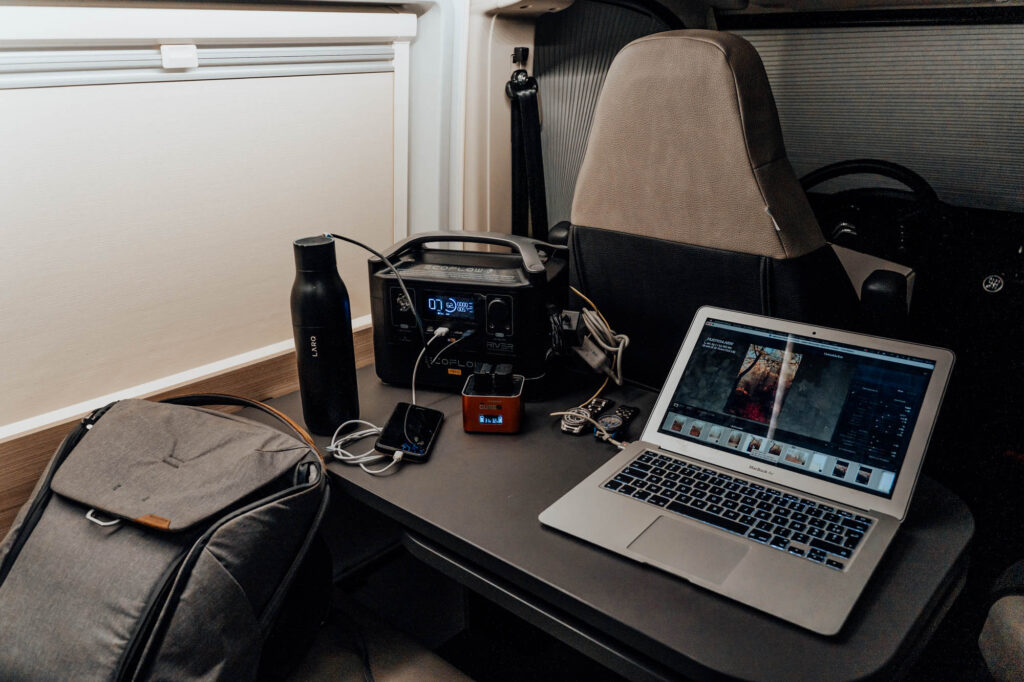
When you’re planning to cross various borders or wander around mountain passes, you’ll have to switch radio stations regularly, or you’ll end up with noise. Our trick? Make sure everyone has made their own Spotify playlist in advance! That way, you won’t be bothered by the noise and leave room for spontaneous singalong moments to occur.
Data Roaming
If you are located in Europe and are traveling through various countries, you’ll need to ensure that your data roaming is enabled on your phone to keep having an internet connection.
You shouldn’t worry about the amount of roaming you use, thanks to the European Union’s roaming regulations which say data providers can’t charge for roaming in the European Union. However, keep in mind: Switzerland is not included in this regulation! So don’t forget to turn off your Data Roaming when entering Switzerland.
What have we learned about road tripping through Europe with a campervan?
Our campervan trip through Europe confirmed something we already knew: that it’s very easy to travel between European countries. A 100 kilometers drive can bring you to a different cultural and diverse community.
Next to this, we had a few other learnings as well.
The ease of a camping site with decent facilities
While traveling in a sustainable campervan, you’ve got different options in terms of camping:
- You could visit an official campsite which has loads of facilities.
- You could park overnight at Highway stops.
- You could wild camp and stay at a new place every night.
Most European countries have different rules and regulations about camping, but generally, they (Switzerland, Italy,…) aren’t allowing wild camping … which makes it technically illegal. However, in most cases, overnight parking where you don’t set up camp or leave in less than 24 hours is allowed.
Our tip? Make sure you can drive off at any moment so that nobody can complain about it.
The thing is: If you’re on the road for over a week, you’ll need to clean your campervan and want a more luxury shower. Don’t hesitate to stop wild camping and pause at a camping site with decent facilities.
The ease of planning
Being prepared for your campervan trip ensures that you can switch gears faster and need to spend less time worrying. The things that helped us a lot were:
- Backup locations. Since we used our itinerary as a guideline, we had the flexibility to skip specific locations because of bad weather. Having backup locations made it less of a hassle to find hidden gems.
- Ecoflow River Pro . We knew we would probably wild-camp a lot, which meant not having the power to charge our electronic devices (laptop, camera,…). Luckily our friends at Dutchtravelshop.nl hooked us up with this mobile power station, which we didn’t have to recharge one single time during our 8-day trip.
The costs Tolls and Vignettes
Something we have underestimated is the fact that most European countries have toll roads, which can make your trip very expensive very fast. Luckily, there are exceptions, such as Germany, Netherlands, and Belgium.
Some countries such as Austria and Switzerland are working with a vignette, which is a prepaid motorway toll in the form of a sticker you typically purchase from petrol stations before you cross the border and which you stick on your windscreen.
Alternatively, you can always avoid tolls by picking alternative routes on Google Maps or Waze, but these will guide you through the smaller roads, resulting in a slower and longer route.
Our tip? If you have the time, save your money and go for the slower, more scenic route. If you’re in a hurry or have a tight schedule: go via the tollways.
Our road trip Itinerary
Since the lockdown started, we’ve been saving Instagram pictures of destinations that inspired us and deserved a place on our bucket list. We’ve added them all to a Google Maps collection and started planning the regions we wanted to visit.
From there on, we casually decided that we wanted to visit the Dolomites, Venice, and Milan. Because the beauty of a road trip in a campervan is that you can make up your itinerary along the way: when you’re experiencing bad weather, you can just start a few 100 km’s and adjust your itinerary as you go.
Additionally, once your start to post Instagram stories or timeline pictures of your trip, people will automatically start to recommend locations that weren’t on your bucket list to start with!
Remember that our style is to have a flexible road trip itinerary and adjust our planning accordingly. As a result, we’ll need an internet connection during our trip, which can’t always be found when traveling to rural destinations like the dolomites.
DAY 1 – Getting started
Our first day was mainly focused on picking up our campervan, unpacking the bags, and learning how to drive the campervan properly. Ultimately we already wanted to drive to our first location so that we could start our hike early!
Pickup Campervan in Brussels
We started our trip by picking up the campervan in Brussels in the afternoon, where we finally met the owners of the campervan face-to-face, received an extensive explanation of how the campervan functions, and finally managed the paperwork (for example; noting down the milage of the car, check for damages, etc).
After unpacking our bags and filling the drawers, we started driving towards our adventure! We left Brussels around 3 pm and drove straight to our first stop in Rheinland-Pfalz. Just when we crossed the steep hills of Malmedy, darkness fell over the highway, and fog started to appear.
Since the darkness prevented us from sightseeing opportunities, we quickly arrived at our first stopover and sleeping place – the “Wanderparkplatz” in Nothweiler on the German-French border . This parking is located in the middle of the woods, which explains why we came across some wild boars on our way to the parking spot.
Wegelnburg – Wanderparkplatz Nothweiler
After (wild) parking at Wanderparkplatz Nothweiler, we looked up at the sky and noticed how beautiful the stars were in the sky. We decided to unpack our Nanlite Pavotube II’s light tubes and used them to illuminate the (unlit) hiking trail, looking for the perfect spot to stargaze.
We decided to follow the winding hiking trail that crosses the German-French border until we found an open spot, which we used to capture the stars.
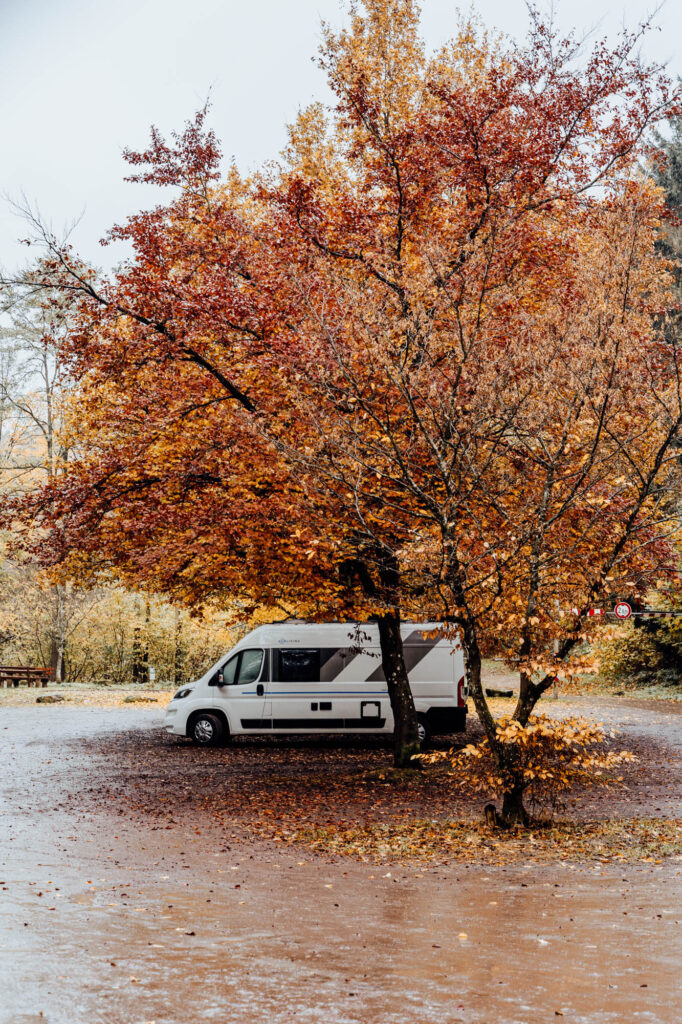
Day 2 – Chasing castles
We knew in advance that during our road trip to Venice, we had to pass through the German provinces of Rhineland-Palatinate and Baden-Württemberg. Both regions are known for their medieval castles, of which most have a panoramic view.
Our goal was to visit the most impressive castles on our route to Venice.
Wegelnburg, Germany
Wegelnburg , a ruined castle located in a forest on the French-German border, is best known for its panoramic view and incredible sunrise.
We wanted to witness that specific 7 am sunrise, so to observe this, we had to start our hike at 6 am, where we followed the zigzagging hiking trail to the Wegelnburg. This took us 5 kilometers, regularly crosses the German-France border, and passes by several other ruins on its way. The hike was covered in darkness since the sun was still about to set, making it an authentic experience. However: seeing the sunbeams roll over the mountains with such a fantastic panoramic view was just … unreal.
Be aware tho: the entrance of Wegelnburg is surrounded by fencing, so at first, we thought it was closed to visitors, but nothing could be further from the truth!
We found a shorter hiking trail on our way back, which brought us directly to the village, only 200 meters walk to the Wanderparkplatz Nothweiler.
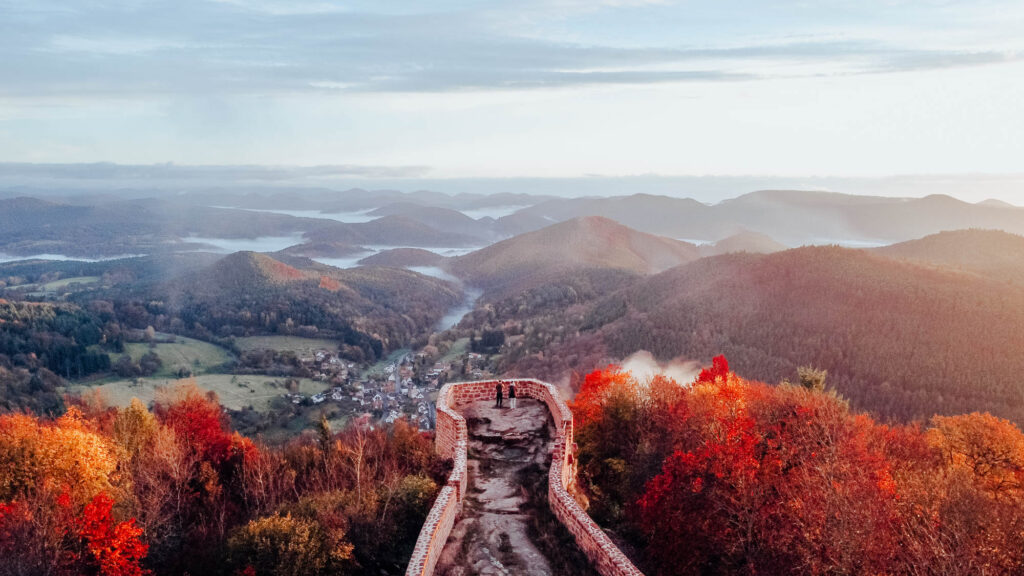
Schloss Lichtenstein, Germany
To make our route to Venice even more interesting, we aimed to visit interesting stopovers every 2 to 3 hours (+- 200 to 300 km). In this instance, we drove towards Schloss Lichtenstein : a 12th-century fortress built on top of an 800-meter high cliff.
We noticed that the castle was managed from a commercial point of view, where everything involved a cost: parking, entering the courtyard, etc.
Nevertheless, the panoramic view over the valley and the fantastic color palette of the surrounding trees, hills, and valley made it worthwhile. It also struck us how beautifully everything had been restored and how detailed they had for their sculptures.
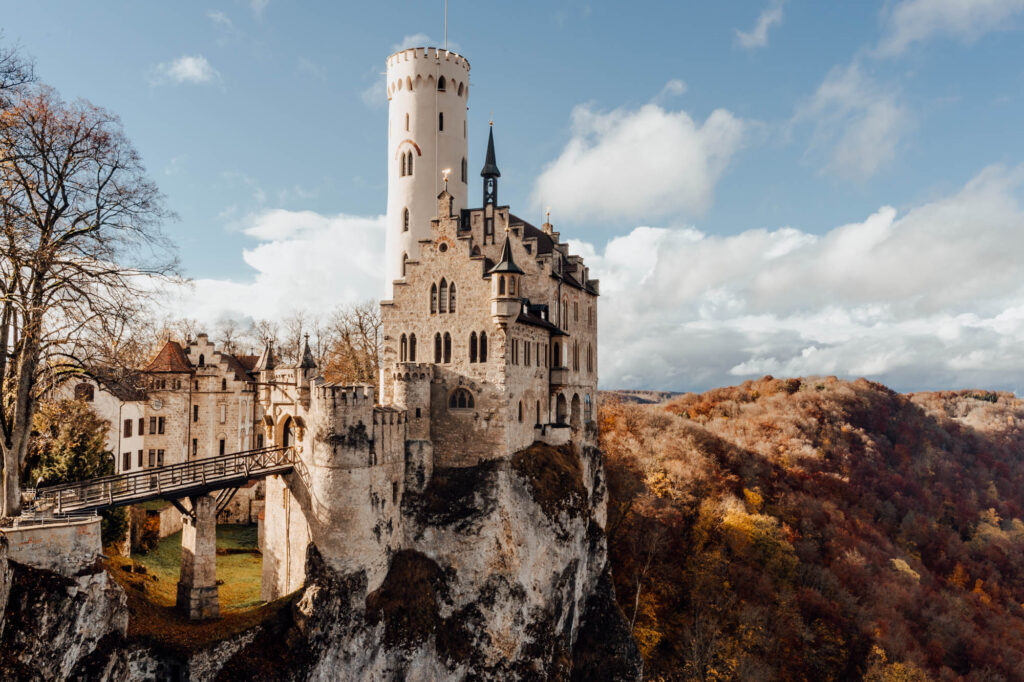
Hohenzollern Castle, Germany
Located less than 40 kilometers from Schloss Lichtenstein, you can find Germany’s most visited castle: Hohenzollern Castle! The castle has been known as “The Crown of all Castles” ever since 1267. Reason enough for us to visit it and admire it with our own eyes!
Our tight itinerary wouldn’t allow us to stop by the Hohenzollern Castle for an extended visit, so we decided to admire the castle from Zeller Horn’s legendary viewpoint ; It’s the mountain range located about 1.5 kilometers away, at the same height as the fortress. As a result, you have the best view of the castle and the surrounding area.
We have to be honest tho: it took us a while to find the exact location of the Zeller Horn viewpoint, but once we found it … we loved it! You can judge for yourself …

Plansee, Austria
While we had already discovered some of the most amazing places, we decided to push our luck: our goal was to visit Plansee lake, located just beyond the Austrian border, and search for its very instagrammable viewpoint that looks down over the lake.
Unfortunately, a combination of traffic jams and mandatory stops (buying our Highway Vignette to enter Austria) caused us to arrive just after sunset. We learned during our road trip through the mountains that as soon as the sun has set, it’ll be pitch dark in a matter of minutes. The same goes for our visit to the Plansee lake: as soon as we crossed the bridge, we couldn’t move without using our Nanlite lights.
After our short stop at the lake, we decided to continue our journey to a place to sleep for the night: the legendary Innsbruck city.
Innsbruck city
We’ve visited Innsbruck city numerous times, and we may even say that it’s our favorite city in Austria. This is because of its beautiful mountain background, architectural gems, alternative culture, and Innsbruck’s importance on the winter sports community.
Once we arrived, we decided to head downtown to reminisce memories from the past and see how the historic buildings (such as the Liberation Monument on Landhausplatz and the building with the golden roof) are lit up at night.
We decided to end our evening at the Hard Rock cafe to explore the same downtown area the next day after dawn before the shops opened.
Day 3 – Arriving in the Dolomites
During our previous road trip, we visited the Dolomites and missed out on a few of our bucket-list locations. Since the Dolomites were only a slight detour from our route to Venice, we decided to give some of these places a second chance … but not before we wandered around Innsbruck first!
Innsbruck, Austria
Imagine the feeling of waking up, opening the doors of your campervan, and looking out across the streets of Innsbruck with their impressive mountains as a backdrop. Well, that’s precisely how we woke up!
After a quick shower in our campervan, we decided to wander around the city again and rediscover the same historic buildings, but this time using daylight.
Another reason why we stayed in Innsbruck is that we’ve been following Holzkern Watches on Instagram for ages and noticed we could visit their shop in Innsbruck. We made an appointment, and were welcomed by their store manager Stefan who explained to us more about Holzkern’s philosophy and lifestyle, showed us how an automatic watch works and how to replace the chains of a wristband.
During our visit to the store, we fell for the charms of the La Concorde watch and the Intergalactic watch , which we took home as a reminder of our road trip.
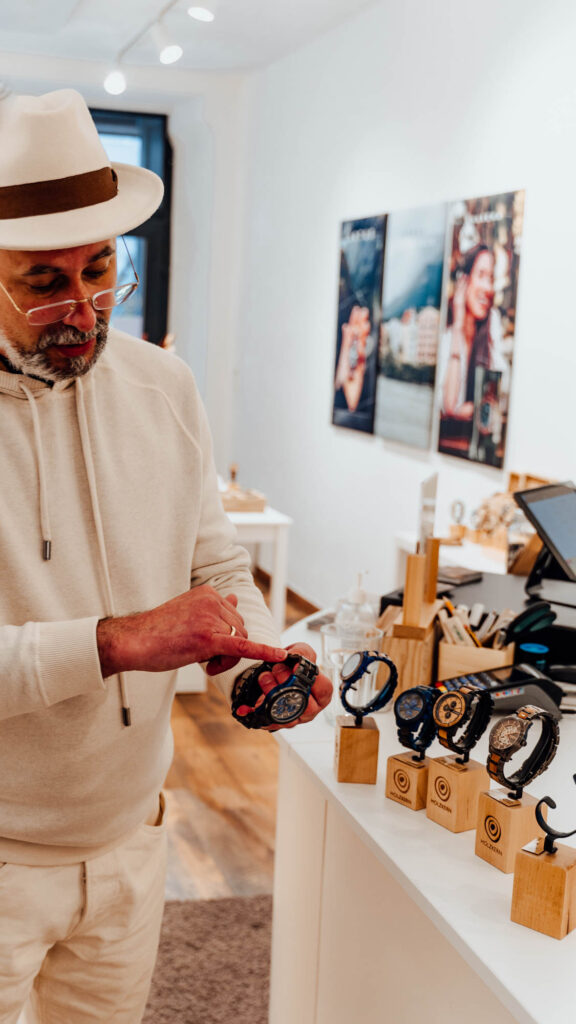
MMM Corones
Since we visited the Dolomites last year, the MMM Corones (being designed by Zaha Hadid) have been on the top of our bucket list. When we entered the region around the Dolomites, we noticed that the lakes weren’t frozen and the roads were not covered with snow … so our first reaction was to visit MMM Corones.
Unfortunately: the ski lifts were closed because the season hadn’t started yet, and the roads were now permanently closed and accompanied by prohibition signs. So one thing is sure: MMM Corones can only be visited in a dignified manner when the ski lifts are open.
With pain in our hearts, we had to make a cross over our visit from MMM Corones, but luckily there are plenty of other places to visit in the region … so we decided to drive to the legendary Lago di Braies .
Lago di Braies
Lago Di Braies – also known as Pragser Wildsee – is the biggest lake in the Dolomites and is known as the most beautiful lake of the Alps because it’s surrounded by beautiful pine forests, towering limestone peaks, and included a unique boathouse. As a result, most people know it as (“Lago di Instagram”).
The last time when we visited the lake, it was totally frozen and covered in snow. This setting certainly had its charm, but we also wanted to visit Lago di Braies before the snow fell. Unfortunately, there was so much fog that we still couldn’t admire the lake in its best condition. Next time!
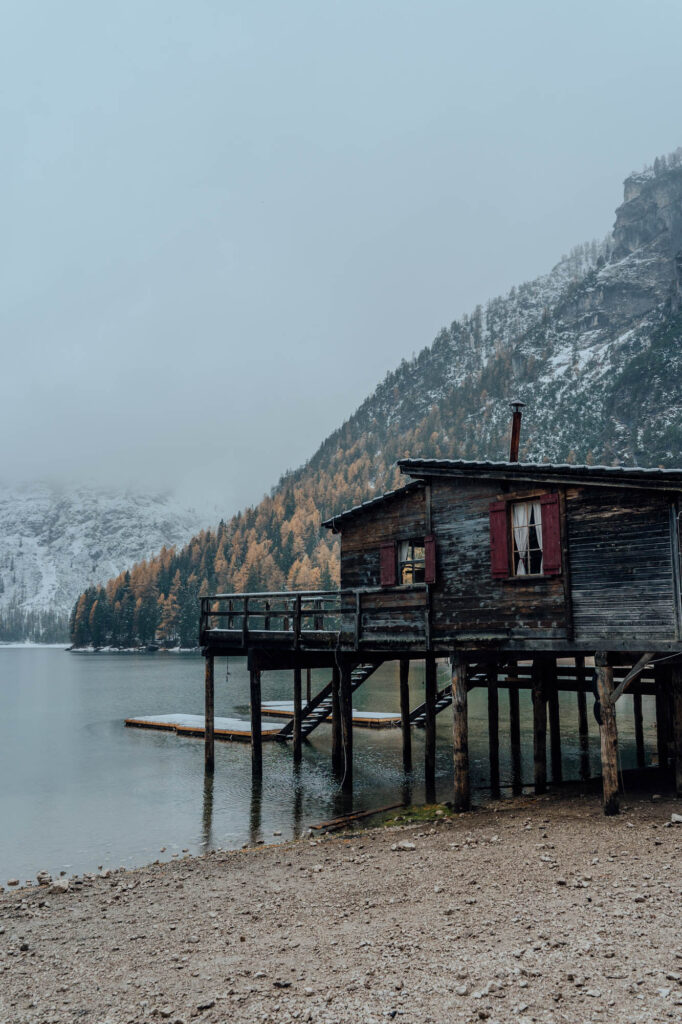
St. Johann church in Villnostal
Noticing that the sunset was approaching fast, we decided to revisit one of the most legendary sites in the Dolomites: St. Johann in Ranui Church in Val di Funes, Villnostal.
While driving over the winding roads, we noticed that the weather conditions would be utterly different from our previous visit: there wouldn’t be any snow, but the church and its surroundings were covered in fog.
Unfortunately, we didn’t notice too much of the sunset since the fog blocked all the sunbeams. By the time we left the church, it was already pitch dark.
Alpe di Siusi & Earth Pyramids Renon
We decided to drive up to Compatsch to experience the sunrise at Alpe di Siusi to save some time. Last time, we missed this view since it’s located in a nature resort and has a curfew for cars: no-one can drive by between 9 am and 5 pm.
This time, we could access the road to Compatsch, but while we were driving up the mountain, it started to snow, almost to the level of a snowstorm. When we arrived in Compatsch, our van got stuck, and a local farmer had to pull us out of the snow.
According to the local weather forecast, it would snow for the entire night, and we would miss the sunrise anyway since it would be covered in fog. In fear of getting stuck, we decided to go back down the mountain and skip our visits to both Alpe di Siusi and the Earth Pyramids of Renon.
We ended up spending the night at a truck stop next to the road.
Day 4 – The road to Venice
We knew it wouldn’t be the shortest route to Venice, but we decided to drive via Santuario Madonna Della Corona and Lake Garda since it captured our imagination.
Santuario Madonna Della Corona
What’s more astonishing than an ancient place of worship, located 800 meters into the side of a cliff? We wanted to experience it, so we drove towards Santuario Madonna Della Corona, only a 15 minutes drive from Lake Garda (the Italian part)!
We parked at Localita Santuario 1 in Spiazzi, on a parking lot that usually wouldn’t allow campervans and mobile homes, but we decided to risk it since it was empty. The reason for this might be the thick fog that stood over the mountain, on the fact that it’s not the most touristic period to visit Santuario Madonna Della Corona.
Although we could not fully admire the Santuario Madonna Della Corona due to the thick fog, the location continued to impress us. We also had the opportunity to check our fitness by climbing the steep stairs to access the sanctuary.
After arriving, we learned that this sanctuary is a place of pilgrimage that already existed before the year 1000! We’ve listed our findings in this specific destination article about Santuario Madonna Della Corona .
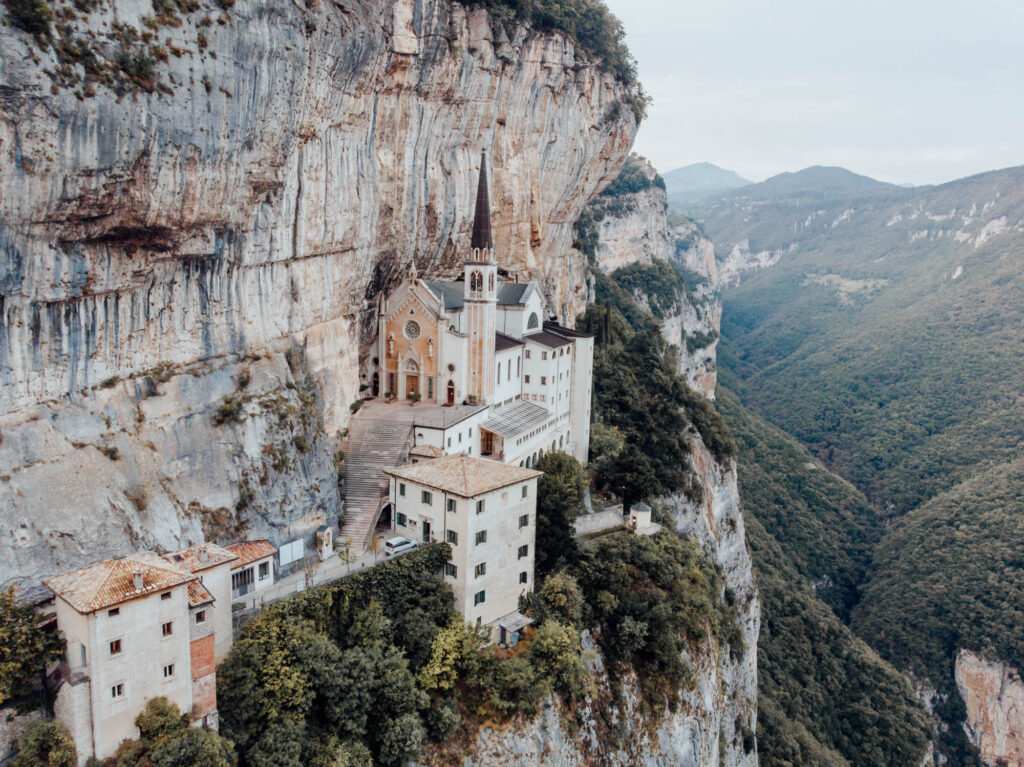
Lagi di Garda
In less than 24 hours, we went from a small snowstorm in the Dolomites to a 20-degree summer breeze at Lake Garda.
The small town was quite dead, considering the tourist season was already over here, so we just briefly wandered through the city. Our goal was to catch the sunset in Venice before 5 pm anyway, so we quickly left the lake.
Venice City
Where we spent the past few days in quiet or remote regions, with endless possibilities to park and wild camping … Venice would be a bit more crowded and strict. That’s why we decided to spend the night at the campsite of Venezia village, which had some fantastic facilities: decent showers, an elegant restaurant, and a clean swimming pool.
An additional advantage was that there is a bus stop in front of the campsite, with busses that go directly to Venice. The ride to the city takes no longer than fifteen minutes and drops you off at Piazzale Roma.
By 4 pm we arrived at the tourist center, where we were overwhelmed by history and architecture! Strolling with our camera in hand, we followed the small corridors of the city, arriving at a (relatively empty) San Marco square just after sunset.
Unfortunately, The darkness brought in some shady types, from aggressive salespeople who punched us on the shoulder to get our attention to pickpockets popping up from sketchy streets and following us until we noticed them. As a result, we decided to skip the rest of the city and return the following day.
Pro-tip; Gelateria il Doge’s ice creams are known as the best in the old town.
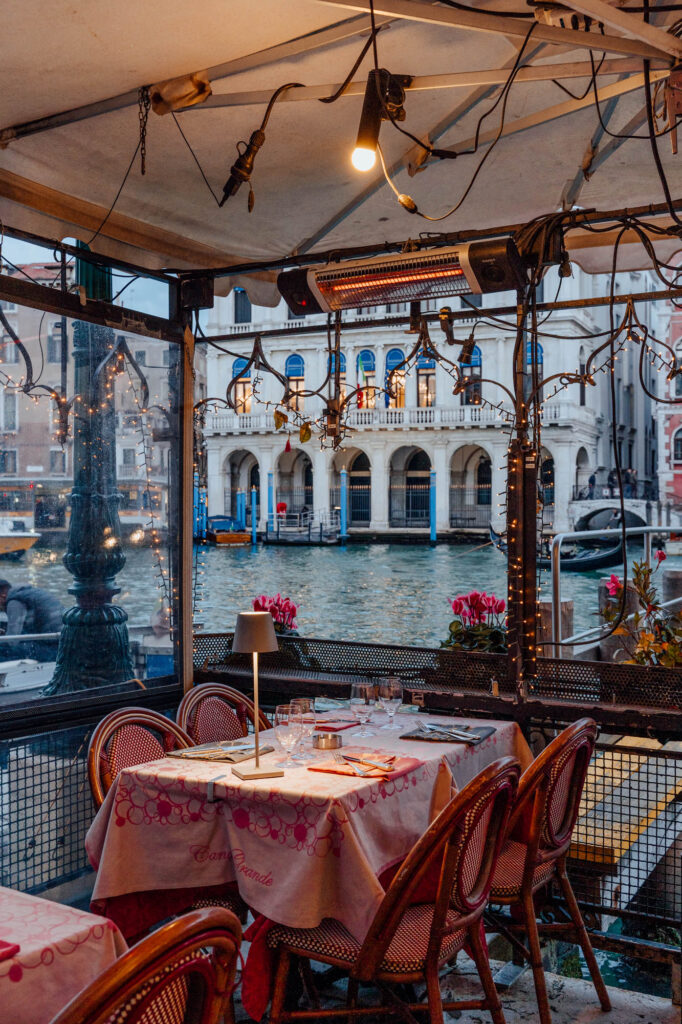
Day 5 – From Venice to Milan
By now, our road trip was already halfway through, so after enjoying Venice’s charms in the morning, we had to start on our way back. This time we chose to spend the night in the city of Milan since we wanted to discover some of their ancient buildings as well.
Be aware: Something we didn’t realize before going on this trip is how many toll stops you can find in Italy, especially between Venice and Milan.
Venice, the city of canals
Since we ended our wanderings around Venice early the night before, we decided to sleep in first… and then head back into the city!
This time we parked our campervan in Venezia Tronchetto Parking because we were only planning to stay in the city for a few hours. Ultimately, we stayed for 4 hours and realized that we had paid more for this parking spot (without any facilities except) than staying an extra night in the camping Venezia Village. Yikes!
Unlike the previous evening, where we walked to San Marco square via Basilica S.Maria Gloriosa dei Frari, we now had the time to take a different route: via Basilica di Santa Maria della Salute.
Milan and its impressive Duomo di Milano
Since we took our time to wander around Venice, we arrived in Milan during rush hour and had to endure several traffic jams before arriving in “Camping Village city of Milan.”
The campsite’s reception was already closed, but luckily google maps had a function that allowed us to know perfectly see what public transport connections would lead us to the Duomo di Milano. Our trip was a bit more delicate since we needed to transfer from the bus to the metro, in a place we had never visited before. Luckily we had google maps to fall back on.
Since this route to the center of Milan took almost an hour commute, we only found the time to discover the illuminated cathedral and the neighboring streets. To make it easy for us, we also made a quick McDonalds stop here.
Day 6 – From Milan to Strasbourg
We had less than two days to cover 1000 kilometers and go from Milan to Brussels. This gave us enough time to visit the center of Milan and then leave for Strasbourg in the afternoon.
Milan, Italy
Since Milan is such a beautiful city accompanied by ancient architecture, a sense of fashion, and art … we made a small “bucket list” of locations that we had to see during our visit to the city center.
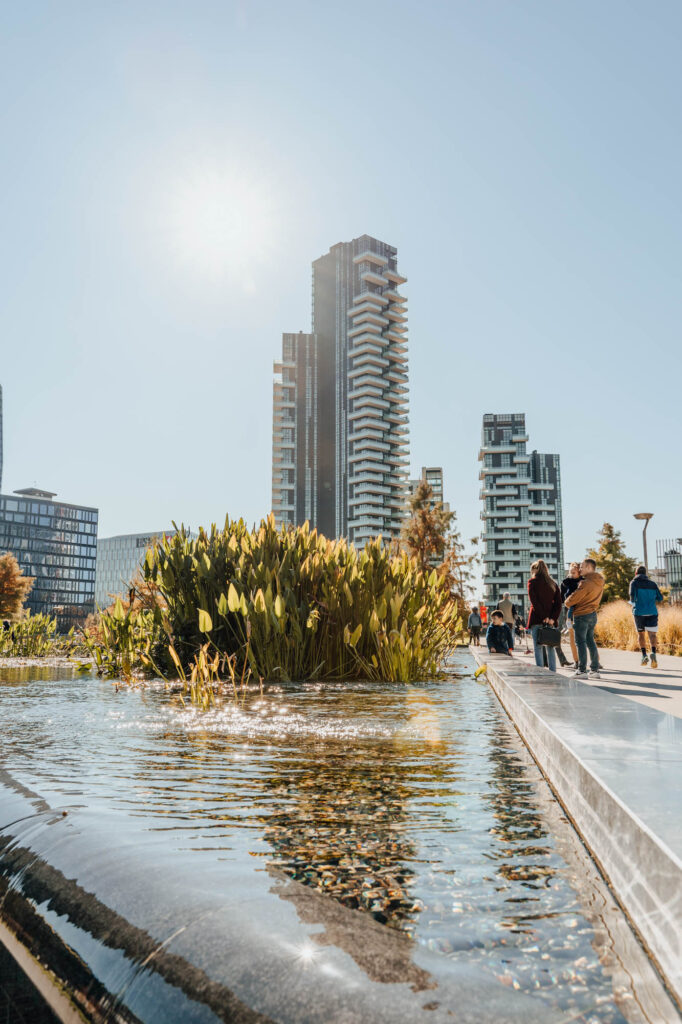
Castello Sforzesco
Castello Sforzesco – also known as Sforza Castle – is a fortress that was built during the 14th century.
Over the centuries, the fortification was destroyed in various wars, by the troops of Napoleon and during World War II. It was extensively rebuilt in 2005 and currently houses several of the city’s museums and art collections. That’s why it’s currently one of the most famous landmarks in Milan.
Arco della Pace
Arco della Pace is a huge triumphal arc located where the ancient Romans built their city gate. The gate is called “The Porta Sempione” and refers to the district it was located in.
While the origin of the arc can be found in 1807 when Napoleon was in command of the city, the construction of the “Arch of Peace” was paused when the city of Milan fell under the control of the Austrian Empire. The construction of the Arch was resumed in 1826 and was finally completed in 1838.
Bosco Verticale
The Bosco Verticale – or Vertical Forest – are two residential towers built in 2014 and are already known as the most iconic and most recognizable buildings of the last decade in Milan.
Pictures of the building often surface on Instagram and Pinterest, as it is iconic for its pioneering incorporation of a vertical forest.
Duomo di Milano
The Milan Cathedral, known as Duomo di Milano, is without any doubt the most known building in Milan.
It is logical too since they started the constructions in 1386 and only finished working on it more than six centuries later: in 1965! What’s even more impressive is the fact that the cathedral contains over 3400 different statues.
Strasbourg, France
As mentioned: Milan is still a 1000km drive from Brussels, so we had to keep going if we wanted to back on time! We decided to pass via Switzerland, which meant buying a new vignette when crossing the border and disabling our roaming data.
Once we arrived at Strasbourg, we parked at Parkplatz Friedhof since it was close to the city center, and parking on a Sunday would be free of any charge.
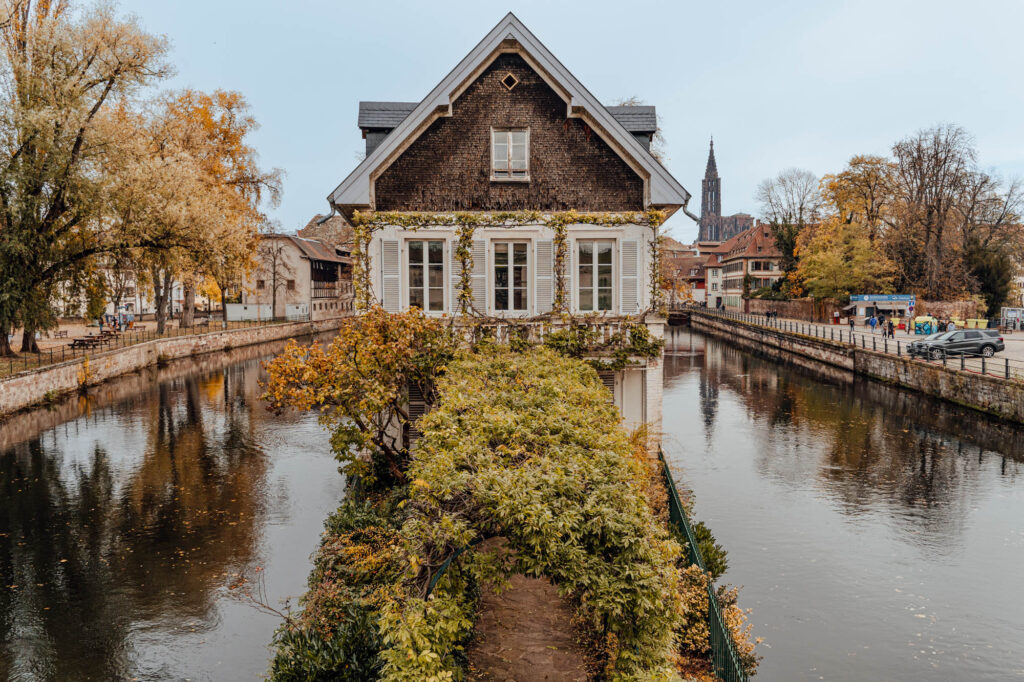
Day 7 – Back to Belgium
Every fairy tale comes to an end, and unfortunately, ours too. It was the last day where we were actually on the road; we wanted to enjoy it until the end. That is why we chose to discover Strasbourg in the morning and pass quickly via Veves Castle in the afternoon.
Being a university city on the border of France and Germany, Strassbourg is a very characteristic and cultural city, with enormous history. Proof of this is the street art that can be found all around the city or the ancient buildings scattered around the city (such as their cathedral).
We had some help from some locals; we were advised to discover the part of the city known as “Le Petit Paris.”
Vives Castle
What’s a better way to end our trip than to visit a 12th-century castle? We arrived rather last-minute: 10 minutes before the castle closed, so we didn’t have the chance get to explore it from the inside … but the sunset made up for it!
If you don’t know about Veves Castle yet, make sure to read the extensive guide we wrote, it contains the history of the castle, the legends around the castle and how to reach it.
A fascinating part about the castle is that the same family has owned it for the last 800 years, and that is classified as an exceptional heritage by the region of Wallonia. As a result, the castle is referred to as Sleeping Beauty’s castle.
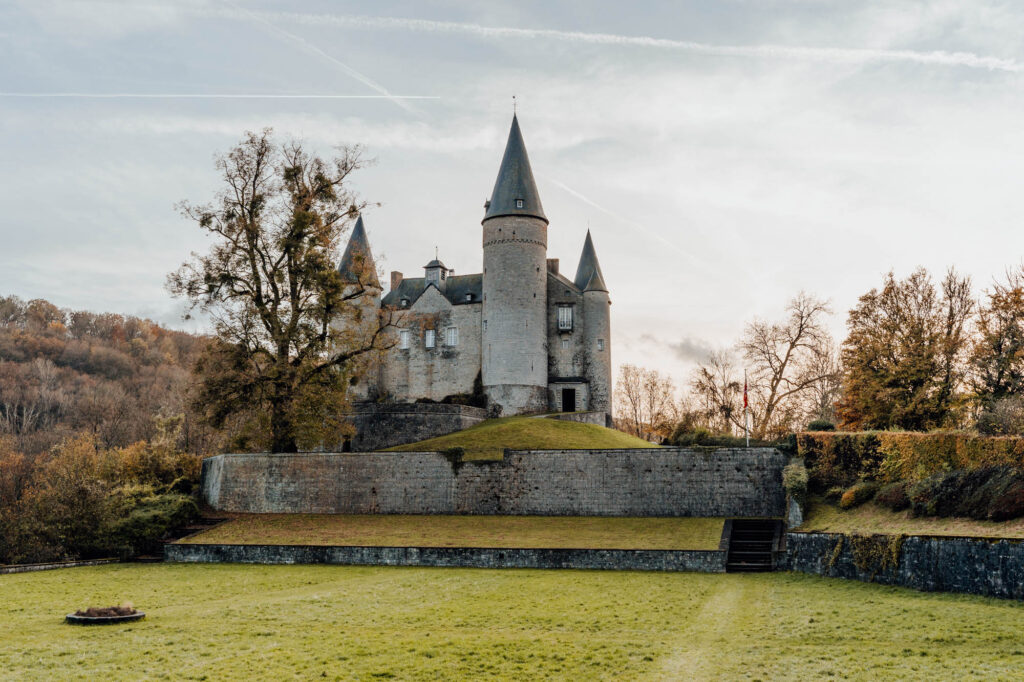
Day 8 – returning the campervan
Our last day was mainly focused on bringing back the campervan, where we had to pack our bags, clean the campervan in a self carwash, and ultimately fill in the paperwork again ( check for damages, note the number of kilometers we’ve driven,…).
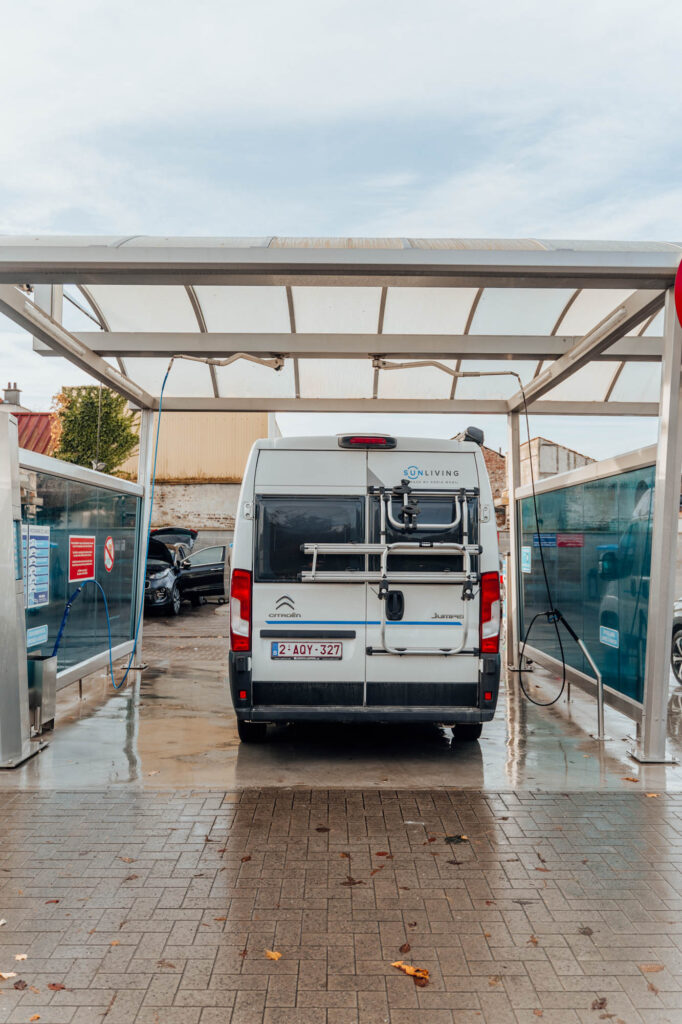
Save to Pinterest
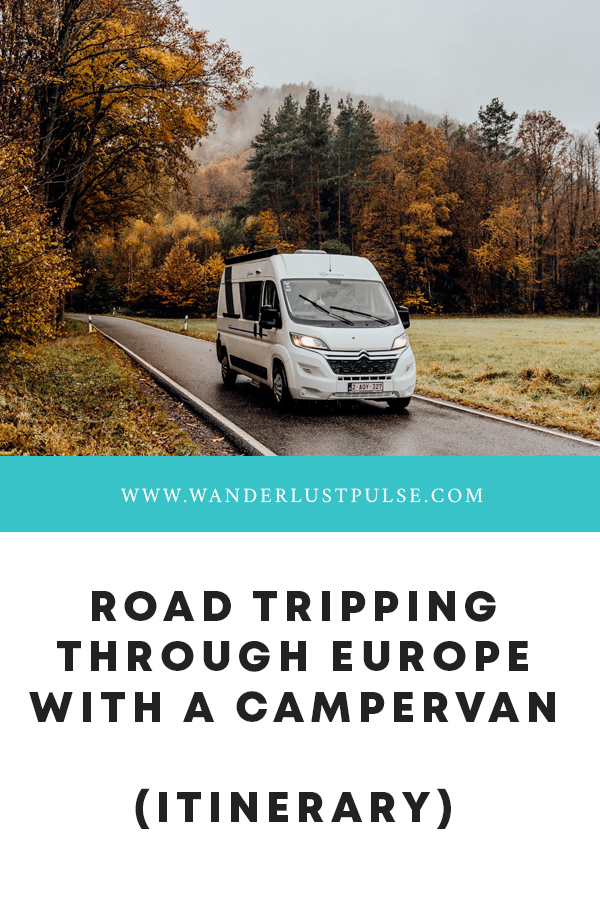
Share this:
Hey there! I'm Elliot Clennam, a passionate photographer based in Brussels, Belgium. My love for capturing the essence of my surroundings has led me on countless adventures, from exciting road trips to bustling city escapes.
Similar Posts
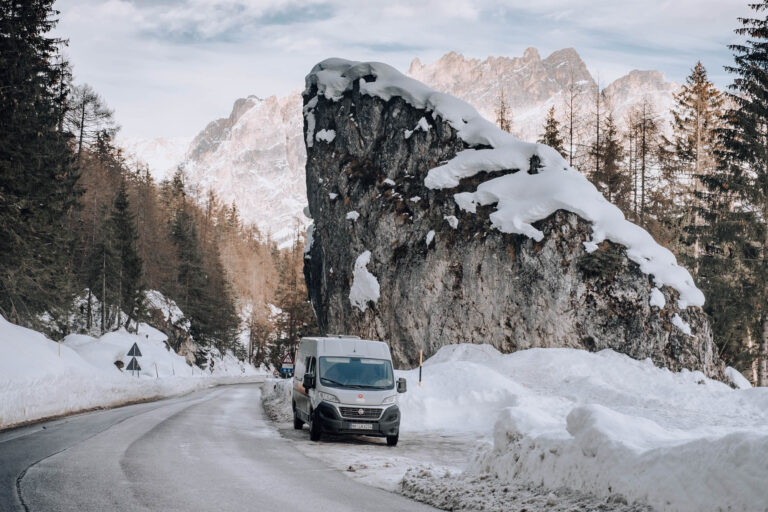
Visiting the Dolomites with a Campervan in 2024 (Itinerary)
The Italian Dolomites are known to every landscape photographer as one of the most spectacular places on earth, covered…

Discover the architectural side of Brussels
It’s always hard to begin exploring a big city as Brussels when you’re looking for the most beautiful buildings….
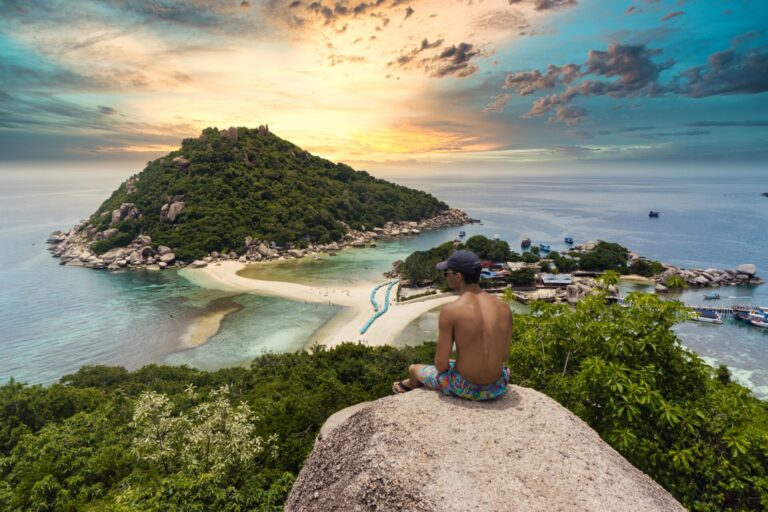
Two Weeks in Thailand: A Complete 14-Day Thailand Itinerary
Are you planning a trip to Thailand and wondering how to make the most of your time? Look no…
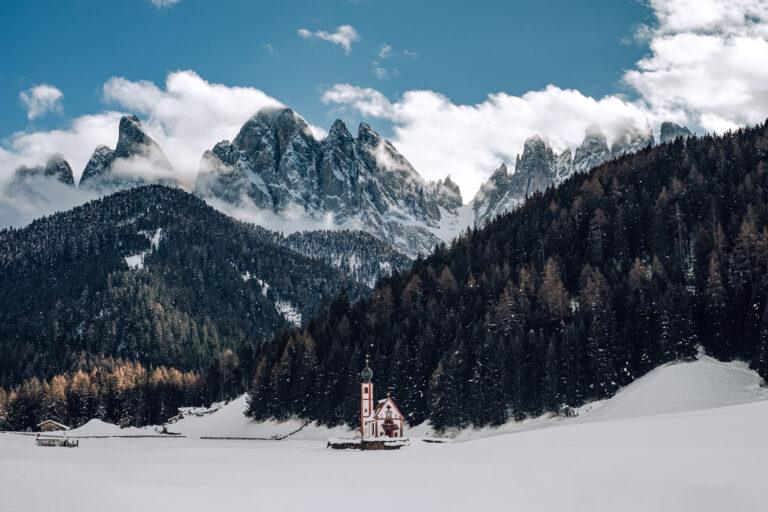
St Johann in Ranui Church, a symbol of the beauty
Hidden in the overwhelming mountains of the Dolomites lies a 1744 century church. We visited this St Johann in…
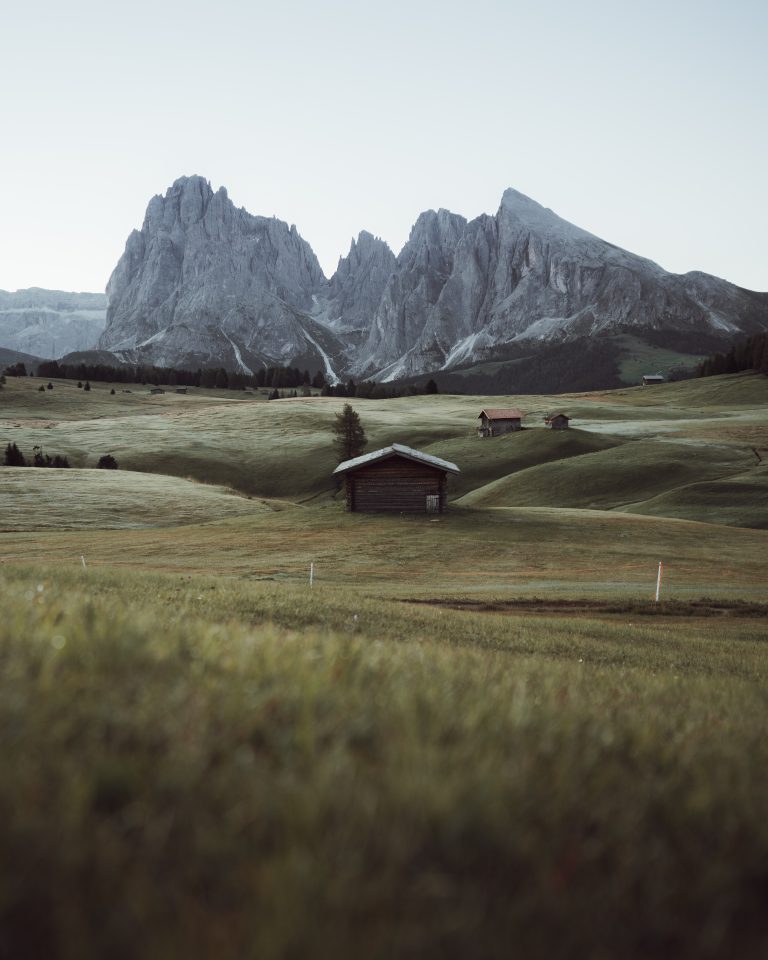
Alpe Di Siusi, housing the most known cabins in the Dolomites
The Alpe Di Siusi – also known as Seiser Alm – is one of the most known mountain plateaus…

Lago di Dobbiaco, an astonishing breeding ground for rare birds
Lago Di Dobbiaco is a cozy lake at the foot of the Tre Cime mountain range, known for its…

The Definitive Guide to Europe by Campervan

Imagine the feeling waking up each day, grabbing your morning coffee and looking out across the lake/mountain/beach you parked next to the night before.
You take a look at the map, plot a course and make your way to the next destination. In your own time, on your own schedule, in your own home on wheels. This is life when traveling Europe by campervan.
It is a steep learning curve once you decide to campervan in Europe for the first time, particularly if you are not from Europe.

We are here to fast track you past the initial planning stages and help you plan your trip by campervan around Europe. In this Guide to Europe by Campervan we have listed all of our best campervan travel tips.
There is A LOT of information here so don’t forget to save or share the article to refer to later.
- 1 How To Plan Your Europe By Campervan Itinerary
- 2 To Buy Or Rent a Campervan In Europe?
- 3 The Best Campervan Layouts
- 4 Get To Know Your Campervan
- 5 LPG Gas Bottles
- 6 Best Campervan Gadgets
- 7 Essentials Apps for Campervan Life
- 8 Connectivity Tips
- 9 Navigation Tips for Campervanning in Europe
- 10 Toll Roads
- 11 Using Ferries in Europe
- 12 Campervan Camping In Europe Guide
- 13 Campervan Security
- 14 Campervan Meals
- 15 Tracking your Europe Road Trip Costs
- 16 Important Documents to Carry
- 17 Ready To Plan Your Trip?
- 18 Final Travel Europe By Campervan Advice
How To Plan Your Europe By Campervan Itinerary
We explored Europe by campervan for 5 months on a family gap year and it was an incredible experience. The region is well set up for touring by campervan.
The ease of travel between countries and the cultural and natural diversity of Europe make it the perfect road trip destination.
The natural thing to do first when planning to campervan around Europe is plan the itinerary.
There are millions of different campervan routes in Europe and it can be hard to whittle it down to a manageable list.
We suggest you start with this list of questions to help you narrow your planning efforts:
- How much time do I have
- Where will we start and end the road trip
- How much driving am I prepared to do each week
- What time of year will I be in Europe (the weather is an important consideration)
- Do I want to travel slow or do I want to tick off as many places as I can.
Next we suggest you pull out your Europe bucket list, a spreadsheet, a map of Europe, Google Maps and your Weather App and start planning.
Expert Tip: When looking at distances on Google maps, add half the time again to get a realistic idea of the time it will take to drive in a campervan. Travel by campervan is slower than by car and you will most likely stop a number of times on the way. In our experience a 3 hour trip on Google Maps typically becomes a 4-5 hour driving day.
We love using Lonely Planet Guide Books when we first start planning a new trip.
They give a good overview of a country or region, the key sights, and best time to go. They are a helpful way to come up with your Europe bucket list in order to start planning.
Click here for the latest prices for Lonely Planet Europe .

As you start to form your high level itinerary, my best piece of advice is don’t lock it all in!
The beauty of travelling Europe in a campervan is that you can also make it up as you go along. Prioritise the countries and sights you want to see and adjust your Europe itinerary as you go.
Europe Itinerary Planner
If you would like more guidance to plan your Europe itinerary, we recommend this Europe Motorhoming Travel Toolkit by motorhome experts, Wandering Bird.
The toolkit includes a Europe travel ebook, printables, video tutorials and guides to route planning, camping, motorhome security and much, much more.
It is an invaluable resource full of tips and ideas and so helpful for first time motorhome Europe travellers.
>> Click here to check the price and find out more
To Buy Or Rent a Campervan In Europe?
Buy or rent? This is one of the most difficult decisions and unfortunately there is no right answer to this question. It really depends on your situation.
So to help you choose here we guide you through a couple of key questions to help you make this important decision.
In short, renting is the simplest and easiest option and the best choice for short trips (less than 8 weeks).
There are many European motorhome rental agencies, but we recommend Motorhome Republic . They have a huge network of vans across Europe and offer discounts for longer bookings.
Click here for a no obligation quote from Motorhome Republic.
Renting an RV in Europe makes sense for short trips, but will cost more if you are travelling around Europe for a longer period.
Considerations for renting or buying a motorhome in Europe
Here are some things to consider when weighing up whether to buy or rent an RV in Europe.
Length of trip in the campervan
The longer your trip the more sensible it is buy. On our calculations it was worth buying a camper van if the trip was longer than 2.5 months.
Less time than that and it was probably easier to hire a campervan in Europe.
The time of year
Off season rentals are typically much cheaper as loads of campervans are returned at the end of summer.
If you are brave enough to start your trip in winter and are prepared to negotiate, you should be able to get a much better price on a Europe RV rental for the off season.
Van repairs
Are you prepared to take responsibility for fixing the van, should things go wrong? When renting a campervan in Europe, if anything goes wrong, the rental company will resolve the issue.
If you buy the van you are going to have to work it out yourself.
We met a couple in Montenegro who had been holed up in the campsite for a month waiting for a part for their van to be shipped from the UK.
Thankfully we had no major issues with our van over the 5 months.
But it is a big consideration. For this reason, before purchasing a van we strongly recommend you have it checked out by a mechanically minded person.
Your country of origin makes a difference
As a non-European it is a little more complicated to purchase and insure a van in Europe.
It makes a private sale with an individual buyer very complicated unless you have friends or relatives in Europe who are prepared to purchase insurance on your behalf.
But the good news is that it is possible to purchase a campervan as a non-resident through a number of smaller European campervan companies.
If you are interested in buying a European camper van, contact us and we can put you in contact with our preferred company, a small family run business.
Expert Tip: If you need to transfer funds when purchasing a van in Europe we use and recommend Wise. Much better rates than most banks and quick and easy to set up. We saved hundreds of dollars transferring funds for our van purchase using Wise. Click here to find out more.
Look at campervan buy back schemes
If you don’t want the hassle of selling the campervan privately at the end of your trip, there are companies who will offer a guaranteed buy back. This will cost you more than purchasing and selling privately, but it is cheaper than renting.
You are assured of selling the van and it simplifies the process at the end of your trip. It is a good compromise between renting and buying privately. We opted for this option and we very happy with our decision.
If you would like to get a quote for buying a camper van in Europe through a buy back scheme, contact us and we can put you in contact with our preferred supplier.
So in summary, buying a van requires a large financial outlay but will most likely save you more over the long term.
But if you don’t want the hassle, motorhome hire for European travel is easy and worry free.
Get a campervan rental quote today and start planning your road trip!

The Best Campervan Layouts
Before you choose to purchase or rent a van, you should spend some time thinking about the best campervan layout to suit your needs.
There are literally thousands of different van configurations. It is hard to know what will work if you haven’t been RVing in Europe before.
Questions to help you find the best van layout
To simplify your van search, use these questions to prioritise what is important before you start looking.
How new do you want the van to be? What modern features does it need to have?
Are you prepared to accept an older van with older furnishings, no air conditioning, fewer mod cons. Older vans are generally much cheaper to buy or rent.
Or are these things important to you? For example, if you are considering Europe campervan routes in the south through Summer, air conditioning will make your trip much more comfortable.
Van size is a big consideration and will depend on how many people are traveling, but also the style of trip you want to take.
Do you want to go offroad on your camper van Europe trip? Do you want to free camp in out of the way places? Do you want to be able to drive the van into major cities? A smaller van is better for these types of European road trips.
Do you have kids? Do you want them to have a separate sleeping area and/or their own beds?
What size van are you comfortable driving? There are pros and cons to both. A small van is easier to drive and park and is easier to take to out of the way places.
But a larger van usually has a toilet and kitchen onboard, provides more comfort inside when traveling to colder countries and allows you to take more stuff.
It is worth noting that European camper vans on average tend to be smaller than what you find in Northern America, but are perfectly suited to RV through Europe.
Right or Left Hand Drive
Do you want a right or left hand drive? If you are going to spend most of your time on the continent, it makes more sense to buy a left hand drive vehicle.
Many vans for sale in the UK are right hand drive, so always check when enquiring if it is a left hand or right hand drive.
Bed Configuration
Are you prepared to convert a table into a bed each night or do you want permanently set up beds when you RV Europe?
If you are on a long term road trip, converting a bed each day can become pretty tiresome, but it means you can take a smaller van.
We took this compromise on our US month long road trip , but didn’t want to for a longer Europe tour.
If you have kids and they are still in car seats or booster seats this needs to be factored in to your decision.
Expert Tips: If you are traveling with kids, we talk more about bed configuration when traveling Europe by campervan with kids here .
Do you want to carry bikes or other large sporting equipment like kayaks or paddle boards that will need to be stored in or on the van?
Kitchen Appliances
Can you cook everything in your campervan kitchen on a gas cook top? Can you live without an oven and grill in the van?

Camper Van Amenities
Do you want to be able to free camp for days at a time off the grid with sufficient power and amenities to do so?
A van with a fridge that runs on gas, lights that run on a dual battery and a toilet onboard will help you achieve this.
Heating and Cooling
Will you be traveling through hot climates on your campervan Europe trip?
If you don’t have air conditioning you will need a van with plenty of opening windows (preferably with insect screens).
Will you be travelling Europe in the winter? If so you will need a campervan heater.
Related: The best campervan accessories for van life
Get To Know Your Campervan
Once you have chosen your van, it is really important to familiarise yourself with the vehicle before you set off campervanning around Europe.
We cannot stress the importance of this enough: get to know your new home before you go too far from where you rent or buy it.
Travelling Van Pre-Travel Checklist
- Check the campervan is mechanically okay. Ask when was it last serviced. Check the tyres.
- Do all the windows and blinds open and close correctly?
- Do all doors open, close and lock properly?
- If there is an alarm, does it work and how does it function?
- Confirm the appliances (fridge, heater, 12V outlets, AC outlets, air con if you are so lucky) are working and you know how to use them.
- Have the company/seller show you how to fill the LPG tank. Have they provided the necessary attachments for the countries you are visiting?
- Check you know how to open and close the campervan awnings.
- Check if the awning comes with tie down ropes. If it doesn’t we recommend you buy them to secure the awning. Click here to see the tie downs we recommend .
Know the van dimensions
It is also really important to know the height, length and width of your van!
Unlike rving in the US , there were MANY occasions heading down a country road or under a small bridge we would notice a road sign indicating the maximum width or height.
We would have to stop and find another way around because we wouldn’t fit in our large motorhome. It is VERY important to know this!

Campervan Parking
Navigating into campsites and getting out of carparks is often tricky and we saw a few other drivers hitting light posts and fence posts in their attempts to reverse their RVs!
Our van didn’t have parking sensors or a reversing camera and it was impossible to see what was behind you.
We suggest that if you are traveling with other people, one of you always get out and direct the driver into or out of the spot as you campervan through Europe.
Agree on a method for helping the driver with reverse parking. We found that hand signals worked better than voice commands.
Supermarket carparks are a good place to find large spots to park when in visiting towns in Europe.
They had more space and we could take up a few spots. Much less stressful than trying to park on a busy street!
Managing Waste Water
Larger campervans come equipped with grey water tanks. This collects all the used water – from the kitchen and bathroom sinks.
The older the van, the more likely it is this tank is going to have a unique and not so great odour.
If you rent or buy an older van our recommendation is to empty the grey water tank before setting off on long driving days.
When we didn’t empty the grey water tank we would be driving along with our sleeves held over our noses! The smell of grey water wafting through the van is terrible and was much worse in hotter weather.
We tried everything to improve the situation. From special tank cleaner to dishwashing liquid to putting ice cubes into the tank. Nothing got rid of the smell. The best solution was to have an empty grey water tank whilst driving.
If your van has a toilet we suggest you use toilet chemicals. Carry spare bottles of toilet chemicals as they were not always easy to find in smaller towns.
Thetford Aqua-Kem is a popular holding tank chemical and the one we used on our trip around Europe. Click here to check the latest prices .
LPG Gas Bottles
If your campervan has a refillable LPG bottle, monitor the gas level and don’t let it get too low. In some countries such as Portugal and Austria it was difficult to find LPG so we tried to keep it above half full.
Having said that, we used the gas for cooking, heating and cooling the fridge when off the grid and it really didn’t use much gas at all. We probably could have only filled it once or twice in 5 months.
Note also that there are four of different types of LPG gas bottle fittings used across Europe. Our campervan came with all of them and we could screw on the one we needed when we refilled.
The website mylpg.eu/adapters explains which fitting type is used in each country and also has a listing of LPG filling stations.
Also, if you were like us and had no idea how to use an LPG pump, have a look on YouTube for some guidance!
Best Campervan Gadgets
There is additional equipment and motorhome accessories you will use all the time and we recommend you purchase for travelling in Europe by campervan.
1. 12V USB Port Adaptor
You will need to buy a 12V USB port adaptor to charge your phones and tablets. Make sure you get a good quality one with a high current output to enable fast charging of your phone.
It will need to be dual USB like this one so you can power the GPS at the same time as charging a phone.
2. Voltage Inverter
If you have electronic devices such as a laptop or camera battery charger that are powered by AC voltage then see if you can find a 12V charger for them.
Alternatively, we recommend buying a voltage inverter which allows you to run an AC device from a 12V port.
When choosing an inverter you need to check that the inverter output is the correct AC voltage and is rated at a significantly higher power than the device you are powering.
For example, I needed to run my laptop power supply which was 220V at 180W so I bought a 500W Car Power Inverter. Click to check the latest prices on the Inverter.
If you are coming from the US you need a 12v to 110v inverter for US voltage electronics like this one .

We also recommend you purchase bicycles when touring Europe in a campervan.
Campsites are often located a little out of town and the bikes give you more flexibility to get out and explore the local area without having to drive the van everywhere.
You can easily purchase them secondhand on ebay like we did, or look for a good deal on a new bike that you can sell at the end of your trip.
The large supermarket chains like Carrefour and Aldi often had new bikes for sale and Decathlon is a cheap sportstore found in Europe with affordable bikes.
Many campervans have a bike rack on the rear to carry bikes. If not, ask your rental agency or seller if one can be added.
An adaptor, inverter and bikes are our top three campervan products for motorhome travel to Europe.
For more of our favorite travel accessories see our list of 14 Travel Essentials here .
Read next: Best gifts for Motorhome owners
Essentials Apps for Campervan Life
It is easy to stay connected on a campervan trip around Europe. We travel with a laptop, a tablet, 2 kindles and 4 mobile phones.
The kids have a mobile device and headphones each because it was the cheapest way for them to have access to music and audio books.
We talk more about this in our article on road trip activities for kids. Click here to read it .
To satisfy everyone’s need for music, we purchased a Spotify family membership for access to music online.
Spotify is a great app. Everyone had their own playlists and could access unlimited new music throughout the trip.
It is also possible to save playlists to listen to when offline.
Download Spotify for free. Click for: Apple Store free download (iOS) Google Store free download (Android)
Another option for access to tunes is Amazon Music . They also offer a family membership plan and have the option to play music when offline, similar to Spotify.
Click here for a 30 day free unlimited trial of Amazon Music.
2. Borrowbox
We also signed up with our local public library to borrow ebooks and audio books for free. This was one of the best decisions we made for RV travel in Europe.
It has saved us hundreds of dollars and also helped entertain the kids on long drives.
Check with your local public library whether they are set up. Our library used the Borrowbox app.
The kids would listen to audiobooks on their phones as we were driving and we could download ebooks to the tablet.
Download BorrowBox for free. Click for Apple Store free download (iOS) Google Store free download (Android)
The only limitation with the Borrowbox app is that often new releases were not available, and popular books were constantly on loan.
So the other option is to sign up for an Audible account . Audible gives you access to a huge range of new release audiobooks, podcasts and originals as part of a monthly membership. Click here to sign up for a free trial on Audible.
A podcast app is another way to download content for both kids an adults. We use Castbox.
Book exchanges seem to be a thing of the past and we very rarely found somewhere to exchange English books, especially kids books, so the kindles were essential.
We traveled with two kindles which were shared between all 4 of us.
Our family bought us an Amazon voucher as a farewell gift. We made very good use of this during the year when we couldn’t find books to borrow from the library.
Click here to see the latest Kindle and price
If you plan to work or homeschool while travelling Europe by motorhome, a laptop is essential.
We love our Microsoft Surface Pro as it is lightweight, a fully functioning laptop that can also be converted to a tablet for use by the kids.
It was well used not only for work but also for watching movies, planning our Europe trip along the way and for the kids to do login to online learning sites for homeschooling.
Click here to see the latest prices for the Surface Pro

Connectivity Tips
Wifi vs mobile data.
One of our top campervan tips is not to rely on camp ground WiFi when you travel Europe in a campervan.
I was very surprised in Europe to find WiFi connectivity generally pretty poor. We found camp grounds almost always promised WiFi but in reality it was slow and unreliable and sometimes expensive.
Like most people these days, internet connections are an important part of travel.
Plus as we didn’t book any of our trip in advance we were planning most nights once the kids were in bed.
To reduce frustration levels with WiFi we recommend you purchase local prepaid data plans.
In 2017 the EU introduced a new law forcing mobile data roaming costs to be the same across Europe as in the country where you purchased the SIM.
This means you can get a SIM in your first country and know it will work practically everywhere at the same rate.
While there are still huge variations in the plans on offer, it is much easier than before when it often made sense to get a new prepaid SIM in each country.
The Prepaid Data SIM Card Wiki is an amazing source of information that we used to determine the best deal.
Read Next: Best Road Trip Gifts for Travel Lovers
If you are using free WiFi it is important to protect your data by using a VPN when travelling Europe in a van.
A VPN (virtual private network) allows you to use public and open WiFi connections without the risk of your data being compromised.
We use NordVPN all around the world when we travel. Just switch it on when you connect to WiFi and know your information is safe.
Click here to see the latest deals with NordVPN.
Navigation Tips for Campervanning in Europe
We highly recommend that you have a number of different navigation tools on hand to help plan your journeys.
There was never one tool that met all of our needs and we used all of these methods most days.
1. Road Atlas
For high-level planning, our first point of call was our Philip's Big Road Atlas Europe .
This may seem a little old school, but we regularly referred to this map to give us a good overview of distances for itinerary planning.
Our son also loved highlighting our Europe road trip in the atlas to track our journey and it is a great memento of the trip.
>> Click here to check the price for the Philip's Europe Road Atlas .
Traveling with kids? Read our tips for road trip activities for kids here
A dedicated GPS/Sat Nav with up-to-date maps is essential for a few reasons:
- It doesn’t rely on mobile connectivity
- It keeps your mobile free for other purposes when driving
- The GPS shows you the speed limit when you are driving and just how sharp that upcoming bend is.
There are many different types of GPS, but you are best to look at sat navs for motorhomes with European road maps included.
We had an entry level TomTom GPS and found it simple and reliable to use plus we liked the Australian voice option who would tell us “mate, if those back seat drivers don’t keep it down, ditch them at the next servo”.
However it didn’t have settings specifically for large vehicles which would have been helpful considering the number of small roads and villages we navigated.
>> Click here to check the price for TomTom GPS for motorhomes

3. Google Maps
The only problem with a GPS is that sometimes it might suggest tiny roads or routes through village centres that our 7m/3.5 tonne van could not pass through.
Unfortunately there was no option to filter out roads not suitable for oversized campervans.
So we would also use the Google Maps app on our phone to see what route it suggested because it tended to be better at avoiding small roads.
We strongly recommend when you have WiFi you download Google Maps for use in offline mode to avoid being reliant on mobile data.
The other great thing we used Google Maps for (if you have an internet connection) is to use satellite view or street view to check just how wide a road is.
If you can see lines in the middle of the road you are good to go. If not, you may need to think twice in a large van.
4. Other Tools
We also occasionally used an app (or website) called Via Michelin which was able to give estimates for toll costs and more realistic travel times compared to Google maps.
Also ensure you research different country rules in relation to things such as driving laws, low emission zones, how tolls are charged and child restraint requirements.
The rules differ a lot between countries. We had to change our plans in and around London due to restrictions on older vehicles entering greater London.
Our Philip’s Big Road Atlas Europe had an excellent country section in the front that summarised the basic rules and regulations for each country.
Toll roads are common in Europe (except Germany and the Netherlands) and they can be very expensive to travel on in a motorhome.
We recommend you do your research on the cost of toll roads in each country, how much time they will save you on the journey and how they have to be paid. It differs country by country.
The Via Michelin site was useful for estimating tolls on different routes.
France was super expensive because our campervan was over 3m tall and classified as a bus.
We spent 30 Euros ($35 USD) on one 5 hour drive down the west coast of France. Italy and Spain were much more reasonably priced and had fewer tolls.
How to pay Tolls in Europe
In most cases you can pay the toll using cash or a credit card at a toll booth.
One exception is Portugal which has no toll booths, just toll points with cameras that scan your number plate.
In Portugal you must register a credit card against your number plate at the Welcome Points just over the border on their main motorways.
Then your card is automatically charged when you pass a toll point. More information on the process can be found here.
Another variation is the vignette. This is a prepaid motorway toll in the form of a sticker which you typically purchase from petrol stations near the border and display on your windscreen.
Vignettes are required in Switzerland, Austria & Slovenia and some other Eastern European countries. They come with varying length validity. Being caught out will result in a hefty fine.
If you want to avoid tolls, you can set your GPS/Sat Nav and Google Maps to do this.
As a rule of thumb, if we weren’t in a hurry we would avoid toll roads. If we were traveling a long distance we generally took the toll roads to maintain the sanity of both parents and kids.
Using Ferries in Europe
It is possible to move between countries by ferry in your campervan instead of by road.
There are a number of transport ferries that operate between Spain, Italy, France, Montenegro, Greece and even Africa.
This is worth considering if you want to get to South Eastern Europe quickly to save time or if you want to extend your trip touring Europe in a motorhome into Africa.
We share our experience taking two transport ferries to get from Spain to Montenegro here .
Campervan Camping In Europe Guide
When camping through Europe you have three main options for camp sites:
- Paid campgrounds
- Cheap Aires
- Free or wild camping

Paid Camping across Europe
If you plan to use camp grounds in Europe my best recommendation is to purchase an ACSI camping card .
ACSI is a non-peak season discount program containing over 3000 campsites around Europe.
We saved hundreds of dollars camping through Europe in the low and shoulder seasons over the 5 months with our ACSI card.
You need to order this before you arrive in Europe (unless you have a friend who is local) and make sure you allow plenty of time to receive the membership card and guides.
We bought them directly from ACSI and had them sent to a UK address. They took about 6 weeks to arrive.
It was worth paying a little extra for access to their mobile app as it was a good way to search for campsites in the general direction we were heading in.
We also suggest you don’t rely too much on camp site reviews. Also, don’t believe bigger is always better.
Often in the larger campgrounds the actual sites were small and expensive. Look for smaller, locally run campsites, or look for free campsites.
Cheap Camping in Europe
One of the best ways to save money when touring in Europe by campervan is to stay at Aires. Aires are simple sites set up specifically for people travelling Europe in a motorhome.
Three great resources to find these sites are:
- searchforsites.co.uk
- campercontact.com
- park4night.com
Europe has an extensive network of Aires and they are perfect for RV camping in Europe.
They cannot be booked in advance and typically have a waste dump point, fresh water and toilets. Sometimes they have electricity hookups and showers.
The sites fill up quickly in summer so make sure you arrive by early afternoon to have a chance at a spot.
We occasionally used these but found them not to be ideal for stops of more than one night with the kids.
We also strongly recommend checking out memberships such as France Passion .
They offer free overnight camping in wineries and farms for members. A similar system was operating in Portugal too.

Free Camping in Europe
We found the park4night app to be an excellent resource for finding free or wild camping sites in Europe.
Download park4night. Click for Apple Store download (iOS) Google Store download (Android)
This app lists free (and fee based) camping sites all over Europe.
The sites and ratings are all user-generated. The sites range from supermarket car parks to gorgeous spots along the coastline.
It is available offline if you pay the small monthly fee and we recommend paying for this option.
TBH we thought we would free camp way more than we did. It is a great money saver and was much easier in some countries and places than others.
I wish we had found this guide to wild camping before our trip, as it gives a great overview of what you can and can’t do, plus recommends hundreds of good stops based on personal experience.
But in reality we had a 7 metre, 3.5 tonne, 2 wheel drive van that couldn’t sneak down little dirt tracks.
We found we stressed more when stopping in a carpark with the kids as they couldn’t go off and explore.
If I am honest, sometimes the effort to search for a free camp was beyond me at the end of a long day driving with the kids.
But, there are many people who travel all over Europe and rarely pay for a campsite. It is definitely worth doing.
Note that free camping is illegal in some countries (such as Croatia) and in others they make it hard to find a place to stop (such as Italy).
Some countries allow it in the off season but not through summer. Take a look, give it a go and see what works for you.
If you want to know more about wild camping in Europe, this wild camping guide is a fantastic resource.
It outlines how to stay legal, how to choose the best places to camp and much, much more. Click here to find out more.

Booking Camp sites
Our best tip when you are planning your road trip by campervan in Europe is not to book too much. Resist the temptation to book anything in advance!
We had a very high level view of the countries we wanted to visit and in what order, but did not book anything before we started. We decided every couple of days where we would go next.
This approach gives you so much freedom to be flexible, to stay longer at places you like, to take up recommendations you receive along the way, or choose a place based on how everyone is feeling at the time.
We found that if we arrived at a campground by mid-afternoon we always found a site.
However, the summer school holiday periods do require a little planning.
Camp sites get very busy over the school breaks, especially those on the coast or on lakes.
While most campsites have a percentage of their sites that cannot be booked, in order to claim one you will need to arrive very early during the summer.
We dealt with this challenge by heading inland to the mountains during summer where we had no trouble finding accommodation.
So look at visiting less popular places away from the coast during these busy times or be prepared to arrive very early at your destination and cross your fingers.

Campervan Security
It is important to plan how to keep your campervan and valuables secure.
Thankfully we were never broken into during our trip but it is worth taking measures to have peace of mind that your stuff is going to stay with you.
Our van was pretty old so we figured it was unlikely to be stolen (there were much better ones around!), but we were more worried about a break in.
Being an older van there was no alarm, no deadlocks and windows that were pretty easy to pull open.
Related: Best Anti Theft Backpacks for Travel
In cities we always stayed either in camp sites or in secure parking stations. We always pulled the blinds down when leaving the van in a car park or on the street.
Often one of us would stay with the campervan when doing grocery shopping if the area didn’t have a good vibe.
We didn’t come across many other travellers who had experienced a break in so there is no need to be overly concerned.
I just really didn’t want the hassle of losing our most important things, so were happy to take precautions.
Pacsafe Portable Safe
One of the things that gave us the most peace of mind was our Pacsafe Portable Safe.
It is a theft proof bag that can be used to store valuables in your van. We used the Pacsafe Travelsafe Portable Safe to lock our passports, documents and devices in when we weren’t in the campervan.
The bag was secured under one of the seats to lock it to the van. If we were free camping we would also secure it at night.
This bag has been one of our best travel purchases. We take it on every trip and use it everywhere we stay.
>> Click here to check the price and size options for the Pacsafe Portable safe .
Campervan Meals
In a past life eating out and experiencing the local food was a key part of any trip.
However, when you are feeding 4 people every day for 5 months in Europe, eating out quickly becomes a huge expense!
So if you are keen to save money, plan to cook most meals in the van.
To try and stay on budget we rarely ate out, but we still found ways to experience the local food.
Browsing the aisles at the supermarket for local treats and buying smaller snacks/treats when we were out sightseeing became our cheaper way of experiencing the local food.
Expert Tip: Make sure you have enough food on hand to get through Sundays! Supermarkets are usually closed on Sunday, even in large towns
We recommend purchasing a camping recipe cookbook.
In the book we purchased every recipe could be cooked on a gas top. This ultimate RV cookbook was a great resource and we used it every day during our trip.
>> Click here to check the price for the camp cookbook .
Other essential kitchen items were:
- A stove top coffee maker for great coffee every day. We love our little Bialetti Moka Pot and it comes with us whenever we travel by camper van. Click here to check the price.
- A gas stove toast maker.
- Unbreakable wine glasses. Tumblers work just fine too, but these just add a little extra!

Read more: The best campervan accessories
Grocery Shopping
It is a good idea to do your grocery shop on route between destinations.
Campgrounds are often not close to the shops and it is annoying to pack the van up to go to the supermarket once you arrive and set up camp.
Look for large supermarket chains to spend less, buy in bulk and shop less frequently.

Discount Supermarkets
Lidl and Aldi were by far the cheapest supermarkets in Europe.
We would look them up in Google maps while driving and make a detour to shop there on the way to our next camp site.
They may not have the best range of products but they saved us HUGE amounts of money.
We can highly recommend that you buy beer, wine and spirits at the discount supermarkets.
We found many drinkable wines in the 2-4 euro price bracket and even found a decent bottle of gin at Aldi for 7 euros.
Admittedly our standards are lower when on a campervan road trip, but we still want to enjoy a glass of wine or beer at the end of the day!
Tracking your Europe Road Trip Costs
We recommend you set a budget and track your spending. I know if sounds boring, but it is not much fun if you plan to travel for 6 months and run out of cash in 3.
Costs can easily get out of hand, especially if you are doing a lot of activities, staying at camp sites and eating out.
We researched costs a lot before starting our trip. It is pretty difficult to find this information for a family of 4 and we just had to go with our gut a bit.
Expert Tip: If you have the space, stock up on long life pantry items in cheaper countries to save money.
We set a budget by country, tracked it each day and reviewed it on a monthly basis.
Having a budget helped us make adjustments to our trip when we needed to in order to stay on track.

Budgeting Apps
There are a number of mobile apps out there to track your travel spending once you are on the road.
The one we love and use is Trabee Pocket . It allows you to easily track all your spending by country and category in the local and home currency on the go.
Download Trabee Pocket. Click for Apple Store download (iOS) Google Store download (Android)
You can also export your costs to other applications such as excel where you can track your overall travel budget. We highly recommend this app.
Transferring Money
If you decide to purchase a van in Europe and need to transfer funds internationally, we use and recommend Wise.
Wise offer competitive exchange rates without the huge fees charged by the banks and make international money transfers so simple.
Set up is quick and money can be transferred quickly and easily. Click here find out more about Wise.
Important Documents to Carry
Ensure you have a printed copy of the insurance papers and rental agreement/proof of ownership handy. Old school I know, but trust me, it is required!
We made the mistake of only having a soft copy of our camper insurance papers available on our mobile phone.
On crossing the border from Montenegro to Bosnia, we had to deal with a very irate Bosnian border officer who insisted that only a paper copy would do.
We were in the middle of nowhere and were forced to purchase additional van insurance at the border. Let’s just say it wasn’t a good day.
Also take originals of everyone’s birth certificates and marriage certificate.
You never know if and when you may need them and it is almost impossible to get them once you are touring Europe and moving regularly.
Ready To Plan Your Trip?
We have shared a bunch of information here for you to get started.
But if you are ready to get into the detail of trip planning, we highly recommend you take a look at the Europe Motorhoming Travel Toolkit by motorhome experts, Wandering Bird.
They have been exploring Europe fulltime for the best part of 3 years and share all their best tips and experience with you in one handy toolkit that offers outstanding value.
So what’s inside? The toolkit includes:
- Detailed Europe motorhome travel ebook
- Printable checklists
- Video tutorials
- In depth guide to off-grid camping in Europe
- Motorhome security guide, log book and MORE!
If you have started planning your first motorhome trip to Europe, this toolkit is hands down the best purchase you can make for stress free trip planning.
Final Travel Europe By Campervan Advice
Last but not least try and get off the beaten path on your tour of Europe.
While Western Europe offers many beautiful destinations, some of our favourite places were small towns in Eastern Europe. These countries are also significantly cheaper to travel in.
The beauty of traveling Europe in a motorhome is that you aren’t constrained by train or bus lines or hotels. You can travel anywhere!
This style of travel presents you with a great deal of freedom that you can’t achieve when traveling any other way.
Our Europe campervan trip was one of the highlights of our family gap year .
We heartily recommend it as a family friendly way to travel and cannot wait to plan another trip.
If you are planning to RV through Europe and you have questions, please let us know in the comments below or contact us – we are happy to help.
Disclaimer: As an Amazon Associate I earn from qualifying purchases.
Have we missed anything in our Motorhome in Europe guide? Leave your best tips for touring Europe in a campervan!
Read more about travel to Europe
- Europe by campervan with kids
- The best campervan accessories to buy
- Family Cycling Trip along the Danube River
How to travel the world with kids
- Montenegro in pictures
- Triglav National Park, Slovenia
Pin and share to Pinterest

Rachel Rodda
Related Posts

The stats: Our 12 months around the world with kids

The plan – less than 4 weeks to go!
19 thoughts on “the definitive guide to europe by campervan”.
Thanks for this detailed guide. We won’t be setting out for a couple of years when we retire. I am curious why you recommend bringing marriage license? Did you need to present it? Same question for birth certificate. Is a passport not enough? Thanks
Hi Cheryl, we took them as a backup precaution for two reasons – one was if we lost our passports. With copies of our birth certificates (and marriage certificate as I had changed my name), it would help fast track the process of getting new passports. When you are on the road it is quite slow to get things posted to you from your home country (and hard if you have packed everything away in storage at home). The second reason was to prove we were the parents of our children. In some countries (especially in Africa) they wanted to sight the kids birth certificates on land borders to prove we were their parents. It was also helpful if only one of us was traveling with the kids. I believe it is done to help prevent child trafficking. I hope this helps!
Rachel: THANK YOU so much for the comprehensive info! This one post answered 99% of my What About questions.
Hi Jodi, That’s great – there is a lot to learn when planning a Europe campervan trip. I’m glad we could help you out.
Hi I loved reading up on your advice . I am planning a 6 to 12 month trip around Europe. Just my wife and myself. Age 55 to 60 . We are pretty seasonal van travelers around Aus . Seeing your comments about the road access in off road camps answered my question regarding the size of van . I will be taking 2 x bikes . Is it worth getting an electric bike for my wife ? She hates hills . Also is there opportunities to tour across country a little by bikes . Maybe stay is B and Bs . One more thing did you see many travelers who carried a small boat and motor? I fond this a terrific part of my trips around Aus. Hope you can put a bit of light on these subjects. Cheers Jim Central coast NSW
Thanks for your message. We saw plenty of people with electric bikes in Europe – they are popular, so worth considering. There are plenty of opportunities to tour by bike in France, Germany and Austria. You can read about our bike tour along the Danube in this article https://www.adventureandsunshine.com/4-day-family-cycling-trip-danube-austria/ We didn’t see many campervans towing boats – but I am sure it is possible. It really depends where you want to travel. The challenge with Europe compared to Australia and the US is the size of many roads is small and narrow, which makes it especially challenging with long or wide vans, particularly in towns and mountain areas. Good luck planning your trip!
Hi Rachel Just want to say thank you for your answer. Much appreciated. We already made a budget (was around 200AUD$ per day) which then seems realistic since we are traveling without kids. Kind regards Christian
Hi Rachel, thanks for a great guide. We are looking at Rving in europe for 3 months (maybe longer) from Dec 20/21 winter with 2 kids who will be 8. We want to do some skiing in Austria and Italy and also want to take advantage of school holidays and low work commitments during those months in AUS. Hence the time of year. When i was a kid my parents took us on a 12 month trip through europe in an RV, mainly free camping with no heating when off grid and we survived, but that was the 70’s and we spent the winter mainly in southern europe. Im interested in what months you travelled and whether you think winter in and around the alps in a heated RV is a good idea. We could go a bit later and still ski through to easter, but im thinking that even if we do push the trip ending out to April, we may as well still go in Dec or Jan because work is slow and kids are on holdiays. Your thoughts?
Hi Tony, we traveled over the summer months from May through September, so I can’t give specific advice for RVing in winter. However, our van had a great heater and we were always warm when inside the van. My biggest concerns would be where to put all the ski gear (and where to dry it) and the fact you may need to spend a lot of time inside the van together. If you were skiing for just a short period that would probably be fine if you could find a campsite open where you could hang and dry your gear. Heading to southern europe over Dec/Jan is a great idea – it will still be cool, so not beach weather, but will be much quieter. Note however that many smaller areas all but close down over winter so consider where you want to go and check how much will be open over that time.
Hi Rachel Sounds like a really good trip. My girlfriend and i are thinking about taking a campervan Europe tour for +6 months…so we are ofcause interested in your trip. Is your budget to find here on this site? If not, can you share it? if yes, some level of details would be nice so that we can adjust it to our needs.
really nice site you have here. Thanks 🙂 Kind regards Christian and are spec
Hi Christian, we haven’t shared our costs on the blog, yet. Costs will vary enormously from person to person dependent on a lot of factors. Number of people, countries you visit, the size of van, whether you free camp or pay for campgrounds and how many paid activities you do. We traveled for 20 weeks with 2 adults and 2 school aged children. We mostly paid for campgrounds. Our average cost per day was $250 AUD. That includes the van, petrol and gas, laundry, campsites, food, sightseeing and activities, visas, public transport, equipment we bought for the van etc. Hopefully that is helpful! It is possible to travel much cheaper than that for 2 people who free camp more often and are able to buy and sell the van independently.
I know that Full time traveling is really hard for those who never tried any dare in normal life but peoples like you are real-life heroes. who never step back from any problem and fight with this. and your adventure always gives you great memories…. I like to read it and would like to read more n more about your van life…. Keep it up…. love all of you…
Great guide. We are at the beginning of considering a camping trip in Europe so glad to find your guide. Thanks for sharing
What great tips. We plan to travel Europe by camper van in summer next year and are just going through the shall we buy or rent scenarios. Previously rented for a month in NZ #FarawayFiles
It is a tough decision and depends on a lot of factors, with time being the biggest one. It is a fab place to visit by camper though! We would love to explore NZ by camper – one day!
What great tips Rachel. I think my favourites are – use a physical map and know the dimensions of your vehicle. We learned about those (again!) the hard way in Sicily and we only had a medium sized car. Google maps is certainly not your friend in some situations. Thanks for joining #FarawayFiles
Agreed, Katy. In a world full of online content, the physical map was still well used. I can’t recall how many times we cursed our Sat Nav or google maps! In a camper you definitely need to do a little research before you set off.
Great info here! I hope to one day go on a RV trip closer to home (across Canada, at least for my first taste of RV travel!), and even though that isn’t Europe, I think the pointers you’ve shared here are relevant! I had no clue that guaranteed buy-back ‘programs’ existed!
Thanks Bryna. The buy back schemes are a great compromise between buying and renting. Not sure of any companies in Canada who offer it. Let me know if you find one – we would love to do an RV trip across Canada!
Leave a Comment Cancel reply
This site uses Akismet to reduce spam. Learn how your comment data is processed .
We are Rachel and Matt and we're here to help you adventure more as a family. Read more about us.

Looking For Something?

Popular Posts

40+ Best Road Trip Gifts For Travel Lovers [2024]

The Best Anti Theft Backpacks For Travel [2024]

Family Gap Year: Our Around the World Itinerary

The Perfect Itinerary for a 2 week Northern Territory Road Trip

Join our Adventure: Get all my insider tips for motorhoming & road trips
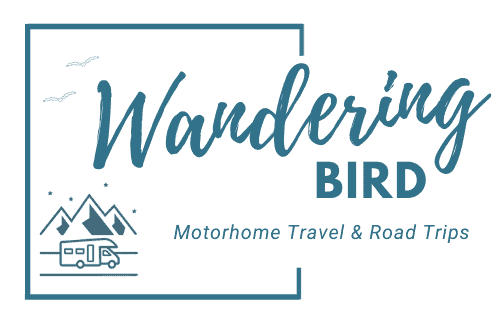
How to tour Europe in a Motorhome-the ULTIMATE guide
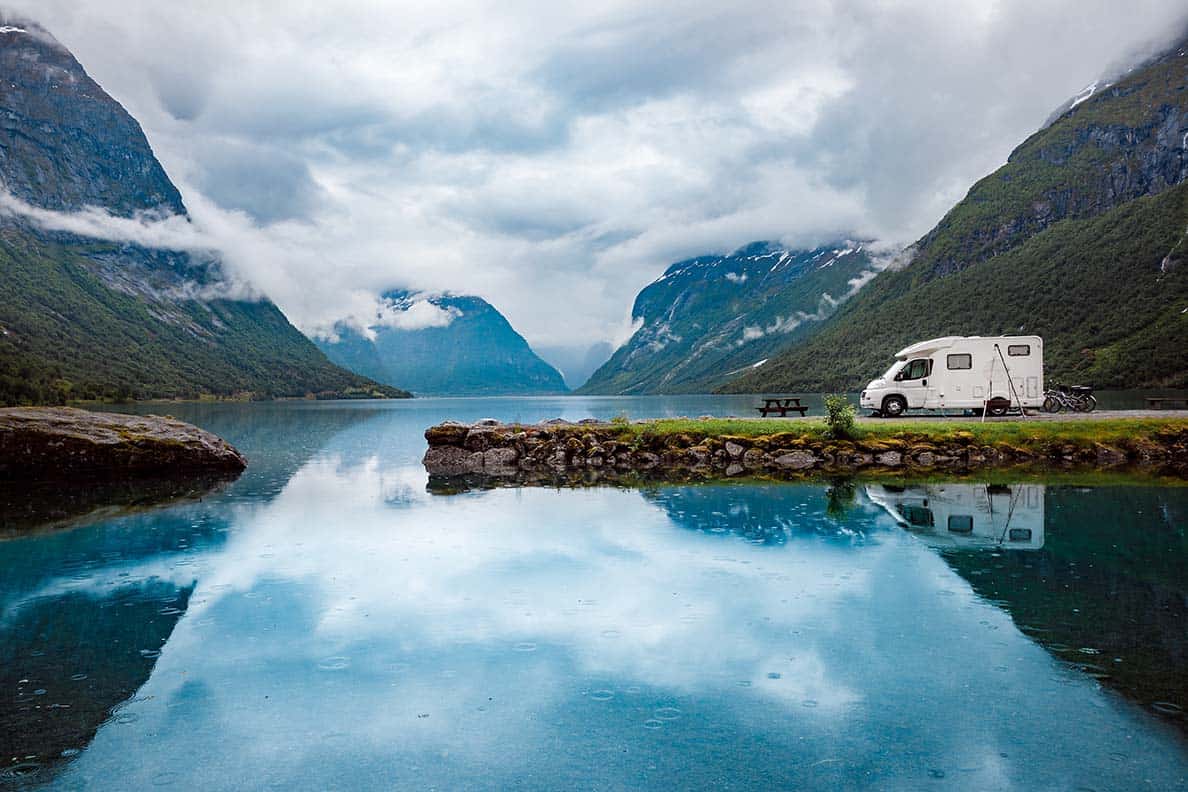
Want to tour Europe in a motorhome or campervan? Feeling a little overwhelmed and not sure where to start? Here’s everything you need, from what kit to pack, what paperwork you need to carry, how to prepare your van, European road trip itinerary ideas and tips for life on the road.
Don’t forget to grab your free Europe motorhoming checklist below.
*We work hard to make this the best motorhome travel blog and road trip website possible, full of helpful content for you. The website is supported by our readers, so if you buy through links on this site we may earn a commission- at no extra cost to you. All opinions remain our own .
If you find this post useful, you can also treat us to a coffee – we promise to enjoy it while creating more useful content like this- we might even indulge in a biscuit (or two!)
JUMP AHEAD TO...
Touring Europe in a motorhome blog- our story
I remember the first time we took our motorhome to Europe. There were SO MANY rules and things to pack and what the heck are aires and how do I book one and what route should we take and do we need…
To say I was daunted was an understatement. Everywhere I looked for advice had totally contradicting information. I spent the first few days of our Europe road trip feeling exhausted and terrified that I’d forgotten something vitally important.
If you’re also feeling intimidated by the idea of travelling Europe in a motorhome, camper van or even a caravan, don’t panic. Since that first trip, I quit my job so we could explore Europe by motorhome as often as possible (let’s just not talk about 2020…)
We’ve travelled nearly 60,000 miles and visited 17 countries. We have made many MANY mistakes… but we’ve also learnt a lot about vanlife in Europe and what NOT to do. And I’m going to share that with you today.
I promise- it’s not as scary as it feels right now.
Today I’ll walk you through the various steps you need to take to plan your own motorhome road trip to Europe and, hopefully, you’ll feel much more confident by the end of it.
Don’t forget to grab your free printable Europe motorhome travel checklist , which will help you remember everything you need.
Unsure what you need for your Europe road trip? Worried you’re missing something important?
Grab your FREE Europe Road trip Checklist NOW- everything you need: essential kit, paperwork and useful gear to take.
This form subscribes you (free!) to the Wandering Bird mailing list. We share tips, itineraries, and helpful guides like this for road trippers and motorhomers.
We never spam (yuck) and you can unsubscribe at any time.
How to Tour Europe in a Motorhome, campervan or RV – where to start
Let’s start with the basics. Before you can head off to Europe in a motorhome, you need a motorhome or camper van! You can either buy one or hire one and there are pros/ cons to both.
TOP TIP: If you’re planning a 3 month or more trip to Europe, definitely buy a motorhome- it will be MUCH cheaper. Here’s our complete motorhome buyer’s guide to choosing the camper for you.
If you don’t already own a motorhome and are considering getting one, hiring a motorhome or campervan for at least a weekend, preferably a week, is the perfect way to know if motorhome life is for you, before you spend a lot of money on one.
Also, if you are looking to buy a motorhome for the first time , hiring one is a great way to learn what layouts work for you, what you like and dislike and what you’re looking for in your own vehicle.
Having said that, we bought our first motorhome with no experience and no planning and set off to tour around Europe after only 15 days… So do whatever feels right for you.
Want to rent a vehicle for your road trip?
These might help:
- Discover incredible deals for motorhome/ camper rentals
- Find the best deals for car rental
READ: 10 essential questions to ask before you rent a motorhome
Motorhoming in Europe- 25 Essential things to know
Watch this video for 25 things you need to know about touring with a motorhome or campervan in Europe:
We hope you found the video useful. If you did, we’d love it if you followed us on Youtube . New videos with tips for motorhoming and campervanning in the UK and Europe are released weekly.
Motorhome Touring in Europe- where to stay?
Once you’ve got a vehicle to tour around Europe in, the next thing to consider is how do you want your trip to Europe to be and where are you going to camp/ park overnight?
- Do you want to stay at a campsite with pitches for motorhomes, campervans and caravans which has loads of facilities and activities for the kids to do?
- Would you prefer to wild camp in your motorhome and stay at a new place each night, far from crowds and cities?
- Do you want to use aires/ free overnight parking spots in Europe and stay 2/3 nights in a place before moving on?
Deciding the type of holiday you want to have will make planning your motorhome trip a lot easier. Here’s a bit more information about the types of motorhome parking available in Europe to help you decide.
Motorhome campsites in Europe
Campsites in Europe are very similar to ones in the UK; you arrive, are given or can select a pitch with or without electric (depending on what you booked) and that’s it. Often, you will need to provide ID when you arrive and some places even keep hold of your passport while you stay.
Campsites often have great facilities- like swimming pools or a beach on a lake, watersports, play area, restaurants, fresh bread delivery, shop etc. Dogs are normally always welcome, but there isn’t always a dog walk/ run where they are allowed off lead.

European motorhome travel in the school holidays- or not?
If you’re travelling in the school holidays, you’ll want to book up the campsite (if you’re using one) asap- the best ones get booked up months in advance.
If you’re NOT travelling during the school holidays, you might want to consider getting an ACSI camping card – you’ll save a lot of money on campsite charges.
Aires in Europe
For us, we prefer to travel around Europe in our motorhome and explore different places during our trips instead of staying in one area. We generally stay only one night in a place (unless we’re planning to ride the motorbikes, in which case we find somewhere for a few nights.)
There are two types of motorhome overnight parking options instead of campsites. The first are approved Motorhome parking places, which are called Aires in France , Stellplatz in Germany and Sostas if you’re campervanning in Italy . They’re all pretty much exactly the same!
Motorhome Parking Tips for Aires
You cannot pre-book Aires- they operate on a first-come basis. We found people tended to move on about 10-11am and most were parked up by 4pm, so try and move within that window for the best chance of finding a space. When we toured Italy, we left a little earlier (around 9ish) and aimed to be parked for lunchtime-ish, which we think helped us get in where we wanted without problems.
We like aires, as we feel happier leaving our motorhome if we want to go off an explore, and don’t want to deal with the noise or expense of a European campsite. We tow motorbikes behind our motorhome and love being able to use them without worrying if the van is ok.
You can find more on how to use aires and find motorhome parking around Europe here.
Wild camping with a motorhome or campervan in Europe
The other option for overnight motorhome stopovers in Europe is wild camping, which is staying somewhere that’s not an ‘approved’ place overnight and then moving on the next morning.
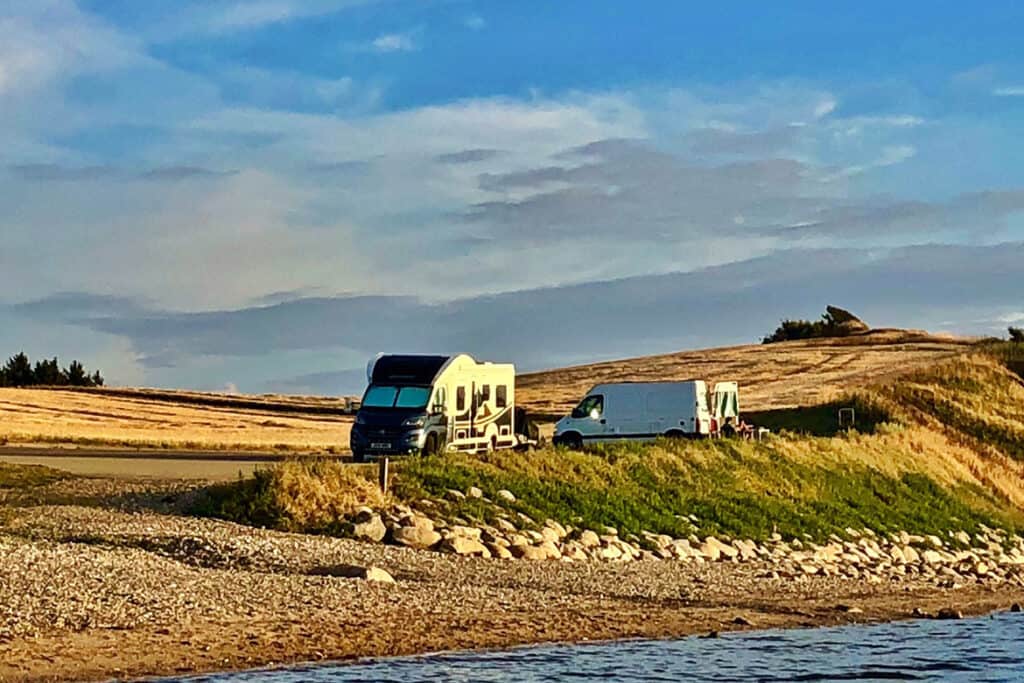
Rules for wild camping with a Motorhome in Europe
There are many different rules and different stories about motorhome wild camping across Europe. Wild camping is technically illegal in many countries, such as Switzerland – but we’ve stayed off-grid in our motorhome hundreds of times without any trouble at all. Heck, it was a night wild camping in the Alps in Switzerland in our motorhome which made us decide to change our lives and go motorhome travelling (almost!) full-time!
Wild camping in France in a motorhome or campervan is tolerated, as long as you’re not near the coast or in a restricted area. Find out more about motorhome wild camping in France.
My advice is to research the rules for the country you’re visiting, and then check out Park4night. Don’t park if it says ‘No Overnight Parking’. Also, always trust your gut. If you’re not sure and not happy, move on to an approved Motorhome stop point, so you can get a good nights sleep without worrying about being woken up for parking illegally.
You can find everything you need to know about how to wild camp with a motorhome or campervan here.
How to find free/ cheap Motorhome Parking spots in Europe
So, HOW do we find these overnight stopovers in vans in Europe? There are three apps we use. They’re all great but work in slightly different ways.
Park4night is what we mainly use when motorhome touring in Europe- and it is BRILLIANT. It’s both an app and a website- we tend to use the app most while travelling. There is a small annual fee but it’s well worth paying for.
This is how we use it:
- Drive to somewhere we want to explore- or a place en-route if we’ve got a long route planned.
- As we get closer, open up the app on my iPad or laptop (read more about getting internet in a motorhome )
- Put in the area you are heading for into Park4night and filter your options.
- Look at photos and comments to remove any with bad reviews, or which are too small for your motorhome to fit into.
- Check to make sure the place is open! A lot of places close between Oct- Apr.
- Then I tend to go on gut feel. I might have two or three options at this point but if I’m honest I’ll know which one of those three I like the idea of most, and that’s the one we head for first. If we get there and it’s full/ closed/ turned into a building site (has happened twice to us!!) then we have other options we can fall back on and we can head to those next.
We use Park4night as it tends to have the most options for places to stay in Europe. However, there are some other good choices too.
Planning to take your motorhome to Europe?
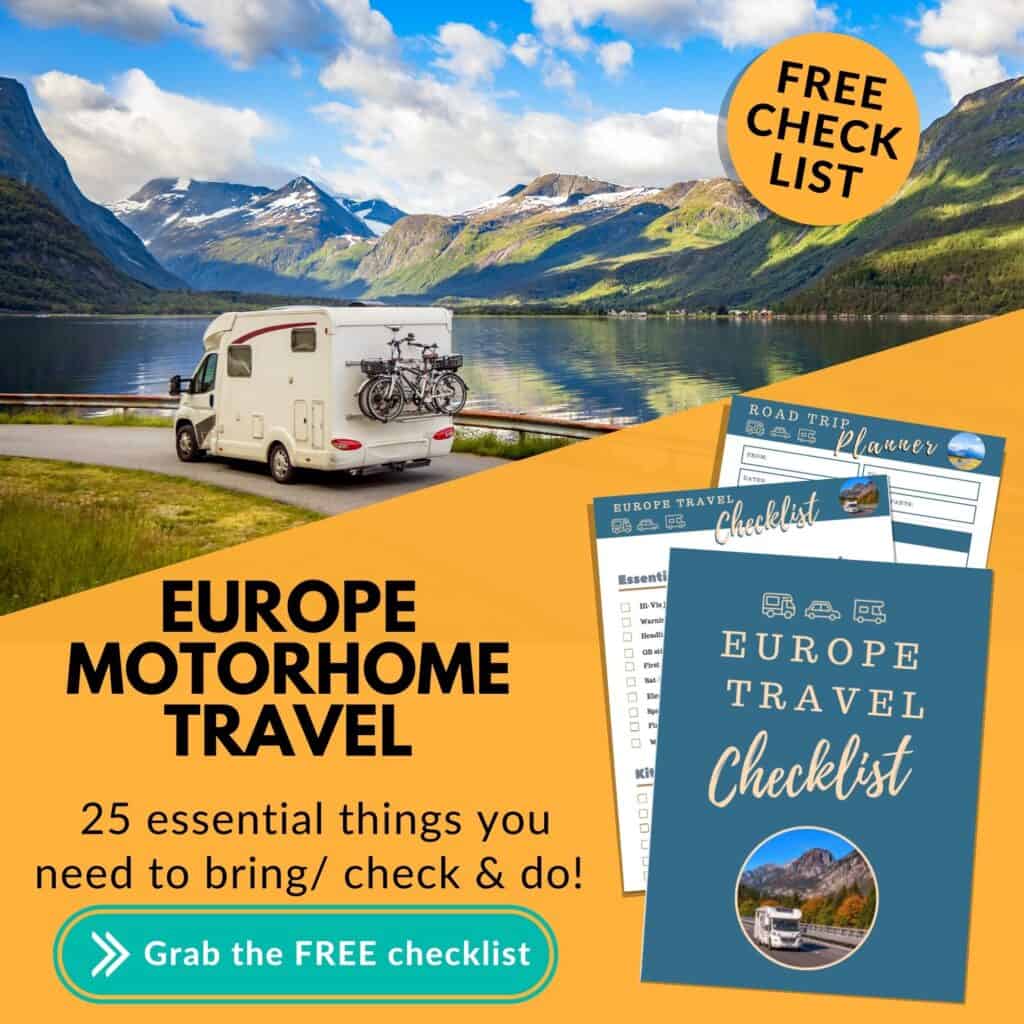
GUIDE: Stop the overwhelm with our step-by-step guide. Contains eBook, checklists and more. Complete Europe Motorhome Travel Toolkit
CHECKLIST: Don’t forget to grab your FREE Europe motorhome travel checklist HERE
GEAR – If you need any motorhome gear for touring Europe, here’s what we recommend.
Camper contact
Camper Contact works in a very similar way to Park4night, however, the BIG thing it offers which we love is you can remove all parking spaces which aren’t suitable for longer motorhomes. We love this feature when we are towing a trailer behind our motorhome and want to make absolutely sure it’s suitable for a longer vehicle.
Camper contact is free on the website but the app requires payment, which is another reason we prefer Park4night.
Searchforsites
Search for sites is another motorhome parking app but is better for in the UK. Again, it’s a really useful site and well worth checking as occasionally there are different places on here than on the other two. Pretty much all the reviews on here seem to be in English, which can help when you want to read what people thought!
Between the three of these motorhome parking apps, we’ve travelled around Europe without any problems. Once, in Italy in August, our preferred Aire was full, so we had to move on elsewhere and a few times the place we’ve been heading for no longer exists!
If you find out of date information, please take the time to update the app so other motorhomers don’t do the same thing. They are all great resources and, without them, motorhome road trips in Europe wouldn’t be nearly so easy.
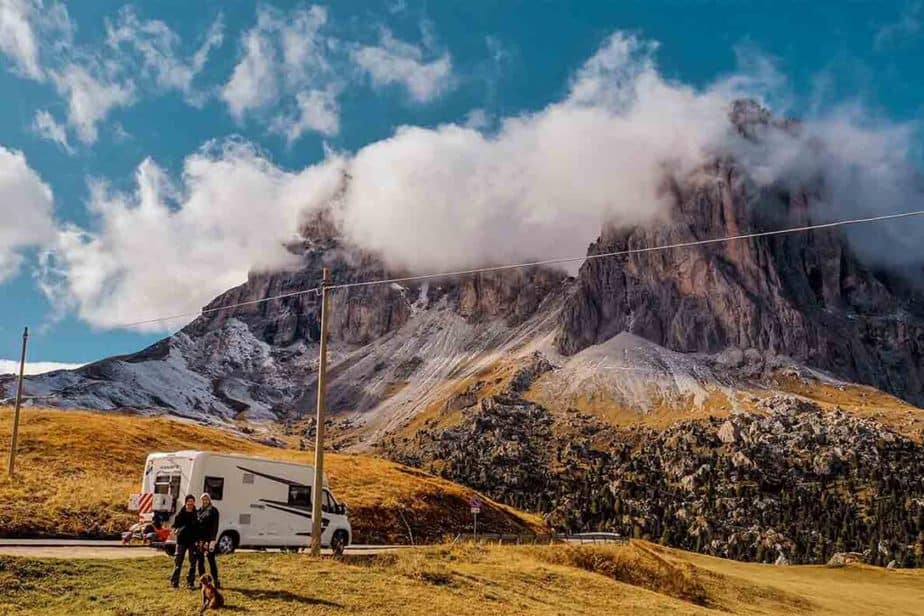
Other parking schemes in Europe
In Europe, there are several schemes similar to Britstops as a great source of free overnight parking stops for motorhomes. In France, France Passion is a similar set-up, and there are others around Europe.
You can find a list of all the motorhome overnight parking schemes and how to find them here.
Motorhome Route Planning for Europe trips
Once you’ve decided where you’re staying, you can start planning a motorhome route in Europe . Obviously, if you’re just travelling to one campsite and back again, then the route will be fairly straightforward.
However, if you’re planning to use aires or wild camping, then you can decide where you want to visit, what you want to see and if you’re going to be using toll roads or not.
One thing to note is that we rarely plan an actual road route until we’re driving. or just setting off for the day. I don’t plan the roads in advance- just the places we want to visit during our trip. Everything else I do as we travel. If we want to visit a specific aire or campsite, I’ll note that in our plan. You can grab our free road trip planner and use that to help you plan your route and things to do.
The other thing you’ll need to plan is how you’re going to get to Europe. If you’re in the UK, will you take the ferry or use Eurotunnel ? There are pros and cons of both but it’s worth deciding quickly so you can book in advance and hopefully save some money.
TOP TIP: If you want some ideas for where to visit, here are some of the best Europe road trip itineraries for motorhomes and campervans.
Tolls in Europe
Many people are concerned about tolls in Europe and like to plan their routes to avoid them. There are pros and cons to this. Tolls occur in nearly every European country which doesn’t insist on a vignette. If you’re motorhoming in Germany you can enjoy some free autobahns (same if you’re motorhoming in Holland .)
When you plan a route in a country without a vignette, you have two options:
- The quick way (which uses tolls roads when necessary)
- The cheap way (which doesn’t!)
There is no right answer- it’s whatever’s best for you. If you only have a week for your motorhome holiday , many people will want to get to their destination asap, which means using toll roads.
If you have more time, you may want to save money and take the slower, but usually prettier, back roads. Do whatever’s right for you.
If you want to get an idea on how much a toll route might cost, use the website https://www.viamichelin.com/
This site will tell you the approximate driving costs for your trip, both in fuel consumption and tolls. The fuel setting is annoying as you can’t select for a motorhome/ camper, although you can select the appropriate mpg, but the toll charges & vignette costs (as long as your motorhome is under 3.5 tonnes and 3m tall,) are very accurate.
Motorhoming in Europe- paperwork you need to carry
So, you’ve got a vehicle, a plan for overnight stays and the beginnings of a route. Now it’s time for the paperwork you need to carry, both for your motorhome/ campervan and also for you.
Nobody likes this bit, because it’s pretty boring, but it’s also essential. We’ve been stopped twice, both times in France and both times near the ferry at Caen. The police seem to love waiting there and pouncing on Motorhomers and campervanners who might have forgotten something.
In France, fines for speeding or incorrect paperwork must be paid in cash on the spot, or else you’ll be escorted to the nearest police station- not the most welcoming start to your holiday! However, if you have all the following, there’s nothing they can do except wish you a ‘bonne journee’ and see you on your merry way.
READ MORE: Essential advice for motorhome touring in France
Complete list of paperwork needed to tour Europe in a motorhome
Here are your next steps for paperwork and staying organised (don’t forget you can download our FREE Europe motorhome travel checklist to keep organised)
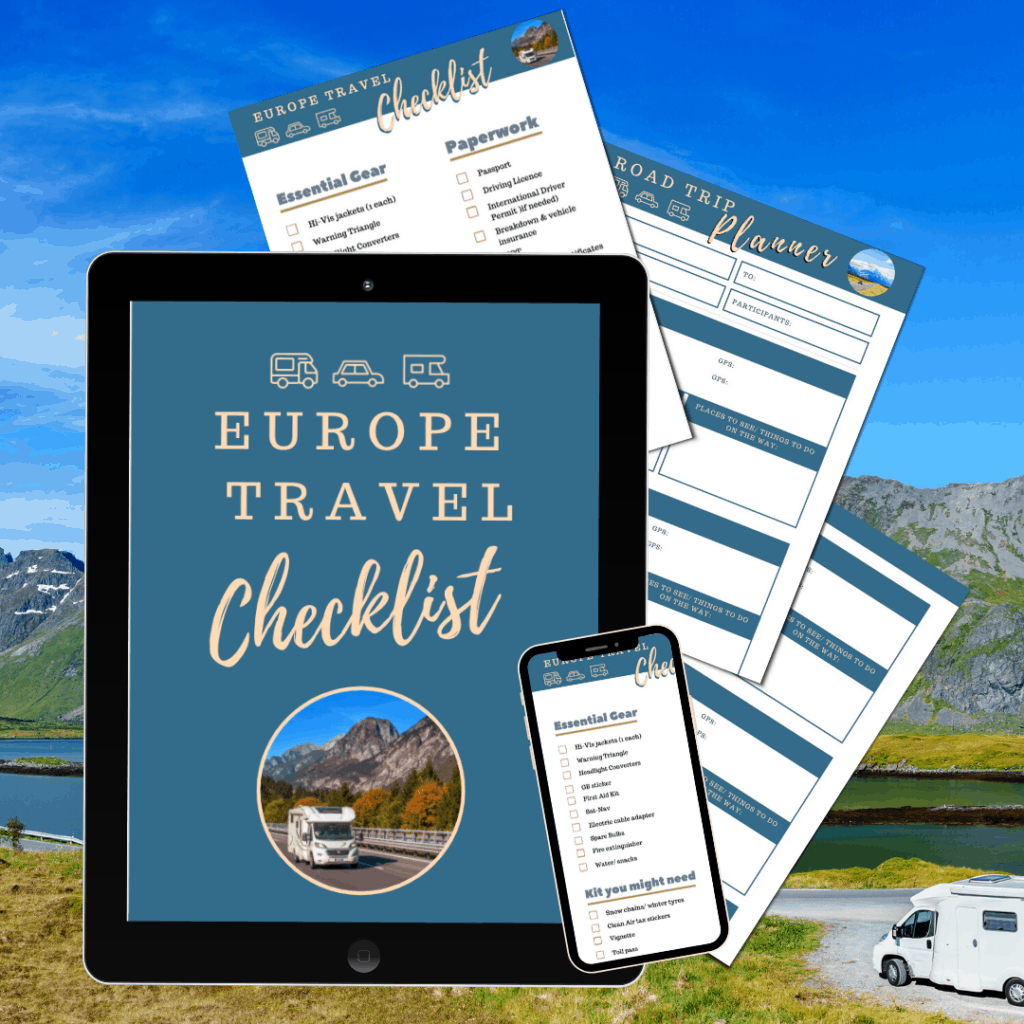
Want to head to Europe with your motorhome?
Grab your FREE (printable) checklist and discover 25 things you NEED to take with you when you travel in Europe. Make your life easier today.
- Make sure your passport is in date (with 6 months left)
- Make sure your motorhome insurance covers Europe travel
- Read the rules for driving in Europe after BREXIT
- Get a green card (if required- check with your insurer)
- Motorhome logbook (the REAL one- not a copy)
- If the vehicle is company-owned, hired or leased, you need a letter from the company stating their permission for the vehicle to go to Europe.
- MOT (date of)
- Driving licence- yes, your UK driving licence is legal in Europe but you might need an International Driving Permit .
- MOTs & logbooks for any other vehicles you are taking (like our motorbikes)
- Trailer EU certification if necessary
- Animal health certificate for pets (read about how to take a pet to Europe after BREXIT )
- Personal Travel insurance
- Drone Insurance (read our review of the best travel drones here)
- Put together an EPIC road trip playlist
- Do your last minute vehicle checks
- Details of ferry/ train bookings
- For larger motorhomes visiting France, you might need blind spot warning stickers
Motorhome Insurance
You need motorhome insurance which covers travel in Europe (and other places like Morocco if you’re planning to venture further afield). You also might want to get Breakdown cover which includes recovery to Home- just in case the worst happens. Bring your original certificate with you, not a photocopy.
Health Insurance
The rules for health cover for UK residents in Europe have changed after BREXIT. You now MUST have travel insurance. Make sure you read the conditions carefully- many ‘cheap’ policies don’t cover you for more than a week or two at a time, so if you’re planning on going away for longer you’ll need to find an appropriate insurer. Ideally, get repatriation cover to the UK- just in case.
Europe Motorhome Travel- Essential items you need to carry
Unlike in the UK, there are some things you legally NEED to carry in your motorhome, campervan or car when you’re touring Europe. These essentials Europe travel accessories include:
- UK vehicle sticker or UK on your reg plate- with the British flag, not an EU circle
- First aid kit – did you know it is illegal to NOT stop at an accident in France and many other places in Europe?
- Warning Triangle
- Hi-vis jacket which must be easily reached without leaving the vehicle (or getting off a motorbike!) We recommend carrying one per person, including for toddlers.
- Spare light bulbs for vehicle
- Headlight deflectors as our UK headlamps are pointing the ‘wrong way’ for European roads-
- Radar detectors are forbidden EVERYWHERE in Europe.
- Motorhome speed stickers for some vans
- NO- you do not need a breathalyser.
- You might also need a red/ white striped reflective board if you have bicycles or a motorhome storage box.

Useful kit for travelling Europe in a Motorhome or camper
Assuming your van is already packed with these essential motorhome accessories , there are a couple of things which will make your life easier when touring Europe in a camper.
Motorhome Wi-Fi
Is wifi in a motorhome an essential? For us it is- we work from the road, so we need a reliable way to contact the outside world (and upload blog posts like this!) Our life just wouldn’t work if we didn’t have a decent Internet connection.
For years, we had a wifi dongle in our motorhome and, quite seriously, it’s BRILLIANT. We’ve travelled all around Western Europe and it didn’t let us down once. Oh ok, it’s failed to get a signal just once and we were parked on the top of a mountain in the Swiss Alps at the time- I’m not sure I can blame it for that!!
We use data SIMS with Vodafone, 3 and EE and we find EE and 3 to have the best coverage across Europe. You can buy Prepaid SIM cards of data from Amazon ( like this one ) or take out a monthly contract (which is what we did)
More recently, we’ve installed this internet system in our van and it has been equally good, although we haven’t been able to travel much to really test it out.

Data Roaming in Europe
If you are travelling outside your home country, you need to make sure that data roaming is enabled on your phone AND that you have a plan which allows you to use data in other countries cheaply.
You will also need to know how to avoid paying high charges for data roaming in Europe.
Also, be aware that the data limit you have at home will probably NOT be the same as your allowance abroad- so be cautious with how much you use. It’s hard to track data usage, but things like using maps, watching TV in your motorhome , streaming videos or putting photos on Facebook can all use up a LOT of data very quickly.
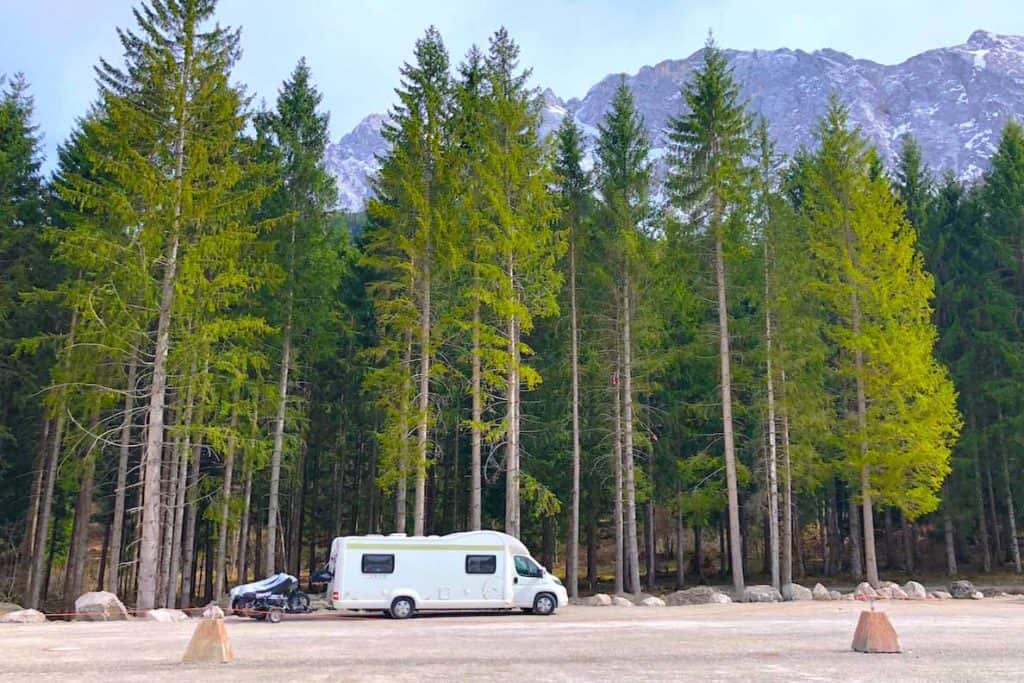
We highly recommend investing in a proper motorhome sat-nav before your start driving around Europe, especially if you have a larger motorhome, RV or campervan. You want something you can put your vehicle dimensions into and be able to avoid narrow roads, low bridges or weak crossings.
Here are some of the best motorhome and campervan sat-nav systems on the market- have a look and make sure you know how to use it before you set off.
Never, ever rely entirely on the sat-nav; keep an eye out for road signs and height restrictions as well. I also use my personal iPad or phone to find us an alternative route should we hit a traffic jam- both of those have ‘traffic’ setting enabled on them so we can see where the traffic is and how to get around it.
I often end up navigating our motorhome down tiny country lanes in the middle of nowhere- after all, it’s not a proper adventure unless there’s grass growing in the middle of the road!
Also, be careful where you mount your sat nav, especially if you’re using an ipad. Many countries now say it’s illegal to have the satnav mounted on the windscreen or blocking the driver’s view. We use this mount and mount our iPad on our dashboard, where it’s low enough to not cause any problems.

Campervanning in Europe – POWER!!!!
One of the joys of touring Europe in a Motorhome is the freedom that you can find on the continent which you just can’t get in the UK. Being able to stay off-grid in our van gives us that freedom. But, in order to do that, we need to manage our motorhome power requirements.
The solution to this is an inverter (and possibly a power pack, depending on how power-hungry you are!) We are VERY power hungry- we have two laptops, two iPads and 4 phones! ( Don’t ask!! Yes, I know there are only 2 of us!!)
We charge as much as we possibly can whilst we are driving the motorhome, including the laptops. We do this by running the invertor as we drive. The inverter is connected directly to the motorhome leisure battery and then we added a 2-plug extension lead, which allows us to charge our laptops on a drive, saving our precious battery power while we’re camped.
We fitted and love this inverter but there are many other options out there if you need a different size/ power output.

I didn’t want a generator on our motorhome . I didn’t want to be THAT van with the generator going all evening, ruining everyone else’s peace and quiet. But, as my husband said, if we’re going to camp in the middle of nowhere for days at a time, we need an alternative power source ‘just in case’.
We’ve agreed that we will NEVER use it except in an emergency or for servicing, and we did a lot of research to find the best one for us in terms of noise levels and size. I have to say we’re really pleased with this one . It’s small enough to fit in a tiny cupboard under our seats and I can lift it with one hand.
We’ve used it several times of the past couple of years, including while touring Norway and Austria. We’re really impressed at how quiet it is and how well it works even after months of not being started!

12v Hairdryer
Whilst we’re on the subject of power, both Jade (our daughter) and I have long hair. We love letting it air dry on hot summer days, but if we’re motorhoming in winter it’s essential for us to have a hairdryer.
RELATED: Planning winter motorhome living or a trip? Read this first…
Believe it or not, we actually carry TWO hairdryers onboard (much to my husband’s ‘delight’…)
One is a good, powerful but lowish wattage one we use when we have electric hookup, and the other is a 12v one , which plugs into a cigarette lighter socket in the cab. Honestly, it’s not the best hairdryer we’ve ever tried, but better than nothing on a cold winter’s day.
Alternatively, a rechargeable hairdryer .

Solar Panel
We do have a solar panel onboard our motorhome- we believe it’s an essential motorhome wild camping accessory. It keeps the battery topped up whilst we’re camping and allows us to stay off-grid for a little while longer- at least if it’s sunny!
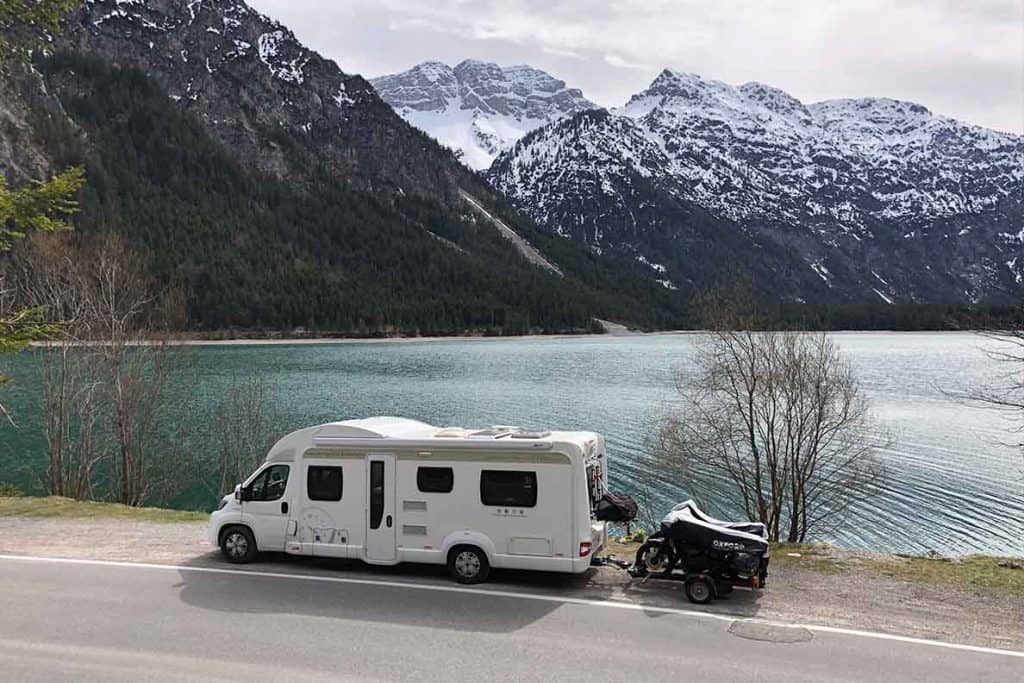
One of our very first motorhome trips to Europe almost ended after 2 days due to…err… gas. Or rather, a lack of it and an inability to get any more! There are some important lessons we learned and things you need to know about how to find LPG (gas) in Europe .
To combat that ever happening again (we hope!!) , we fitted Gaslow refillable bottles . These went easily into our existing motorhome gas locker and we were able to fit them ourselves. We used them for the first time last week and we’re really happy with them. Filling took a little while to figure out- turns out you need to TWIST the nozzle clockwise, but so far, so good! We’ve now had these installed for a year and wouldn’t switch back- refillable gas is SO MUCH cheaper and easier while travelling Europe in a motorhome.
Motorhome Touring in Europe – Other items which might be useful
ACSI is a scheme you can buy a membership to (like a motorhome club ), which then gives you massive discounts on campsites for motorhomes, campervans, RVs and Caravans- as long as you travel outside the peak seasons.
We LOVE our European toll pass. It’s sooooooo satisfying being able to sweep past all the huge queues at some of the tolls and go through the automated toll pass lane in France. It also works if you’re motorhome touring in Spain & Portugal. The best bit for us is not having to worry to find the change at each toll- it just sends you a bill at the end of the month which is paid automatically by Direct Debit so its one less thing we need to worry about!
We bought ours at Sanef Tolling, although they have now changed their name to Emovis-tag.
Tyres & Snow chains
If you are planning to go motorhome skiing or tour Europe in a motorhome in the Winter, think about your tyres and snow chains . It’s compulsory in most countries with Mountains (France, Germany etc) to have winter tyres fitted and to carry snow chains which will fit onto your tyres. This is usually enforced between 01 November and 15 April. This list by the AA gives a great guide for you.
Red and White reflective warning backboard for motorhomes/ campers
If you have anything extending past the back of your motorhome/ camper (like a bike rack or a tow bar), you MUST have a red and white striped backboard on the back. Make sure it’s the aluminium one, not the cheap version- the cheap version is not legal in Italy.

Travelling Europe in a Motorhome or campervan- Safety
Here are some important things to know about travelling in Europe
Emergencies
112 can be dialled anywhere in Europe in an emergency, accident or distress situation.
Security and theft
We have several things we do to protect our vehicle and our possessions whilst we’re travelling. We also have several things we do to safeguard ourselves if we’re back in the UK preparing for our next trip. Be sure to grab our FREE guide to motorhome security.
We have been lucky to have never been the target of theft, but it does happen. Most thefts are opportunistic- if you leave something outside unattended there’s a chance it will be taken- just like in the UK. Also, if you park in busy, built-up areas, there is more chance of ‘unsavoury types’ spotting the van and taking their chances- just like in the UK.
We strongly believe that touring Europe in your motorhome is no more dangerous than touring in the UK, but common sense should be used. We’ve chosen to fit an additional motorhome door lock which can be locked from both the outside and the inside.
Try and get your Euros in advance as you’ll get a better rate than if you use the ferry/ tunnel. You can get money out of cash machines abroad- but, of course, there are charges for that.
Also, don’t forget that not every country in Europe uses Euros . Here are some popular ones which might catch you out!
- Bulgaria – Lev
- Croatia – Kuna
- Czech Republic – Kurona
- Denmark – Krone
- Hungary – Forint
- Norway- Krone ( See how expensive our trip to Norway was !)
- Poland – Zloty
- Romania – Leu
- Switzerland – Swiss Franc
There are others in the East as well- make sure you check in advance- but nearly everywhere has a cash machine so you can always get money out if you need to.
We think it’s sensible to carry a spare set of keys for the motorhome with us. We hope we will never need them, but a spare set is going to be completely useless sitting back in the UK. So we decided to bring them with us and keep them well out of the way.
Make sure you’re carrying enough Medication for you and any pets you have. We always carry a little more than necessary- just in case! Be prepared to explain your medication and prove what it is with a doctor’s note or something similar- just in case customs question you.
Mobile Phones
Using a phone whilst driving is illegal in many countries. It is also illegal in some countries (such as France) to use a headset with an earbud whilst driving. Your phone must be completely hands-free.
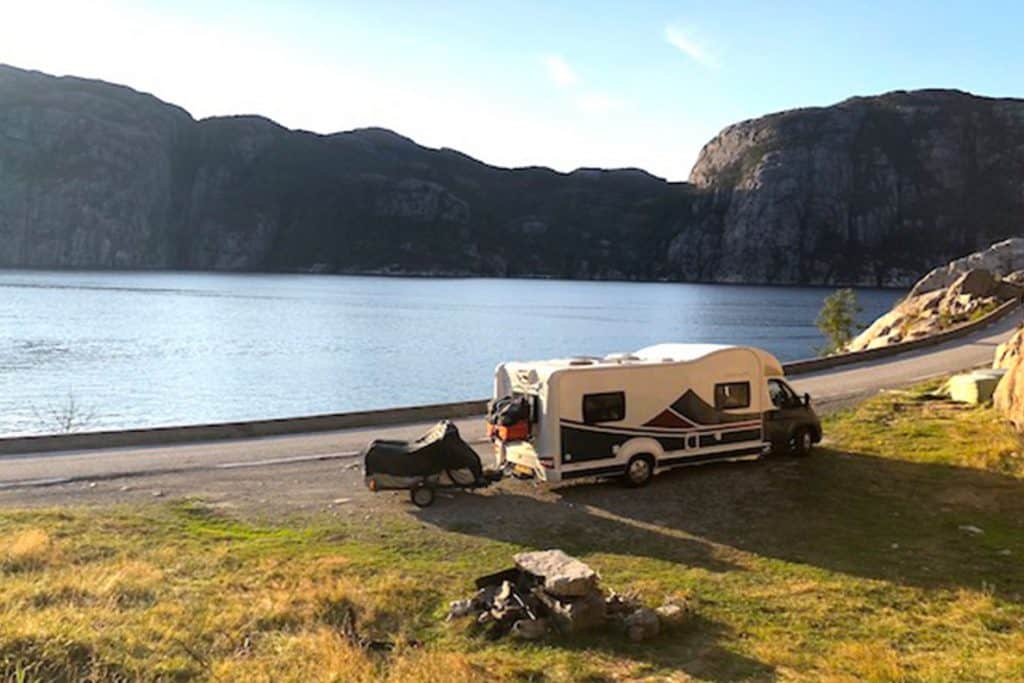
Driving in Europe- what to do in the event of a road traffic accident
You should have a European Claim Form provided by your insurer before you leave. In the event of an accident, all parties complete and sign the form at the scene and then send a copy to your insurer for assessment.
What to do at the scene:
- Stop your vehicle immediately but safely- out of the flow of traffic if possible.
- If a vehicle is blocking the road, use hazard lights and put the red warning triangle 30 metres from the scene to warn approaching traffic
- Name and address of all the people involved in the accident
- Vehicle registration numbers of all parties
- Insurance company details of all parties
- Take photos of damage using a camera, GoPro or phone
For more details, read our step-by-step guide on dealing with a road traffic accident in Europe
Motorhoming in Europe- Other Things to know
Sidelights must be switched on in the following countries at ALL times: Croatia , Denmark, Italy, Norway, Sweden & Switzerland
Daytime lights MUST be switched on for Motorbikes at ALL times in all conditions in ALL countries. Ours are wired so they automatically come on with the engine- saves us forgetting!
On-the-spot fines are common in all countries, although if you’re campervanning in Ireland the Police are not authorised to collect fines. Some places, like Croatia, give you 8 days to pay. Other places, such as if you go touring in Portugal , equip their police officers with an ATM to ensure fines are paid immediately!!
Be careful of low-emission zones and areas which require a congestion charge or something similar, such as Paris and London. These places are often clearly signed but it can be worth Googling requirements before you visit an area. Also, don’t forget you need a Vignette for Motorways/ toll roads in Switzerland and Austria. For a complete list of rules in each country, here’s the AA.
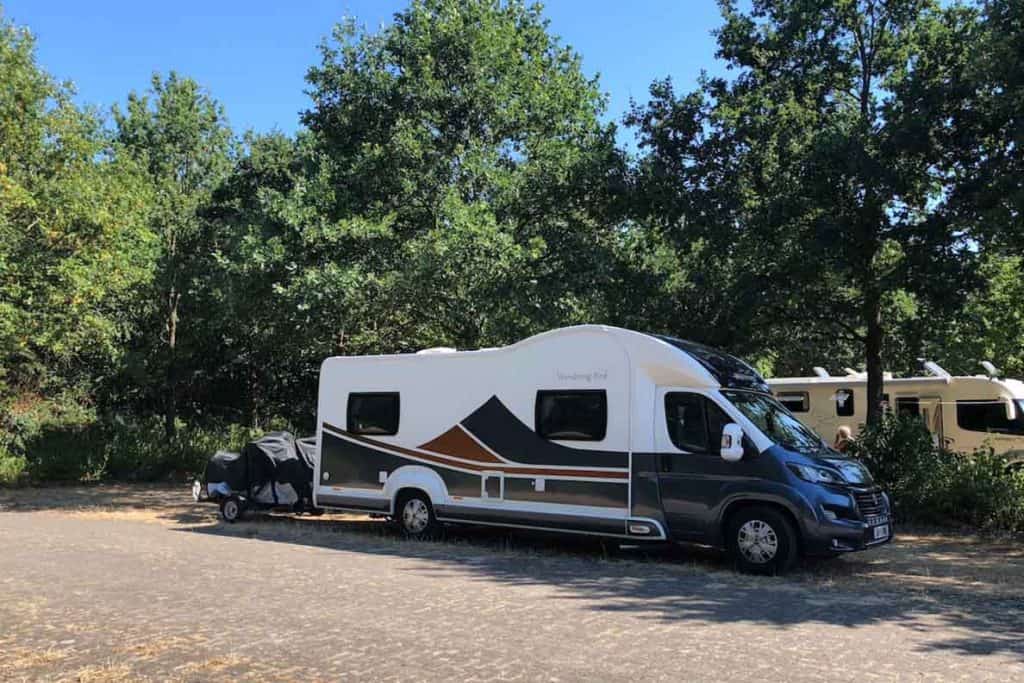
Touring Europe in a Motorhome – Final thoughts
Phew!!! There is a LOT of information in this post- and at first glance it can be overwhelming. None of it is ‘difficult’, but it will take up a bit of your time as you get it all organised. Here are some final tips to help you make the most of your big adventure!!
- Driving on the right is not as terrifying as it seems! Don’t forget- all the roads are set up for it- you don’t have to remember to go around the roundabout the wrong way- it naturally happens as that’s the way the road system works.
- Learn a little of the language. In France, Germany, Belgium and Holland, English is widely spoken, but they love it if you make an effort. After al, you are in their country and if you show a little respect to them they will really help you when you need it.
- Accept that you are a tourist- you will make mistakes and probably look like an idiot. But that’s part of the fun of travelling!
- Learn to ‘slow travel’- travelling by van is about the journey as much as the destination . This can be hard when you’re on a tight schedule, but try not to overbook your time so much that you can’t relax a little or explore random things that you find along the way- like an ice cave we randomly found in France…??!!
- Having said that, do a little research as you travel so you don’t miss some amazing places. We like to pick an area and then Google it to see what great adventures are waiting for us.
New to motorhome or camper travel in Europe? You might find these posts helpful:
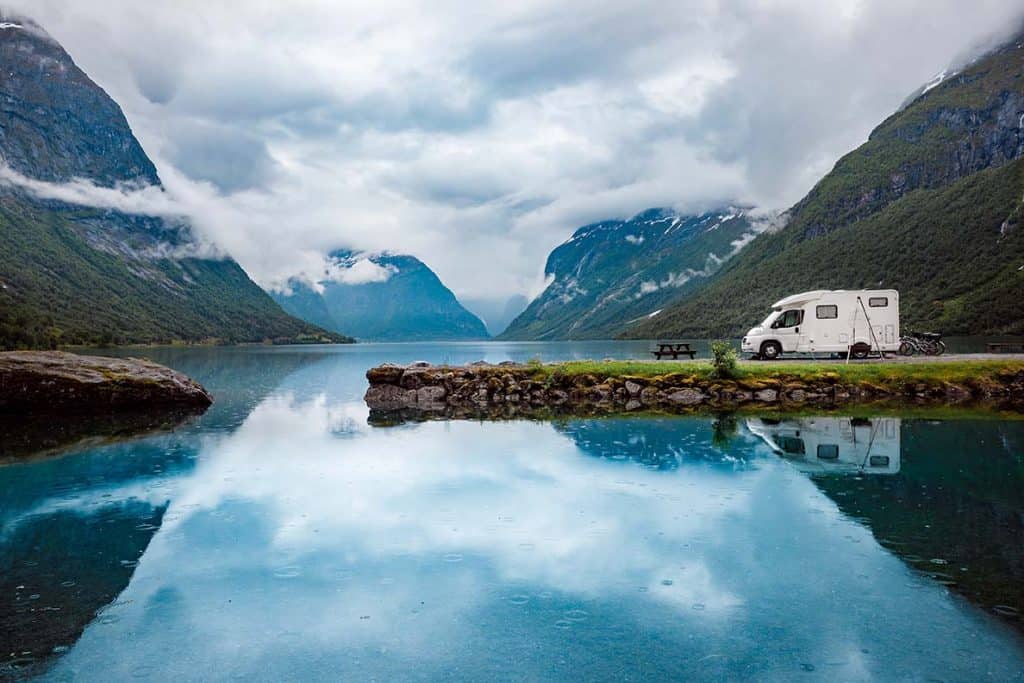
See all our Europe motorhoming posts here
NEED GEAR? If you need any kit or essentials for motorhoming in Europe, here’s what we recommend and where to find it
I hope you have the BEST adventures- be sure to tag me in your posts and show me where you end up! Let me know what you think of the guide in the comments below- I’d love to hear your thoughts.
Want to save this list for later? Here’s the pin. Enjoyed this post? We’d love it if you shared it on Facebook, Twitter or Pinterest. Thank you!
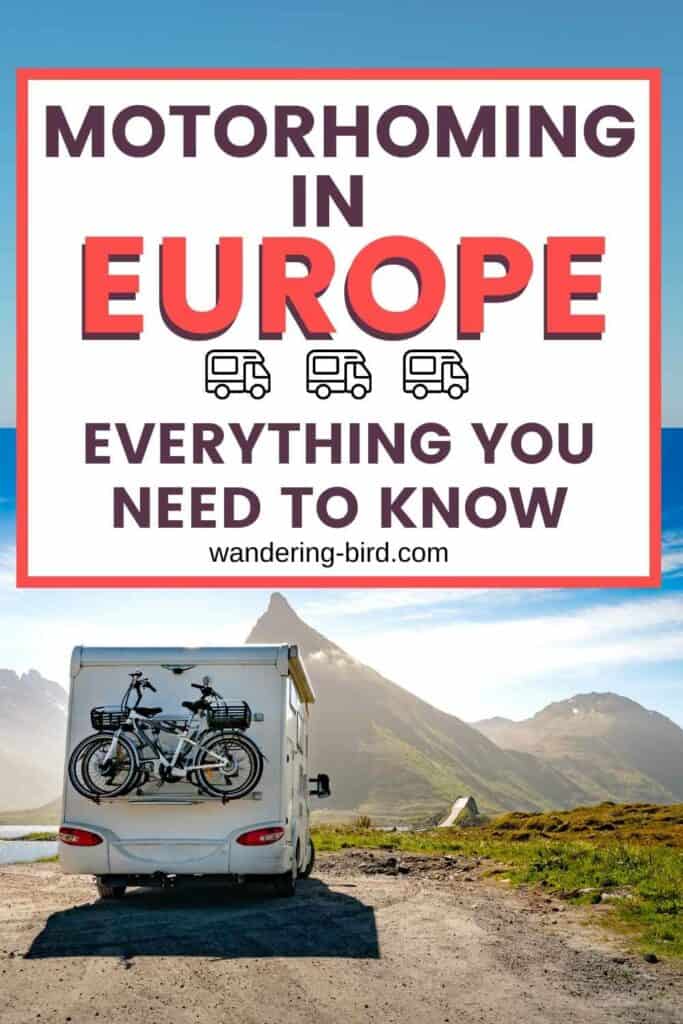
Kat never planned to buy a motorhome. She also never planned to quit her job as an air traffic controller, go touring around Europe in said motorhome, start one of the UK’s largest motorhome travel websites… or get a cocker spaniel.
Find out how she went from stuck in the rat race to being a digital nomad and inspiring thousands of people to have their own epic adventures here.
If you’d like to connect with Kat, send her an email or follow her adventures on social media.
Last update on 2024-04-20 / Affiliate links / Images from Amazon Product Advertising API
Sharing is caring!
Similar Posts
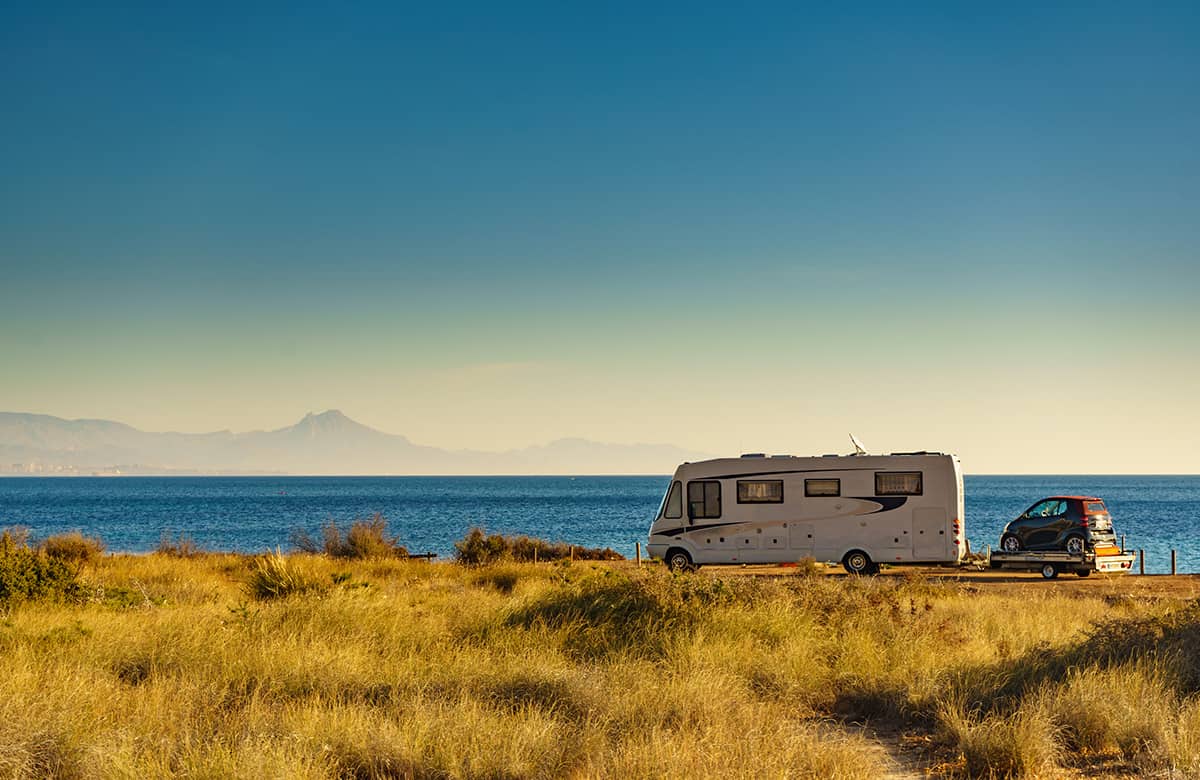
Summer Van Life: 21 tricks to keep your camper cool
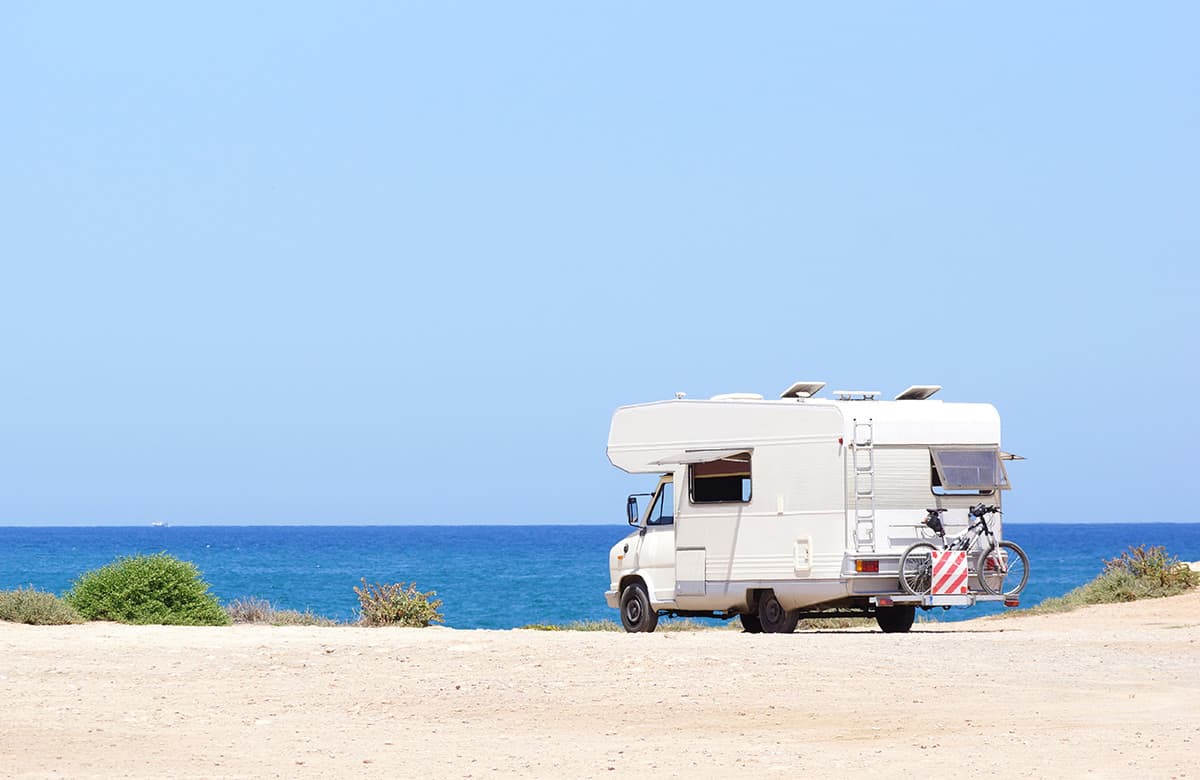
Motorhoming & Campervanning in Portugal- Ultimate Guide
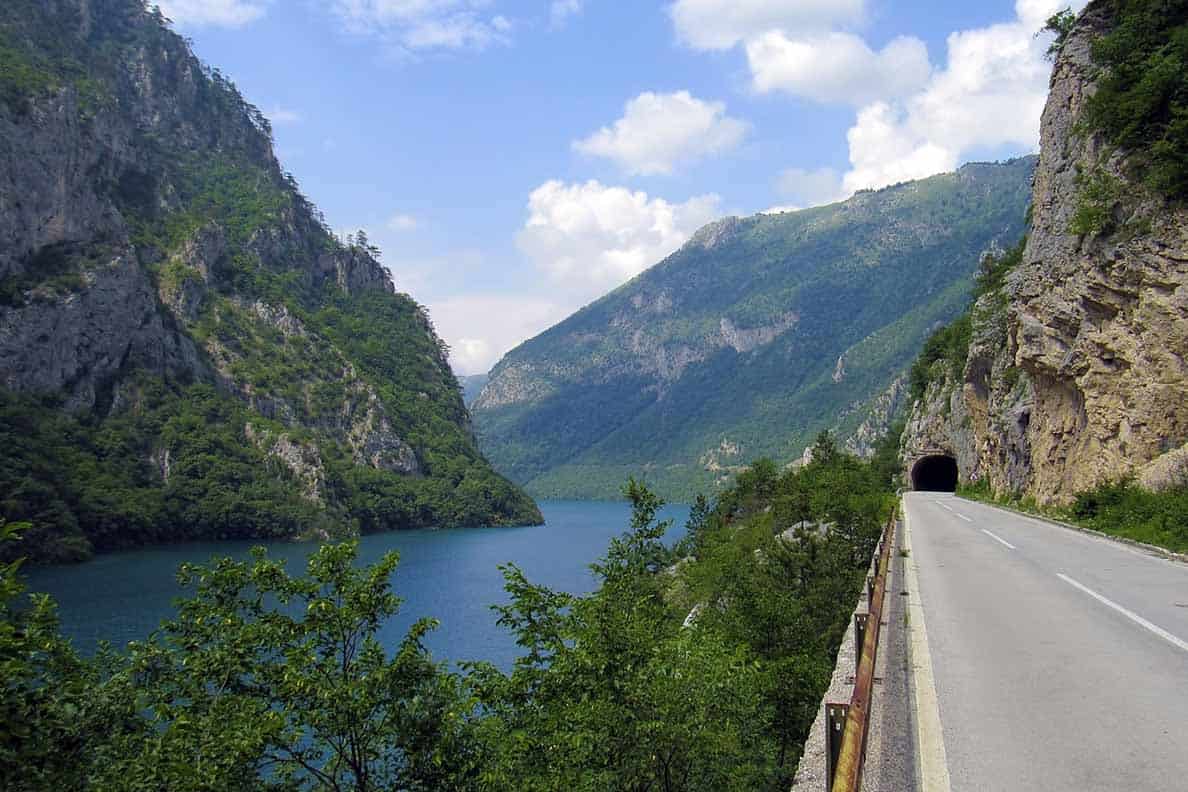
Driving the Longest Road Tunnel in the world!
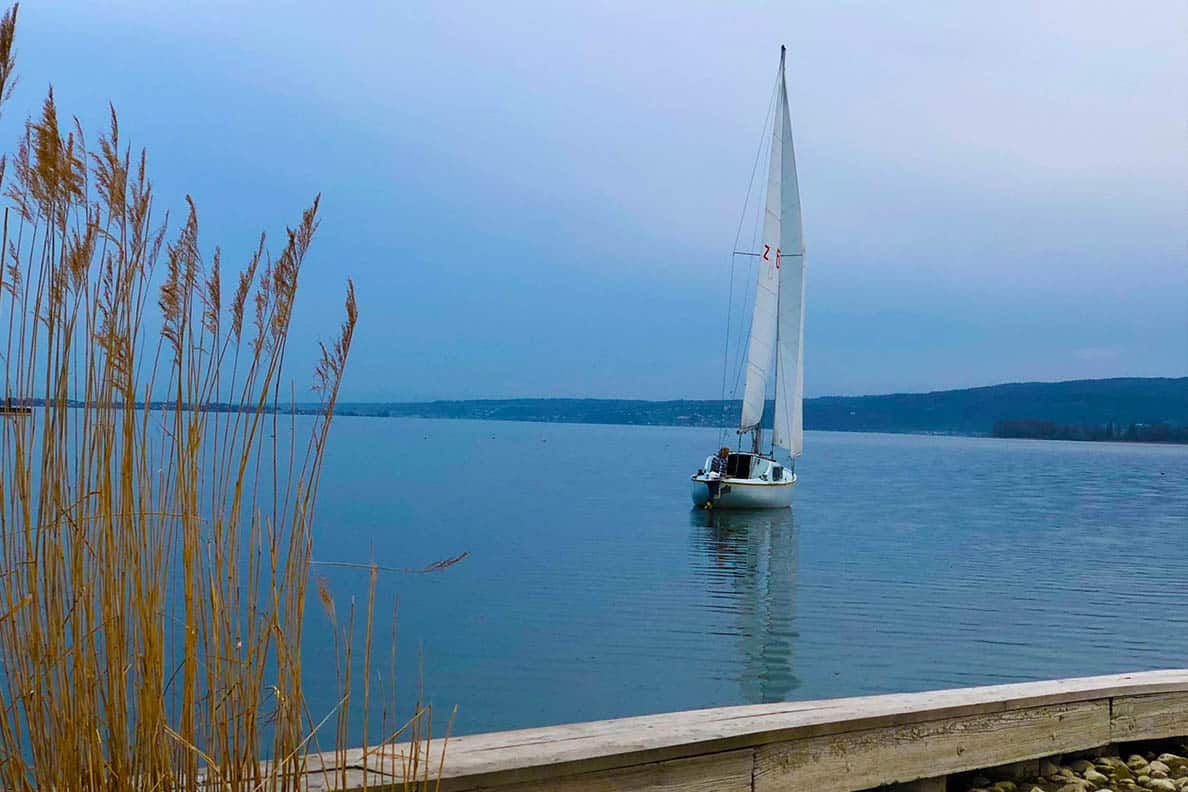
Lake Constance
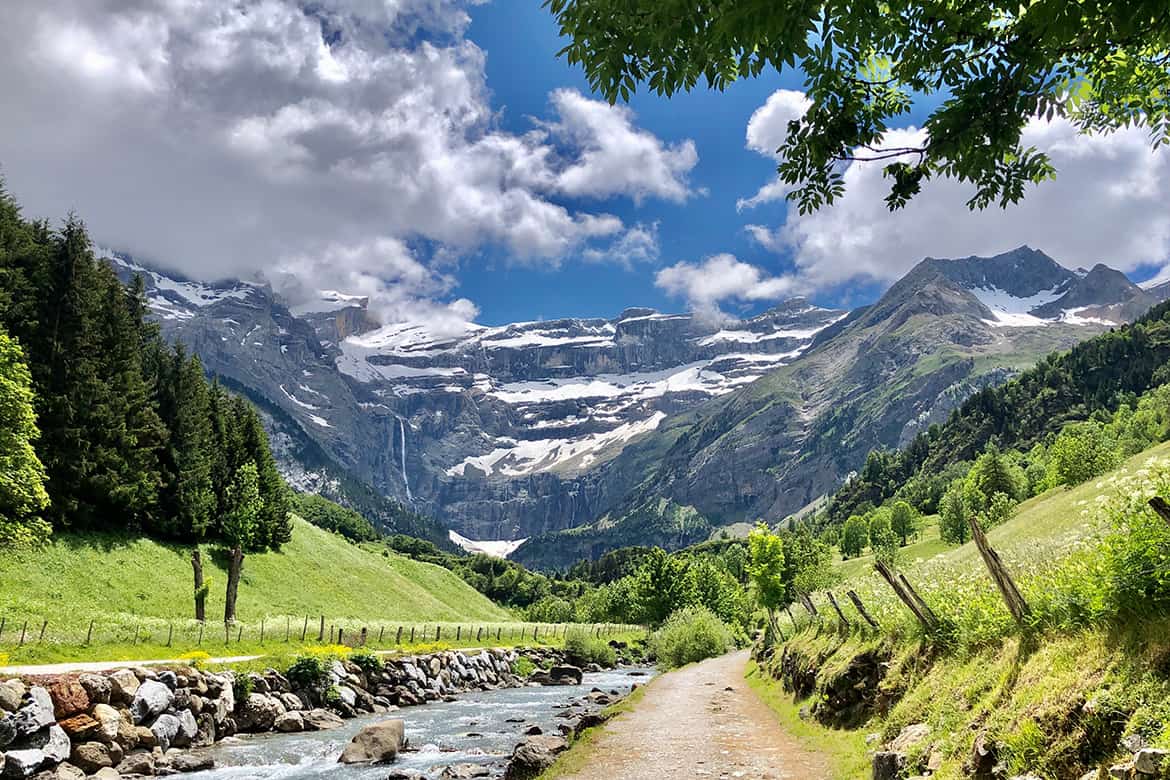
Cirque De Gavarnie- 10 things you need to know (with map!)
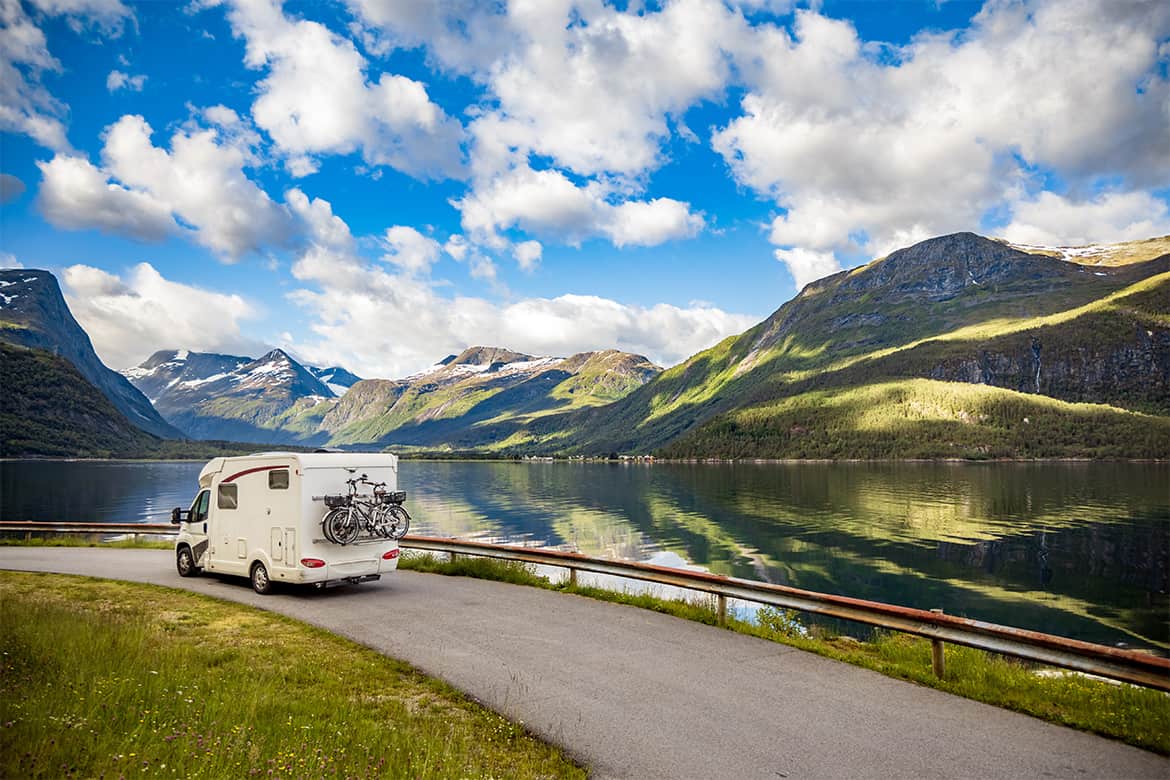
50 fun & practical Motorhome Books (you won’t want to put down)
55 comments.
Lots of great info there. Thank you. 🙂
You’re very welcome! Hope it helps with your upcoming adventures!!
This is fatastic Kat and very timely. We are travelling in September to France & Switzerland in a hired van (before we buy our own yipeeee) so we were just starting to get our heads around all the planning. This is perfect as you have done all the work for us, so thank you so much for that. You are a star 🙂 x
Great information – thanks! When you were wild/free camping, did people have much camping stuff out in the off-season? As we’re going to be in a fifth wheel it’ll be a bit cramped if we can’t push a slide or two out!
People happily sit outside and enjoy a campfire and dinner, but don’t get awnings and things out when they’re wild camping. Those places are more designed to be a one night stop. I think you’ll be fine with the slides, though I admit we haven’t seen any fifth wheels on our travels- you’ll probably have loads of people wanting to come and have a look inside!! 🙂 I think as long as it looks like you’re not planning to stop for a week, you’ll be fine. Of course, if you end up somewhere really remote,you won’t have a problem as no one will see!!
Yes, we’re basically hoping that in the off-season it’ll be quiet enough to pop the slides out and the support legs down. We’re thinking that keeping the truck attached will make us a bit more ‘ready to go’ should the need arise on the aires – though as you say, if we’re somewhere remote and out the way we might stay a bit longer 🙂
Thank you for sharing this journey with us! We would love to pack up and head off in an RV but were hesitant with (coming up) teenage children – I can’t wait to follow your journey and see how you go 🙂
Hi Ange- thanks so much for reading and commenting. Honestly, if I had my time again I’d take my daughter out of school at 12/13 or maybe even a few years younger and travel with her- I think it’s such an amazing way for them to learn and grow. Hope you enjoying following our travels. 🙂
We are from Port Elizabeth, South Africa. My family (me, wife two kids 11, 9) will be hiring a camper for 20 days in December in Munich and plan to drive the black forest route and down to Rome via Switzerland and back to Munich. Do you have any experience of the cold in that time and how hired campers hold up? Will we find sites open that time of the year and do you know if there will be any exciting activities for the kids, with exception of viewing architecture and views? Any other advice?
Thanks for the awesome info!
What an exciting adventure you have planned! Funnily enough, we’re going to Munich in December too! 🙂 As you probably guessed, your experience is going to completely depend on the weather and how much snow has fallen so far. You will DEFINITELY need a camper with heating, so make sure your rental has that fitted (you’d be surprised how many don’t!) You will also need snow tyres/ snow chains- even if it hasn’t snowed. This should be provided- but please check. Also, do you know that most hire campers don’t come with bed linen/ towels and sometimes not even pots & pans? It depends entirely on your rental company of course, but it’s something to check.
If it’s a relatively modern camper with heating, you should be just fine in the cold. You are right that many campsites shut, but if you check out the sites I listed, you’ll be able to find the ones which stay open. Regarding activities for kids, it depends what kind of things they like. Our daughter is quite happy sitting in the van, listening to her music and watching the world go by. There will be plenty of walks- just be careful with the weather. Also, places like swimming pools, leisure centres and bowling alleys will all still be open, as will most theme parks- but please check in advance. You might find many roads in the mountains have been shut but there should always be an alternative route which is open. Hope that helps! Have a great time. 🙂
So just a report back. We didn’t see you In Germany but what an adventure we had. Munich, Black Forest, rhine falls, Lucerne, Italy all the way to Rome and back up to Venice, finishing in Rome. 3300km.
Your advice re the heating was spot on. I can recommend Indie Campers to your readers. They were amazing and friendly. The episode on the parking apps was a game changer. We used Park4night- amazing for piece-of-mind.
Come tour South Africa! It’s great here. It’ll blow your mind!
Keep on camping!
Peter, Susan and kids
AMAZING! Thank you so much for giving me an update- it’s so fun to hear it’s all gone well. So glad you had a great experience. We would LOVE to tour South Africa- what’s the best time to visit to see big cats (a dream of mine!) Take care x
No real best time, they are always around but June, July, August is great for Kruger Park (dry season) which is a must do. It’s a huge reserve which requires at least a week or two to properly see. There are many many sanctuaries though, where they have rescued cats and cubs (cheetahs and lions). Good opportunity to cuddle little hand-reared cubs. If you go camper vanning here, and you have the time, I would begin and end in Cape Town.
Our Neigbours also offer a lot in spectacular views and wildlife. Namibia ?? , Botswana ?? , Zimbabwe ??, Mozambique ?? , not to mention the kingdoms of Lesotho ?? (incorporating the beautiful Drakensburg mountains) and Swaziland ??
We live in Port Elizabeth which has amazing beaches and lovely world class private game reserves and is the gateway to the garden route which takes you back to Cape Town.
I’m presently researching camper hire beacause I haven’t even seen a lot of what I’ve just described to you. I imagine a full round trip would require between 6000 and 10000 km so not for the faint hearted. We drive on the lefthand side (previously a British colony). Van Hire options seem limited (bobocampers, and Maui seem the best) and strangely more expensive than Europe.
If we do take on the endeavor, I’ll let you know.
Great info, thanks for the effort. Lots of details still for us to consider and heating has now become an important one for me.
I assumed the dashboard heater was the only one available and would require you to be driving or idling. What kind of heating is generally available which I should insist upon? Like fuel pellets or gas?…or electric heater to use when plugged in?
Most motorhomes have gas heating and this is preferable if possible. If you have electric heating you won’t be able to use it unless you are plugged in at a campsite- and not all campsites with electric will be open at that time of year. The dashboard heating at the front won’t be enough to heat the back so the kids will freeze- and it will be COLD in December. Like, really cold. I assume the rental company has modern (ish) vans, so they should all have heating throughout. Make sure you have the appropriate attachments to be able to refill with gas in the various countries you are going to- each country in Europe seems to need a different attachment!!
last week i make a tour of europe and get guideline throgh this channel. that is best way. so here i will recommend to others also that before travel please read this article.
Thank you Bella- I’m so pleased to have helped you! How did you enjoy your tour??
Thanks for this Kat – we are traveling from Paris to Rome in October. Our family (2 adults and 2 children who will be 8 and nearly 7) are flying in from Australia and renting a van from Indie campers. We want to stay at the cheaper aires in both France and Italy but we will need power/water, as the van only has 50L of water in it, and we’ll have our iPads and phones to charge and no inverter as we are traveling from overseas, is this possible? Can you suggest in particular?
Hi Heather- that sounds fun! You’ll find many aires/ sostas have fresh water available. Also, you can always pull into one during the day to refill, then drive off again. If you’re careful, 50L might last a couple of days- you may want to buy bottled water to drink. You should be able to pick up a cheap 12v phone/ipad charger- maybe from a garage or hardware shop- this should allow you to charge phones etc as you drive- leaving you free to camp wherever you like! Hope that helps!
Hi, just a brilliant article for all all first timers. You covered everything that one needs to be aware of and I’m extremely grateful. Thank you. One thing though, what is the ‘approximate’ cost of taking this trip? I maybe missed this, so apologies if this was the case. Best of wishes and happy trails for 2019.
Hi Amanda- I’m glad you found the post useful. Costs are difficult to predict as they can include/ not include a variety of things. I broke down our costing for a 2-week trip here- https://wandering-bird.com/cost-tour-europe-motorhome/ which you might find useful. 🙂
Great blog… we plan to travel with 4 young kids for a year around Europe but scared we need a biig vehicle and don’t think it would take well to the roads in Europe
Do you have any experience with American style winnebagos over 8m in length and if we could still get around without too much trouble?
Hi Devon. I don’t have any personal experience with Winnebagos but we have seen a few whilst touring. You’ll need to be very careful where you stop. Length isn’t an issue (we’re over 9m with our trailer), but width might be a problem at aires and even on some campsites. Also take into account toll costs- if you are over 3m in height it increases the toll costs considerably. Good luck!
What’s up to all, because I am truly keen of reading this web site’s post to be updated daily. It consists of good information.
Where the best place to buy the motorhome?
Hi Shon- check out our post on advice to buy a motorhome- you’ll find that helpful.
Hi Kat , It’s me again ….picking your brains ! We are touring for a year but doing it in 4 and 3 month chunks , coming back for 3/4 weeks inbetween each chunk for Xmas and to see elderly parents and sons , grandkids , really struggling to find travel insurance for this type of tour , can you recommend a company that could accommodate us ?
Hi, Really enjoyed reading the advice. We are planning a trip late summer 2020. What is the protocol/experience with a Motorhome for large cities. Where do you park, is it safe to leave at a campsite all day, should you find a campsite near a train station. Is this easy to do, or am I complicating the planning? Thanks
Hi! So pleased you enjoyed the article. We recommend not trying to drive your motorhome into a city (we did that in Edinnburgh- it wasn’t pretty!) Instead, find a campsite (or aire if in Europe) which is near a bus or train station and go in that way. Campsites are generally safer than aires, but take your valuables with you, including passports. We’ve left our motorhome in both campsites and aires all day without any problem whatsoever. Have a great trip!
great blog thanks for sharing.
Thanks for all the info, really helpful. I am planning a trip through Europe August 2020 for my parents and I and we are planning on getting a campervan, we have one here in NZ so we are comfortable with the set up and all that. Just wondering what you think would be best for going into the bigger cities with a Camper, is it best to find a spot outside a city (Rome, Paris etc..) and then train/bus in to sightsee for the day of is it not too difficult to navigate and find parks in the city centres? I figure if we do this we would need to pay for a campgroud so the campervan would be secure while we are sightseeing…???
Hi Kelly! Absolutely- we try to avoid driving into cities at all costs. We went into Edinburgh with our motorhome and trailer… it was not pretty! Most cities in Europe have a campsite nearby or near a train/ bus station. In Europe you can probably find an Aire, where the van should be fairly safe (of course, nothing is guaranteed and read the reviews of the Aire first.) In the UK, you’ll probably need a paid campsite as there aren’t many aires sadly. I hope you have a wonderful time! Let me know how it goes!!
This is so helpful to someone inexperienced (like me). Can you please tell me if winter tyres and/or snow chains are necessary to travel through France and down through Spain leaving before Brexit and returning in March? I am so confused.
Hi Debra, I think I already answered this in an email to you, but if you need more help please feel free to ask. 🙂
Looking forward to planning a year out around Europe in 2020/2021 and have already learned so much from your extensive information, thank you. Now planning to buy a motor home and will be taking all your advice. This will be our travel Bible.
Thanks Erick- let me know how it goes!
This has been a long read but very helpful, informative read it all dont skim through it. Brilliant every thing you need to know this is my first time , going to France I am 74 so have no worries now. Thanks.
Fantastic Keith. You will love France! Let me know how it goes!!
Hey there! We’re about to embark on our first campervan trip in March driving from Tuscany through Italy and France to England. We were going to just use google maps, but do you think a sat nav would def be better? We live in Australia and have done lots of campervanning in Oz and NZ – but never in Europe / UK!
Hey- great question! I think it depends on the size of the campervan. If it’s a small van, no higher than 2m, then you should be fine with a normal car sat-nav or Google maps. If you want to avoid low bridges and tight roads, a proper sat nav is essential- especially in Italy where roads can be a bit… crazy!! Have an amazing trip!!
thanks so much for all this info, we’ve been on the road now for a few weeks and really enjoying it! Would you have any tips for insurers please? We’re currently on our basic insurance that allows us to go abroad for three months but we’re looking for an insurance to cover us for a year or more. We’ve tried Adrian Flux already, which didn’t work. Thanks 🙂
Loved reading this and was hoping to get some help as you guys are pros . In a few months its tge euros football finals and I’d like to do so e of it by campervan. Passing through countries I never would before and watching random games to . Any thoughts on how to plan my route.
I’m guessing get dates of games and do it that way but you might have a better idea,
Thank you any help would be great
this is amazing post thanks for haring information with us
You’re very welcome- glad you enjoyed it
Thanks for this. Great post- I learnt a lot
What’s your opinion on motorhomes that have a place to store a motorcycle vs pulling a trailer?
I think I’d love one… except that we’d lose our end lounge, which we love and also there’s no way we could fit ours bikes inside- they’re both 900’s and way too heavy for the van. But if you’re happy with a smaller, lighter bike and a garage, it’s a great option.
I have been reading several articles on this topic for a while now but the points on which you have built this post are totally awesome. Thanks for that.
Hi, loads of great information which is really helpful to anyone setting out on the great adventure. We started out in 2011 and spent nine years full-timing in our Dethleffs Alpa (rear lounge and a garage!). There’s a couple of things which I think might be helpful. You don’t mention the Efoy system when talking about generators and off-grid power requirements. The Efoy is a silent running 12v generator which is completely “green” and runs on methanol. It’s an expensive initial outlay (about £3,500) but it’s a life-saver and allows indefinite off-grid living. Second thing is, open a Euro bank account with Credit Agricole. It’s called “Britline” and has English speaking helpers. If you don’t want to do that, use a UK credit card which doesn’t charge for foreign transactions. We use Nationwide. Of course, everything’s changed now with Brexit and the “90 in, 90 out” rule which will greatly affect people like us who want to spend most of the year travelling in Europe. If you’re interested in my way of avoiding this restriction just let me know.
Your advices for tours in Europa are very good. We are from Germany and I think you have absolutely nothing forgotten in your guide.
Thank you- glad you enjoyed it. We love Germany 🙂
Great article, we are following a very similar path to yours (living on a narrow boat, I have finished work and my husband is still working for now). Have you any thoughts on the 90 days in 180 rules post Brexit? We “were” planning to leave and not come back for a very long time!
Giving up my job in London in April 2024 to re-start my life with my wife and our dog Dougal, i’m so depressed and need to escape. The work starts now clearing the house out for rental, saving as much money as possible and finding the right camper to buy, we might start off in the UK, travel up though Scotland and then hit Europe for the winter. Our parents are 70-80 and the thought of not being near them when they need us and been holding us back but I have to do it for my own sanity. Thanks for all the tips, I have a lot more reading to do!
Good luck to you! Let me know how it goes 🙂
Leave a Reply Cancel reply
Your email address will not be published. Required fields are marked *
Save my name, email, and website in this browser for the next time I comment.
16 Best Campervan Journeys In Europe
Renting a campervan and hitting the road is one of the best ways to explore Europe on a budget. These routes leave lasting memories.
Read update
Best Routes For A European Campervan Journey
- Campervan journeys in Europe offer a low-cost way to explore scenic destinations and beautiful landscapes, away from the city streets.
- Routes like Slovenia & Croatia, Transfăgărășan Highway in Romania, and the Wild Atlantic Way in Ireland are worth adding to your European itinerary.
- From the French Riviera to the North Coast 500 in Scotland, there are plenty of options for campervan road trips that provide flexibility, affordability, and unforgettable experiences.
While the “Vanlife” craze is taking off in North America, campervan journeys around Europe have been a popular way to see the continent at a low cost for years. Spend 1-2 weeks or a couple of months roaming Europe in a cozy campervan while taking in the beautiful landscapes travelers often miss when sticking to the city streets.
UPDATE: 2023/08/22 12:29 EST BY NICHOLAS MAYAMBA
Europe is home to numerous scenic destinations worth checking out, and campervan journeys present an exciting option to explore them without breaking the bank. In this updated list, find out more road trips worth adding to an adventurer's to-do list during a European itinerary.
Related: Road Trip Enthusiasts: Here Are The 10 Countries With The Best Road Trips In The World
16 Slovenia & Croatia
Slovenia is overlooked by many travelers in Europe in favor of nearby Croatia or Austria. However, Slovenia and Croatia together are the perfect route for a European road trip with beautiful historic cities and beaches on the Adriatic Sea. For a 10-14 campervan journey, pick up a vehicle in Dubrovnik and spend three days on the coast , appreciating the scenery and exploring filming locations for Game of Thrones . Then, drive north to Split and Zadar before continuing to the scenic Plitvice Lakes National Park.
Cross the border into Slovenia and explore the Julian Alps and scenic Lake Bled. Rent a canoe in the early morning and paddle out to the center of the lake for the best views. Finally, explore the capital of Slovenia, Ljubljana.
15 Transfăgărășan Highway, Romania
Romania doesn’t get much attention from international travelers, but it should. This vast Eastern European country has a beautiful capital city but also expansive, lush green landscapes and highways that are easy to travel to. Rent a campervan for pickup at the Bucharest airport before embarking on the epic Transfăgărășan highway drive. This road takes travelers through the Carpathian Mountains. The road is nearly 100 km long and is one of the most iconic in Europe, twisting and turning through the rolling terrain of Romania. Plan to make stops at Balea Lake, Capra Tunnel, Vidraru Dam, and Poenari Citadel along the way.
14 Wild Atlantic Way, Ireland
The Wild Atlantic Way is Ireland’s most famous driving route and can easily be driven in 5 days to 1 week, starting from Dublin. However, for travelers who want to take their time and spend more than one night at a destination along the way, turning this into a 2-week adventure is a more relaxing choice. The route is 2500 km from County Donegal to County Cork and takes travelers along the best sights of Ireland’s West Coast, including the Cliffs of Moher, Kylemore Abbey, and Slea Head.
Related: 10 Places You Should See In Ireland During A 7-Day Trip
13 The Fairy Tale Road, Germany
Germany is one of the largest countries by area in Western Europe, so exploring it in a campervan is a great way to see the natural beauty usually missed when sticking to cities like Berlin or Munich. Rent a campervan and drive the Fairy Tale Road in Germany, which starts in Frankfurt. The quiet road runs through the countryside and charming German towns like Steinau, Marburg, Kassel, Gottingen, Hamelin, and Bremen. From Bremen, travelers can easily continue onto Hamburg and venture north to Denmark.
12 The Ring Road, Iceland
Iceland’s Ring Road is the best drive in the country, taking travelers around the island’s perimeter in just 7-10 days. While it’s possible to do this trip in a rental car and book Airbnbs or hotels, choosing to do the journey in a campervan offers the flexibility to stop at any campsite and stay immersed in the otherworldly landscapes of the Land of Fire and Ice. Top sights to see along the way include Skogafoss, Jökulsárlón Lagoon , and Diamond Beach.
Related: The 10 Most Beautiful Stops Along Iceland's Ring Road
11 The French Riviera, France
Get away from the busyness of Paris and embark on a romantic campervan journey through the South of France on the French Riviera. In just one week, travelers can easily stop at beautiful cities like Nice, Eze, Cannes, Cote d'Azur, Monaco, and Antibes while spending the night in their campervans to save money on accommodation. This is a fantastic way to see the South of France on a budget and with the freedom to wake up in a new spot every morning.
10 The North Coast 500, Scotland
The North Coast 500 is named for the 516-mile route around the Northern coast of Scotland. It’s possible to drive this route in just five days but lengthening the trip permits travelers to make more stops and appreciate the scenery in various parts of the country. Some top spots to pause along the way are Falls of Shin, Coldbackie Sands, Smoo Cave, and Handa Island. The route is so popular it has attracted more than 29,000 visitors since its inception, but there’s still plenty of room for everyone on the road.
9 Algarve Coast, Portugal
Travelers looking for a budget-friendly campervan trip in Western Europe can skip Italy’s coast and head to the South of Portugal instead. Most international travelers will arrive in Lisbon, where it’s easy to pick up a rental van from the airport. Then, drive south on the E1 to Lagos, which takes between 2.5 and 3 hours . From Lagos, travelers can choose to spend time camping and swimming along the Algarve Coast for a few days before continuing the drive to Faro. If time permits, cross into Spain and spend a few days in Seville before returning to the campervan and heading home.
8 La Route Des Grande Alpes, Switzerland
This route takes travelers through the French Alps between the French Riviera and Lake Geneva. Visitors will drive their campervan through the Alps from North to South or South to North, depending on which side they start the route from. The road has 16 passes, some of the highest in the Alps and spans 684 km from Thonon-Les-Bains to Menton. The journey takes at least 2-3 days by car, but travelers can spend much longer exploring the historical monuments and Alpine villages along the way.
7 Whitehaven To Silloth, The Lake District, United Kingdom
There are plenty of scenic road trip routes through The Lake District in the UK, but travelers who want to drive their campervan along the coast will love the journey from Whitehaven to Silloth. The drive is 26.7 miles long and follows the A595 and A596 along the Solway Coast from Whitehaven. Travelers will pass through the quaint town of Maryport and can stop off at the picturesque Allonby's Beach before arriving in Silloth.
6 Finland Up To Nordkapp
One of Europe's most scenic caravan journeys is arguably traveling up through Finland to Norway. This route takes one through the boreal forests of Northern Europe and even through Santa's North Pole Village in Lapland . Along the way, visitors see sprawling forests where the roadsides are populated by reindeer as one penetrates north into Lapland. Mountains don't appear until one approaches the northern border with Norway, and from there, one can keep on going to Nordkapp - the northernmost point of Europe .
5 Travel Down The Coast Of Norway
Norway is arguably the most stunning road trip possible in Europe. Travel down Norway's pristine and stunning coastline and explore many of the world's most picturesque and dramatic fjords. Keep in mind that Norway is expensive, but it is also legal to camp almost wherever one likes (if one would like to save on camping fees). Be sure to detour to see Troll's Tongue while traveling in Norway .
4 Andorra & The Pyrenees
The Pyrenees are one of the great mountain ranges of Europe, and they form the border between Spain and France. One of the fun things to discover while exploring the Pyrenees is the tiny alpine country of Andorra (it is basically a country that is a collection of ski resorts). The Pyrenees are not as dramatic as the Alps of Switzerland, France, Italy, and Austria, but they are stunning and should be on anyone's bucket list.
Turkey is sometimes counted in Europe, and it is a top destination to go for a campervan journey. The country is just bursting with attractions to see and explore (think about endless Roman ruins, ancient Greek ruins, Pamukkale, crusader castles, some of the Mediterranean's best beaches, and some of the oldest manmade settlements known. Turkey has a great highway network and is a very rewarding place to explore.
2 Switzerland & Northern Italy
Starting in the mountains and ending at sea, this lovely European campervan journey takes travelers through exciting destinations. From Switzerland's biggest city, Zurich, drive through the country to the towns of Lucerne and later Bern before crossing to the Italian city of Turin. Admire the impressive architecture in the city and sample its eclectic cuisine, then continue with the journey to the fashion capital of Milan . Find something cute to buy and drive off to Bologna's historic town before wrapping up the trip in Venice, where so many attractions await .
Related: 10 London To Rome Road Trip Stops That Reveal Ancient History And Breathtaking Scenery
1 Italy Roundtrip
Italy's is among Europe's top destinations, and going around the country explores campers to beautiful cities with a rich history, unique culture, and exotic destinations. Starting in Milan, this exciting road trip will last 2 to 3 weeks, depending on how much there is to see and do along the way. Drive the van to Genoa, check out the beautiful harbors, then head to Pisa through Cinque Terre. Continue towards Florence to admire its majestic art pieces, continuing to Siena and Rome. Afterward, he's to Naples and cap off the Italian itinerary on the Almafi Coast.

Europe by Motorhome: The Best & Only Touring Guide You Need!
This post may contain affiliate links, from which we earn an income.
Campervan & Motorhome in Touring Europe
Do you want to explore Europe in your motorhome or campervan? The best thing about Europe is the culture, cuisine, rich history, nature and diversity, enough to last a lifetime of exploring. Taking a motorhome across Europe seems like an awesome idea, especially with our ultimate guide to help you work it all out!
We’re Phil and Izzy and we’ve been full-time touring and travelling in a motorhome in Europe for over five years. In this post, we share everything we’ve learned on the road in Europe.
Find out how you can travel Europe in a motorhome with practical motorhome advice, Europe motorhoming itineraries, travel tips and hints about living in a motorhome full time and loads of other useful stuff!
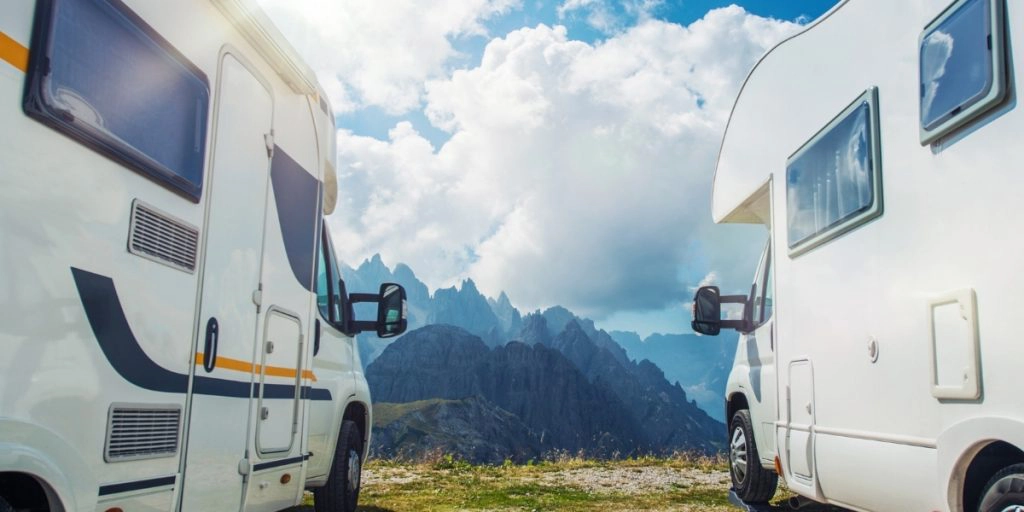
Basic Requirements for Europe Motorhome Travel
This section has been updated to reflect the post-Brexit agreement between the UK and EU on 24th December 2020. It’s boring, but spend just one day doing the research before you head off, and you’ll have one less thing to think about. If you do get stopped during your European tour you’ll have all the correct equipment and documentation to show. Our advice and travel tips cover the basics:
- You must have at least three months remaining on your passport (issued in the past ten years) at your intended date of departure from Europe. If you’re travelling in a motorhome in Ireland , your passport only needs to be valid for your stay (UK citizens do not need a passport to travel to Ireland which is in the Common Travel Area).
- A UK driving licence is needed for touring in a camper van in Europe. Your UK licence allows you to drive in all EU countries. If you only have a paper driving licence or a licence issued in Gibraltar, Guernsey, Jersey or the Isle of Man then you will need an International Driving Permit .
- You must have at least third party motorhome insurance for your vehicle. You are not required to have a green card to prove you have vehicle insurance coverage when travelling in the EU. Make sure to check if visiting non-EU countries like Montenegro, Serbia and Albania that you are covered – you’ll need a green card for these countries too.
- You must display a UK sticker on the rear of your vehicle, instead of a GB sticker, unless you have a UK number plate which displays the Union Jack flag. If you’re travelling in Spain you will need a UK sticker even if you have the new style UK number plates.
- Headlights must be adapted for driving on the right.
- You may need evidence of a return ticket and that you have enough funds to cover your stay – there is no fixed amount that a customs official might ask for, but you need to be able to show that you can maintain your motorhome lifestyle. Having said that, in the two years since Brexit, we don’t know anyone who has been asked to produce either a ticket of evidence of their financial position.
- Brits should get a GHIC or EHIC (Global or European Health Insurance Card) – not a legal requirement, but free so why not?
- We would also recommend your own travel insurance and Europe motorhome or campervan breakdown cover, but these are not legal requirements. We like True Traveller backpacking insurance if you need cover for more than three months.
- An Animal Health Certificate , if you’re taking pets with you.
- Any country-specific requirements for your vehicle – our country-by-country motorhome touring guides contain up-to-date information about what you need to carry in Europe.
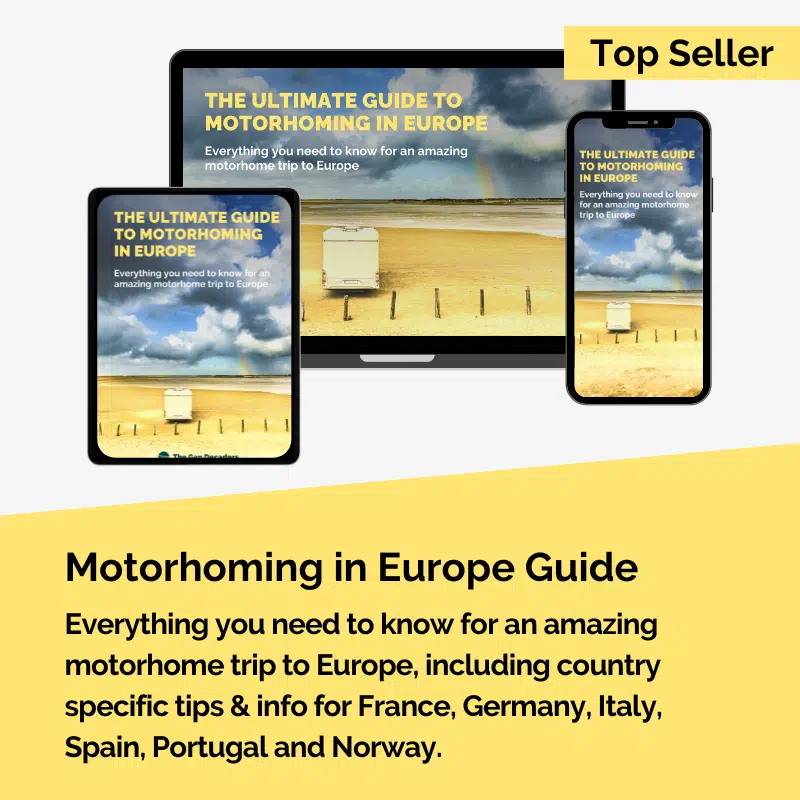
The Ultimate Guide to Motorhoming in Europe
If you’re planning a motorhome trip to Europe for the first time, our guide has top tips, advice and info to help you plan your tour.
Don’t struggle to plan your European trip, find out everything you need to know before you go + loads of motorhoming tips for when you arrive.
Motorhome Europe After Brexit
Although the UK left the EU at the beginning of 2020, because the pandemic came swiftly on its heels, many of us are still realising the repercussions and getting used to how it affects travelling in a motorhome.
You can find out all the details you need in our guide to motorhoming in Europe after Brexit , and in our guide to motorhoming in Ireland , which due to being in the common travel area (CTA) has some different rules.
In the meantime, here are a few frequently asked questions and answers about what happens when you cross the English Channel:
Do I need a visa for Europe?
Nothing changes with your passport, but from 2025, the EU will introduce the ETIAS (European Travel Information and Authorisation System), which will be an additional entry requirement for visa-exempt travellers and will involve the traveller registering their details online before travelling, mainly for security purposes.
How long can I stay in Europe?
UK citizens can only stay in the Schengen Area (a zone in Europe where countries have no internal borders and allow the free and unrestricted movement of people) for 90 days in every 180 days in the Schengen Area.
The 90 in 180 day rule works on a rolling basis and it can be difficult to work out whether you are within the rules or not, especially if you have visited the Schengen area on several occasions in the preceding 180 days.
Long-term travelling by motorhome in Europe is still possible, you just need to be organised and have a plan to ensure you don’t overstay. This comprehensive post about campervan travel in Europe post-Brexit explains all the details and offers advice and insight into how long-term motorhome touring in Europe is still possible.
What food can I take in my motorhome to Europe?
The European Commission says the following:
- Travellers are not allowed to bring in meat , milk or their products .
- There is an exemption for powdered infant milk, infant food, and special foods or special pet feed required for medical reasons if weighing less than 2kg and provided that: such products do not require refrigeration before opening, that they are packaged proprietary brand products for direct sale to the final consumer, and the packaging is unbroken unless in current use.
- For fishery products (including fish and certain shellfish such as prawns, lobsters, dead mussels and dead oysters), travellers are allowed to bring in up to 20kg or the weight of one fish if this is higher.
- For other animal products , such as honey, live oysters, live mussels and snails, travellers are allowed to bring in up to 2kg.
Can I use my mobile data in Europe?
Internet access in Europe very much depends on who your mobile phone contract is with and when you started the contract. All UK providers now limit data usage in the EU in some way or another, and it’s a good idea to check with your provider to make sure you don’t run up a big bill. You can find lots of information in our guide to the best SIM cards in Europe , especially if you’re planning to be away for more than a few weeks.
We have been using and recommend ConnectPlus for cloud SIM connectivity in the UK and Europe. You can choose from unlimited data packs to just single days, depending on your needs. The device is no larger than a slimline smartphone, connects with up to ten devices, is charged easily with a USB and can be delivered within a few days of ordering. Use the code ‘thegapdecaders’ at checkout to get 50% off in the first month!
Can I take a pet to Europe in my motorhome?
The good news is that you can take dogs, cats and ferrets to Europe. You’ll need to book a pet-friendly cabin or kennels on the ferry or travel via the tunnel from the UK. Your pet will need a microchip, a valid rabies vaccination and an animal health certificate (AHC).
When pets are travelling to Norway from countries in the EU/EEA (such as Germany or Denmark ) the animal and necessary documentation must be presented to Norwegian Customs for checking. Walk or drive through the red zone in the Customs area to present your paperwork and pet.
When travelling to Norway from Sweden, the animal and documentation need not be shown to the Norwegian Customs if the animal has been kept legally in Sweden and meets all requirements for entry.
It can take some time to get all the documents together and the vaccines organised, so make sure you start the process well in advance and find out more about travelling in Europe with a dog before you set off with your fur baby!
Europe Campervan Hire or Taking Your Own?
Taking your own motorhome to Europe is relatively simple. There’s no need to temporarily import your vehicle, even if you’re touring and you don’t need to have a left hand drive van. Just make sure you have the right documentation and required safety equipment, and you’re good to go.
If you’re new to motorhoming, or campervanning on the continent for the first time, then a two week holiday in Western Europe is a great way to start, especially if you rent a motorhome .
Your rental company will ensure your campervan hire for Europe will come equipped with everything you need to enjoy a few weeks across the channel in July or August, and you’ll enjoy a great taste of European motorhome life .
Our recommended European campervan and motorhome hire company is Motorhome Republic , which has hundreds of pick-up locations across Europe, all perfect starting points to see all the best bits as you road trip Europe .
An aggregate motorhome and campervan booking site, Motorhome Republic pull together all the best deals from many different rental companies, to offer you a wide choice of options alongside an excellent English-speaking expert motorhome Concierge Team.
If you’re coming from North America and are used to traveling in a recreational vehicle, motorhomes in Europe are a little different from RVs in the States. Styled differently and significantly smaller (even if it feels large to us Brits!), we generally don’t have slide-outs, full-sized appliances or beds in our motorhomes.
Most European motorhomes use cassette toilets, rather than having a black or black and grey waste tank, but you’ll be pleased to know that European motorhomes are usually left-hand drive, so just like travelling in an RV at home 🙂
RELATED POST: Everything You Need to Know About Motorhome Hire
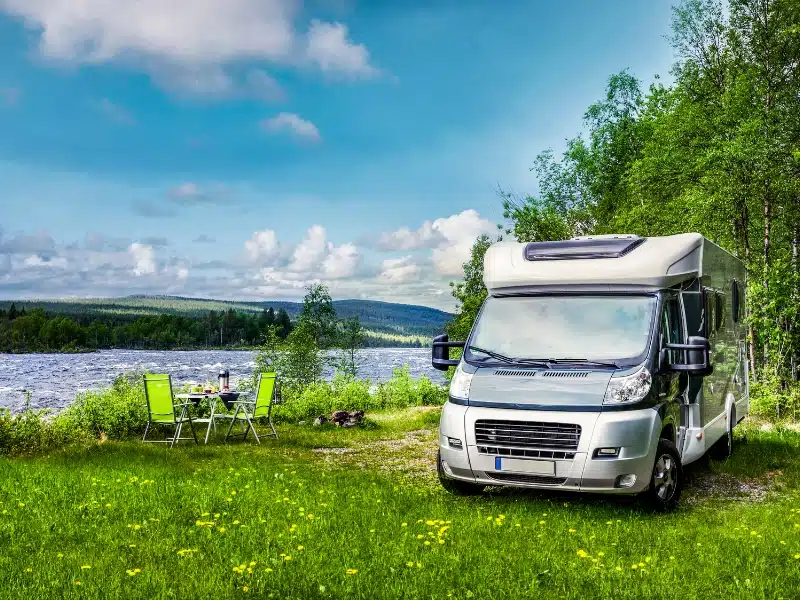
Preparing Your Van for Europe
When planning and taking a motorhome or campervan road trip across Europe you’ll need to consider whether you have the right accessories in and on your motorhome for touring.
If you’re heading off on a short two week campervan trip in Europe, then you may already be well set up for this type of holiday and won’t need any special preparations to have a fantastic trip.
New motorhome owners or those planning a longer tour may want to make some changes or additions. What you change or add will depend on how much you want to spend and how you want to travel Europe in a motorhome.
- Which countries will you visit?
- Will you wild camp or stay on sites? How off-the-beaten track do you want to be?
- Will you be travelling Europe in a campervan across seasons, or sticking to summer or winter?
- Are you intending to leave Europe and/or the Schengen area for different regions of the continent?
- What’s your budget?
For us, we have found the additions below to be worth the extra cost when spending more than a month or so on the continent. If you intend to travel long-term or regularly in Europe, then these extras will pay for themselves.
RELATED POST: Motorhome Accessories, Equipment & Options
If you’re planning on spending winter in mainland Europe then you may need heating in your motorhome. Some areas in countries like Spain and Portugal are warm enough year-round for you to not need heating, but if you head into the mountains, then you could well be facing freezing temperatures.
RELATED POST: Winter in a Motorhome – Tips, Tricks & Essentials
Gas and LPG
You can’t take a UK gas bottle to Europe and exchange it. This means if you run out of gas, you’ll have to carry your empty bottle and buy a bottle in whichever country you are, as well as a suitable regulator. This is not difficult, but it is a hassle and an added expense.
Disposing of your empty bottle is illegal, and it’s also illegal to re-fill Calor gas-type bottles at the pump, so there really is no easy way to get gas if you’re not prepared.
If you’re touring for more than a month or so, we would highly recommend a refillable Gaslow or Gasit system which can be filled in any EU country (including the United Kingdom) at the pump using a set of special adaptors.
You’ll save money every time you fill, LPG (called GPL in Europe) from the pump is around 70% cheaper than buying it in a bottle.
The downside with a refillable system is that in the UK lots of garages have stopped selling LPG at the pump as the take-up of LPG vehicles has been surpassed by electric technology. A good compromise is to have one bottle on a refillable system and one UK bottle, and we hear about more and more people doing this.
If you’re planning to visit Morocco in your motorhome , gas at the pump isn’t available (nor in Finland) so this does need careful planning.
RELATED POST: An Easy Guide to Motorhome Gas & LPG in Europe
If you are planning on free camping in aires or wild camping in Europe (if you’re a wild camping newbie, it’s the ideal place to start) then you will need equipment to ensure you have electricity when you’re overnight parking off grid .
This might include a solar panel and you may want to upgrade your leisure batteries. You could also consider a solar generator , which is portable and will provide you with enough power to wild camp as much as you like, as long as the sun is shining!
RELATED POST: An Easy Guide to Motorhome Electrics
Air Conditioning
With summer temperatures regularly getting into the early 40s in Europe, air conditioning can be a lifesaver. One summer in France, despite being dyed in the wool wild campers, we spent every night in a campsite or aire, just so we could plug in and have air con!
If a roof-mounted a/c unit is too expensive, take a look at portable air conditioning solutions – the technology has advanced in recent years, and some of them are pretty good. Make sure to check the size though, as they can be large!
If you’re travelling in summer, then an awning of some description is an absolute must. Having one fitted retrospectively can be expensive, but a drive-away awning, a simple gazebo or even a collapsible umbrella can do the trick.
Water Filter
If you’re planning on visiting countries where the quality of potable water is questionable, or you don’t want to drink de-salinated water (common in southern Spain), then a water filter is a great option.
We have a Nature Pure filter fitted, a job a competent DIY’er could manage. We love not having to buy bottled water and then having to cart the empty bottles around until we find a recycling point.
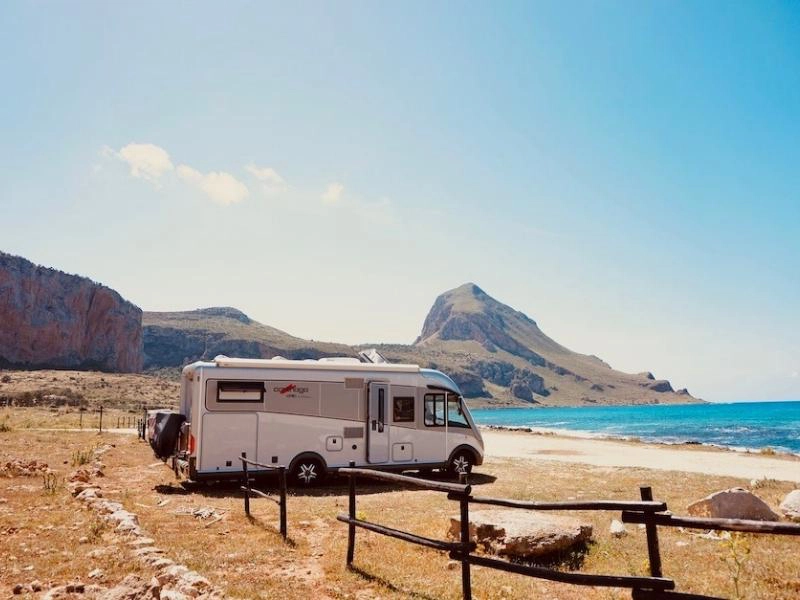
What Kit Do You Need In Your Motorhome?
Are you taking a 2 week campervan trip in Europe or longer? Will you be travelling Europe in a camper van across seasons and into different regions of the continent?
Packing List
Have a look at our essential motorhome kit list for an idea of what kit and gear we think is important when taking a motorhome to Europe. You’ll also find links to a free motorhome packing list covering kitchen, garage, gadgets , safety equipment and personal essentials.
RELATED POST: 101+ Motorhome Essentials You Need + Packing Checklist
Motorhome Internet & Wifi
Connectivity is important if you want to stay in touch with loved ones, post on social media and keep up with what’s happening in the world.
We know that information regarding European roaming on a UK contract changes frequently so we keep our post about motorhome internet and wifi up to date, so you can check the best equipment and European sim card options for your needs.
RELATED POST: An Easy Guide to Motorhome Wifi & Internet
Motorhome TV
We all like a bit of TV, and being in Europe doesn’t change that. There are lots of ways of getting TV in a motorhome, and when you’re abroad there are a few things to be aware of if you want to watch UK television.
RELATED POST: Motorhome TV – Five Ways to Watch in Your Van
You also need to consider how you’ll get out and about, especially if you intend to remain static on a site or an aire for more than a few days.
If you’re in an urban area, local buses, trams and metros may work, and public transport is the best choice for city visits . If you’re more remote you’ll want to be able to get to the nearest village or head out for a day.
Make sure you research thoroughly if you want to tow a car – the law regarding A-frames in Europe is often misquoted and not always clear. You may find some helpful information on various Facebook forums for motorhome owners, and on the UK Government website .
RELATED POST: The Best Motorhome Bike Racks & Bikes
Gross Vehicle Weight
What and how much you pack will also depend on the gross vehicle weight (GVW) of your motorhome and how much storage space you have.
As a general observation, if you fill your storage space you are likely to be overweight – just because you have loads of cupboards doesn’t mean you should fill them all!
Read our guide to understand how motorhome weights work and don’t forget to include your toys like bikes, kayaks , gadgets and so on when thinking about weight.
RELATED POST: An Easy Motorhome Weight Guide
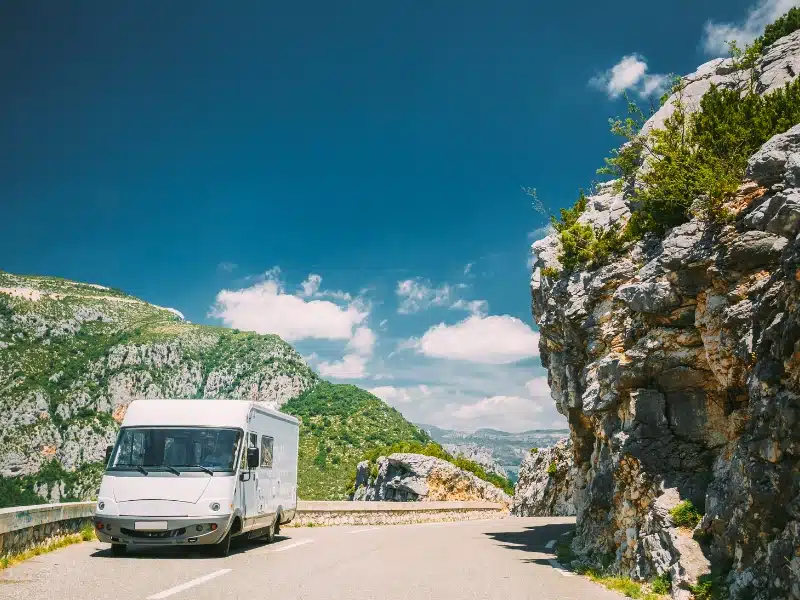
Driving a Motorhome in Europe
Each country differs, but on the whole, driving in Europe is very safe – the continent has by far the lowest RTA fatalities in the world. Sweden and Denmark have the best safety records, with Bulgaria and Romania lagging, and everywhere else somewhere in between.
As long as you practice caution, take it slowly and follow road signage, you’ll soon settle into it.
We’ve had both right and left hand drive motorhomes, and although LHD is a little easier, especially on narrow roads. Right hand drive is not a problem if you have a willing passenger!
Be aware that the Republic of Ireland , Malta and Cyprus all drive on the right, just like the UK.
Satellite Navigation
There are hundreds, if not thousands, of motorhome routes through Europe. Make sure you have a motorhome sat nav that has European mapping, or use a satellite navigation app such as Google Maps, CoPilot and Maps.me
Yes, it’s possible to use a paper map but ideally, you want up-to-date information and be able to set your dimensions in the sat nav if you’re in a larger van. This helps to avoid routes with weight or height constraints, like low bridges and allows you to set your route to miss toll roads if you prefer to take the more scenic route.
RELATED POST: Motorhome Sat Navs: Best Models & Options for 2024
We would also recommend installing a dash cam, which is a five minute job if you buy a plug-and-play model.
A common scam, especially in Eastern Europe, is for a driver to pull in front of you at speed and then brake hard causing you to hit them. Unless you can evidence their actions, you will be held liable and will have to pay any excess on your insurance, and maybe lose your no claims bonus.
Be aware that dashcams are illegal in Portugal and Austria due to their privacy law surrounding filming people in public.
Speed Limits for Motorhomes in Europe
Speed limits for motorhomes vary across Europe, and can also vary depending on your weight. When you enter a new country, there is usually a roadside sign advising you of these limits.
If you use a sat nav, it will inform you of speed limits, as well as update you with traffic news, and let you know when you’ve crossed a border on your campervan journey.
Speed cameras are common in Europe, and may be fixed or mobile. Both types of speed cameras can be visible or hidden, and it’s easy to be caught, even if you’re over the limit by just a few kilometres an hour.
Your sat nav may be programmed to alert you to speed cameras, however, this is not legal in all European countries, so check with our country-specific information below – or maybe just stick to the speed limit 🙂
Don’t think that because you’re from another country you can avoid speeding fines. If your motorhome is registered in the United Kingdom or anywhere in Europe, there is a data-sharing protocol in place which means you’ll be tracked down in your home country.
Toll Roads in Europe
Tolls on motorways are common across Europe , and if you’re looking to get somewhere quickly and easily, taking the toll road is often the most cost-effective option.
With pay-as-you-go tolls, you can pay with cash or by card at the toll booth. We think the best choice is an electronic tag like an Emovis Tag , which is linked to your credit card and works in France, Spain and Portugal, or a Telepass device which works in France, Spain, Portugal and Italy.
Where a vignette (physical sticker) is required, you must order this in advance or stop at the first fuel station on the motorway as soon as you enter the country and buy one there.
Vignettes are required in Switzerland, Austria, Slovenia, Montenegro, Romania, Czech Republic, Bulgaria, Slovakia, Hungary, Moldova and Belarus, and you can buy some of these online at Digitale Vignette .
If your motorhome is over 3,500kg, arrangements will be different and you may need a physical onboard unit, which has to be collected and pre-loaded at the border.
In our experience, Norway and Portugal have the most complex toll systems, with different toll road operators requiring different processes. Check out each country in our motorhome touring guides.
RELATED POST: Tolls for Heavy Motorhomes >3.5T in Europe: Country by Country Guide
Fuel in Europe
Fuel costs in Europe vary wildly from country to country. Generally, the further east and south you go, the cheaper the fuel.
Greece is the exception to the rule and although the furthest south and east you can go in Europe, it has some of the most expensive fuel on the continent!
Use the excellent Mappr tool to see at a glance what you’ll pay per litre.
In some countries, like Italy , there are two prices for fuel – one for self-service and one for attendant service and the latter can be up to €0.15 per litre (or 57¢ per gallon) more expensive! Beware Italian garage attendants who usher unsuspecting road trippers to the more expensive pumps…
In Europe, gasoline is generally called benzine or sans plomb and in the UK it’s called unleaded petrol – the pump handle is almost always green .
Diesel is usually called diesel or gasoil , and the pump handle is always black . But, these names can change slightly by country, so if you’re unsure use a translate app to work it out.
Low Emission Zones in Europe
Low Emission Zones (LEZs) are areas, usually in towns and cities, where the most polluting vehicles are regulated and either cannot enter the area or have to pay to enter the low-emission zone. Most EU countries have LEZ in place.
Vehicle emissions are classified in Europe by Euro Standards, which determine and categorise a vehicle’s emissions to determine its pollutant levels.
Before you travel into a low emission zone (mainly cities) you first need to find out if your vehicle is affected – this will depend on the vehicle type, age and fuel.
Each county has different regulations like Crit’Air in France and umweltplakette in Germany. Some require you to pay to enter online, some ask you to buy a physical vignette or sticker, some don’t allow you to enter during specific times of the week and some only allow Euro 6 (the least polluting) vehicles to enter. It’s complicated!
If you are planning on visiting cities along your campervan route, this is an area to look at early on as it can take weeks for the physical sticker to arrive. Find out more about each country in our motorhome touring guides.
Common EU Driving Rules
- Under EU law, seat belts must be used in all vehicles. Children over 1.35m can use an adult seat belt. Those under 1.35m must use equipment appropriate to their size and weight when travelling in a car, like a car seat or booster cushion.
- It is illegal to use your phone at the wheel in all EU and European countries. In France and Spain, you may not even use a phone as a satellite navigation device or with hands-free equipment.
- All EU countries have different alcohol limits set in their drink driving legislation which may be different or lower to your home country. It’s best not to drink any alcohol if you’re planning on driving anywhere afterwards.
- All European countries with mountains have rules about snow tyres and snow chains. Make sure you check these rules if you’re taking a road trip of Europe in colder weather.
- Member states of the European Union have a standardised set of road signs, very similar to the UK.
- In many European countries, certain discourteous behaviors, such as rude gestures in Germany and honking the horn without cause in residential areas in Spain and Italy are offences for which you can be fined! Make sure you’re aware of the specific European driving laws for each of the different countries that you intend to visit.
Road Conditions
Some European countries have less money to invest in their roads, and generally, the further east you go, the longer the roads have to wait for repair.
Large potholes, badly laid tarmac, lack of road marking, and poor quality of repairs can make driving challenging on country roads, and even on motorways in some countries.
Go at your own pace until you’ve got the measure of your surroundings, and leave enough room between your car and the vehicle in front, so you can see ahead and avoid the worst bits!
Driving Standards
Driving standards across Europe vary, from the considerate and patient Norwegians to the fast but competent Germans, and the feisty and loud Italians!
Each country has it’s own distinct bad habits and the best way to learn is to watch the locals and take it slowly until you’re comfrotable with what to expect.
In Greece , the Balkans and Italy , overtaking on bends, at the brow of a hill and generally where visibility is poor, is very common. Other drivers tend to slow down to ensure there is room for all the vehicles on the road, but it can be very disconcerting the first few times it happens.
In France , drivers will sit very close to your bumper waiting for the opportunity to overtake. They will also have their indicator flashing, to let you know they want to get past, and they do seem to have a particular dislike of motorhomes!
In Italy , the drivers are incredibly impatient and will honk their horns at the drop of a hat. They don’t give an inch if you’re trying to enter the traffic flow, so you have to do as they do, and just go when even the smallest opportunity presents itself.
Even though speed is not limited on 70% of the German autobahn network , the roads are often so busy that a de facto speed limit is established. But if you do get an empty stretch, observe any signage before you put your foot down!
Regardless of the driving laws in each country, you’ll always see locals breaking them. Using phones at the wheel, not wearing helmets on motorbikes and blatantly ignoring the speed limits are common.
Don’t get sucked into thinking this is OK – local police seem to have a lot less tolerance for tourists breaking the rules!
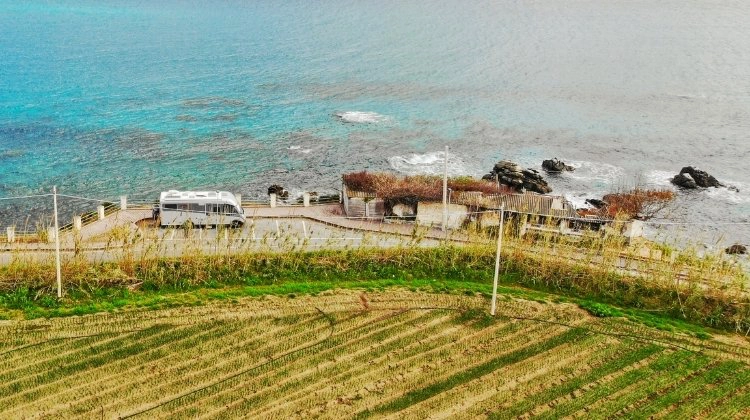
Europe Motorhome Destinations
How on earth do you choose where to go when touring Europe by campervan ? There are so many different places to see, how do you fit it all in?
You could spend literally years in a camper in Europe and not see it all. If you don’t have much time or only want to take short trips, you’ll need to decide what to prioritise when route planning.
Is this a break from work to chase the sun and chill? Are you a culture vulture looking for Roman ruins and ancient worlds? Do you love hiking in the amazing national parks of Europe? Or, like most of us, looking for a bit of both?
If you’re looking for inspiration or don’t know where to start planning, our ready made and downloadable motorhome road trips for France, Germany and Italy and three months in Europe include detailed interactive maps, travel times and distances, day by day ideas for destinations, hikes and activities plus recommendations for campsites and aires at every destination.
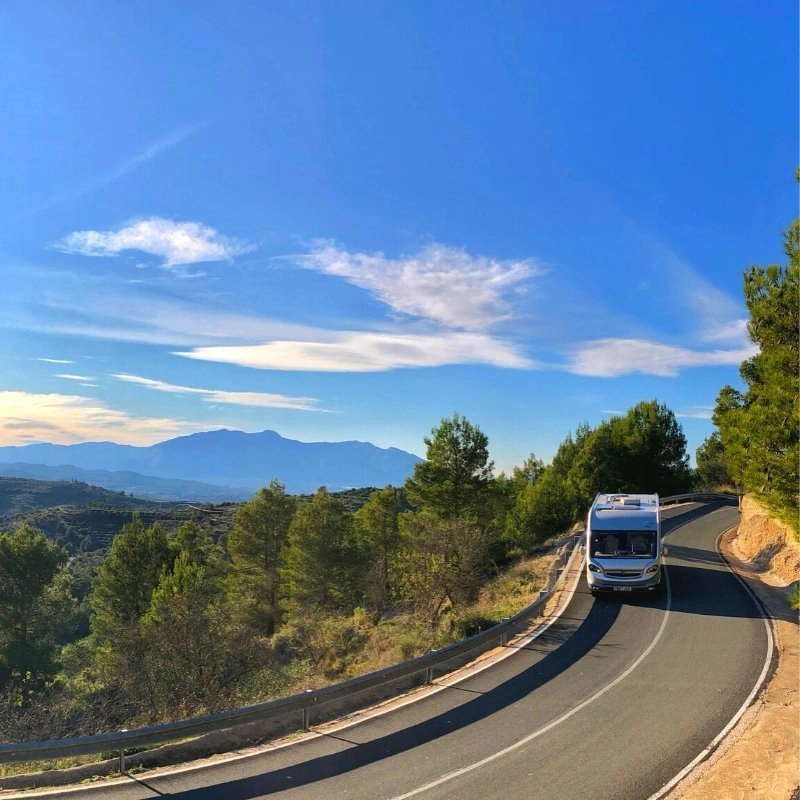
Motorhome Touring Guides
Check out our motorhome touring guides for the most popular European countries, where you’ll find information about driving, motorhome services, camp sites, wild camping spots, suggested routes and top destinations. Be inspired by stunning landscapes, mountains and coasts and incredible road trips .
Motorhome Germany – A Complete Touring Guide
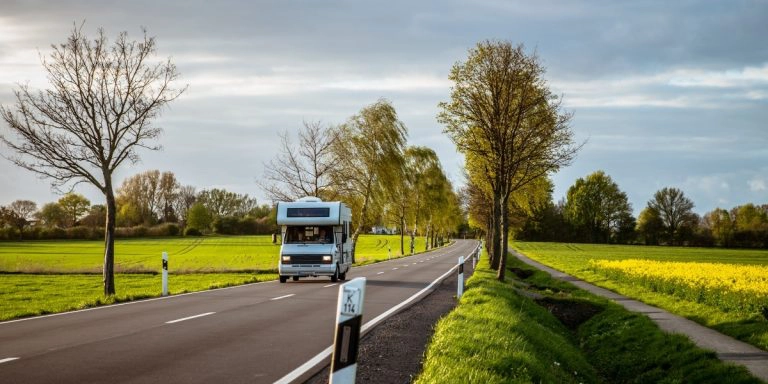
The Complete Guide to Motorhome Touring in France
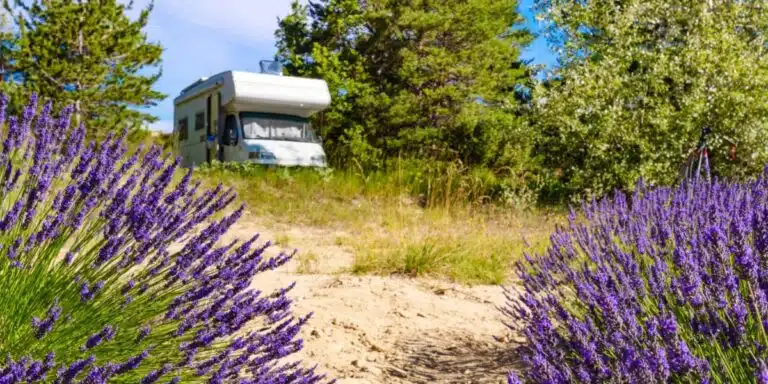
How to Tour Spain in a Motorhome – A Complete Guide
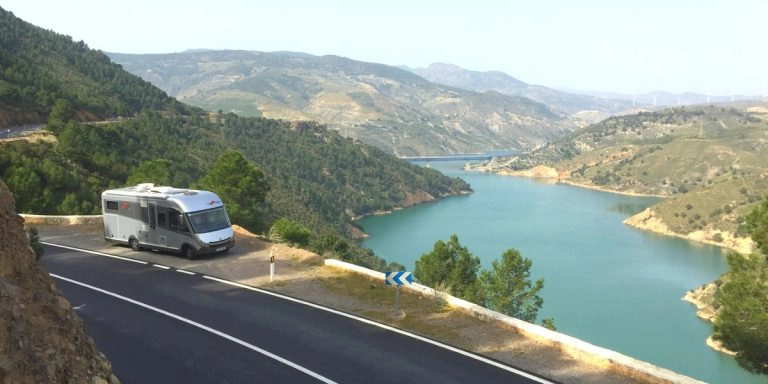
Top Tips for Touring Portugal in a Campervan & Motorhome
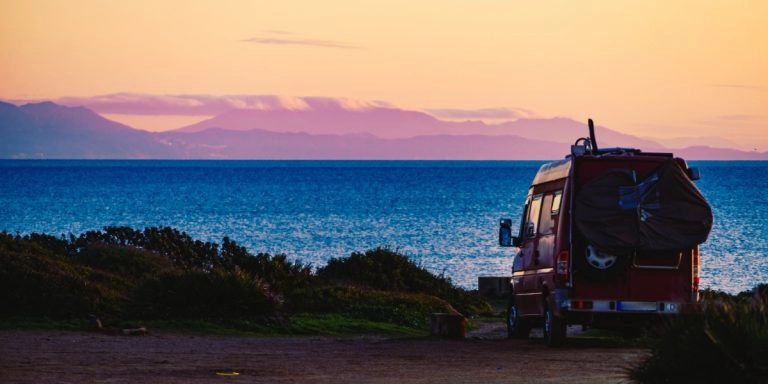
How to Tour Norway by Campervan
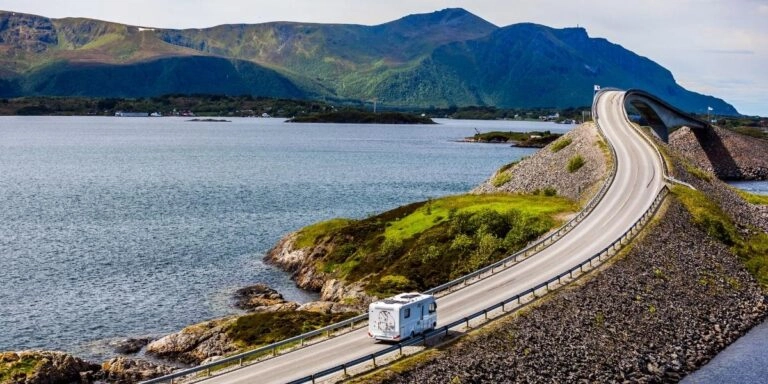
The Complete Guide to Touring Italy by Motorhome
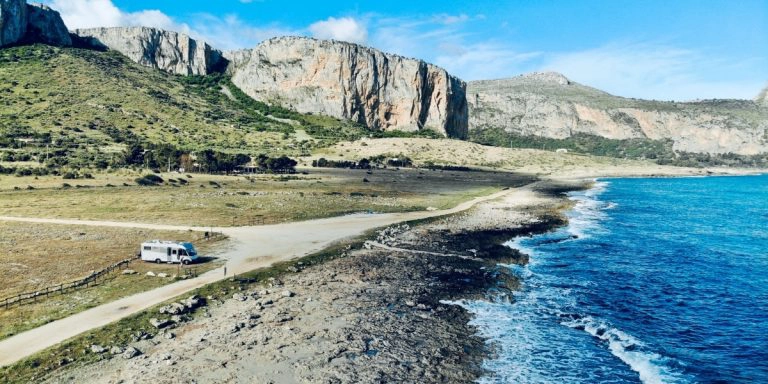
Motorhome & Campervan Greece – Complete Guide
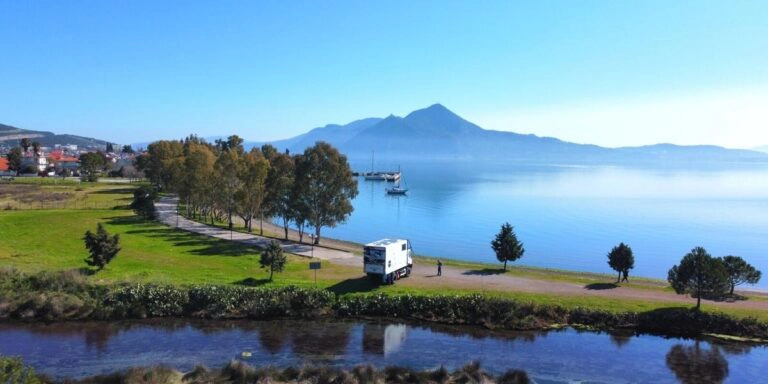
Planning Your Morocco Motorhome Adventure
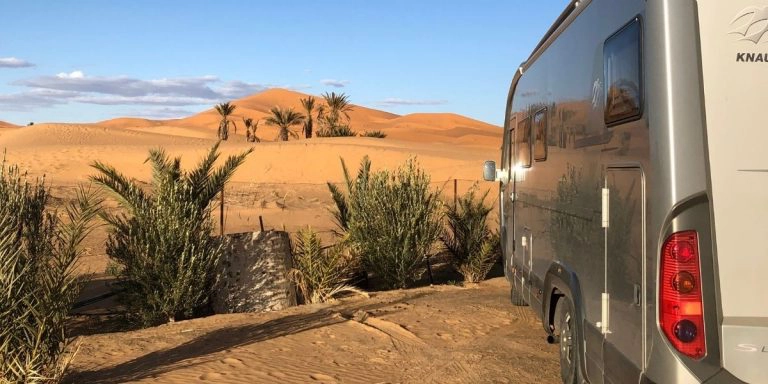
Motorhome Stopovers & Travel in Belgium
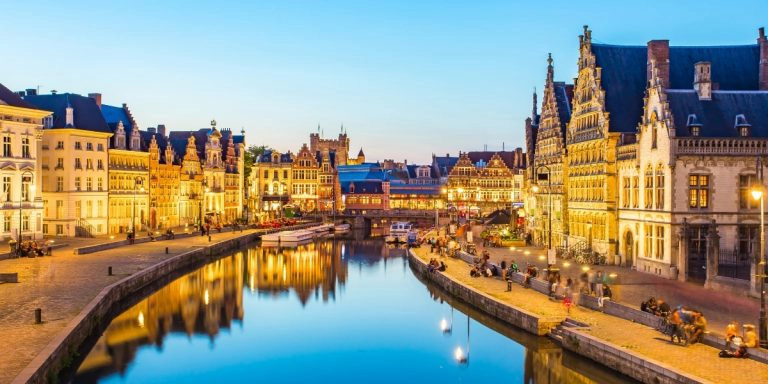
Motorhoming in Ireland – A Complete Guide
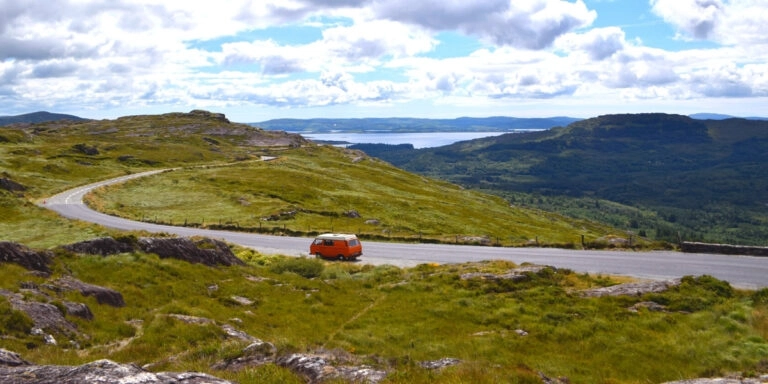
The Best Motorhome Holidays in Europe
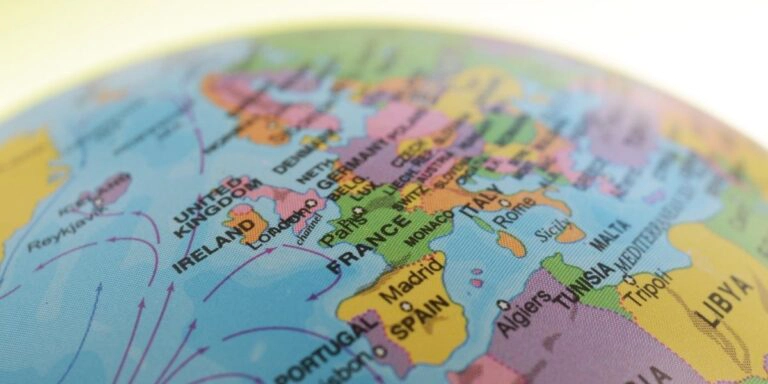
Motorhome Route Planner Europe
Ok, so now you’ve got some ideas about where to go on your motorhome trip of Europe, you need to plan your Europe travel route.
Planning a route for touring Europe in a campervan can be as complex or as simple as you want. Some people like a clear plan and a short amount of driving time per day with overnight stops booked or planned in advance, others like to just go with the flow and see what happens.
It’s why we fall out every time we look at a map or start any road trip planning!
RELATED POST: How to Plan a Europe Road Trip – The Complete Guide
Do you want access to our FREE resource library packed with travel resources & motorhome checklists?
Overnight Stops for Motorhomes in Europe
When it comes to where to stay overnight in a motorhome or campervan, Europe has lots of great options;
Motorhome Campsites
Campsites are a great option if you have a family or you like to stay out for more than a few days at a time. They also make great overnight stays if you’ve been on the road for a while and facilitate things like clothes washing and cleaning your van.
We love a good campsite after a month off-grid or a long trip. Suddenly, everything seems effortless – no worries about whether there will be enough sun to top up the leisure batteries and no issues about how long it takes to rinse the conditioner from my hair in the shower! If there’s also a bar, we look forward to meeting fellow motorhomers for a good chinwag!
One way to save money on your trip is to get an ACSI card. This discount card is invaluable if you’re planning to use European campgrounds, with the scheme giving you up to 60% off per night prices out of high season. This can mean a site for as low as €13 a night.
It’s worth getting this sorted before your camping trip to Europe as ACSI need a couple of weeks to post the card and books to you.
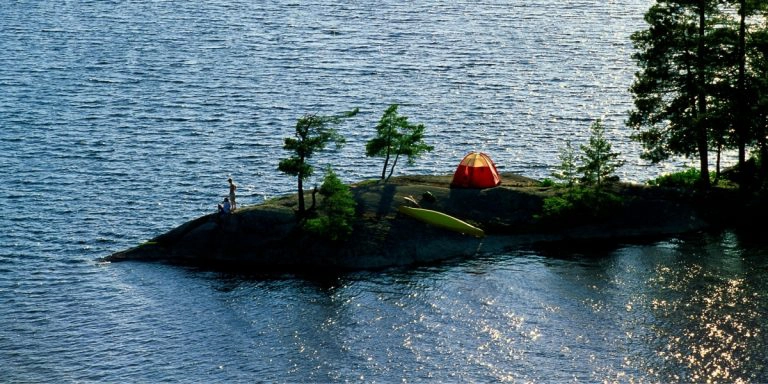
The Best Campsites in Europe – For Campers, By Campers
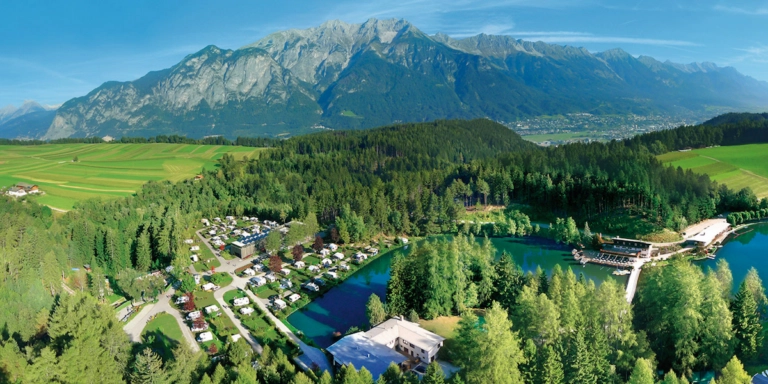
ACSI Camping Card – 2024 Review & Step-by-Step Guide
Motorhome aires.
Motorhome aires are a great way to stay overnight for very little money, and can often be found in popular small towns and villages in the countryside of Europe from the north coast of France and the French Riv to the beaches of the Peloponnese.
French aires have paved the way for other countries to set up similar schemes, where the aire is funded by the local municipality to encourage motorhome visitors into the area.
There are now more than 10,000 aires across Europe, and many of them are like free campsites, with services often provided at no extra cost.
The costs and arrangements at each aire differ, so make sure to read the rules when you arrive. Aires cannot be booked and work on a first come, first served basis.
Aires in popular destinations fill up quickly, so make sure you have a back-up plan just in case, especially after a long drive when all you want to do is relax.
Park4Night is a great app for finding aires, or use All The Aires books to identify where you want to stay.
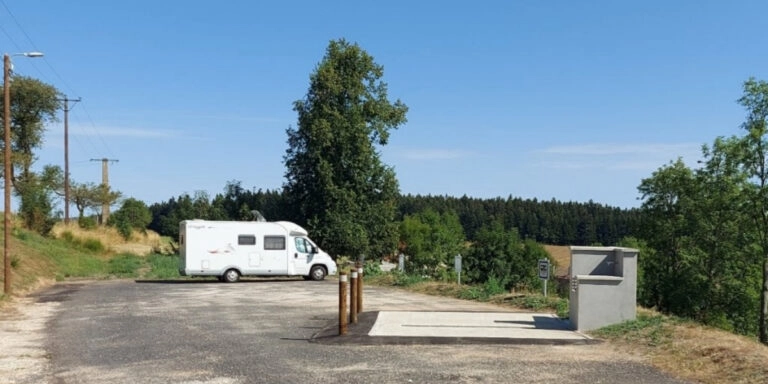
Motorhome Aires in France – All You Need to Know
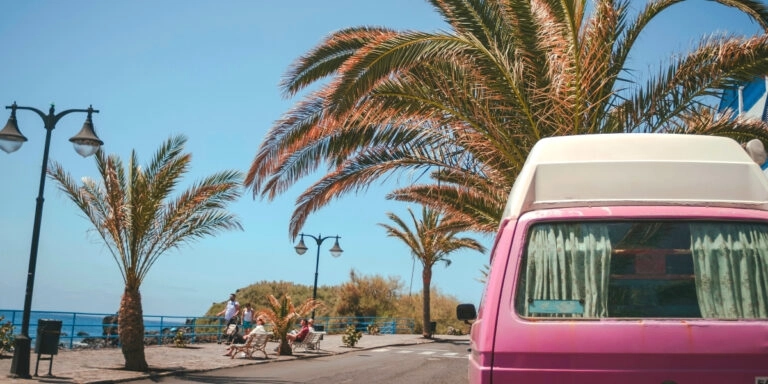
Motorhome Aires in Spain – All You Need to Know
Wild camping.
Another popular option, motorhome wild camping is widely accepted across Europe (except Portugal, which has really cracked down on this).
If you’ve only ever motorhomed in the UK, you might be surprised at the ease with which you can wild camp your way across the continent, without raising eyebrows or upsetting the locals. Much of Europe is much less densely populated than the UK and there are vast areas of land which are not populated at all that make good places for an overnight parking spot.
There are some rules (and a few unwritten ones too) which will help you find the right spot and stay safe when wild camping. Enjoy the freedom and hopefully a stunning view!
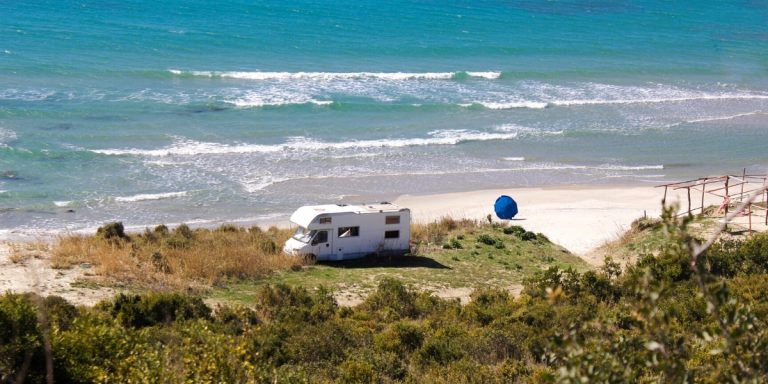
Motorhome Wild Camping – Your Complete Guide
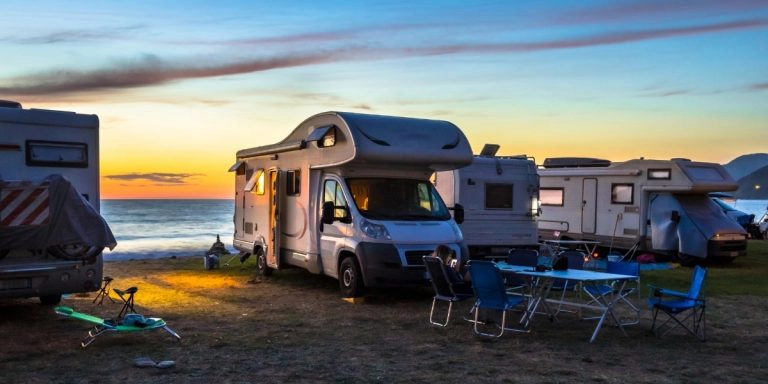
How to Find Free Overnight Motorhome Parking UK & Europe
Alternatives to wild camping.
If you’re not a wild camper at heart but don’t always want to stay on a site, there are lots of schemes to help motorhomers stay overnight in interesting places and are easy to build into your road trip itinerary if you want to get off the beaten path.
From France Passion to Portugal Easycamp , In Camper Con Gusto in Italy and Espana Discovery , all these schemes offer a place to stay overnight in a motorhome.
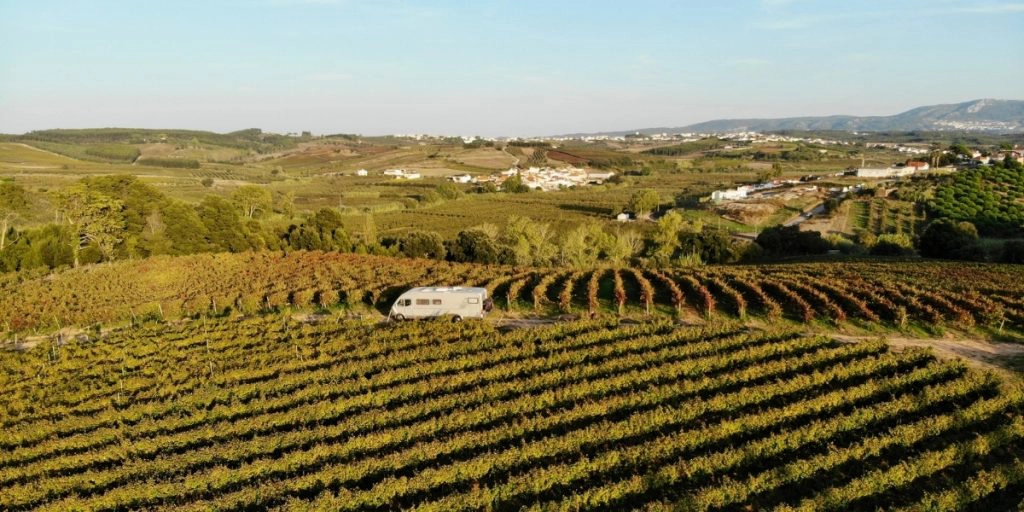
Motorhome Services in Europe
Another surprise to UK motorhomers is just how easy it is to find services in Europe, one of the great things about motorhoming on the continent. Right across western Europe you’ll find services on a regular basis, almost in every town.
Many are free, some have to be paid for, but it’s usually no more than a few euros to empty your toilet cassette and grey waste, and fill up with fresh water. This makes the idea of camping off-grid so much easier.
Services can be found in aires, fuel stations, motorway services, supermarkets and on the outskirts of towns and villages. Use Park4Night to find services near you.
RELATED POST: Living in a Motorhome in Europe – Your Complete Guide
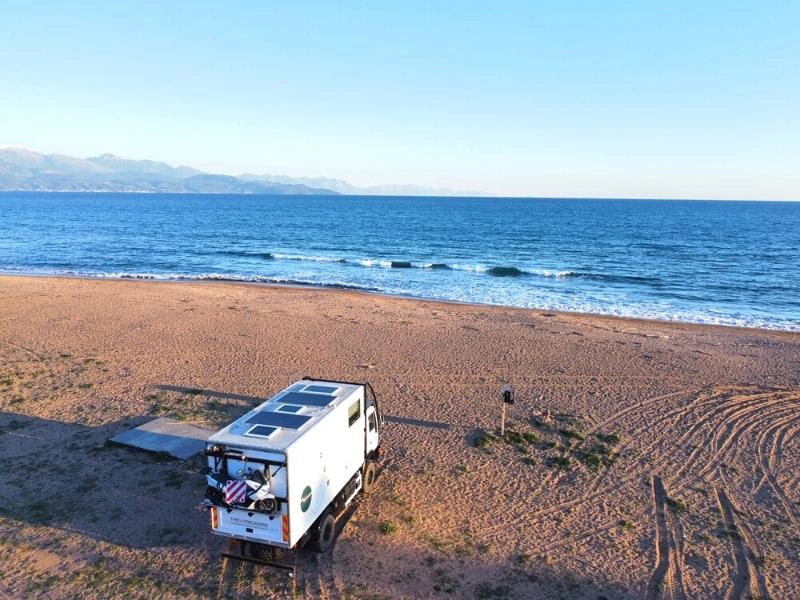
Van Life Europe
You’ve done it… you’re on the road and starting your European motorhome tour, although adventure is probably a better word!
Frequently Asked Questions
Whilst we all have views about van life in Europe, some topics crop up time and time again. See our post about the questions we always get asked – if your burning question is not there then feel free to email us . We’re always happy to give an honest answer if we can and we love questions.
What do you do if something goes wrong?
Things can, and do, go wrong. At the time, it can be very anxiety provoking, especially if you don’t speak the language, or the problem is taking a lot of time to resolve and detracting from your holiday.
We drove around France for three weeks (it was August and EVERYWHERE was closed) with our over-cab bed held up with acro props and it was really stressful.
A good first place to ask for help is our Facebook group – remember to share the make and model of your vehicle when asking for help. Try researching your problem on the internet, there is so much information available, you may just find the answer.
Search in Google for a motorhome workshop near you. Most of these places are run by motorhomers themselves and they will help if they possibly can.
You will also find a list of top 20 motorhoming FAQs here – from why your fridge isn’t cooling to why your tap doesn’t work.
How much does it really cost to tour Europe in a motorhome?
Lots of people ask us how much it costs to live in a motorhome in Europe. Our answer is always the same – it depends on how you want to live.
Make sure you have emergency funds accessible to you, whether that’s cash stashed in a secret place (not our recommendation) or an emergency credit card. Read more about general safety in our motorhome security guide.
RELATED POST: What Is the True Cost of Touring Europe in a Motorhome? A breakdown of weekly, monthly and annual costs + tips to help save money on the road
How do you make sure your relationship survives?
Being with your other half 24/7 in a small space may not be quite as romantic as you imagine! Motorhome life may come as a shock if you’re both used to rushing in from work at 6pm, collapsing in front of the TV before bed and then repeating for five days a week.
RELATED POST: Ten Truths of Travelling Together
How do you manage preventative maintenance on the road?
Prevention is always better than cure as far as motorhomes are concerned. In our experience, water and condensation are the two areas where people have the most problems.
Often it’s a simple issue, but the first time something goes wrong can be challenging and if you don’t know, you don’t know.

How to Stop Condensation in a Campervan
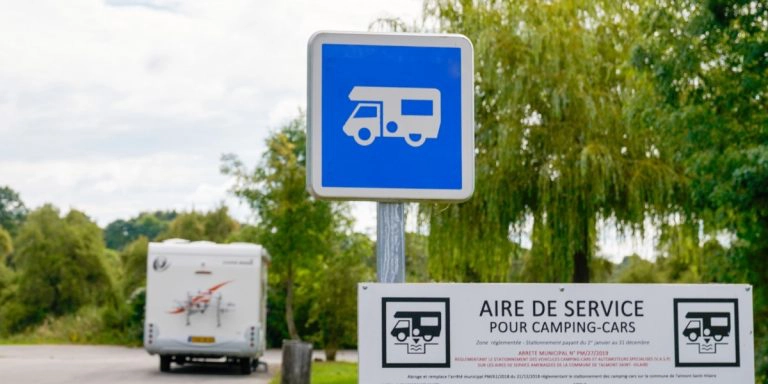
An Easy Guide to Motorhome Water Systems
Are you looking for more useful motorhome advice check out these top posts….
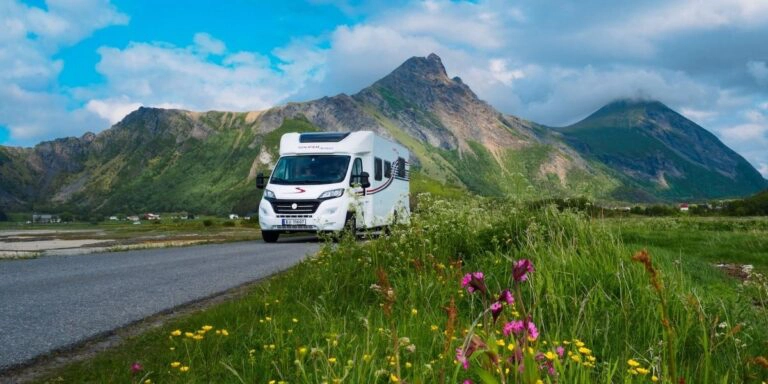
Motorhome Tips for Beginners – Essential Know How for Motorhome Life
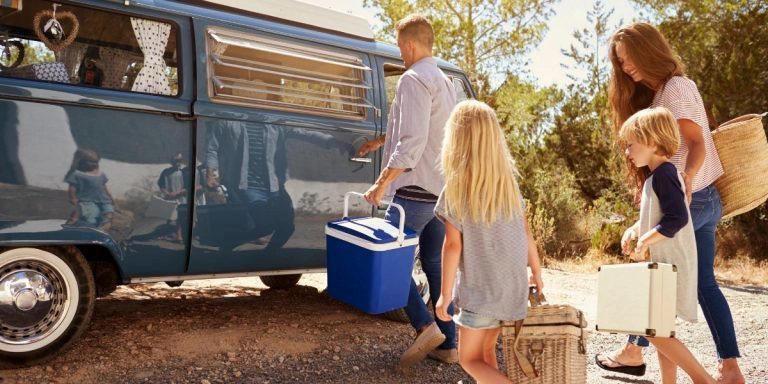
20 Amazingly Simple Camper Hacks
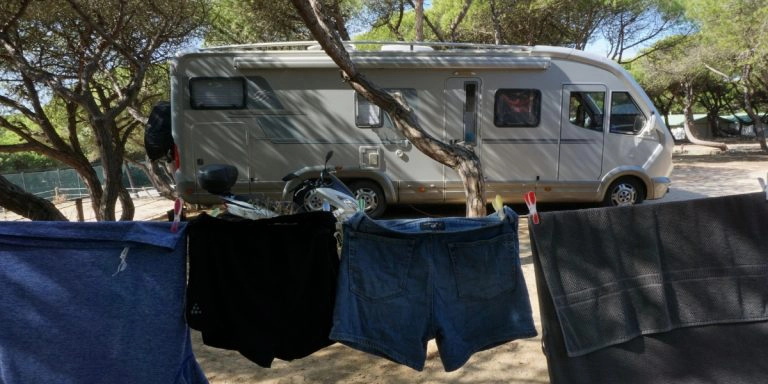
Motorhome Washing Machines – Which Is Best for You?
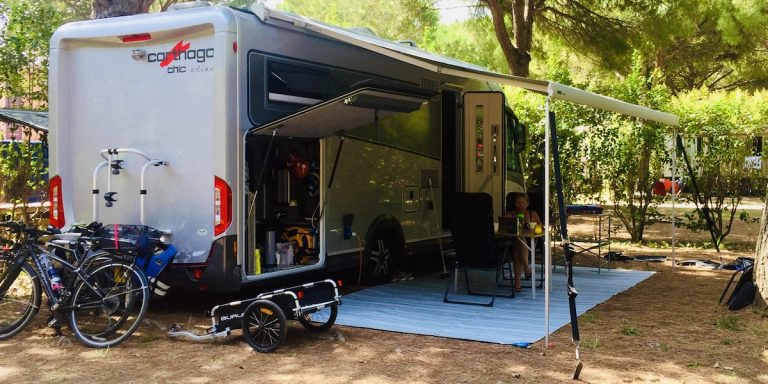
How to Take Your First Motorhome Trip
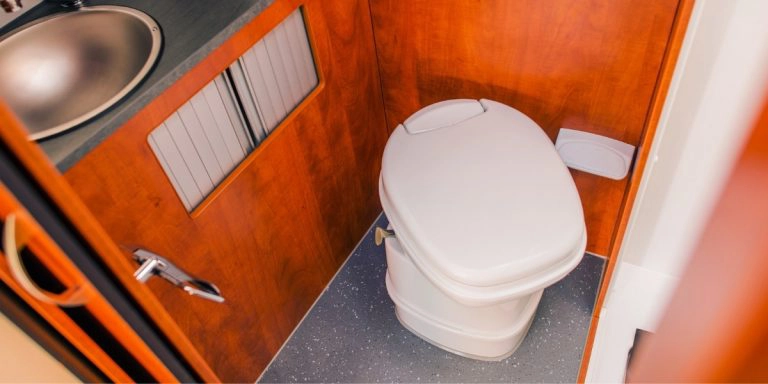
On-the-Go Convenience: An Easy Motorhome Toilets Guide
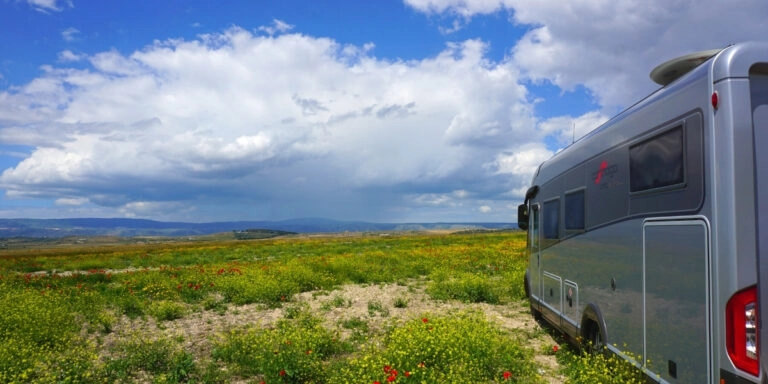
Motorhoming Made Easy – Your Top 20 Questions Answered
Love it pin it.
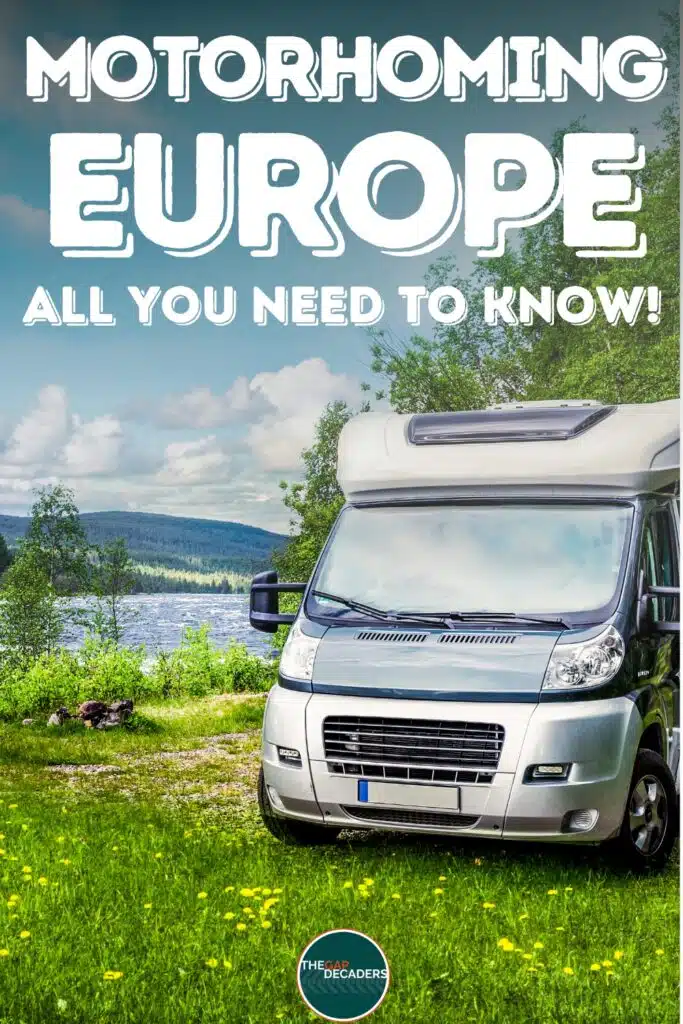

Travel | Explore | Inspire

The Ultimate Guide to Travelling Europe in a Campervan

Disclaimer: Some of the links in this post are affiliate links, meaning that if you click through & make a purchase, I will receive a small commission at no extra cost to you.
Has it been a dream of yours to travel Europe in a Campervan? Then look no further – this comprehensive blog post is FILLED with tips and advice on how to have the best van adventure ever.
We spent 8 months living in our beautiful Ford Transit campervan conversion exploring Europe, and now you can too with the help of this guide. We get asked a lot about how we did it and what it costs so we are sharing our experiences, the good and bad with you!
So if you are curious about what it takes, already have a camper van or want to add a road trip through Europe to your bucket list – dive right in. We are not leaving any details out- it’s stuff like this we wish we had known before we left on our trip.
Why Travel Europe in a Campervan?
How much does it cost.
- What to Consider Before Buying a Campervan?

Converting Your Van
Our route through europe, where to camp in europe, the best campervan resources, our van essentials – must have items, departure checklist.
- Petrol, Tolls and How to Avoid Them
Mobile Data
- Our Favourite Free Camping spots with GPS Co-ordinates
Location Highlights
Our whole route in detail.
- Freedom! Whether you buy a used motorhome or decide to build your own, we think the freedom that this gives you when travelling is the best feeling in the world!
- Being able to sleep wherever you want- next to amazing beaches, mountain views and lakes. You name it – having a van allows you to park and sleep in places that you never could do on a normal trip.
- Choose how long you want to stay and where, while having your own home to sleep and cook in also saves money.
- You can take everything you need with you for your favourite activities – we took surfboards, bikes, skateboards and snorkelling kits. Always be prepared for an adventure!
- Outdoor living and camping life with all the home comforts! We loved how homey and comfortable our van was.
- Travel for longer , spending less money.
Our daily budget was approximately £25 per day. This meant for 8 months we had a budget of £6000 for food, gas, petrol, tolls, parking/camping and sightseeing between the two of us. This budget for us, was super easy to stick to. We were in it for the long haul and once you are on the road you realise how little you actually need to spend in order to have an incredible time.
Our camper van cost us about £6500 to purchase and convert. This might seem like a big investment including the daily budget, but once you sell your van you get that money back. Think how much money you would be spending on transport and hotels, the hours wasted on public transport and not being able to stay in some of the most insanely beautiful locations in Europe.
What to Consider Before Buying a Campervan
- Can you stand up in it?
Phil is 6ft 6 so this was a tricky one but most High Top/Roof vans have exactly that amount of head room. This will make your time in your van much more comfortable. Medium Roof vans also work for some people. If you plan on spending a long time travelling in your van you will 100% want to be able to stand up.
- Reliability !
We spent hours researching the pros and cons of various types of vans and which models might suit our needs. Try and get something with a good service history and ask a garage to give it a once over. Is it easy to get replacement parts abroad, how many miles on the clock etc.
- A good nights rest
A comfy nights sleep was high on our list as we were planning to be in the van everyday for 8 months. Luckily building our own van allowed us to plan our bed layout and what mattress we wanted. We loved our double memory foam bed so it was worth the effort researching!
- How self sufficient do you need to be?
We wanted to be able to go fully off grid for a few days at a time without having to fill up on water, empty our toilet and get supplies. So we had a fridge, large water storage, solar energy and running tap to keep us sustained.
- Do you want to live off grid?
How much electricity will you use or need – will you go solar and be a true off grid explorer? Getting a leisure battery that runs separately to your vans battery will give you so much extra power, you get even more time to be off grid by having solar panels.

It took us about 2 months working 6 days a week to do our Ford Transit campervan conversion! There are so many resources out there about how to plan and do the conversion. We loved using Pinterest for inspiration on designs, watching YouTube videos for how to guides and reading blog posts. Anyone who can use a few tools can get started from home once you have your van or motorhome. I had never used many of the tools before and built an entire kitchen from scratch.

We started off catching a ferry from Poole in the UK to Cherbourg in France and decided on a clock wise route of Western Europe. Our plan was to drive a maximum of 1-3 hours a day between locations. This worked out pretty perfectly for the length of our trip. We stayed in some places for just one night and the ones we liked we stayed more. For example we stayed in Paris for 3 nights and Rome for 5 nights but stops in between may only be for one night. To determine our route we would get out our resources ( Camperstop book, Park4Night app and Google) and see where looked good, had good camping spots and was within driving distance.
When you travel Europe you can park in places called Aires, also known as Motorhome stops. These are dedicated campervan parking spaces with varying facilities. Run by the town municipalities or privately owned they are often free or cost a couple of Euros per night. Some of the privately owned ones can have more facilities and will charge more (Up to £20 depending on where they are located.)
If you are looking at camping somewhere that has a lot of facilities then a Campsite will suit you. Things like showers, toilets, washing machines, swimming pools, scenic camping spots etc.
- Free Camping
Europe is very well suited to free camping. This is where you park somewhere that is not a designated Aire or campsite. You are parking your van in a space that allows overnight parking and have to be self sufficient. These could be side roads, beach car parks etc. You will have no facilities and can generally park for free for a night or two. The rules change from country to country and you must respect the local authorities. Most importantly, in order for free camping to remain allowed in Europe you must always leave no trace, never leave rubbish behind and be respectful of noise.

- Camperstop Europe Motorhome Guide
This was such a great resource for us for when we were on the road. Camperstop is a book you can purchase that has over 9000 of the Aires in Europe listed with GPS coordinates. You will find that certain countries have more aires than others so you may have to mix up the types of places that you stop.
If you are going to buy one resource- let it be this one .
- Campercontact
Campercontact is a website and app that is run by volunteers. You can search for Aires all over Europe just by searching by location. There are photos, reviews and GPS co-ordinates.
When we were in Germany, about 3-4 weeks into our trip we met someone at an Aire who happened to mention the app Park4Night. From this moment on it became one of the best resources we had for our trip in finding free camping. The information on the app is user generated, with people stating GPS coordinates of where they managed to stay for free! People can then rate these locations for future users. These locations range from side roads with free parking to cliff sides overlooking incredible beaches. It saved us an incredible amount of money and allowed us to stay in some of the most insanely beautiful locations that you would not normally be able to stay.
Ensure that you get a good GPS device with up to date maps for all of the countries that you are going to visit. As most of the information for where to stay is given in GPS coordinates this makes it a lot easier navigating. You will also be able to see where there are toll roads (and there are a lot) and how to avoid them. It will also inform you of the local speed limits for each country.
- Big Road Atlas – Europe
We also found it incredibly useful having a paper map. As our route was not set in stone, we would only plan where we wanted to visit a few days to a week in advance. You can plot your route on the paper map, which is also a lot of fun. It also becomes handy if for some reason your GPS device stops working and you need to go old school.
Get your Big Road Atlas here .
A great place to start to get your design ideas is Pinterest – there are thousand upon thousands of boards where you can get ideas. We had a particular style in mind as we needed space for our bikes and surfboards inside the van. It served as a great resource for us and helped in the planning process greatly. Every van design is so unique to each owner and it’s incredibly inspiring to see everyones camper van hacks.
- Fellow Travellers
Ask other people who have done this before for their advice. If you don’t know anyone personally there are plenty of blogs, forums, instagram pages all dedicated to #vanlife. Like this one for example. Don’t forget to pin this to Pinterest for reading later.
- Where to shop for food
Without a doubt the best place to shop for food in Europe is Lidl. This supermarket is in practically every country, has large carparks and cheap and delicious food.
Portable Toilet for Campervan
We debated this essential a fair bit before we decided to get one. Phil didn’t think we needed one and I did. In the end we realised it was a must have and enabled us to have a lot of off grid camping experiences. It is easy to build in to the framework of the van so it stays hidden. It is super easy to empty and clean. We would never do this trip again without one.
Get the Portable Toilet we used here .
Portable Electric Camping Shower
There are many different ways that you can have a shower in a van these days, no matter the size. Our shower was an outdoor one we plugged into to the back of our van using the power generated from our leisure battery. When the back doors to our van opened we simply placed a curtain rod with a shower curtain between the doors for privacy.
Get the Portable Electric Camping Shower we used here .
Campervan Fridge
Something we also debated whether to get because they cost quite a bit of money, was a fridge. Deciding whether to get one depends on how long you are going to be travelling for. As we were going for 8 months we deemed it necessary, we especially appreciated it in the summer heat wave enjoying our cold beers. There are several things that you have to take into account when getting a fridge. Does it need a flat surface, will its temperature remain low enough for the country you are visiting, so we recommend doing a lot of research.
We absolutely loved ours – this is the model that we got here .
Solar Panels for Campervan
We fitted 2 of these to the roof of our van and it kept our leisure battery charged long enough for us to be able to camp off grid for quite a few days. If you want to reach some off the beaten locations and not rely on plugging your van into electricity at campsites then we highly recommend fitting these. We did not need to plug in our van to external electricity sources our entire trip.
Your Vans Security
Van theft in Europe is quite common in certain areas and something you should definitely be aware of. Especially if you are keeping all your worldly belongings inside.
We fitted a sliding bolt lock to the inside of our back doors as an extra precaution. You will also want to consider where you park your van and always carry your important belongings with you (passport etc).
We unfortunately had our van broken in to when we were in Portugal. They broke open our side door window and climbed in taking the closest belongings they could find. This unfortunately happened to be my empty leather bag I treasured which had my wedding ring inside, my backpack with our DSLR camera, our hard drive with 6+ years of travel photos and our wash bags. These just happened to be left inside on this day when we visited the beach for just 1 hour. When we visited the local police station they were not surprised this had happened as it was very common in that area.
All we could have done was park somewhere more populated and not have left our belongings inside. We parked in a beach car park but right at the back because we wanted to camp there in the evening. Luckily for us there was a campervan shop close by so we could fix our window easily. But always be sensible, park in busy places when leaving your van and look after anything important.
A Good Mattress
One of the best purchases we made was getting a proper memory foam mattress. As Phil is quite tall we wanted to sleep lengthways and you can purchase shortened memory foam mattresses designed for boats which fit perfectly in a camper. When you don’t have a huge amount of living room this makes your time in the van so much more comfortable.
Mosquito Net
Having a mosquito net is definitely worth investing in. If you plan to travel when it is warm outside then you will more than likely want to have your windows open or even your doors. We had a mosquito net built into our window but would have loved one for our doors.
At dusk the mosquitos love to invade your van if you have the doors open – imagine your van being 40-50 degrees inside and you want to cool it down. Once you settle down to sleep, that is when you will spend all night irritated by buzzing noises flying past your ears every few minutes. Take heed of this advice, many nights were ruined by mosquitos invading our van.
Ventilation
Temperatures during summer in your van can get particularly high. The hottest our van reached was over 50 degrees inside during the peak of summer. We had a roof window installed which helped but what made a huge difference was having a fan that we attached to the wall. We didn’t manage to get the fan until half way through the trip, a huge mistake not having it before we started.
Get a fan like the one we used here .
Collapsible Table and Chairs
Grab a couple of collapsible camping chairs and a table to complete your alfresco dining situation. The chairs can be used for multiple purposes and just extend your living space. A collapsible table also means you don’t need a permanent fixture inside and creates more space.
Get the table and chairs like we used here. For the table click here and for the chairs click here .
Power Source
So you can go down two routes when designing your van. The simple DIY route where you just use battery powered lights and will charge your devices when you are driving using the cigarette lighter socket. The more advanced route is to have a leisure battery that supplies electricity to your lights, fridge, shower and electrical sockets so that you can charge devices when the engine isn’t on. Combine this with solar panels and you won’t need to charge the battery by driving much.
Gas for Cooking
We debated about what type of gas supply to get for our cooker for quite some time. For you it will depend on how long you are travelling for.
If you are planning on going on a short road trip, anywhere up to 1-2 months then i would say that you can buy a normal camping gas cooker and canisters.
If however you are planning on a longer journey as we did then you might want to consider purchasing a refillable LPG canister. Many of the European petrol stations have LPG pumps designed for filling up cars and you can buy the appropriate canister heads for each country. It is a lot cheaper and lasts a long time, we only had to fill up twice in 8 months. Be warned though, if you convert a camper van, filling these LPG canisters can be tricky if they are located inside your van. This is because some petrol stations deem it dangerous to do so.
Van Insurance
Ensure that you have comprehensive campervan insurance before you depart. If you plan to travel for an extended period of time outside of your home country then you will most likely need to purchase a specialised insurance policy.
It gets quite tricky determining if you need a campervan insurance policy or a normal van insurance policy if you have converted your camper. The way that this is determined is dependant on what permanent fixtures that your van has in place and then the DVLA classify your vehicle. If you have an accident and your van is not insured correctly this can cause problems when it comes to claiming. So you have to ensure that your policy covers you.
We used Adrian Flux as they were the only company that would cover us for the length of time that we needed in Europe. They were also the only company that offered us a policy for a campervan IN conversion (I.e not completed).
This may be different if you are from the UK now due to Brexit so it is worth shopping around and getting quotes on who will cover you. People often will get a camper van insurance policy over a normal one because it is a little cheaper. Obviously if you have a standard RV then it will be a much simpler process than insuring a self built camper.
You can find details for classifying your vehicle type with the DVLA here :-
Breakdown Cover
We cannot rate this product highly enough. For a couple of hundred pounds for an 8 month journey this cover paid for itself. Let me tell you why…
Unfortunately for us, just 3 weeks before we were due to return to the UK our van broke down in Northern Spain. Yes, we managed to travel for over 7 months across the whole of Western Europe without a problem and then on the home stretch it goes kaput!
Luckily we had European Breakdown Cover and it honestly saved the rest of our trip. They provided a weeks worth of accommodation for free, a hire car for the entire duration that our van was at the mechanics, which was several weeks! They also provided flights home AND picked our van up from the mechanics and shipped it back to our home address.
Unfortunately the van could not be fixed in Spain, not only were they quoting an insanely overpriced bill, they didn’t get around to inspecting the van for 2 weeks. It was on the advice of our breakdown cover rep that we get it fixed in the UK to save money. Needless to say we think this is worth investing in. You just never know what is going to happen and it can cost thousands to either fix your van and/or ship it home.
Travel Insurance
As with any trip it’s super important to get a travel insurance policy for the duration of your trip. As someone who has had to claim on travel insurance policies in the past I can attest their worth and importance.
European Driving Kit
Most countries in Europe will require that you have a driving kit in your car at all times. These will include things like First Aid Kits, Visibility Vests, Warning Triangles. You may also need to apply headlamp stickers when driving in certain countries. Check what you need for each country you are planning on visiting and then buy the kit that has everything you need.
Get your kit here .
Petrol and Tolls
Petrol in europe.
This will be one of your biggest out goings on your budget. Since you will most likely be travelling long distances, the cost of petrol does add up and takes a huge chunk out of your daily spends. Prices vary from country to country with the cheapest we found to be in the tiny country of Andorra (it is tax free there).
These are temporary tax discs that you need to purchase before you enter certain countries. You can purchase them from lots of petrol stations before you cross the border and they are valid for varying amounts of time dependant on how long you plan on being in each country. We had to purchase Vignettes for Slovenia and Austria on our route (see below for full list of countries we visited)
Toll Roads and How to Avoid Them
Lots of the roads in Europe have tolls to pay and it is worth doing a bit of research before you embark on your route to see if you can avoid them. They can often make a journey far quicker but it is worth weighing up the prices versus time spent saved. Prices can be anywhere up to 50 euros depending on how long the route is.
For example if you plan on using the Mont Blanc tunnel to Chamonix it costs almost 50 euros, just to travel through the tunnel! The alternative route over the mountains is not even worth considering.
However if you take these tolls into account on your route it can help with your budget before you depart. Your GPS device will be able to tell which routes have toll roads and you can find out the costs online. You can then use your map to check if the alternative non toll roads are much slower. Often they can be much more scenic and only a little slower.
Currently you can use a UK sim card in Europe for up to 90 days as if you were at home. If you plan on travelling for longer than 90 days then you will need to think about alternative options.
We purchased local sim cards in some countries as they are pretty cheap. If you encounter problems with your SIM cards it can be difficult to rectify if you cannot speak the local language. Local sim cards are the simplest and cheapest route to take.
There are portable wifi devices that you can purchase that allow multiple devices to access the wifi. You pay a monthly fee but these are very expensive. It ultimately depends on how much time will be spent on the internet – will it be light use researching your destination or heavy use working on the road.
Our Favourite Free Camping Spots
Iconic locations.
Italy: Bellagio, Lake Como lat.45.976601 long.9.25433, 51 Via Alessandro Volta
A car park located on a hill overlooking Lake Como in Bellagio. A short walk to town where you can catch the passenger ferry to Menaggio and Varenna. Free fresh water available with little passing traffic. We stayed 2 nights.
Italy: Rome – Villa Borghese, Viale dl Giardino Zoologico
Imagine staying in the centre of Rome for 5 days for free! We found this spot on a blog post and it was perfect. Down a quiet street, next to the Zoo. Walking distance to Villa Borghese Park and central Rome. A diamond find for free camping.

The Mountains
France: Chamonix, Mont Blanc lat. 45.93312 long.6.884868
Great shaded wooded area, suited to smaller and larger vans than motorhomes. Nice picnic area and close to main road into Chamonix with biking trails accessible.
France: Les Gets, lat.46.149799 long.6.6582, 310-328 Route des Pesses
We stayed here for 4 nights for free. It’s a car park at the base of the town with access to toilets and water. Easy walk to town and quiet at night.
Northeast Spain: Montserrat GPS Unknown
On our way to Barcelona we stopped for a night here. There are plenty of places to stop along the way with the most incredible views of the mountains. I recommend using the Park4Night app to find a space to park.
The Most Scenic Viewpoints
Southern France: Views of Monaco, lat. 43.734501 long. 7.40159, 1094 – 1158 Route de la Tete de Chien
If you want insane views of Monaco/ Monte Carlo park here for the night. Hike up the Tete de Chien at night and morning for incredible city views. Picnic benches available.

Southern France: Valensole lat. 43.822179 long. 6.017428
Quite rural spot not far from the road, shaded under trees with great views of the lavender fields. Waking up to the smell of lavender and possible farmer. Accessed via private road, very private and beautiful.

Northern Spain: Llastres lat 43.51675 long. -5.269843
Great spot with ocean views. Good BBQ area and easy walk down hill into beautiful fishing village of Llastres.

The Best Beach Camping Spots
Northern Spain: Ferrol lat 43.556571 long. -8.298003
Absolutely stunning beach car park location. Literally overlooking the ocean with direct beach access. Bins and toilets available in season.

Belgium – Belgian Beers in Rochefort and Waffles in Brugge .
Netherlands – Lisse for Tulip Season and Amsterdam during Kings Day.
Germany – Heidelberg for history and castles. Triberg for the original Black Forest Gateaux and home of the Cuckoo Clock. Lindau in Lake Constance – just wow!
Austria – Salzburg – pretend you are in the Sound of Music!
Slovenia – Lake Bled , such a beautiful town and stunning lake. We would love to come back to Slovenia and explore more.
Croatia – Rovinj , a cute and colourful fishing village with incredible sunsets and seafood. Kamenjak National Park for endless nature and ocean vistas. Plitvice Lakes – the most insane set of lakes and waterfalls we have ever seen.
Italy – Alberobello , home of the unique Trulli houses. Matera – a cave town situated on a gorge, Wonder Woman was filmed here! Positano , an iconic place to visit in Italy. Pompei – visit this ancient towns ruins for free on the first Sunday of every month. Rome and Florence for the history and architecture, Tuscany for the rolling hills and Venice for the winding lanes and Burano. A dream come true visiting Lake Como and Lake Garda. Basically we loved all of Italy!
Southern France – Valensole for the lavender, Verdon Gorge for the most insane turquoise blue water and Tete de Chien for views overlooking Monaco. Cascade du Sautadet and Vallon Pont D’arc for water sports heaven in the Ardeche.
Southern Spain – Barcelona for Gaudi art and Tapas, Valencia for the Art Science Park and Nerja for dreamy town beach vibes. Puerto Banus for high fashion and luxury, Tarifa for kite surfing heaven and Seville for flamenco!
Portugal – Benagil caves , a huge cave with a hole in the roof and a beach inside and Ponta da Piedade for incredible coastal views. Lisbon for city chic and Pastel de Natas (Portuguese egg custard tarts) and Sintra to visit Pena Palace. Porto is a coastal city, you must see the Livraria Lello, marvel at the stunning tiles and cross the Dom Luis bridge.
Northern Spain – We adored Northern Spain for the Pico de Europas , San Juan Gaztelugatxe and San Sebastian . Incredible hiking and Pintxo’s – like tapas.
France: Cherbourg – Cambremer – Paris – Epernay (Known for Champagne)
Belgium: Rochefort – Dinant – Namur – Brugge
Netherlands: Lisse – Amsterdam
Germany: Heidelberg – Baden Baden – Schiltach – Triberg – Freiburg im Breisgau – Lindau – Garmisch Partenkirchen
Austria: Salzburg – Hallstatt – Gmund
Slovenia: Bled
Croatia: Rovinj – Premantura – Plitvice Lakes – Zadar – Split – Dubrovnik – Split (Ferry to Ancona in Italy)
Italy: Ancona – Assisi – San Benedetto Del Tronto – Amatrice – Lake Compotosto – Mattinata – Alberobello – Locorotondo – Matera – Sorrento, Day trip to Positano – Pompei – Rome – Siena – Tuscany Hills – Florence – Verona – train to Venice – Lake Garda (Sirmione – Moderno – Torbole) – Molveno – Andalo (Dolomites) -Lake Como (Menaggio, Varenna, Bellagio) – Aosta
France: Chamonix – Les Get – Tigne
Italy: La Thuile – Finala Ligure
France: Menton – Monaco – Nice – Canne – St Tropez – Verdon Gorge – Moustiers St Marie – Valensole (lavender) – Cascade Du Sautadet – Vallon Pont D’arc- Villefranche de conflet
Spain: – Montserrat – Barcelona (Gaudi) – Cambril – Valencia – Nerja – Puerto Banus/ Marbella (fancy rich place) – Tarifa – Seville (flamenco)
Portugal: -Albufeira – Benagil (caves) – Lagos (Ponta da Piedade) – Sagres – Lisbon – Cascais – Sintra (pena palace) – Ericeira -Peniche – Porto
Spain: Oia – Santiago De Compostela – Ferrol – Cudillero – Llastres – Covadonga – Picos De Europa – Llanes – San Juan De Gaztelugatxe – Bermeo/Bakio – Mundaka – San Sebastian
France: Saint Jean De Luz – Biarritz – Hossegor/Seignosse
Don’t forget to save for later – Pin to Pinterest

Share this:
- Click to share on Pinterest (Opens in new window)
- Click to share on Facebook (Opens in new window)
- Click to share on Twitter (Opens in new window)
- Click to share on LinkedIn (Opens in new window)
Rachel Hughes
Hey there! I'm Rachel Hughes aka Ever The Wanderer. I am a Digital Media Creator and long term travel expert. I help people realise their worth and what they can achieve.

How to design your dream life?

The 5 Tips you Need to Pitch Brand Collaborations
You may also like.

The London Pass

The Ultimate Corfu Travel Guide

The Ultimate Staycation Road Trip in Devon and Cornwall
24 comments.
So interesting! My husband and I rented a campervan in Iceland and loved it. We never thought about traveling main land Europe in a campervan. Thanks for sharing!
Oh I’d love to visit Iceland by campervan! That must have been amazing! I highly recommend mainland Europe it’s honestly one of the best things we have ever done
Loved reading about your trip! I have so many dreams about doing a trip like this. Well, I guess I’ll start by doing something in California and the Western US. I didn’t know about portable toilets and showers. Good to know about those. Question, how do you factored for seasonality? Seems like you avoid traveling during winter (is that true?). Also, reading about the incident in Portugal made me wonder if a portable safe or another security mechanism exists. I have never thought about it but going to do some research.
Ah thank you! It was such an incredible journey for us! We can’t wait to do it again! We have done a few road trips in the US but never by campervan so that’s definitely on our list too. We planned to travel in the summer but a lot of people to go in winter as there are places with very mild temperatures like Portugal. A lot of vanlifers head there in winter, or pop in a wood burning stove and head to the mountains in the snow. Although I’m not sure we would do that, might be too cold haha. A portable safe is a great idea, unfortunately campervan windows are all built the same and have tiny plastic latches which can easily be broken. You just have to not leaves valuables inside I think or have a very secure safe. Some people had glass windows broken, if a thief wants something bad enough they don’t care. Next time we will definitely be more prepared.
Oh wow what an adventure it could have been! I would love to do something similar next year and reading your post just made me wanna do it even more. Can’t wait to hit the road again! 🙂
Wow this is an epic guide! And kudos to you for buying and converting your van for such little money. I’m struggling to buy one at the moment; the van market in the UK is not normal – dammit COVID.
Ah thank you! Yeah there weren’t too many vans around at the price point we wanted but we got lucky. I’ve not looked lately to see what it’s like but I think it’s a great investment because we got it all back plus extra when we sold it!
This is the kind of trip that I’d dream about forever (it’s literally my dream trip) but never actually do because I’d think it was unachievable. This post has changed that completely, and where you’ve included things to consider when planning a campervan trip has given me the confidence that I could do this! Really great post, thanks so much for sharing.
Ah I’m so glad I could motivate you to do it! That’s always my goal to show people how achievable dreams can be!
This is exactly the kind of guide that I need now! I’m in the process of swapping my car for a van to travel full time, so it was the perfect timing to come over your post. You really aswered a lot of the doubts I’ve had, especially considering extra battery/solar panel, toilet/shower etc. Saving this for when I get my van:)
Oh awesomeness best decision ever! Yeah we really thought about what to include in the post given the experience we had to make it easier for others! Solar panels were an awesome idea, so much off grid camping. And 100% a toilet and shower 😊
A great trip with so much information shared! Would love to tour around Europe.
Kariss Ainsworth
Doing this is a total dream of mine, van live looks amazing
It must be so cool to discover Europe with a camper van! I appreciate all the tips and info you gave, I am sure this will be super useful for the day I want to try this kind of adventure!
What an incredible adventure this must have been! Love all these tips and it’s interesting to see which places you chose to stop off at.
Michelle du Toit
Thank you for compiling this insanely useful guide to campervanning! Hubby and I are only at the stage where it’s a dream for us and your blog has covered a whole lot of tips that haven’t even crossed my mind yet.
It is a dream worth investing in for sure. Honestly the most free we have ever felt
What a beautiful itinerary. How long did it all take you? Living in Europe, it is hard to find time to do a full-blown road trip, I always end up just going to one place and back. Pinning it for when I finally find the time for this 🙂
Thank you! The Itinerary took us 8 months. The van build took two. Yeah you definitely need to make the time and it is so worth it!!
I have been thinking about doing a campervan road trip, but doing it in Europe seems pretty amazing!
Love this article! I am absolutely impressed by how many places you managed to visit on your road trip around Europe. Your photos are so beautiful as well.
Vanessa Shields
This sounds like the most amazing 8 months getting to see so many places by campervan! I would love to do this one day as long as the mattress was comfy. Lol. That would make or break it for me. I’d probably buy a van already updated like yours to make it easier. So cool how you can visit so many locations at your leisure this way!
This is incredible and super helpful. It’s honestly always been a dream of mine to backpack through Europe – though a camper van sounds even better! Especially since I’m not as young as I once was 😉
Ankita Sharma
well-written post! A friend of mine likes to travel and I was going on a trip with him. There was home setup in his car. Apart from this, I also watch vlogs of some couples, their setup is also similar. I liked the whole setup.
Leave a Reply Cancel reply
Your email address will not be published. Required fields are marked *
Save my name, email, and website in this browser for the next time I comment.
- Travel recommendations The world is a big place – not sure where to go? Get recommendations on destinations, the best times to go there, and what to do.
- Travel in the UK How much have you really travelled within the UK? There are so many local hidden gems waiting to be discovered – be inspired here.
- The taste of travel For some, the best way to experience a place is through its food. See the best places to go for dining and local dishes around the world.
- Tips & tricks Hack your way to the most amazing trips ever with tips on everything from how to pack your carry-on to how to eat dumplings.
- Travel experiences What’s your favourite thing to do when you’re travelling? Find the best things to see and do based on your interests or type of travel.
- News Read the latest news about the travel industry, our products and services, and what’s happening at KAYAK.
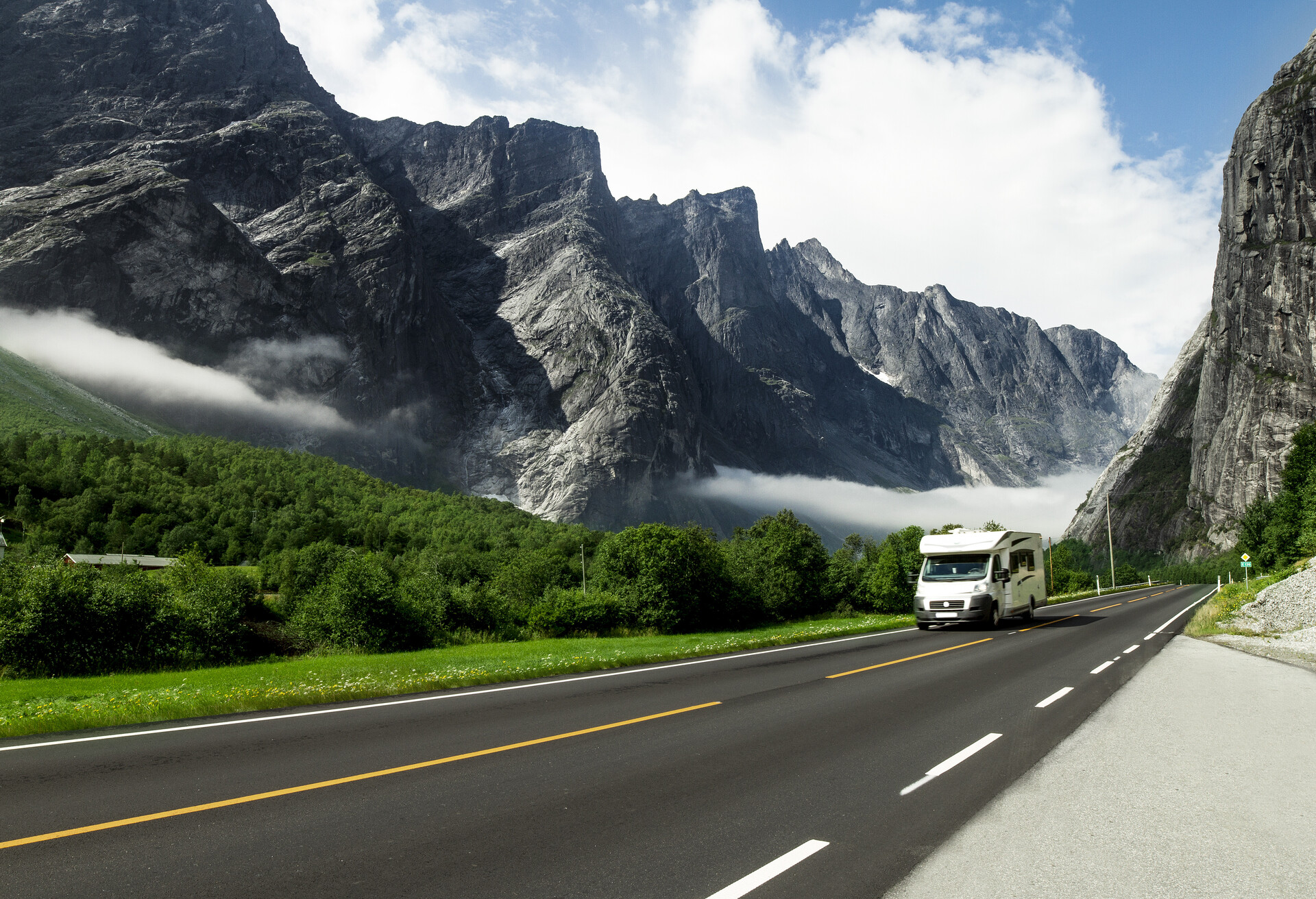
Campervan trip in Europe: Amazing routes and tips

Exploring by campervan has never been more liberating, with these hotel-rooms-on-wheels making it easy to sleep almost anywhere in Europe. It’s a freeing experience heading out on a campervan road trip, and there are tons of amazing routes hidden throughout Europe.From Iceland to Spain, we’ve compiled a list of some inspirational routes for your next adventure. Make the most of your trip by following our tips for your first camping trip.
Remember that you’ve got ways to stay covered if your travel plans change or get cancelled. Look for flexible flight tickets with no change fees and stays with free cancellation on our site .
First-time camper hire tips
Before you jump in and begin your grand tour of Europe, it’s important to know the basics that come with campervan camping.
- Plan your trip carefully – Avoid planning too much for your first campervan experience; you won’t be covering ground as quickly as with a car. It’s also important to take regular breaks.
- Pack your bags – Make sure heavy luggage is packed near the axle while light luggage is stored in the cupboards for a smooth driving experience.
- Find a campsite – Book in advance. Often, early reservations will save you time, stress, and money.
- Choose your route – Countries with large, wide roads are perfect for campervan beginners.
Ready to hit the road? Here are some of the best campervan routes in Europe for beginners.
Ring Road, Iceland
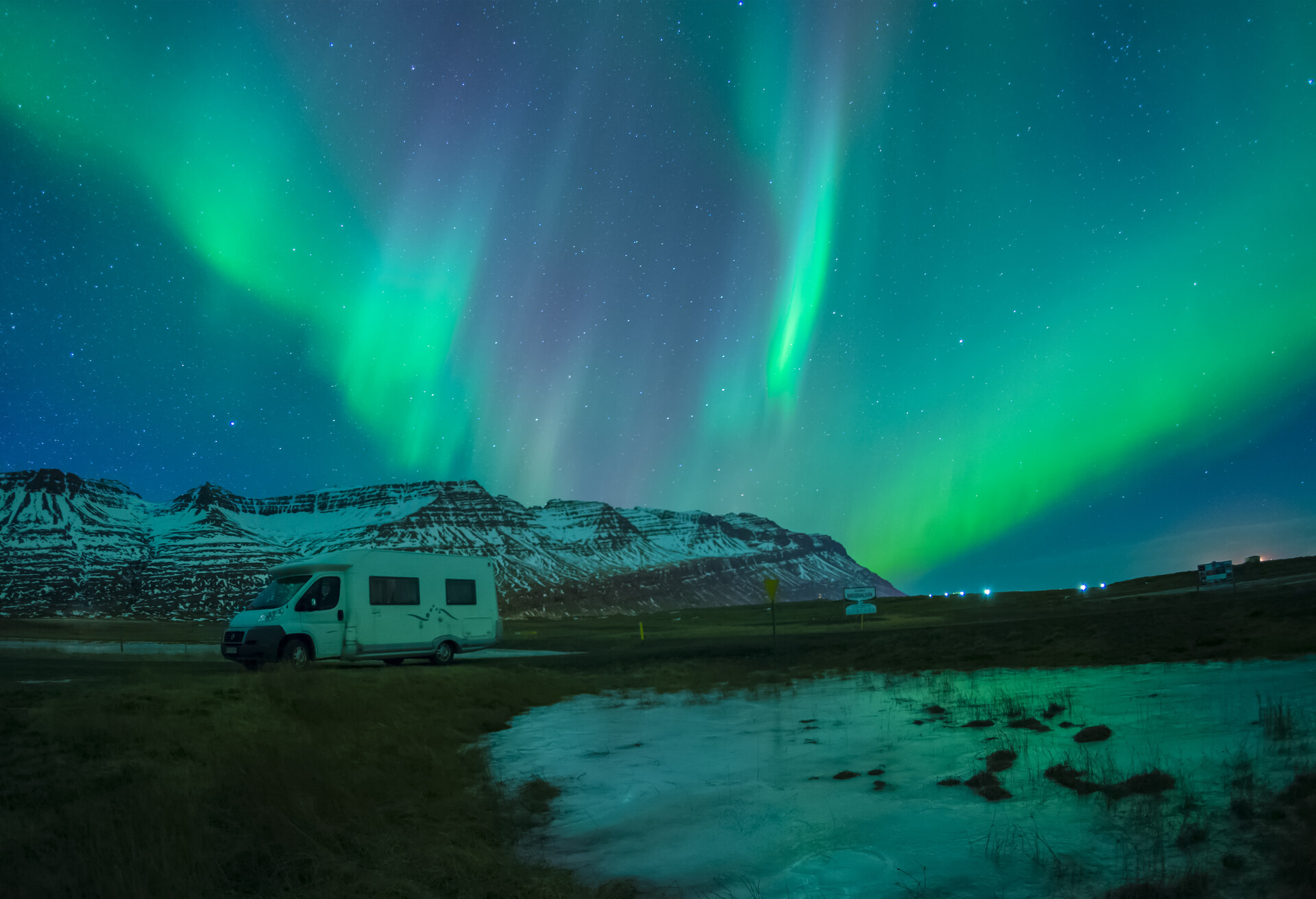
If you’re looking for a campervan road trip filled with natural wonders, head to Iceland. A perfect destination for beginners, it features wide streets and little traffic as well as easy access to spectacular waterfalls, bubbling geysers, and steaming volcanoes. The famous Ring Road is around 1,300 kilometres in length and offers plenty of stops along the way, including the famous Gulfoss and Seljalandsfoss waterfalls and capital city Reykjavik.
Find flights to Iceland
Find campervans in Iceland
Wild Atlantic Way, Ireland
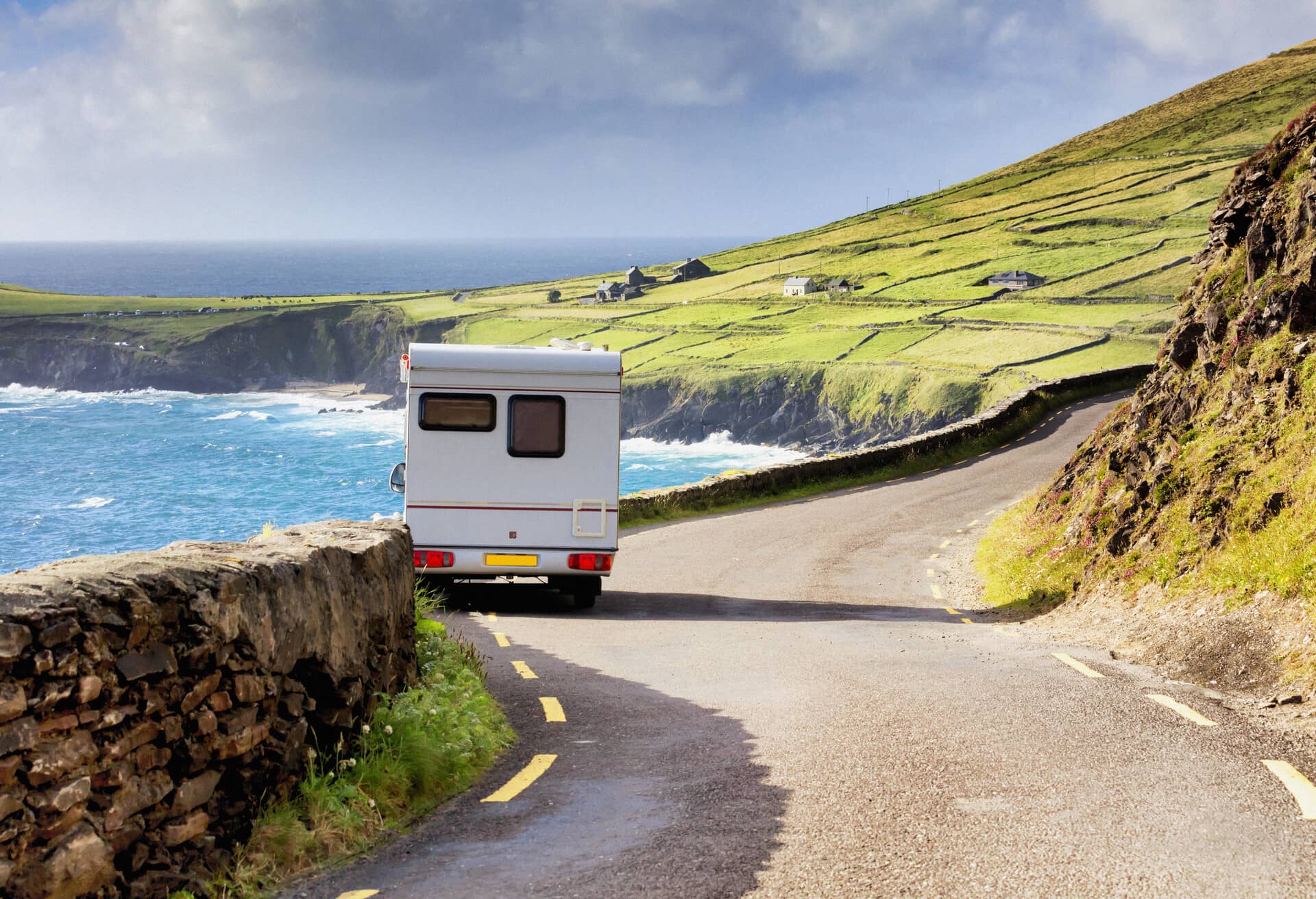
Ireland’s Wild Atlantic Way is a popular destination for campervan enthusiasts for a reason. This gorgeous 2,500-kilometre route stretches from County Donegal’s Inishowen Peninsula in Ulster to Kinsale, County Cork. It’s one of the world’s longest designated coastal roads, where you’ll be blessed with kilometres of beautiful shoreline. Pull over and marvel at the steep cliffs and incredible scenery blanketed in green, then make a detour at the village Malin Beg or dip your toes in the icy Atlantic waters.
Find flights to Ireland
Find campervans in Ireland
Route of the White Villages, Spain
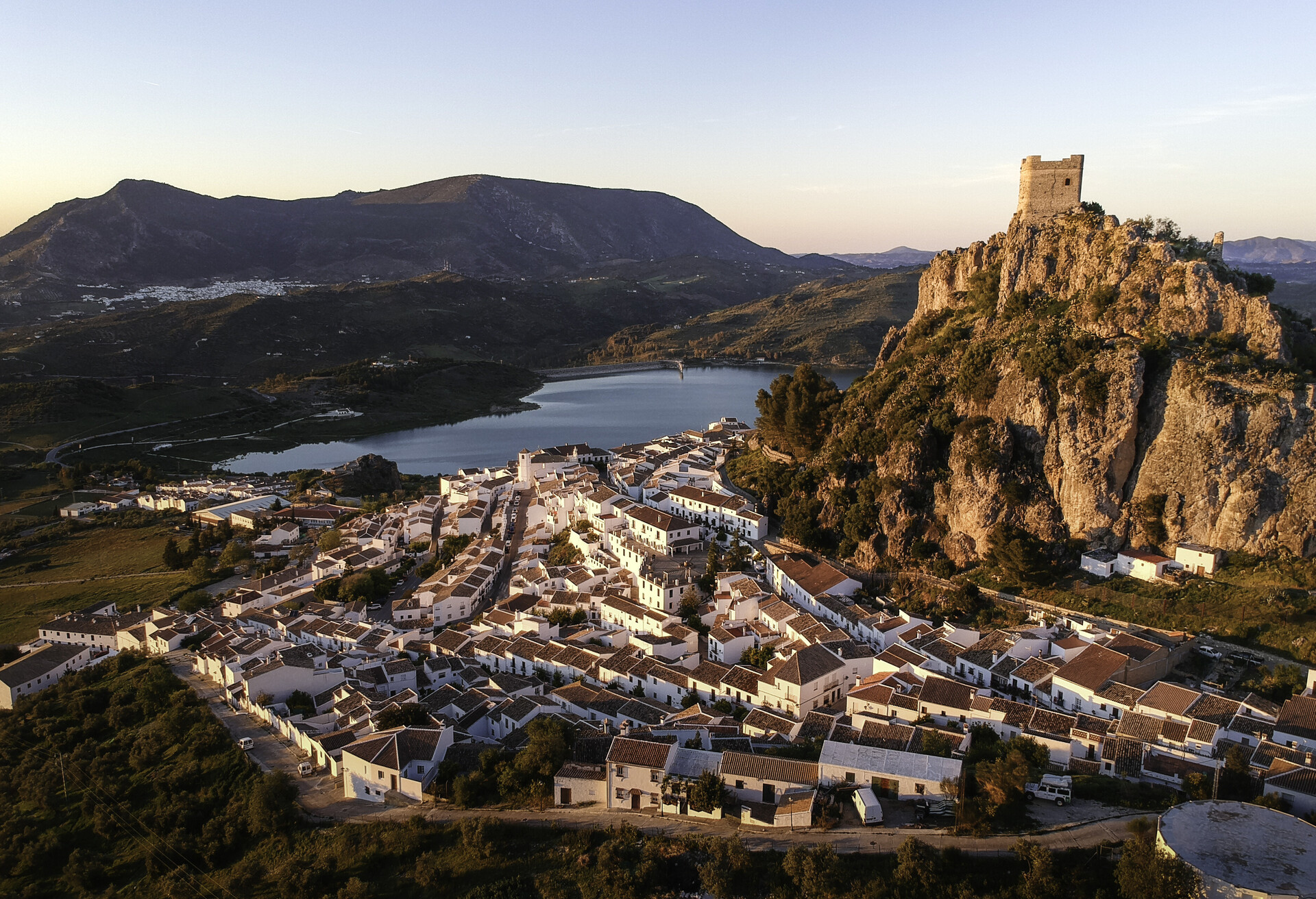
Locals know this route as “Ruta de los Pueblos Blancos”, a popular road trip in the northern part of Cádiz and Málaga through the picture-perfect Sierra de Cadiz Mountains and Sierra de Grazalema Natural Park . You can pick up your campervan rental in Seville, then follow the circular route through the 30 snow-white villages nestled in the mountains. Zahara de la Sierra and Arco de la Frontera are considered some of Spain’s most stunning villages, home to whitewashed houses, friendly locals and stunning backdrops.
Find flights to Spain
Find campervans in Spain
The Highlands, Scotland
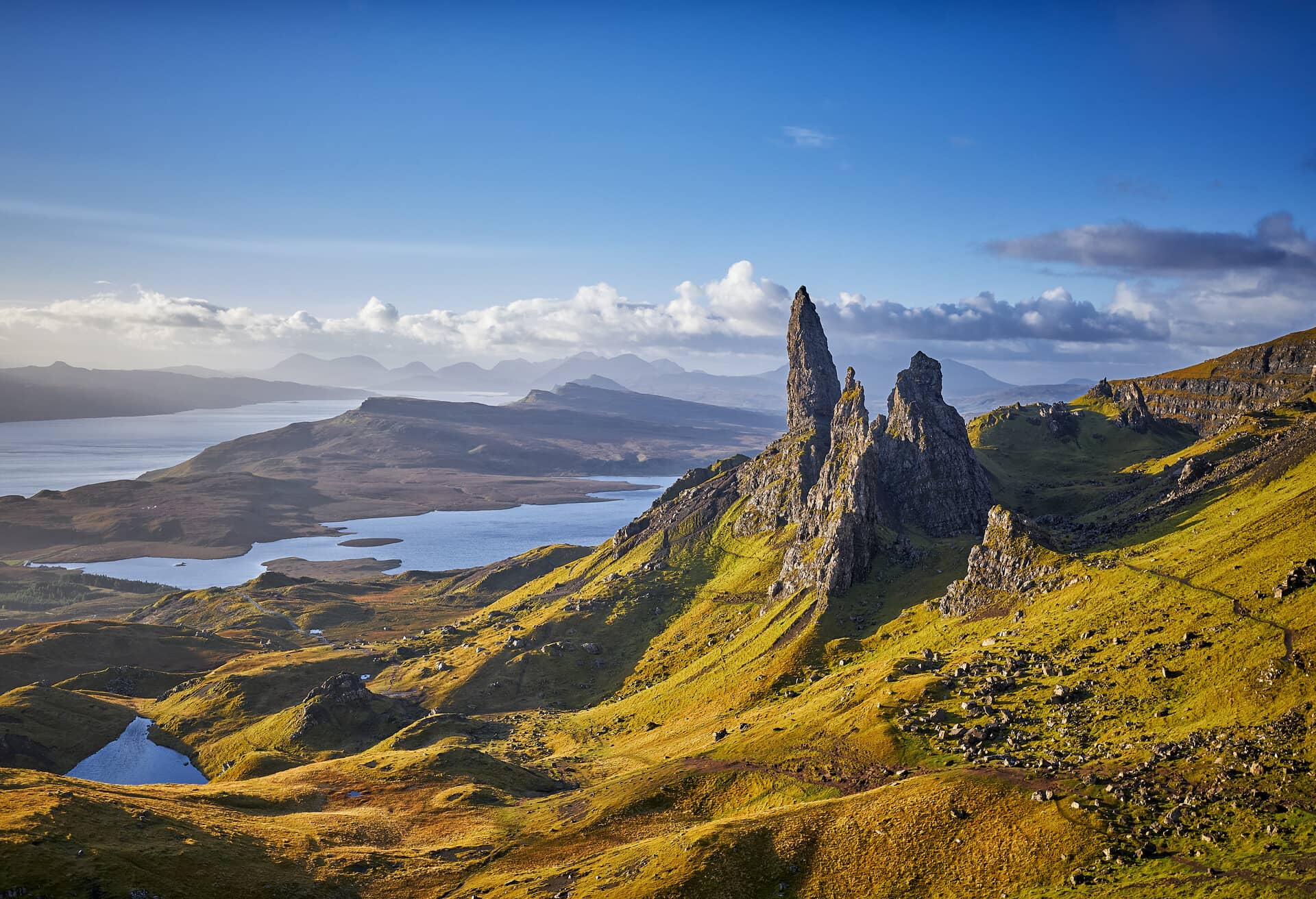
The Scottish Highlands have all the ingredients for an epic campervan road trip. In addition to charming towns and villages to explore along the way, you’ll encounter former battlefields and majestic castles. Start in Edinburgh and make your way to Fort William, then stop in Cairngorms National Park , Inverness, Loch Ness, and the Isle of Skye. Drive on the main road in Glencoe, through the heart of an ancient volcano, to discover mountain peaks carved out by icy glaciers centuries ago.
Find flights to Scotland
Find campervans in Scotland
Incredible European routes
If you’re dreaming of planning a campervan road trip in Europe, now is the time to go. You’re spoilt for choice with amazing routes to choose from, including this list of itineraries highlighting some of the most beautiful destinations in Europe.
About the author

Explore more articles

- How we work
- Hotel owners
- Advertise with us
- Airline fees
- Low fare tips
- Badges & Certificates
- Terms & Conditions
- YouTube Channel
- Travel Resources

Traveling Europe by Campervan: Our Tips for “Van Life Europe”
by Drifter Planet | Dec 6, 2019 | Road Trips , Most Popular Blog Posts

It has been a few years that we bought a campervan. In the time, we have driven around Europe in our van from east to west and covered many countries.
We drove to 11 different countries on our campervan, that includes three national parks, mountains, beaches as well as two music festivals .
With very little knowledge at the start of our first trip, we made a few rookie mistakes. Nothing serious but we laughed a lot at our stupidity and eventually learned how to explore Europe in our campervan like pros.
A lot of information that we needed about traveling Europe in a campervan wasn’t really available online because most of the website focused on living in a van, versus traveling in one.
Anyway, before we share our essential tips for exploring Europe by camper van, we’d like to discuss a few things to help you decide if van-life is really for you, and if it is – then what kind of van you really need.
Why Should You Consider Traveling Europe by Campervan?

Us with our van in Bosnia and Herzegovina
I’m sure you know how a typical first timer’s Euro Trip looks like. A little bit of Paris, Amsterdam , Rome, Venice, London, Berlin , Vienna, Zurich, Porto , Lisbon , Budapest and Prague – usually all on trains and buses.
Guess what, these are really the most expensive European destinations. Moreover, the train transportation is expensive in Europe, especially in Western Europe.
If you’re on this page already, then I’m sure you’re looking for something different. Maybe you’re looking to explore the lesser visited and under the radar places in Europe that you can’t easily reach by trains or buses.
The best part about travelling around Europe by campervan is that you can go literally anywhere you want.
You don’t have to worry about high internal transportation costs, schedules, and connections. It makes your itinerary super flexible and as a result, an entire layer of possibility opens up for you.

Scenic camping spot in Geirangerfjord, Norway – Traveling Europe by Campervan
Europe is one of the best continents for road trips because of super easy border crossing.
For instance, if you start driving in Belgium, you can be in Germany or France or Luxembourg or even the Netherlands in just a matter of 2-3 hours, and you won’t even realize that you’ve crossed the border because there aren’t any check points.
Just to recap, the below points summarize why exploring Europe by campervan is awesome.
- Public transport cost,
- Super easy border crossing,
- Flexible itinerary
- Access to smaller towns, natural sites and offbeat areas
Camper van vs Normal Van vs Caravan

Wild Poppy field on Rugen Island and a car with a caravan in the background
Many people interchange these terms but they aren’t the same. We all know what a van is, but let me define a camper van for you.
A campervan is a van that’s specifically made for camping with a sleeping space inside. Or, a normal van converted into a campervan.
Apart from a place for sleeping, ideally a campervan also has a place for cooking. Some camper vans also have toilets inside.

A caravan parked next to a lake in Slovenia
A caravan also has all of this inside or even more, but it isn’t a camper van. Just for clarification – a caravan is a wagon what you attach onto your car and drive. You can’t drive a caravan without a car that tows it.
What Kind of Van do You Need?
If you’re a couple on a budget that loves adventure, then get yourself a small campervan. A smaller vehicle will give you an advantage of letting you enter smaller lanes. Moreover, the cost of camping, toll and parking is much lower for smaller vans.
On the other hand if you’re a family with more than one kid, then it makes more sense to get a bigger campervan so that you have the space and comfort you need. These are the typical RVs (Recreational Vehicles) that you see in American movies.
These are further divided into Class A Motorhome (looks like a big bus), Class B Motorhome (looks like a cargo van, bigger than a truck) and Class C Motorhome (looks like a moving truck house). Normally the Class C Motorhomes are the most common campers that you see on European roads.
If you’re enjoying your retired life with your partner and driving around Europe, then get yourself all the comforts you need. Get a spacious campervan that has a nice bed, kitchen and sitting area.

Van vs camper van vs Motorhome vs Caravans – Tips for Van Life Europe – Infographic
Renting a Van in Europe vs Buying
Should you buy a camper van for the purpose of exploring Europe on it, or should you just rent one? The answer depends on many factors.
If you’re visiting Europe for a few weeks or a few months, then obviously you will rent a camper van and not buy one.
However, if you’re going to travel on the van for a longer period of time (say a 6 months or a year), then renting can end up being expensive. In that case, buying makes more sense. You can find vans to rent on this car rental search engine .
Buying a campervan isn’t as easy as renting one. Below are the points you need to consider before deciding whether you should rent a camper van or buy one.
- First, you need to have enough money. Campervans aren’t cheap and even if you look for a used one that’s very old, be prepared to spend at least ten to fifteen thousand euros.
- Second, buying a van comes with the hassle of paperwork.
- Third, buying makes sense as long as you’re sure you will actually end up using it enough and as long as you can sell it back when you’re done.
- Four, buying comes with an expense of insurance and repair costs – keep all of that in your mind.
If you’re a total van newbie and would like to just get a glimpse of VanLife to determine if it is really your thing, then just rent one. This will also give you an idea about what kind of van you actually need.
VAN LIFE TIPS SECTION 1: Sleeping in the Van

Our camping set up – campervan tips
The best part of “VanLife” is actually sleeping in your own little home on the road and waking up to an amazing view. In reality, you won’t have an amazing view everyday, but you can at least try.
Van Life Sleeping Essentials
There are many van life aspects where you can be cheap, but your mattress shouldn’t be one of them. Invest in a comfortable mattress otherwise you will hate your van.
If you’re not able to find a compact mattress that is easy to travel with for the size of your van bed, then just look for just a mattress topper.

Tips for Sleeping in the Van
Carry your pillow as per your sleeping habits. Make sure you’re carrying thin as well as thick blankets so that you are good to go for different weather conditions. European summers can be strangely hot and suddenly very cold in a matter of hours or days.
You will also need to get insulated covers to stop the condensation on the windows when it is cold, and also to keep the insides of the van cool during summer.
A silver thermal insulated window screen will also act as a black out curtain so that you can peacefully sleep after the the sunrise. [Btw, the sunrise occurs around 4:30 am in most of Europe during summer.]
Don’t have an air conditioner in your van? Neither do we. We do however have a battery operated Makita fan that works for 10 hours after a full charge.
I highly recommend this fan to you if you want to sleep comfortably during Europe’s summer heat. Summer means mosquitos, and Citronella mosquito repellant stickers will keep you safe. Plus they’re natural!
- Mattress or Mattress topper
- Pillows, blankets, bedsheet.
- Insulated window covers / Silver thermal window screen
- Citronella mosquito repellant stickers
VAN LIFE TIPS SECTION 2: Cooking in a Campervan

Outdoor camping cooking set up – Van Life Europe
Apart from sleeping in it, another amazing aspect of traveling on a camper van is cooking your own meals on the road.
No, you won’t cook while you’re driving but at parking places or camping spots. We have a lot of information to share about cooking on a road trip outside and inside the camper van, so we decided to create an entire section about it.
Do You Really Need a Kitchen Inside the Van?
Not Really. If you have a travel stove and a small cylinder, you can cook outside. We have both – a stove inside the van and a smaller portable stove but we cook most of our meals outside.
Why? Well, because baby K was usually sleeping inside when we cooked our dinner and it made more sense to cook outside. It was generally more convenient to cook outside after spending most of our day inside the van.
Van Life Kitchen Essentials
If you’re building your van and converting it yourself into a campervan, then here are a few things we have in ours that are essential for any motorhome kitchen.

Van Life Kitchen Essentials – Traveling Europe by Campervan
You will need a small countertop stove, a slot for the cylinder that’s preferably built into one of the kitchen cabinets, a sink, a small refrigerator, and multiple kitchen cabinets to store things.
It will make your life simple if you have one drawer that’s just for the cutlery, a hanging bag for plates, cutting board, cooking oil, a kitchen tissue roll fitting and small hooks where you can hang things.
Don’t carry a lot of kitchen dishes but only the basic stuff. Carry at the most two pots – one small and one medium-ish.
A small hand sized non stick pan is also a good to carry cookware. A cutting board, a big spatula (or two) for the non stick pan and pots, soup bowls, plates and cutlery and you’re good to go.
I haven’t seen a campervan that doesn’t have a refrigerator inside. In case yours is a van converted into a campervan, then it maybe doesn’t have a place for a fridge.
You can buy a small cooling box to store your food and use it as a makeshift refrigerator.
Your van also needs to have a small exhaust window on the top if you’re planning on cooking inside. If you don’t have a sink, then you can carry a bucket where you can keep your dirty dishes and wash them outside when you’re done.
Campervan Cooking Equipment
The stove inside your van can be a propane cooktop or even an electric cooktop. If your van doesn’t have one, then get yourself a portable stove and gas. A camping stove with 2 burners doesn’t cost double but is is surely useful so that you can boil rice or pasta on one and make sauce or curry on the other one.
If you have electricity in your van then get an electric kettle, it will make your life much simpler. An outside camping grill won’t cost much and it is surely a good to have item.
Campervan Food Essentials + Camping Meals
Simple rule – keep it short, fast and efficient.
We ended up buying a lot of useless cooking stuff before our first trip but we realised much later that we don’t need it all. We just need enough of the basic stuff when we’re on the road. Some of the easiest meals to make on the road are pasta and rice with daal.

Our of our camping meals – Pasta
Buy premade pesto, sauces and a lot of pasta to shorten your cooking time. Visit local markets and grocery stores to buy fresh vegetables to put in your pasta.
You can make a really good pasta sauce using avocados and you don’t need to cook it. Just mash avocado pulp with olive oil, garlic, lime juice, salt and chili. Add this to your hot pot of newly boiled pasta and your epic camping meal is ready.
Cook daal and rice together with salt and a few spices – it is called khichari in India. It is a “one-pot-meal” that’s perfect for camping and it always tastes good. Instead of daal, you can also add vegetables to make fried rice. In that case, you will just have to roast garlic, ginger and veggies for a few minutes in the pot and then add water and rice.
Just a recap, here are some awesome camping meals that you can cook in a jiffy. Most of them are vegetarian options but you can un-veganize them by adding smoked salmon or eggs or chicken.
- Pasta (raw avocado pesto, pre made sauces, or just with veggies)
- Daal and Rice cooked together ( Khichari )
- Stuffed wraps or Burritos (Get tortilla wraps and stuff them with kidney beans, garlic, peppers, corn, jalapeños, avocado, salmon – try everything)
- Toast with bananas / eggs / avocados / cheese
- Bratkartoffeln (as called in Germany) or Aloo ki sabzi (as called in India) – potatoes sautéed in oil, garlic, chili, onions and herbs. You can add spring onion greens on top for the extra oomph. Or, meat eaters can add bacon.
- Sautéed veggies. Buy or pick fresh veggies and sauté them in a pan with oil and herbs.
VAN LIFE TIPS SECTION 3: How to Make Your Life Simpler on the Road

Tips for Van Life Europe
Alright, so you have your van, your kitchen is all set and you’re ready to go. What’s next? Most likely you have your destination picked out already. But hey, road trips are more about the journey and not much about the destination.
You will end up spending most of your time driving your van, so it makes total sense to consider the apps and tools to make your life simpler on the road.
Invest in a decent GPS Navigation system
Get one that covers all the countries in Europe – at least most of them. You will be surprised to know how some of them don’t. With a decent navigation system like TomTom , you won’t need to depend on your smart phone all the time.
Apps for Planning the Road Trip Itinerary and Route
You may have a rough idea of the route already, but you can modify it while you’re on the road using Google Maps , we discuss this in detail in the next point.
We also use an app called CamperContact , it has a database of almost every camping spot in Europe and they’re geotagged so it is easy to open the app and find a spot near you. If you upgrade the app to buy a full version, you will be able to view more details about the camping spots.
The biggest headache of driving a van in Europe is parking it. There’s an app called ParkMe , it will sort your life out by helping you find parking spots near you and how much they cost.

View of the beach from our van in Spain
Getting the Most Out of Google Maps on your Road Trip
It is the most obvious app to use for road trips but not many people use all the awesome features to maximize their experience. If you know how to use Google Maps really well, you don’t need any other app. Really!
Google Maps will help you find anything around you, not just restaurants or gas stations but also camping spots.
Although there are many dedicated apps for finding campgrounds in Europe, we end up using Google Maps more than anything. Just type “camp” or “camping” in the search box and you will get a list of suggestions. You will also be able to usually see pictures, read reviews and see the prices of the camping spots.
Do you know you can search for waterfalls on your way to your destination so that you can make an epic stop? Try it. Just put “waterfall” in the search box and you will be amazed to see the result. Similarly, you can just find anything anywhere.
Want to save money and avoid toll? Set your Google Map’s navigation setting to avoid tolls and highways. It is as simple as that. As a result, your route may end up being a bit longer but will be cheaper and more scenic.
ADAC Membership will Save Your Life
ADAC is the largest automative club in Europe and it was founded in Germany. They have a massive fleet of mechanics on the move that help motorists. They also provide air ambulances in urgent needs.
I do not know of any single camper van or a caravan owner here in Europe that doesn’t have an ADAC membership. Not just for vans, but is for any kind of automobile as the organization helps the members in case of needs and emergencies on the road. If you sign up for a “plus membership” (ADAC Plus-Mitgliedschaft), you get services all over the world.
I am not affiliated with ADAC in anyway, but I’d just like to share their details with my readers because I truly see a value in this membership. You can check more details here on their website .
2021 Update : Our ADAC membership saved us. In 2021, we did a road trip to Italy and towards the end of the trip, my husband had a cliff jumping accident in Puglia . It was a very difficult time but thankfully ADAC coordinated everything for us.
They arranged for my husband’s surgery in Italy, they flew our family of 3 back to Germany for free, sent a car for us to reach the airport, and also got our car back from Puglia and delivered it right at our doorstep with all the luggage inside.
VAN LIFE TIPS SECTION 4: Finding Camping Spots

Our camping spot in the Netherlands – A typical campground
While traveling in Europe on a campervan, there are three kinds of camping spots that you will find:
Paid Camping Spots
An awesome thing about traveling in Europe on a campervan is that there is no shortage of decent camping areas.
Almost every town or village has a paid camping area that’s specifically designed for motorhomes and tents, and includes shared toilets, kitchen, bar, restaurants, a small supermarket, toilet disposal unit for vans.
Free Camping Spots
Yes, it is possible to find free camping spots too. Keep in mind that these “free” camping spots aren’t exactly beautiful. These are usually in gas stations parking spots or in rare cases, even supermarkets.
As you drive along the highway in most of the countries in Europe, you will see many resting spots along the way. Usually there is a sign that says what all you can expect in that resting spot. Some of them have a fast food restaurant, a paid toilet, an overpriced gas station shop, or even a children’s play area.
Finding these resting spot that you can use for parking are very easy because they’re well marked on the road. In any case, you can use Google Maps and park4night a pp to find them.
On all our road trips in Europe, we did not do find much of free camping spots that were picturesque. We mostly spent a little money to park in a scenic spot and enjoy our evening in a proper camping area with all the amenities. Only the times when we had to drive till the night was when we slept in our van in the fuel station parking.
Wild Camping in Nature in Europe – Is it Possible?

Our Camper van parked near a yellow flower field in Germany
Wild camping isn’t allowed in most of the countries in Europe and most likely you won’t end up doing this. You can get arrested for this in most of the instances.
So, as opposed to what it appears in a typical “VanLife Europe” instagram post, you can’t just stop at any random scenic spot and camp in a majority of countries.
Out of all the European countries, there are just a few countries where wild camping is allowed on land that’s owned by the state. These are Spain, Norway, Sweden, Ireland, Estonia and Latvia. Even so, it is not easy to find land that’s not privately owned. We don’t encourage this because you can get into trouble for this.
How to Find the Best Camping Spots

Our camping spot in Croatia
The best part about traveling on a campervan is being outdoors. It is about finding a scenic spot, setting up the camp and enjoy being outside instead of the comfort of a hotel room. This is why I make an effort to find the best spots in the area while traveling on our campervan.
I use a combination of Google Maps, CamperContact and Booking.com apps. Yes, booking.com also has camping spots.
I prefer Google Maps because I can zero down on an area, search for something that’s next to the river or lake (based on the satellite image), read reviews and see pictures.
Many Campgrounds in Europe are Closed During the Low Season
How to save money while travelling Europe? Travel off season. Ironically it doesn’t quite work out like this because most of the places are closed during the low season.
Many campgrounds close operations towards the end of September and at the beginning of October. We got a big shock while we were driving in Spain, Portugal and France in October.
We knew some places would be closed during the low season but we didn’t know everything would be. There were days where every campground that we drove to was closed for the season. That’s when we decided to just park our van in the parking area of a fast food place on the highway.
If you’re traveling in Europe with your campervan during the low season, then be sure to call your camping spot in advance to see if they’re open.
VAN LIFE TIPS SECTION 5: Avoiding Costs – How to Make Your Van Life Affordable
How to avoid toll in europe.
I had no idea how expensive the toll fee can end up being while road tripping in Europe. There are some countries where the toll is super high (like France), and the others where it is non existent (like Germany, Belgium, the Netherlands).
There was one particular day as we drove from Normandy (France) to Bordeaux (France), we paid total toll of close to 100 Euros.
It is easy to avoid the toll most of the times – just change the setting of your in your car’s navigation system. You can set up your navigation settings on Google Maps app to avoid tolls and highways.
When in Austria, Switzerland and Slovenia , make sure you buy vignettes as soon as you enter. Vignettes are road tax stickers that are prepaid. They are mandatory in these countries.
Just go to any gas station and ask for a vignette. You can find one based on the number of days you’re going to spend in that particular country. If you ever get caught without a vignette, it is going to be super expensive for you. I know a friend who paid EUR 200 in Austria for this.
Lower Fuel Costs

Somewhere in Portugal – Van Life Europe tips
A little effort and a few good driving habits can help you save a lot of money on a road trip. Not just with campervans but in general you should pay attention to how you drive and make an effort to lower your fuel costs.
Too much accelerating and pushing breaks is not good for the fuel efficiency. Drive at 60 as often as you can and on the right gear. Keep checking the air in your tyres frequently. A little drop in the air pressure can significantly increase your fuel costs.
Whenever possible, hunt for a cheaper gas station along your way and fill up the tank to 90% before it gets close to empty. GasBuddy app is great for finding current fuel costs as per your location and can help you find cheaper gas stations.
Avoid Gas Stations Along the Highways
Gas stations along the highways are way costlier than the others. A few cents make a difference and can add up to 8 – 10 Euros when you’re filling up your tank.
Most of the Western Europe is Expensive
Road tripping in France, Switzerland, and Austria is expensive because of the toll, fuel prices and camping costs. If you’re on a budget, then you may want to spend less time here or skip these countries entirely.
The Balkans are Beautiful and Affordable

Amazing camping spot in Bosnia’s Una National Park – Free of Cost
I have said this before and I will say this over and over again. The Balkan countries are beautiful and affordable. The difference in costs is significant and should be enough for you to pick where to go.
I did write a very detailed Balkan road trip itinerary , and our favorite country for a road trip in that area is Bosnia-Herzegovina . If you are lucky, you may just find a beautiful camping area here like we did, and it was for free.
I also like the ease of road tripping in Croatia , as well as Montenegro . For me, the most interesting was Serbia because it is so offbeat, pretty and mysterious.
Big Cities = Parking Problem
Skip the likes of Paris, Amsterdam , Rome, Belgrade, and all the big cities.
First, parking will be difficult to find and expensive. Second, most likely there will be traffic and it will kill your mood. Third, everything is usually expensive in the big cities.
Save Money on Camping when You Can

Save Money on Camping – Traveling Europe by Campervan
Camping costs can be very high if you’re traveling with a big van during the peak travel period – the summer. San and I paid normally 20 Euros per night at most of the places with a small van.
The cost goes up if you have a bigger van and if you need an electricity recharging point.
Some of the most beautiful parking locations in Europe are on land that’s owned by farmers or the government. Not many of them will let you park there – unless you’re very lucky.
While I agree that camping at a scenic spot and waking up to an amazing view is the best part of van life, it can turn out to be expensive.
If you want to be smart with your money, you shouldn’t aim to find a beautiful camping spot every night. Parking your van near such scenic spots is never cheap!
From time to time, try to find free camping spots such as gas station parking areas along the highway in countries that allow like Germany and Belgium, or supermarket parking in other countries. Of course, you can only do this if none of the travelers need to put up a tent to sleep.
Save Money on Eating
If you have read this article thoroughly, then you probably know what I’m about to say, but I reiterate here: Cook your own meals to save money.
Buy fresh local produce and cook some epic camping meals to make your road trip memorable. Scroll up to the cooking sections to read about easy camping meal recipes.
Quick Country Specific Tips for Road Trips

Tips for exploring Europe with a Camper van
Germany’s highways are free but most of the toilets along the road are not. If you stop at Sanifair or Serways, the toilets will be extremely clean and will cost from 50 to 70 cents.
The parking and resting stops along the highway are really big. You can normally park your van in these spots for the night to sleep.
While driving in Germany, be very careful about the traffic rules and road signs. You can stopped at many random spots for an alcohol or drug test. Even if you have not consumed drugs on the same day but consumed a week before, you can be in trouble.
Apart from Liefkenshoektunnel in Antwerp, Belgium’s roads are all toll-free. The signs are mostly in local language. Did you know 60% of Belgium is Dutch and 40% French? So expect to see the road signs in either French or Dutch but not both of them together often.
The Netherlands
The roads are very good in the Netherlands but expect congestion in summer near beach destinations such as Zandvoort. When driving in towns and cities on smaller roads, always give priority to the cyclists.
For affordable parking near cities in the Netherlands, look for “P + R” (Park and Ride) signs. You can park your van here and use the public transport to enter the city.
Of course, if you’re including a busy city like Amsterdam in your itinerary then this is where you can park and get inside Amsterdam using public transport.
Out of all the countries that we have road tripped in, France has the most expensive toll. There are really good resting stops along the highway with free toilets.
France is one of the few countries where the toilets also featured a super tiny WC for the toddlers. It was adorable and thoughtful. The only other one I saw was in Belgrade, Sebia.
When entering the highway, you will get an entry ticket at the toll station which you will have to present later at the exit toll station and make a payment. If you lose your entrance ticket, then you will be charged for the longest length – so keep it safe.
The expressway class S roads, national roads and motorway class A roads are very well maintained in Poland. However, the same can’t be said about the smaller provincial level roads. Certain A level roads are tolled.
Poland is infamous for reckless and aggressive driving behavior, so watch out when you’re there.

Our van in Spain – Europe by Campervan Tips
Many travel guides mentioned that driving in Spain can be nerve wrecking and many roads are “one-way”, but we did not face any challenge ever.
With the help of our GPS and Google Maps, we thoroughly enjoyed driving in Spain. Not just along the coast but the landscape was spectacular even in the middle of the country.
Spain completely lifted our spirits up when we arrived here form dull France. The weather was petter, people had massive smiles on their faces, the food was more flavorful, and things were affordable.
While in Spain, we loved stopping in small Spanish towns and visiting the coffeeshops / bars for a quick snack and drink. Eating and drinking in Spain was generally affordable for us as compared to France and Germany.
We were warned by many about watching out for erratic driving behavior in Portugal but we did not encounter any. The experience of driving through small Portuguese towns, from the mountains to the coast was beautiful.

Pastel de Nata on Dona Ana Beach, Lagos, Portugal
When in Portugal, make sure you stop at smaller road side bakeries and try the famous custard tarts / egg tarts (pastel de nata). I talk about the egg tarts in almost all of my blog posts from Portugal.
Driving in Slovenia was a good experience for us because of the road condition and landscape. Be sure to get a vignette as soon as you enter Slovenia. You can get is from a gas station and it comes out to around 15 euros per week (2019).
Croatia has highways that connect the major cities and they are not free. Upon entering the roll road, you will get a ticket. You will need to present this ticket at the time of exiting the toll road. The toll fee isn’t expensive in Croatia. The Croatian highways have frequent rest stops and some of them also have play areas for children.
When in Austria, you need to get a vignette – failing which, it can get very expensive. The vignettes can be bought in gas stations in Austria as “Vignetten” for 10 days €8.90. If you’re just driving through Austria and not staying, then get a Korridor-Vignette instead. It is valid for a single trip for €2 or a round trip for €4.
If you’re caught driving in Austria without a vignette, it will end up being very expensive for you. It starts with a little over €100 and can go up to €300 on the second day if the fine is unpaid. Post that, valuables can be seized from your car.
The vignette needs to be stuck on the windshield to be valid, preferably in the top centre or the driver side corner. Do not share the vignette with anyone otherwise you will have to pay a very high fine.
Switzerland
Switzerland has some of the most beautiful roads for driving in Europe. Just like Austria, you need to buy a vignette to drive on them, failing which can end up being very expensive for you.
Watch your speed while driving in Switzerland because there are many areas that have speed cameras after every 2 kilometers. Believe it or not, you can be literally thrown into the jail for speeding. Your driver’s permit can be revoked if you’re caught driving 20 KMs per hour more than the allowed speed limit.
Bosnia & Herzegovina
We have driven twice in Bosnia & Herzegovina (B&H) and it was a memorable experience. While driving in B&H, we have been warned not to leave the paved road for even a toilet break because of the threats of landmines.
The country is beautiful and affordable but don’t expect the very good roads. Our best driving experience in B&H was along the river Drina.
Europe by Campervan itinerary ideas – Some of Our Favorite Routes

Tips for traveling by Camper Van in Europe
Nature trail in the Balkans
This is our favorite road trip itinerary for road tripping in Europe and is mostly around the Balkans. This itinerary starts in Croatia where you can start in Zagreb or Pula or Plitvice Lakes . From there, this itinerary goes from one natural paradise to another in Bosnia & Herzegovina , Serbia , Montenegro , Albania, Bulgaria, Romania and the Balkan countries. This trip also includes many national parks. You can find more details here in my post about this epic Balkans road trip itinerary .
Germany’s themed routes
Germany has many themed routs that road trippers will love. There’s the famous “romantic road” that most of us have heard of but do you know there’s also the fairy tale route, a castle road and a wine route? We have a post about Germany’s themed road trips on our website, check it out.
Portugal and Spain
Our second visit to Portugal and Spain was in 2019 with our new camper van. We actually started from Germany and crossed Belgium and France but the best part of our road trip was in Spain and Portugal. We suggest you start in Zumaia (Spain), and from there drive along the coast the Galicia area. Make sure you include Valdovino and Playa del Silenco in your itinerary.
From A Guarda in Spain, you can drive to Portugal’s coast starting from Afife, Porto, Vagos and Figueira da Foz. From there, you have an option to continue along the Portuguese coast to Lisbon, or you can drive to the middle of the country to see the mountains in Serra da Estrela Natural Park. From here, you can enter Spain and spend some time in the Salamanca area.
Check my blog over the next few weeks because I aim to publish an epic Spain – Portugal road trip post.
The Best of the Netherlands
The Netherlands is an amazing country to cover on a road trip, especially if you don’t have a lot of time in your hands. The Netherlands is small as compared to many other European countries. We have a post about amazing places to visit in the Netherlands with an itinerary suggestion that starts from Belgium or France. We have another post with a suggested road trip itinerary for Netherlands that includes a few offbeat places.
Northern France Coast – Normandy to Bordeaux
The route from Normandy to Bordeaux in France is lovely and you will get to see some amazing natural and architectural attractions. You don’t necessarily need to stop at the starting and ending big cities. Instead, make a stop at Etretat, Honfleur, Mont Saint-Michel, and a few other small towns of your choice along the way.
Ireland’s Wild Atlantic Way
Driving along Ireland’s Wild Atlantic Way is surely the best route in the country for a road trip. The best part is that it can be modified in many different ways. We did a road trip that started in Kerry, then went on to Westport , Achill Island and Ballina in Mayo County.
East Bohemia in the Czech Republic
Prague isn’t the only destination in the Czech Republic but there are many other picturesque smaller towns, castles, and natural attractions that are worth a visit. Start at Pardubice , then head to Sec to relax in the nature and enjoy the viewpoints, next – head to Litomysl and explore the art scene and end your trip in the magical Svojanov where you can get a break from camping and sleep in a castle.
Tuscany to Selento (Italy)
Drive from Central Italy to South Italy’s beaches. Start in the Tuscany region, which is known for picturesque landscapes and historical art scene. It is where the Italian Renaissance art scene began and spread all over. From here, you have an option to drive to Rome or head to Monti Sibillini National Park and move towards the coast. We recommend the latter because the more you drive, the more you would want to avoid entering big cities.
From the Sibillini mountains, you can make your way to Selento by making stops at small fishing villages on the way such as Termoli, Trani – or find your own new destination.
The Dolomites in Northern Italy
Drive around Northern Italy’s little villages up in the Dolomites. You can start this trip in Verona and make your way up to Trento, Alpe Cimbra , Val di Non . This area looks really beautiful in spring because of apple flowers. You can also stop at the lovely Lago di Tovel – a stunning clear lake that’s surrounded by the mountains.
Many Italians say that North of Italy isn’t the “real Italy”, but this trip is about nature. To enjoy the best of Italy’s culture, make a trip to South of Italy.
Austria & Slovenia
Explore the Alps and spectacular alpine lakes. Start in Austria’s Salzburg from where you can go to Mondsee or Ebensee lakes. Next, visit Hallstatt, then Slovenia’s Lake Jasna, Lake Bled and finally Lake Bohinj. Lake Bohinj is spectacular and you can camp right next to it in Camp Zlatorog Bohinj.
Final Thoughts about Travelling Europe in a Van
Living in Europe, we have tried multiple ways of exploring this continent. We have used buses, trains, hopped on to budget flights and also backpacked across Europe, but nothing compares to road tripping.
The experience of t ravelling around Europe by campervan opens up a lot of possibilities in terms of accessing destinations that are not served by public transport.
Greg Anderson said that one should focus on the journey and not the destination. This quote applies really well to the Van Life experience. It is truly about the journey.
So, are you interested in driving around Europe in a van too?
Did follow our campervan travel tips or are you living the Van Life?
Tag @drifterplanet on Instagram and hashtag it #drifterplanet . We will be happy to share your journey with our audience.
PS: Drifter Planet contains affiliate links. If you make a purchase through these links, we will earn a little commission at no extra cost to you. We are a participant in the Amazon Services LLC Associates Program, an affiliate advertising program designed to provide a means for us to earn fees by linking to Amazon.com and affiliated sites.
Related Posts:
![30 Amsterdam Travel Tips that are Ridiculously Helpful [Tried and Tested] Amsterdam travel tips - things you need to know before traveling to Amsterdam](https://drifterplanet.com/wp-content/uploads/2017/07/Amsterdam-travel-tips-things-you-need-to-know-before-traveling-to-Amsterdam-150x150.jpg)
13 Comments
I found your website very helpful as I plan my family’s summer camper van getaway. I do have a question about stickers that I may need for the vehicle as I enter different countries. We are planning on Poland, Latvia, Lithuania and Estonia. Any info for where to find that out would be great! Thanks, S
Great ! I have a future plan of visiting Europe by campervan. I’m Eduard from Romania, I saw that you haven’t been here and I tell you it’s a pity ! You should visit sometime also Romania, you won’t regret it !
I have been to Romania in 2018 and I have quite a lot of blog posts about it on my website. 🙂 You can find them under “destinations”
Hi there! I am in love with this article! I do have a question. I want to live on the road. So literally ten years or so be vanlife 100%. How do I as an American, buy a vehicle that I can KEEP.? Everyone does the buyback in 2 years thing but we don’t want to return it we want to keep it and keep traveling. Every country with requirements says you must have residency.
hi there! we will be traveling to germany, austria, swiss , france and netherlands via a RV.
any suggested route u think we should be going ?
Excellent stuff, I am also planning to retire in Europe and will need a Campervan
Great post for europe traveling. Thank you so much for sharing.
Glad you liked it. Yes, the best way to travel within Europe is by van or a camper van.
Really appreciate your elaborate details, which I found to be very useful.
We are relatively new to camping and traveling in campervans. My family includes myself, wife and toddler son of 2 years. Our only camper van experience have been in last July when we made a 12 days ring road trip in Iceland in a motorhome. Now we are planning a 15 days trip in Europe starting end of April. Vienna-Prague-Salzburg-Munich-Luxembourg-Paris. My question is, in your opinion, is this route safe for family travelers? Can I find camping spots (paid ones) easily in this route? or is it far away from each other? What’s your advice when we approach cities? Shall we opt for a parking spot on the outskirts of the city and travel by rent a car in the city? Any other things that we needs to take care of? please advice.
Hi Jithu, wow a road trip with a camper van in Iceland sounds really good. I do like your 15-day itinerary but in my experience driving in those big cities that you just mentioned, isn’t so easy with a van. You will have to find paid camping spots that are a little outside. We did drive through some big cities like Paris but the experience was horrible because of the traffic and lack of parking spots to even get out to eat in a restaurant. Of course, things are different if you have a small car but not with a camper van. So, with that experience, I’d suggest you park outside the bigger cities and use public transport or a bicycle with a child carrier to explore the cities. Or, just avoid the cities and pick smaller towns or national parks.
Thanks a lot for your valuable comments dear 🙂
Hello Drifter Planet,
This article is very useful. We are a couple planning their first 2-weeks rented camper van trip starting in Munich, to Berlin, Prague, Budapest and Vienna, returning to Munich towards the end of October. Would it be worth getting the insurance you mentioned?
Also, you say that many camping sites may be closed, so the alternative could be Gas stations in Germany or supermakets elsewhere. The question is if it is safe to spend the night in those parking lots, and also what to do about the electricity and also the waste disposal… Please let us know your thoughts. Thanks for your advice (we may have other questions as we get closer to the date).
There should be an pate to this excellent information. These days there are many Low Emission Zones, Congestion Charging & Urban Traffic Restrictions in Place within Europe. For example in France every vehicle has to have a Crit’Air. Both Spain and France cities/towns with relatively small populations will be implementing low emission zones. Rules are confusing and there is no single standard. In Europe vans that are registered as commercial vehicles often have lower speed limits imposed on them over vehicles registered as Camper Vans.
Submit a Comment Cancel reply
Your email address will not be published. Required fields are marked *
Pin It on Pinterest
Last Updated on September 19, 2023 by Drifter Planet
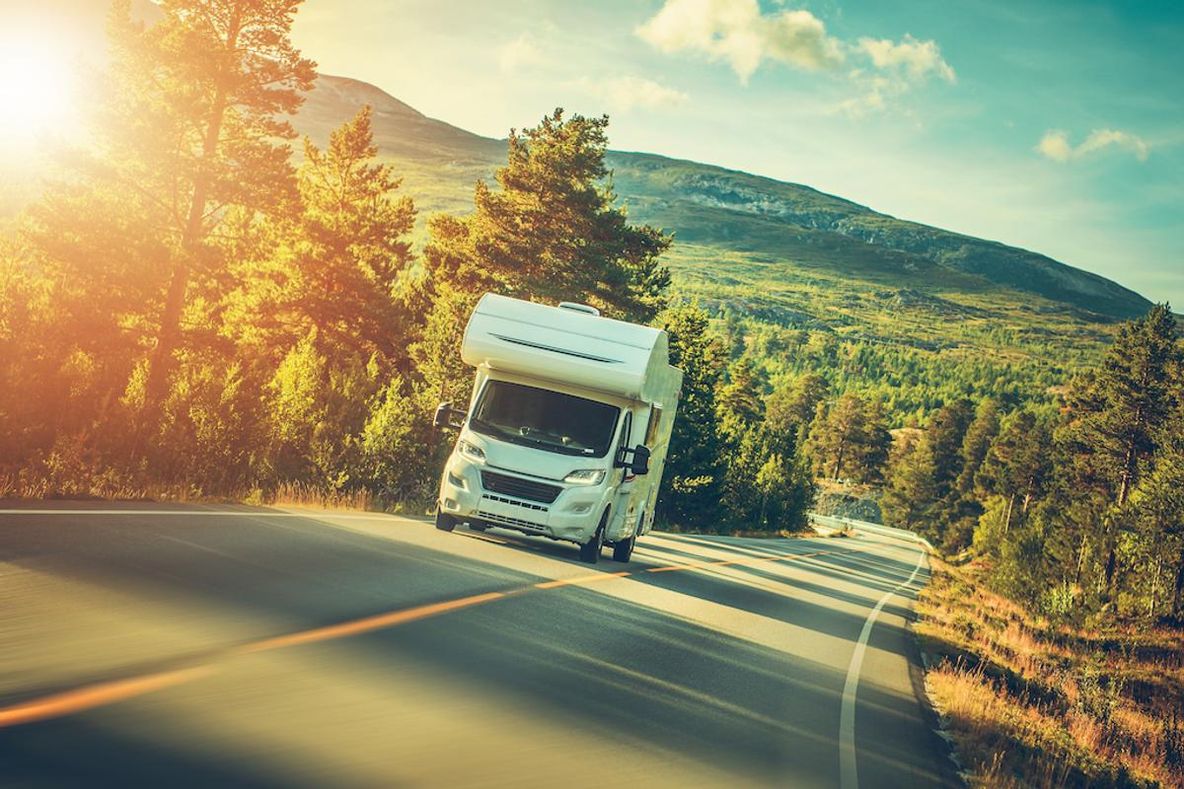
10 Incredible Routes for a Motorhome Road Trip Through Europe
Is there anything more freeing or more exciting than heading out on a motorhome road trip? You don’t have to drive along the Great Ocean Road or Route 66 to get that feeling though: There are amazing tours hidden all across Europe, too. As a bit of inspiration for your next adventure, we’ve put together this list of incredible motorhome routes across Europe.
1. Follow the Nibelungs through Germany
The Rheinische Sagenweg is one of Germany's most spectacular tourist routes. It follows the Rhine river, traversing around 580 km between Dusseldorf and Mainz . The almost melodramatic natural scenery, such as the Lorelei and the Laacher See lake, have inspired many artists’ tales and legends, and these places haven’t lost any of their mystical charms over the centuries. With around 100 sightseeing attractions across nearly 50 different places, you’ll be whisked away on a trip through history.
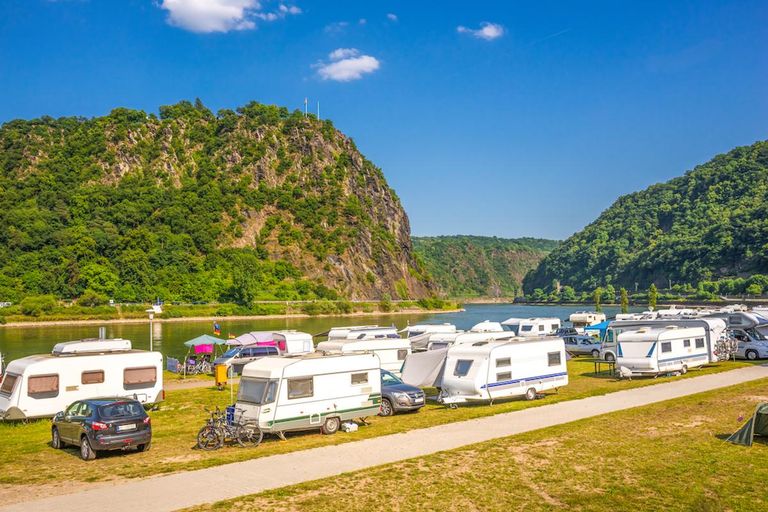
Camping near the Lorelei in the Middle Rhine Valley
Discover German campsites
2. Atop Italy’s Peak
The Passa dello Stelvio (or Stelvio Pass) is Italy’s highest paved mountain pass. It connects the South Tyrolean town of Bormio in Lombardy with the municipality of Prato allo Stelvio . This route is one of the most impressive scenic mountain roads in the Alps: In addition to the beautiful mountainscape, the Piz de las Trais Linguas (“peak of the three languages”) and the roaring Saènt waterfall , there are numerous challenging curves that passionate motorhome drivers are sure to love.
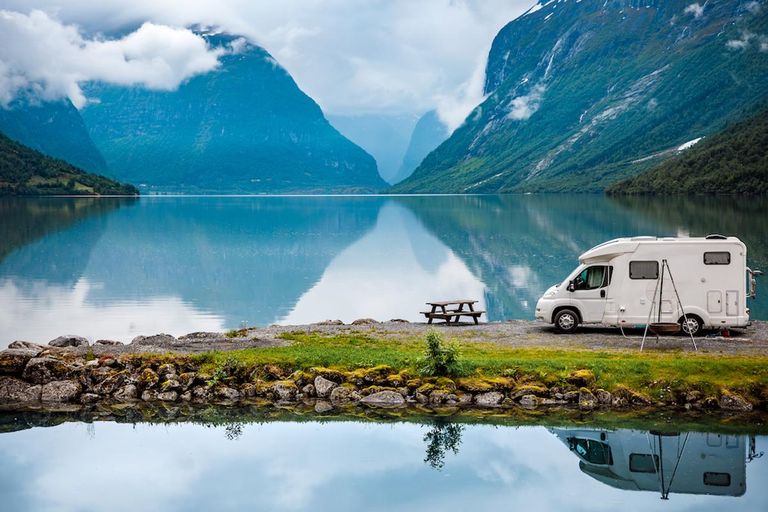
Camping in the mountains
Find campsites in Italy
3. Over French Mountains and Past Palm Trees
The most famous French motorway connects Thonon-les-Bains on Lake Geneva with Menton on the French Riviera. The Route des Grandes Alpes traverses 16 alpine passes and ascends about 1 6,000 metres until finally, after about 700 km, you arrive at your final destination on the sunny Mediterranean coast. Some of the highest peaks in the Alps are part of this route’s imposing mountainscape, including Col de l’Iseran , which stands at an impressive 2,764 metres tall. Depending on the season, you can even watch the Tour de France cyclists from your motorhome.
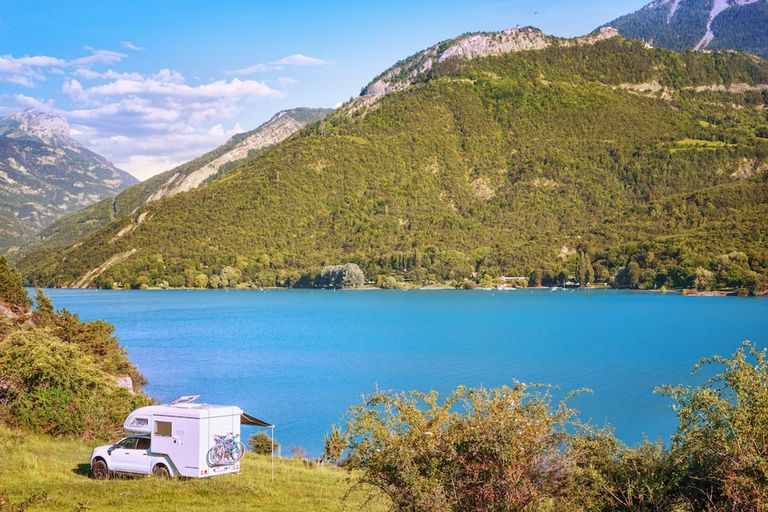
A tranquil spot by the Lac de Serre-Ponçon
Find your favourite French campsites
4. A Trip Across Northern Europe
One of the oldest scenic routes in Scandinavia , the King’s Road has always been Northern Europe’s most important east-west connection. From the Norwegian mountains all the way to Saint Petersburg , Russia , this route travels via Oslo , Stockholm , the Swedish Åland islands and the Finnish capital of Helsinki . Thanks to the variety in scenery — from the capital cities to the diverse landscapes — you’ll never get tired of travelling along the route’s nearly 1,450 km long Scandinavian section.
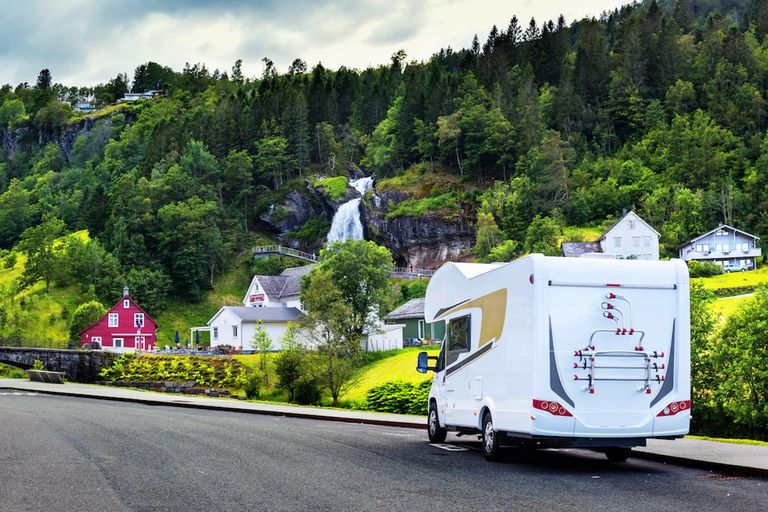
A motorhome near the Steinsdalsfossen waterfall
Discover campsites in Norway
5. Iceland: Under the Northern Lights
You can drive around all of Iceland in about 14 hours via the Ring Road , but if you take your time travelling the 1,300 km route and make plenty of stops along the way, you’ll discover the most impressive sightseeing attractions that Iceland has to offer. Numerous spectacles of nature, like the roaring waterfalls Gullfoss and Seljalandsfoss , and the capital city, Reykjavik , await you here. In the months around the solstice, particularly along more rural sections of the route, you may even get to see the colourful Northern Lights dancing in the sky.
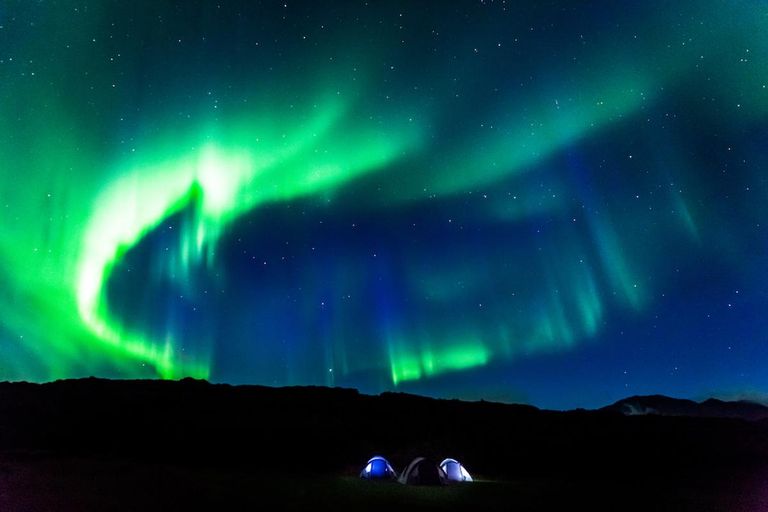
The Northern Lights in Iceland
Find campsites in Iceland
6. Spain’s Street of White Villages
The Ruta de los Pueblos Blancos crosses the Andalusian mountains from Arcos de la Frontera via the Sierra de Grazalema Natural Park and the municipality of Zahara de la Sierra . This circular route leads you through about 30 snow-white villages with an Arabian style of architecture, nestled in the mountains amid lush greenery and gnarled olive trees. The Pueblos, like Benaocaz, for example, tell the stories of their Moorish builders and give visitors a glimpse of ancient Spain .
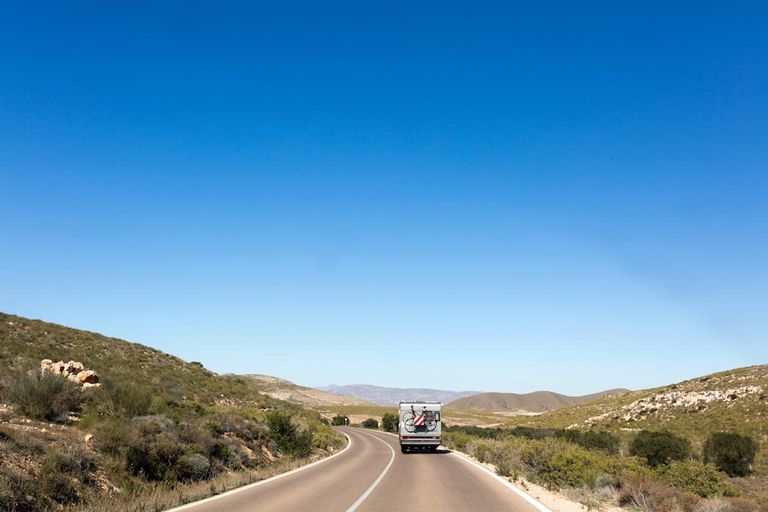
Driving through the Cabo de Gata-Níjar Natural Park
Discover Spanish campsites
7. Following the Path of Empress Elisabeth of Austria
One of Central Europe’s most majestic routes, the Straße der Kaiser und Könige (The Route of Emperors and Kings) connects medieval Regensburg in Germany to the Hungarian spa town of Budapest . Unlike those travelling by boat, when you travel by motorhome, you’ve got the advantage of being able to stop anywhere along the Danube river . In addition to seeing cultural highlights like Passau , Linz , Vienna and Bratislava , you should make sure your itinerary includes long walks through the river valley’s gorgeous landscapes .
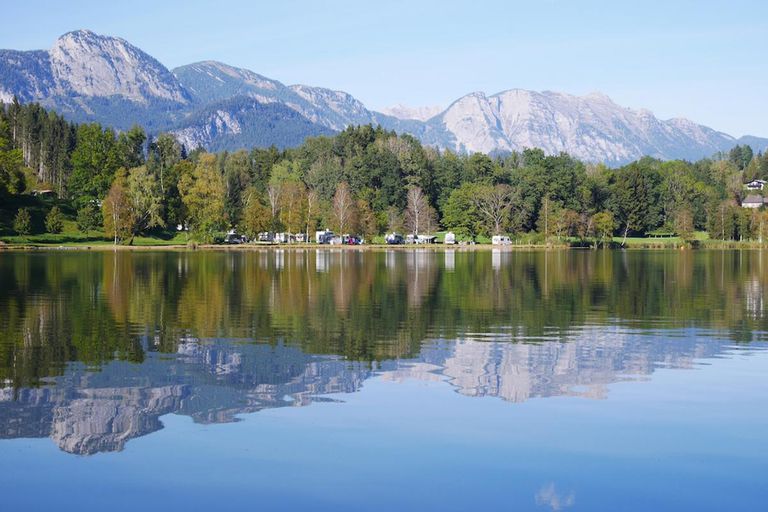
Pristine nature along the Austrian lake, Putterersee
Find your perfect pitch in Austria
8. The Croatian Pearl of the Adriatic Sea
The Croatian Adriatic Highway from Opatija to Dubrovnik is a mountainous coastal path. With medieval cities, like Zagreb and Split , and the Plitvice Lakes National Park along the route, you have plenty of opportunities to take long breaks. With the mountains on your left, the azure-blue Mediterranean Sea on your right and countless curves, motorhome drivers will have a great time driving this route.
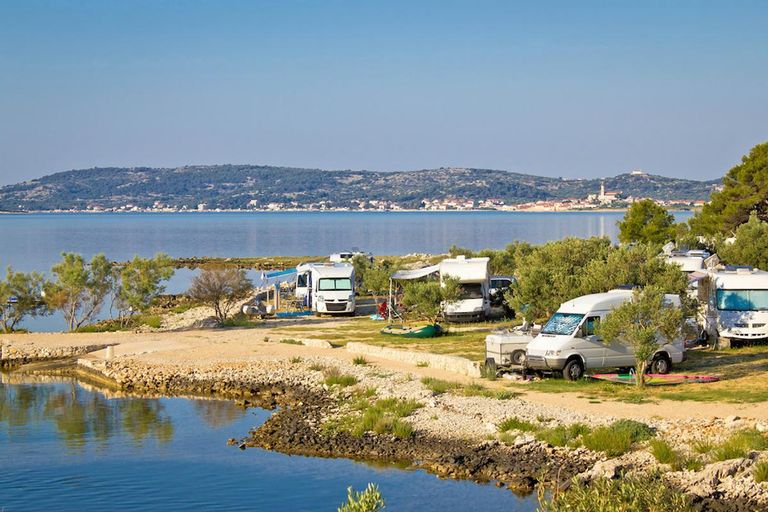
Gorgeous sea views in Croatia
Explore Croatia's campsites
9. A Tour of Ireland’s Coast
Covering more than 2,500 km from Derry in the north to Kinsale in the south, the Wild Atlantic Way is one of the world’s longest designated coastal roads. Ireland’s shores greet you with steep cliffs and narrow roads that wind their way through the green scenery. Formed by the awesome power of the Atlantic Ocean , bays like Ashleam Bay or Malin Beg are always worth a detour. Feeling adventurous? We dare you to take a dip in the icy Atlantic waters!
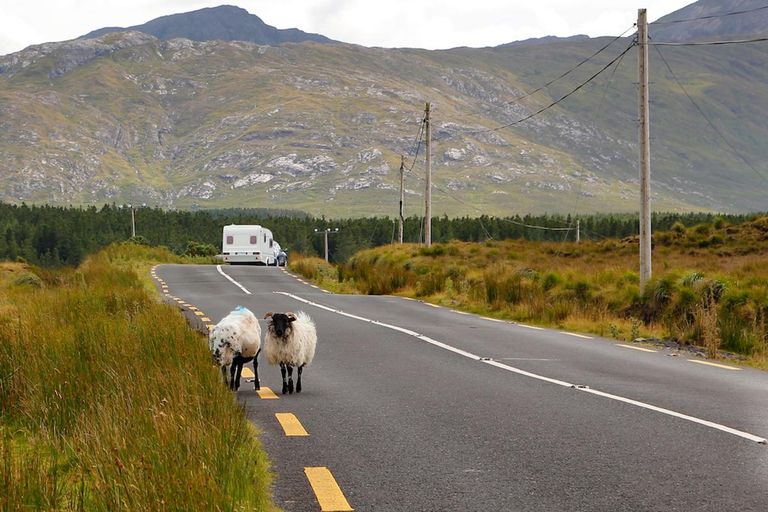
Experience Ireland's natural beauty from your caravan
Find campsites in Ireland
10. Through the Highlands
The West Highland Way is one of the first long-distance paths to cross the Scottish mountainscape, and it is a dream for all walkers and hikers. But you don’t have to be on foot to make your highland dreams come true: From Glasgow , you can drive your motorhome north to Fort William (about 180 km) via the A 82 motorway. The road passes by shaggy sheep and the legendary Loch Lomond , and it takes you through the famous Glen Coe.
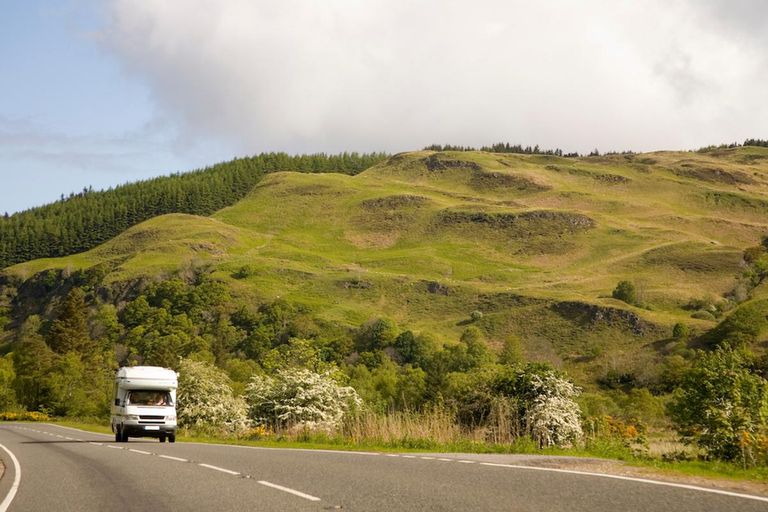
The Scottish Highlands
Discover campsites in Scotland
Did you know that camping.info has hundreds of campsites you can book online? Here are the campsites you can book online.
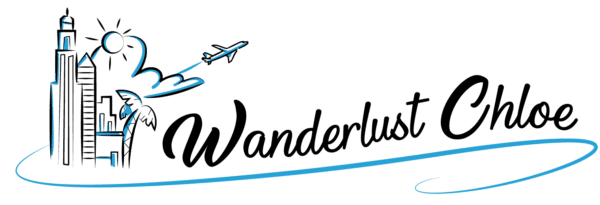
How To Plan Your First Campervan Holiday In Europe
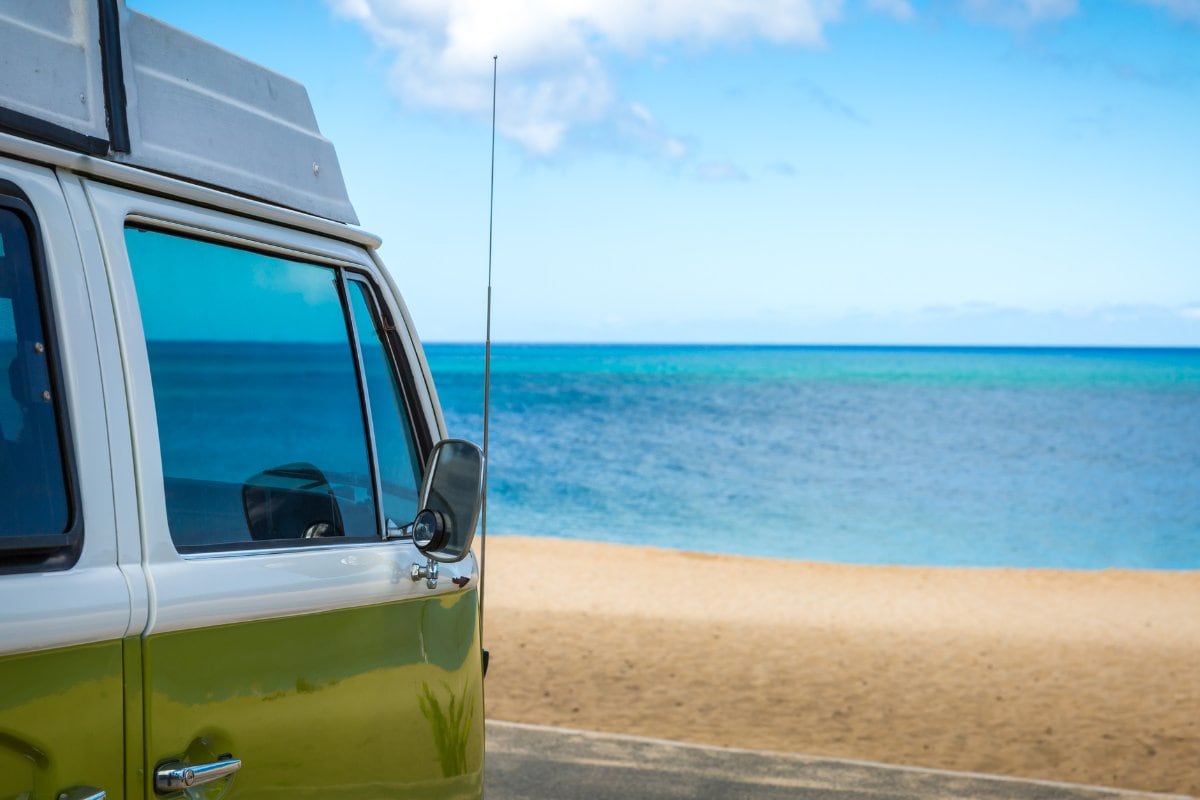
Whether you’ve dreamed of waking up to beach views, or fancy an off the beaten track adventure through the mountains, find out how to plan your first campervan holiday in Europe.
You’d have to have been living under a rock to have missed the #VanLife craze over the last five or so years. Lots of people have been trading bricks and mortar for life on wheels! While this might sound like quite a big step, there are plenty of ways to get a taste of life on the road on a short break.
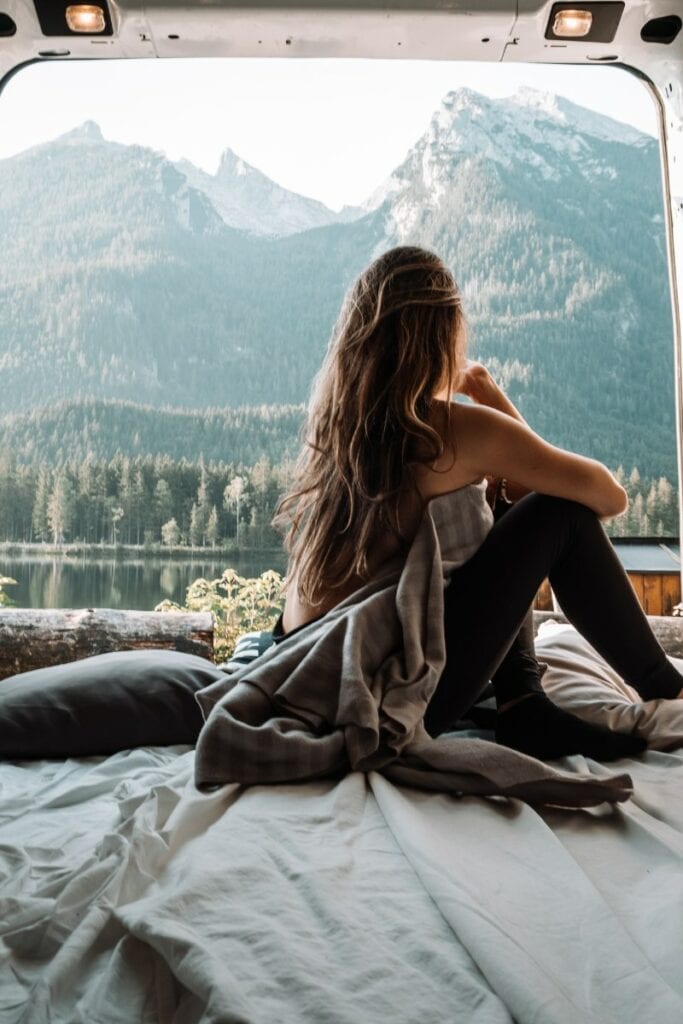
If, like me, you’re thinking about a European adventure this year, how about swapping your regular hotel or apartment stay for a campervan or motorhome? You could tour Portugal’s Algarve, stopping off at beautiful sandy beaches along the way. What about venturing off the beaten track in Albania, exploring a new country with the ultimate of freedoms. Or, how about waking up in Italy’s stunning Dolomites, with snow-capped mountains right outside your windows? The options are endless.
And don’t worry if you’ve never been keen on camping. This is a big step up. It’s a liberating style of travel, but with all the comforts and luxuries you need for a relaxing holiday!
One of the best ways to organise a bucket list adventure like this is using Yescapa . This is a specialist booking platform which connects owners of campervans and motorhomes with travellers. Just as you’d rent an apartment from an owner, now you can rent a vehicle! It’s a really simple process and many of the vehicles are really well kitted out too. We’re even talking plush motorhomes with full kitchens, warm showers and proper mattresses!
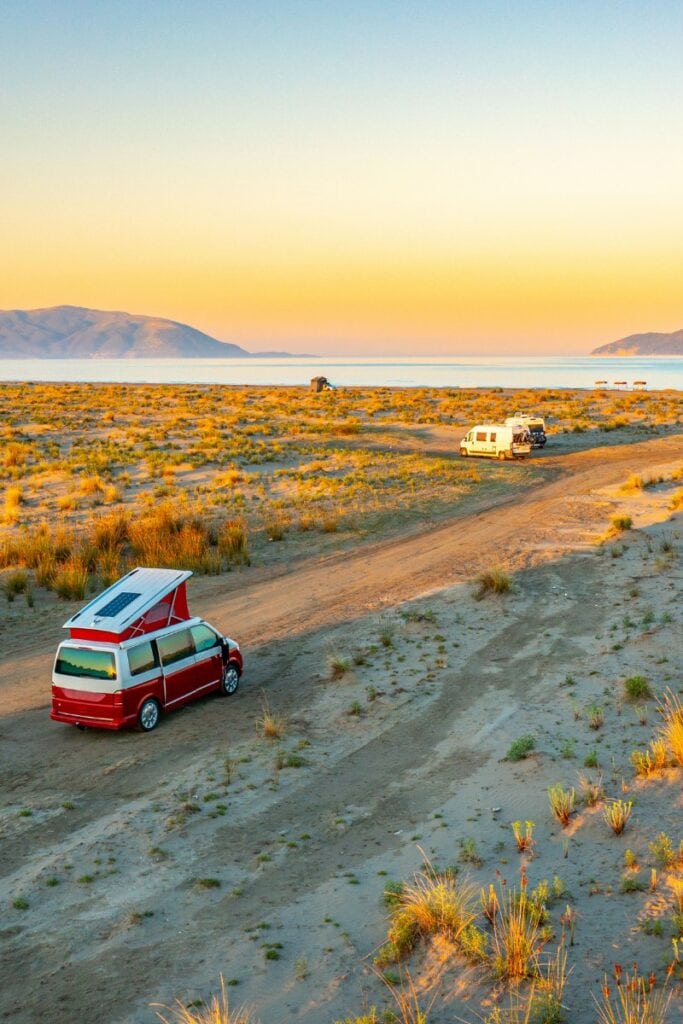
So, if you’re considering a campervan or motorhome holiday this year, it’s time to share more about how to hire a vehicle, where you could visit and how to make the most of this exciting style of travel!
Plus, as a special treat I’ve managed to organise a very special discount for you guys with Yescapa . Just use the code WANDERLUSTCHLOE30 when you checkout and you’ll get £30 off!
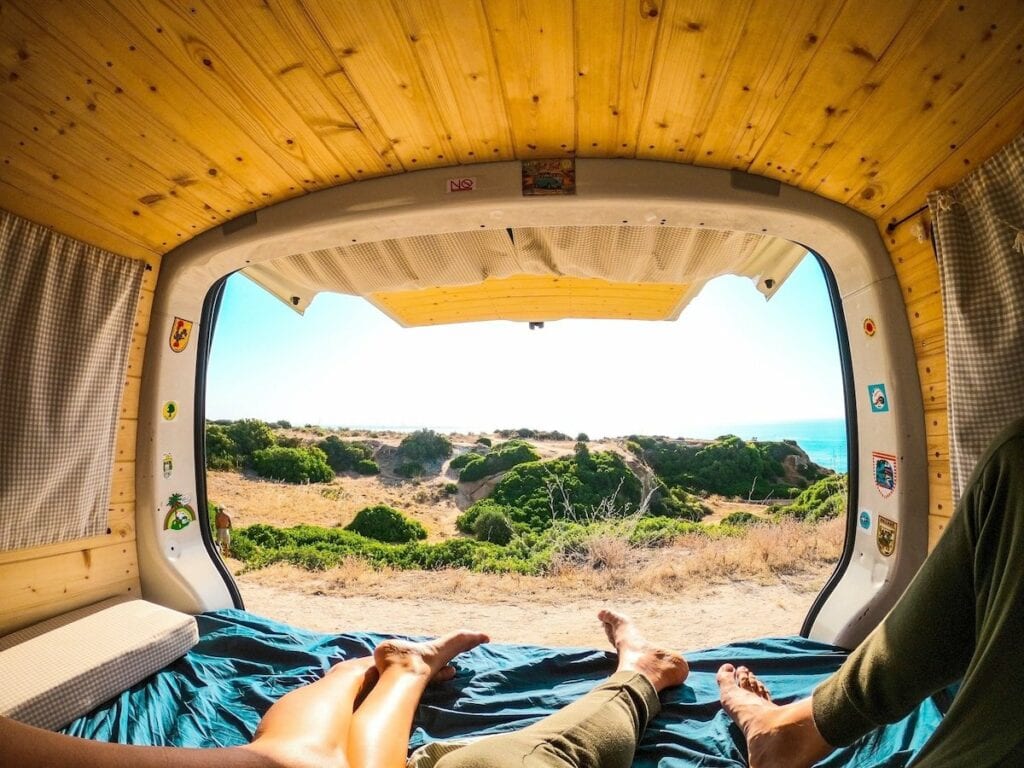
How to plan a European motorhome holiday
Why travel by motorhome.
There are so many great benefits to this unique style of travel!
You have total freedom and flexibility. Not only do you plan your own route and schedule, but you can change it at a second’s notice! Spot somewhere beautiful along your route? Stop off there. Really enjoy one place you get to? Stay an extra night or two.
Everything you need is always with you. You’ll have all your belongings in the vehicle so you never have to think about checking in and out of hotels, leaving bags, or what to take out for the day.
It’s great if you’re on a budget . You’re guaranteed to have a cheaper trip than if you booked hotels for your holiday. Plus, you can save a few pennies by swapping restaurants and cafes, for eating on the road too. Sitting down to breakfast with a view of the ocean definitely beats a hotel buffet!
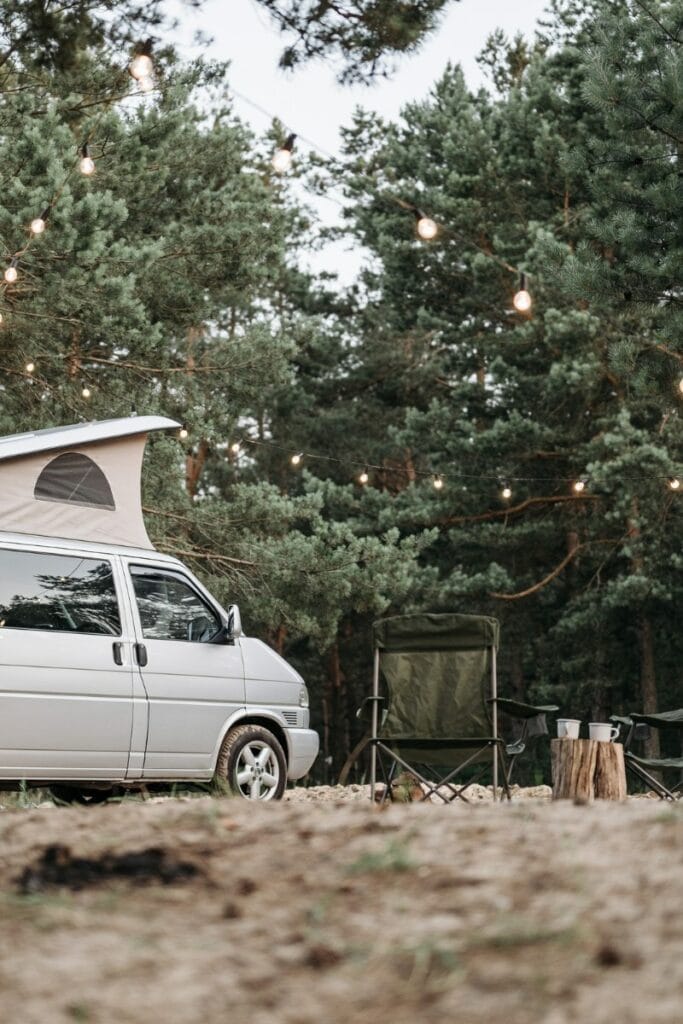
It gets you closer to the action and allows you to visit more remote places. With your own set of wheels, you’ll be free to explore secluded beaches, rugged mountains, lakes and characterful villages.
It’s a rewarding and memorable way to see the world. While any holiday will offer special memories, you’ll feel even more connected to the destination you visit if you travel around by motorhome.
We did our first motorhome holiday a few years ago and I was amazed by how comfortable the vehicle was. We had a huge double bed, en-suite bathroom, kitchen area and dining space. Driving it took a little bit of adjusting to, as we usually drive a small car. But we loved the freedom of being able to travel anywhere in it, as well as the variety of locations we could stay overnight!
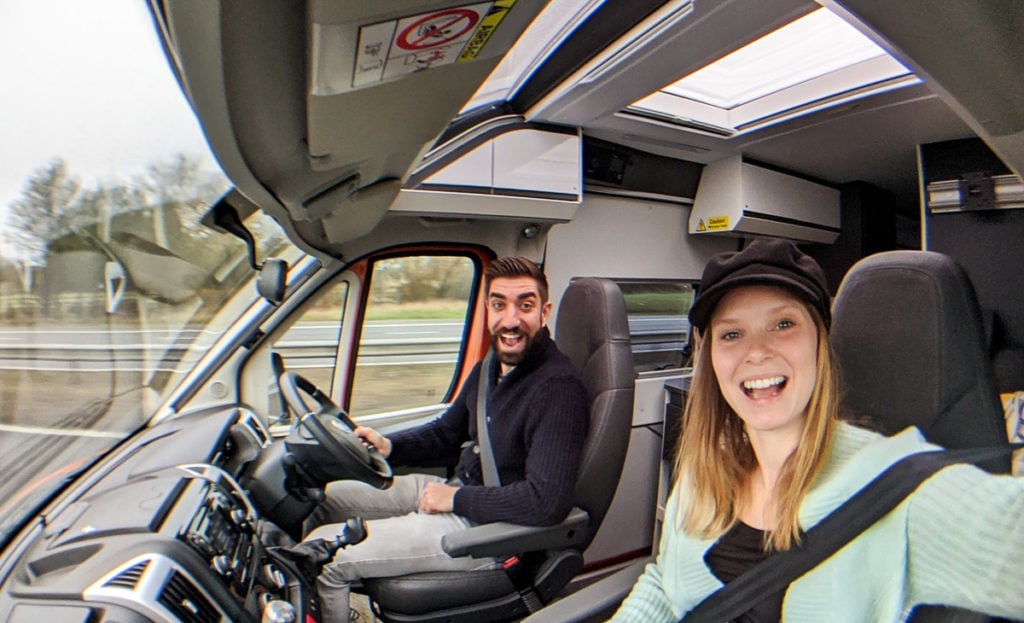
What kind of travellers would enjoy a campervan holiday?
I was debating this with a friend the other day. She’s travelled in a classic VW Camper several times, including to some UK festivals and for a surf holiday in Portugal. She’s definitely the classic campervan type: a free-spirit with a strong sense of adventure.
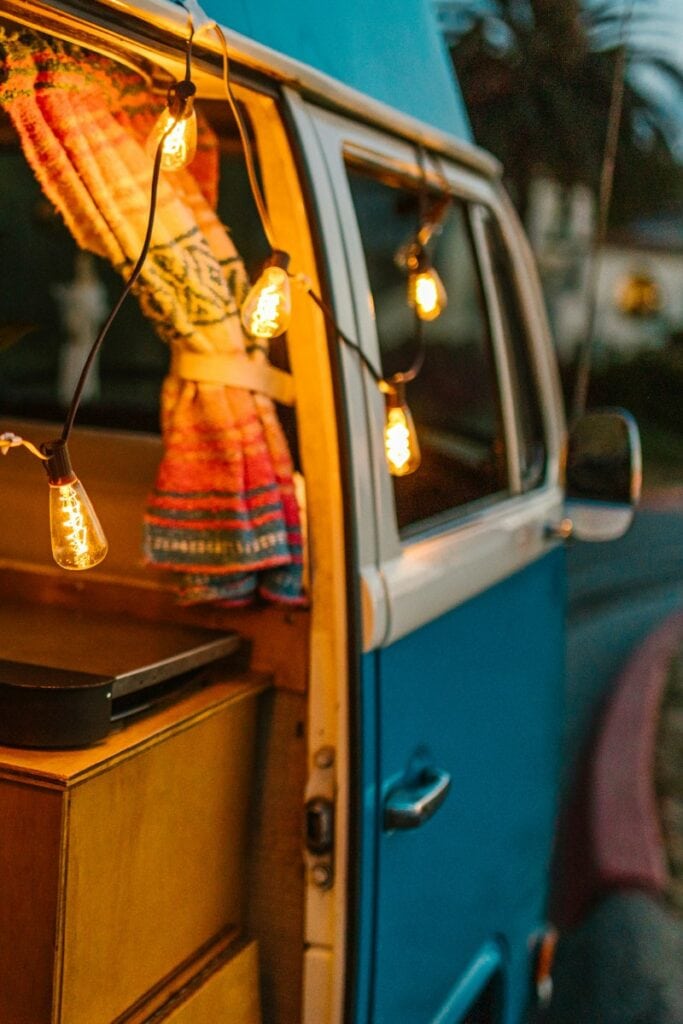
However, times have changed! Forget the 70s hippy vibes! Motorhome and campervan travel is open to all, and it doesn’t exclude! I’d say the types of travellers who would enjoy this style of travel most are:
- Travellers who love being outdoors and immersed in nature. If your favourite days out involve hiking, wildlife and picnics, you’ll love travelling by camper.
- Anyone on a budget, in particular young people and students, looking to have big experiences without a hefty price tag.
- Adventurous couples looking for a romantic way to explore the world.
- Families who want to create some memories together, while also keeping costs down.
- Anyone trying to travel in a more sustainable and eco-conscious manner.
To be honest though, with the high level of luxury available in a well kitted out motorhome, it really is a style of travel that can suit anyone! After all, Yescapa have over 15,000 motorhome and campervans to choose from in the UK and in Europe, so you’re bound to find one you love.
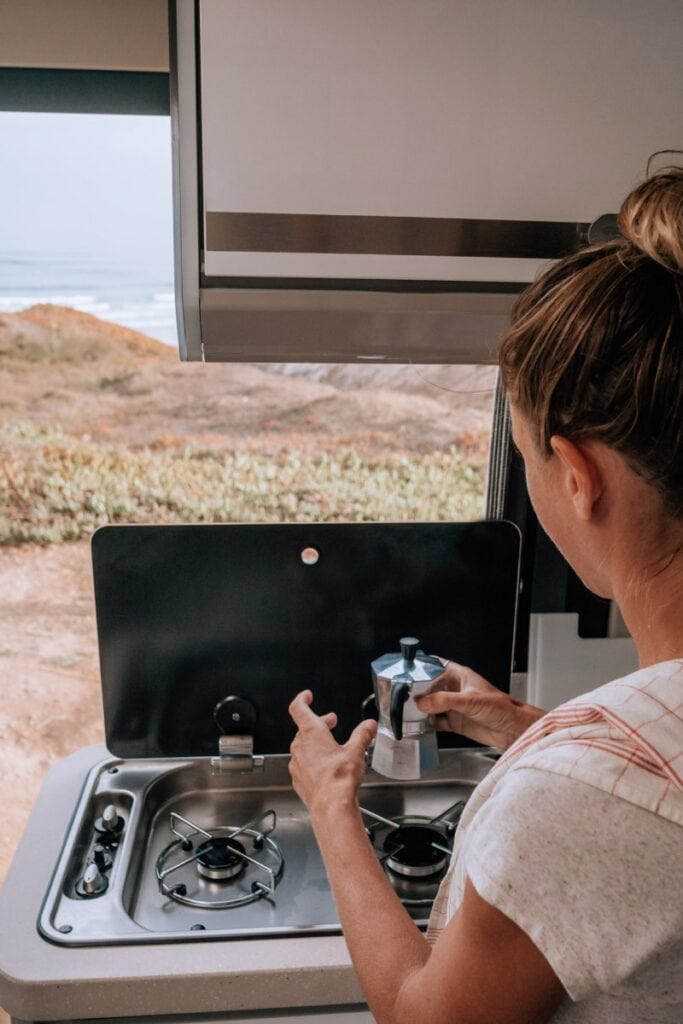
Is a campervan trip a more sustainable way to travel?
A lot of us have been looking at the impact our travels have on the environment. While years ago, we didn’t think twice about getting on flight after flight, many of us have cut down on the bigger trips in favour of smaller, more sustainably-minded adventures. Whether that’s travelling by train, staying in a destination for longer, or contributing to environmental charities, there are plenty of things we can do to improve the global situation.
If you compare a campervan trip side by side with a hotel stay, it can offer a more sustainable type of holiday for a number of reasons.
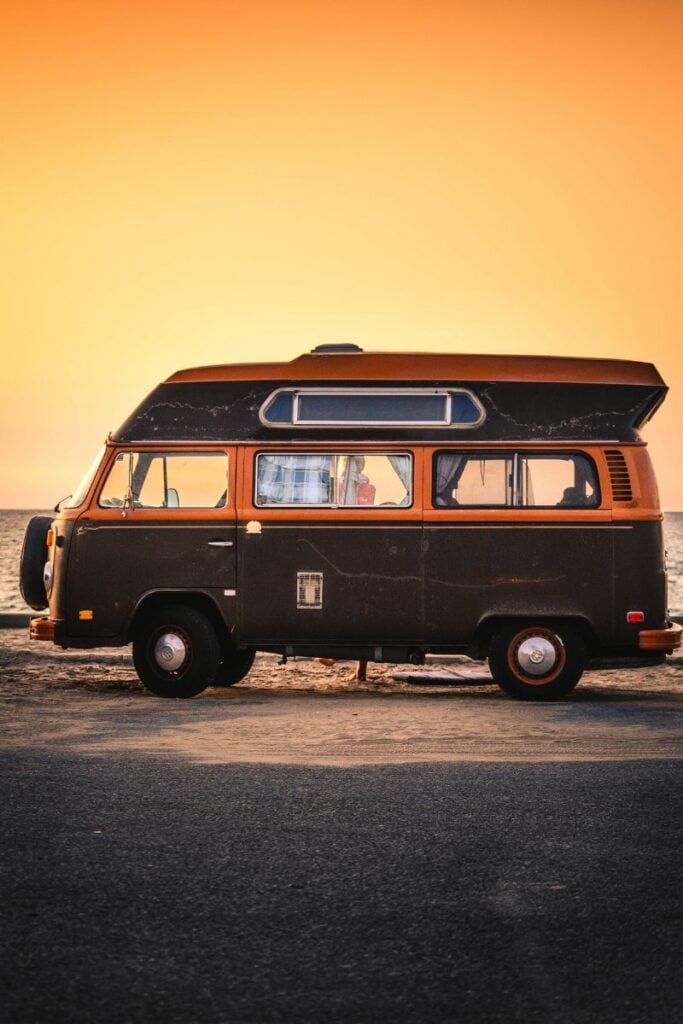
For starters, you may be reducing your campervan emissions if you decide to plan a trip closer to home, rather than flying abroad. Yescapa have plenty of vehicles for hire in the UK, so you could swap a far-flung holiday for a trip exploring the natural beauty of the Lake District or the coastlines of Devon and Cornwall. If there are several of you travelling, you’ll be sharing the emissions more too.
Once you’re on board, you’ll be using a lot less energy in a campervan than you would in a hotel or holiday apartment. Just think of a hotel’s energy costs in terms of lighting, heating etc! You’ll also be using a lot less water.
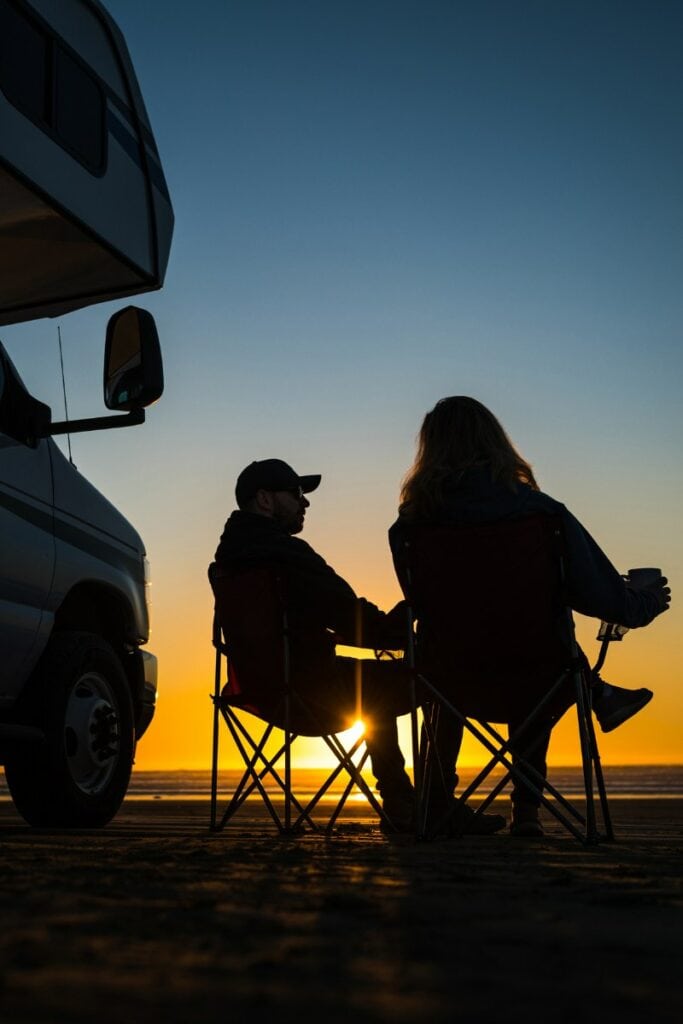
How to hire a campervan or motorhome with Yescapa
Keen to plan a trip? Definitely check out Yescapa , Europe’s largest motorhome rental marketplace. It connects vehicle owners with passionate travellers like you and me. It’s also very easy to use.
All vehicle owners are verified, you’ll have comprehensive insurance and breakdown assistance included, plus a customer service team if you need anything. If this is your first campervan holiday, you’ll definitely want this peace of mind.
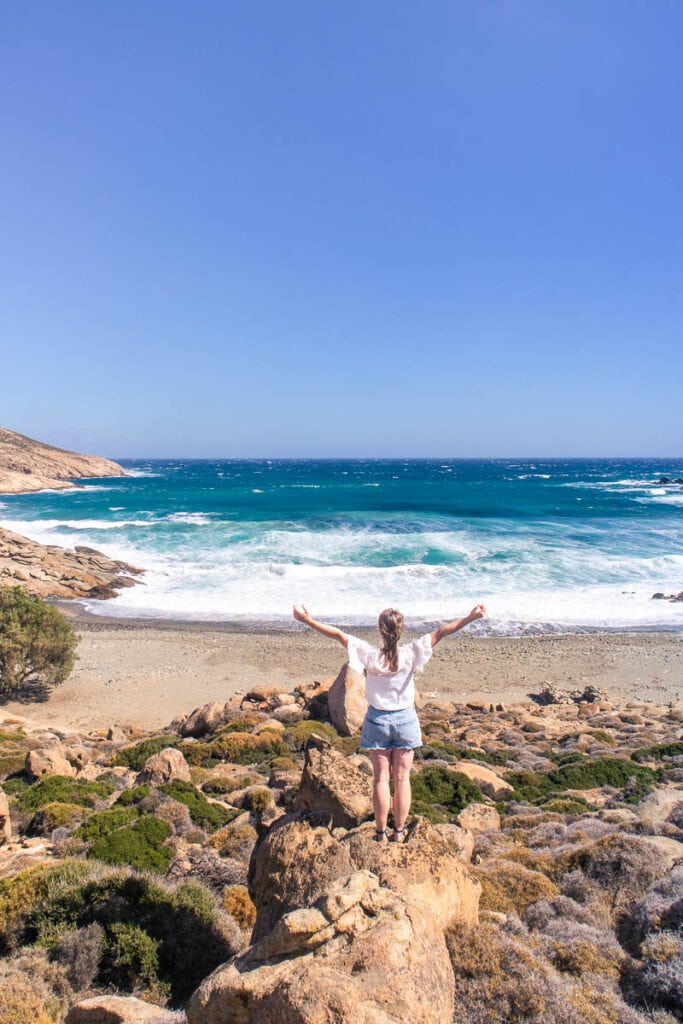
Here’s how to look at available options on Yescapa
Ready to hire a motorhome ? It’s as easy as this!
- Step 1: Pick a location
- Step 2: Put in your dates
- Step 3: Hit search
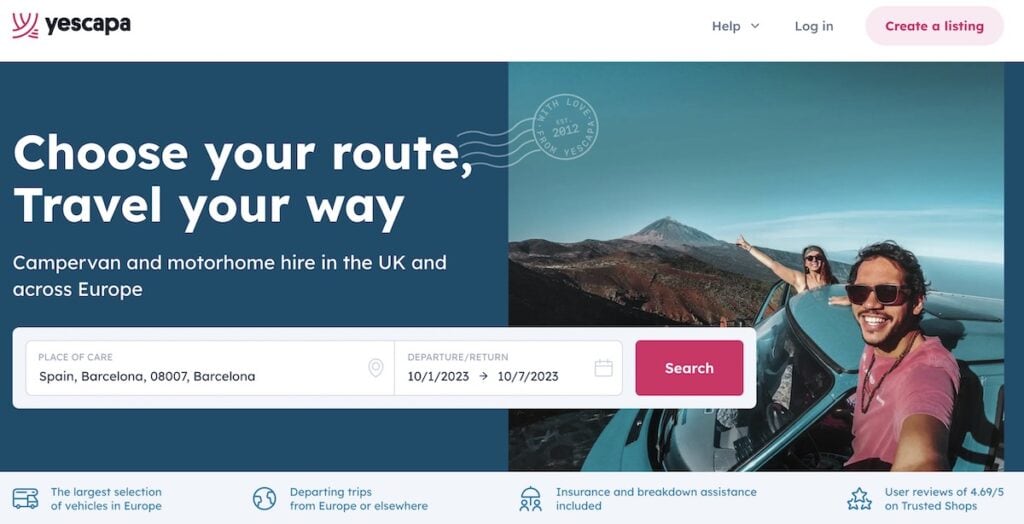
Then you’ll see a list of all available motorhomes and a map of where they’re located. You can filter by number of travellers, price and type of vehicle. There’s even an option to search for vehicles with specific equipment such as bike racks, baby seats, barbecues, or pick one that’s suitable for winter travel or is an automatic.
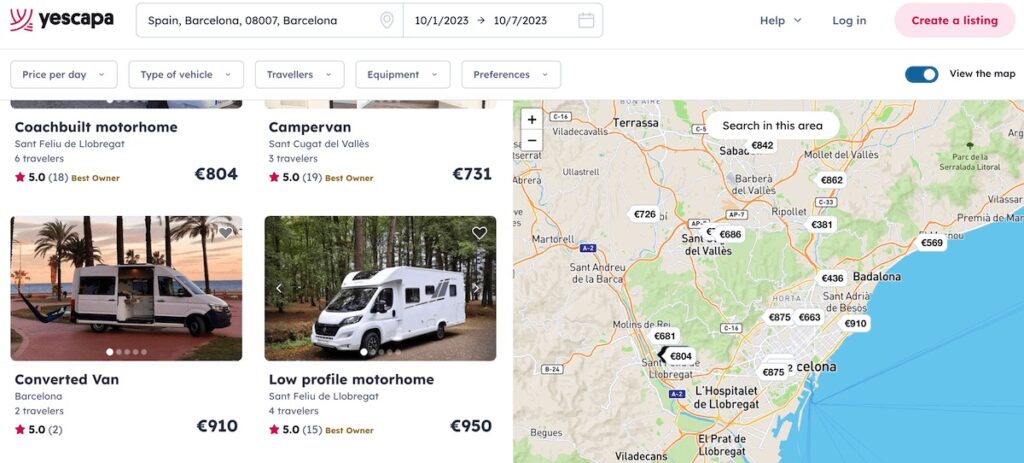
When you find one you like the look of you can look at photos, read reviews and read any extra terms and conditions. Then you can send a booking request to the owner and wait for them to reply to confirm the booking. It’s as simple as that!
With platforms like this one, there’s a really nice feeling of sharing too! Everyone wins; the vehicle owners get their costs covered and we as travellers get to book a fun and unique experience!
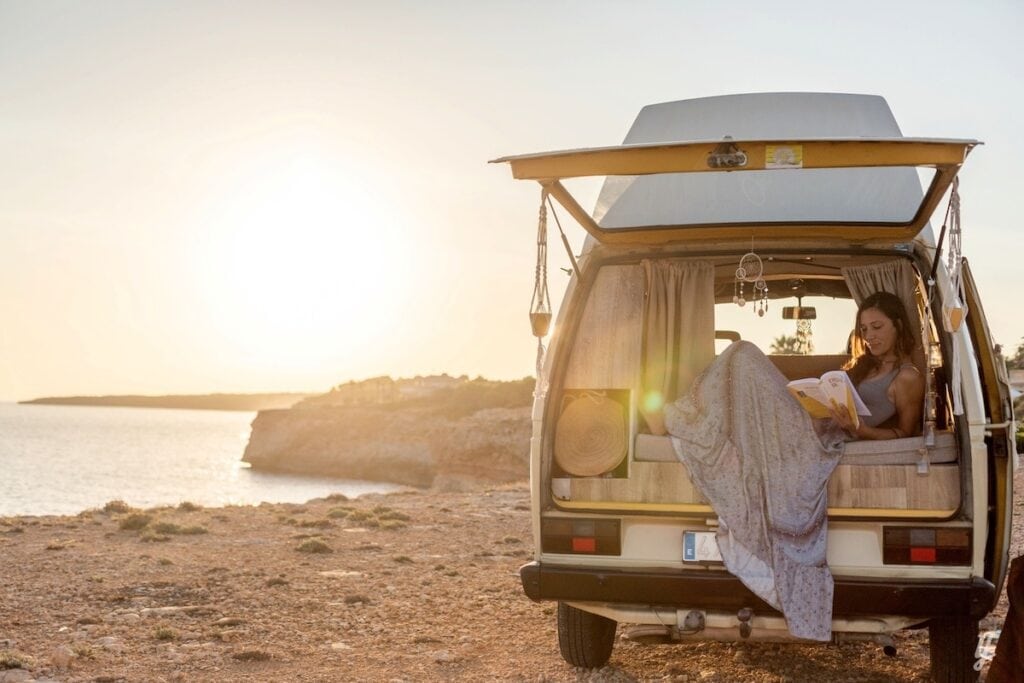
What do you need to know to drive a campervan in Europe?
While it may vary a little depending on the vehicle you’re hiring, usually you just need a standard driving license (often known as category B) which permits you to drive vehicles under 3.5 tonnes. You’ll also need to be over 18 years old. It’s worth noting that the majority of campervans and motorhomes have a manual gearbox, so your license will need to cover that, unless you’re specifically hiring an automatic.
Depending on where your license was issued, some countries may require you to have an international driving licence.
It’ll be a more comfortable ride if you have experience of driving larger vehicles, but you’ll quickly get the hang of it!
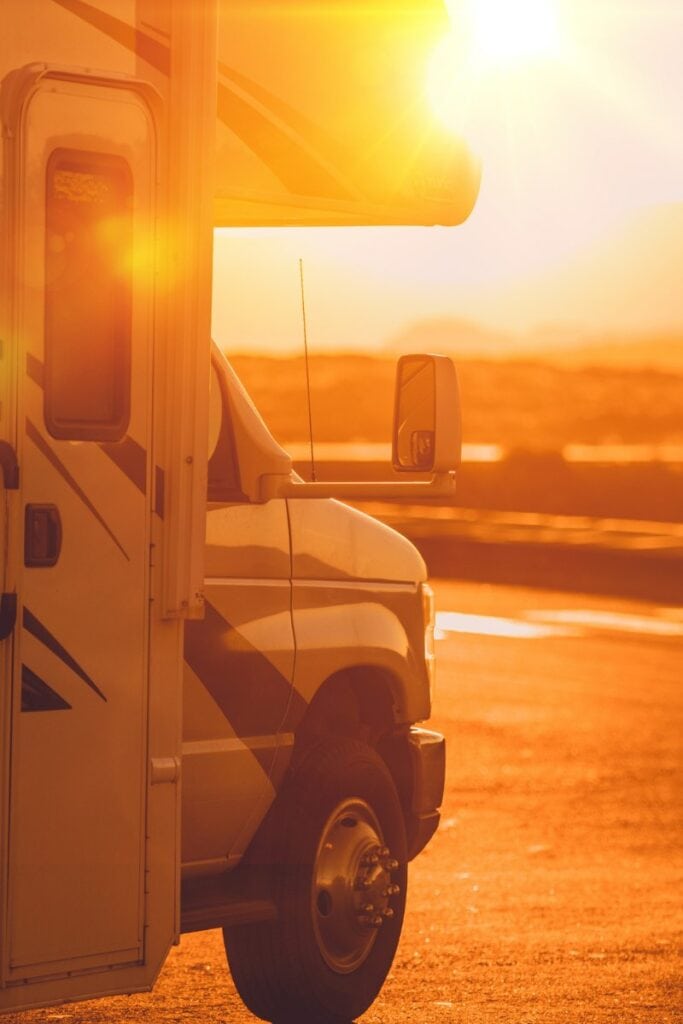
Where are the best places in Europe for a campervan trip?
Now you know how easy it is to book a trip by campervan or motorhome, it’s time for the really exciting part: deciding where to travel to! There are so many picturesque spots, but for a first trip, here are five of my top picks.
Devon and Cornwall, England
For a beautiful UK road trip, I’d recommend driving down to the southwest to enjoy great surf beaches in Croyde and Newquay, the food scene in Padstow and the wild scenery and stargazing of Dartmoor and Exmoor National Parks.
The Scottish Highlands, Scotland
Craving some mountain time? Head to the highlands and enjoy rugged landscapes, serene lakes, beautiful hiking routes and nature at its best.
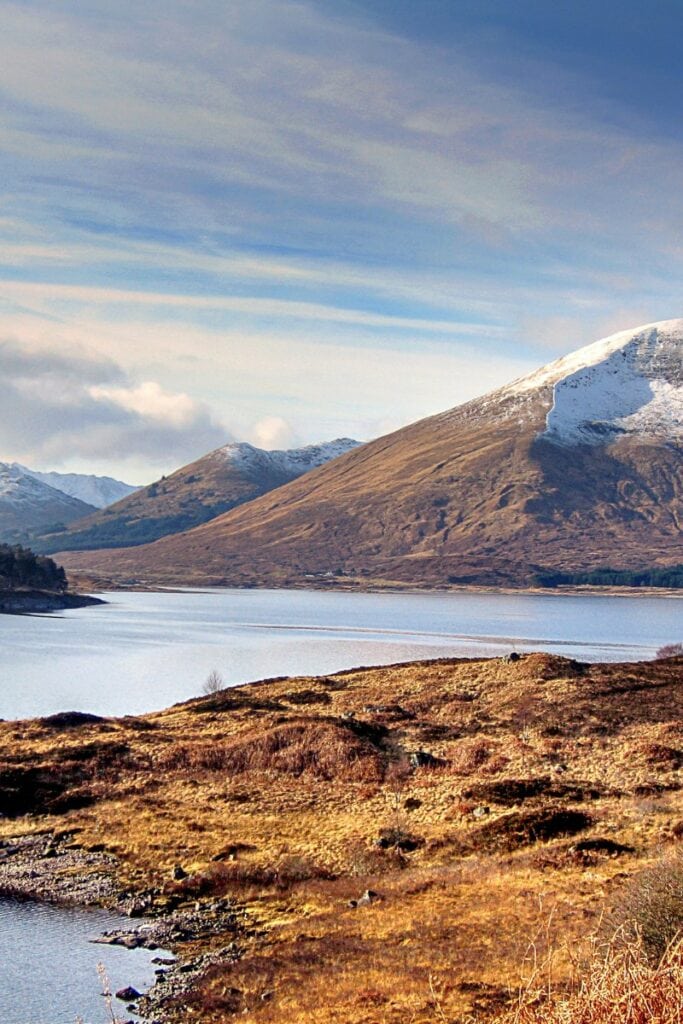
Andalucia, Spain
The south of Spain offers the ultimate mix of beaches, historic cities, classic white towns, tasty food and culture. With over 300 days of sunshine each year and some of the warmest temperatures in Europe in winter, it’s a great option all year round.
The Dolomites, Italy
You might think of Italian adventures involving the coastal towns or historic cities, but these mountains in the north offer some of the country’s most beautiful landscapes. In the summer it’s a paradise for hikers and mountain bikers. Meanwhile, in the winter it’s a great region for skiing and snowboarding.
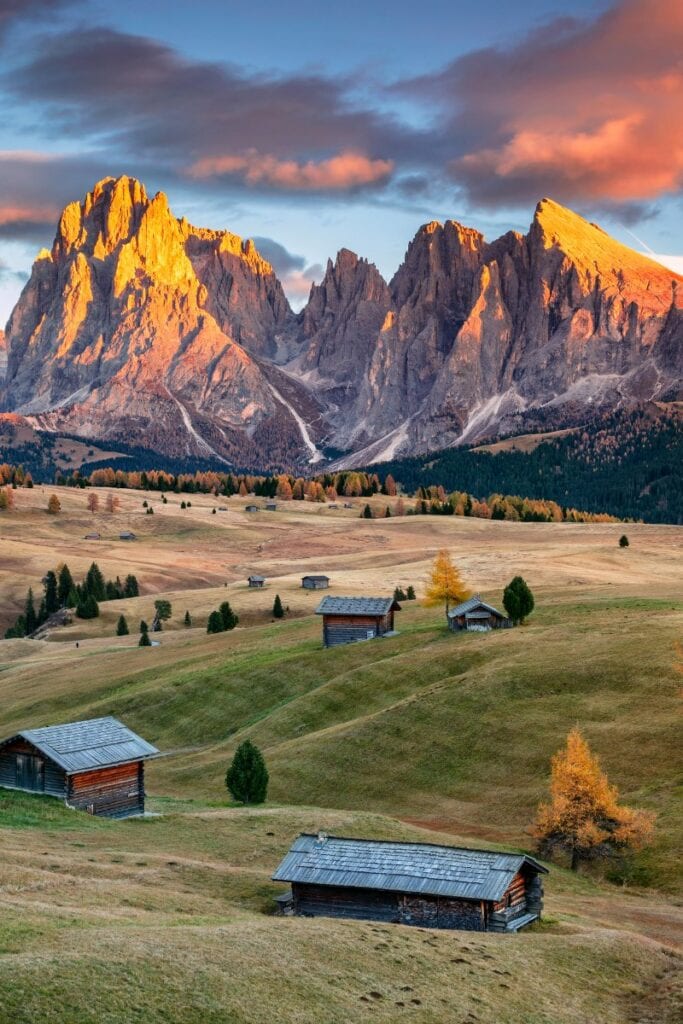
The Algarve, Portugal
This stunning region of Portuguese is famed for its amazing cliffs and beaches, pretty seaside towns and great seafood. It’s also home to some of the best surf beaches in the country.
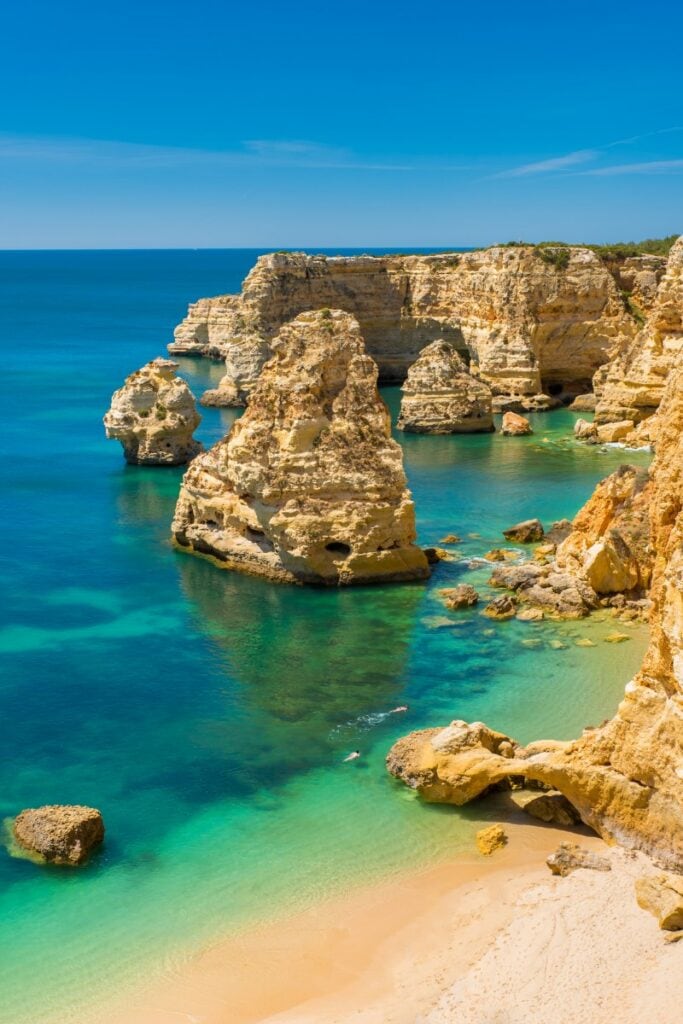
I hope this guide helps inspire you to book your first motorhome or campervan holiday! To claim your £30 Yescapa discount, just use the code WANDERLUSTCHLOE30.
It’s a unique and special type of holiday, and one you’ll never forget.
If you’re looking for more inspiring destinations to visit in Europe, check out my guide to the best hidden gems in Europe .
This post was sponsored by Yescapa but all opinions are my own.
Chloe Gunning
With a passion for food, fun and adventure, Chloe is the content creator behind one of the UK's top travel blogs Wanderlust Chloe. From volcano boarding in Nicaragua, to sailing around Sicily and eating her way around Japan, her travels have taken her to some of the coolest spots on the planet. Named Travel Influencer of the Year in 2022, Chloe regularly works with a number of tourism boards, producing inspirational travel content across multiple platforms. Find out more about Chloe here.
Leave a comment Cancel reply
Exploring Europe in a Campervan: Tips, Tricks, and Must-See Destinations [Ultimate Guide]
Short answer: campervans in europe are the ideal way to explore the continent, giving travelers flexibility and independence. they offer a more immersive experience compared to traditional holiday options. several rental companies operate campervan services providing tourists with excellent services., step-by-step: navigating campervan travel in europe.
Are you planning a trip to Europe and looking for a unique way to explore the continent? A campervan might be just what you need! With its flexibility, freedom, and affordability, campervan travel is increasingly becoming popular among travelers of all ages. In this step-by-step guide, we will walk you through everything you need to know about navigating campervan travel in Europe.
1. Plan Your Route The first step in preparing for your campervan trip is to plan your route. Europe offers endless possibilities when it comes to breathtaking scenery and stunning landscapes. From the beaches of Portugal to the lakes of Italy or the mountains of Austria there is always something new to discover. Narrow down your travel destinations based on what interests you and create an itinerary that makes sense considering driving distances and timing considerations.
2. Renting a Campervan There are many options when it comes renting a motorhome in Europe from local dealerships to larger companies operating across multiple countries. Consider factors such as vehicle size, types of campsites (wilderness/no hook-ups vs full-service), available amenities like shower/ toilet function or heating systems, parking regulations at campsites (some require only smaller vehicles). It’s also important to keep in mind that some countries have stricter rules regarding driving oversized vehicles, so make sure your license allows for these requirements if necessary.
3. Understand Navigation & Road Rules There are different traffic laws varying by country that pertain specifically towards camping cars under 3500kg such as keeping headlights on all times regardless daytime vs night-time status and noting specific border crossings requirements like Vignettes toll fees or environmental zone stickers needed traveling around cities such as Paris or Berlin can add costs with limited room availability which should be noted when planning trip itineraries well ahead of time.
4. Safety precautions As with any road trip, safety should always receive top priority attention particularly since operating within unfamiliar territories. Make sure to always be aware of local laws and regulations as well as monitoring weather conditions before selecting or approaching roadways. Keep your vehicle maintained regularly especially since driving long distances can put a strain on the engine.
5. Packing Essentials When packing for your trip, you’ll want to consider that you have everything needed to hold up living on the road for an extended period of time. Bring all the basic necessities including bedding, towels, and toiletries; a mobile hotspot for internet and entertainment; camping kitchen utensils such as pots, pans and cutlery are useful items in making campsite cooking easier along with cooler ice packs when access to frozen running water might be too far off from camp base.
6. Site bookings While some travelers opt for freedom camping or simply finding private spots where it’s safe to park on beaches etc., it’s wise if planning your whole itinerary earlier by researching into available campsites around chosen destinations, particularly during busier peak season periods where spontaneous arrivals are not always encouraged nor allowed.
Campervan travel in Europe offers timeless adventures for those seeking endless exploration with flexibility, convenience and affordability while traversing through stunning landscapes of heritage and natural beauty across a continent spanning multiple cultures. If you’re looking to create memories while living like a nomad on wheels then this is likely the adventure you’ve been dreaming of!
Your FAQ Answered: Everything You Need to Know About Campervanning Europe
Are you planning a summer adventure in Europe but looking for a unique way to see the sights? Perhaps it’s time to consider campervanning! Our team of seasoned travellers have put together this comprehensive FAQ guide to help you plan your dream campervan trip.
Q: What is campervanning? A: Campervanning, also known as vanlife, is a popular way of travelling that involves renting or buying a camper vehicle which can act as both transportation and living space. Many travellers choose this method because it allows them the freedom to explore remote areas with the comfort of having their own sleeping arrangements.
Q: Do I need a special license to drive a campervan? A: This depends on your country of origin and where you will be travelling. However, most countries only require a standard driver’s license for vehicles under 3.5 tonnes (or 7,700 pounds). If your camper exceeds this limit then you may need an additional license category.
Q: Which countries are best for campervanning? A: European countries such as France, Italy, Spain and Germany have well-maintained roads accompanied by ample campsites offering many facilities often including electric hookup points. Scenic coastal routes or off-the-beaten-path mountain passes can provide amazing moments when venturing into lesser known regions too.
Q: Should I buy or rent a campervan? A: The decision to rent or purchase is ultimately up to your budget and needs. Buying gives more long-term flexibility while rentals offer convenience for shorter trips without any commitments after completion of the trip – not every traveler would want to travel regularly!
Q: Where can I park my campervan overnight? A: There are many campsites available throughout Europe which cater specifically for motorhomes/campervans that often allow overnight parking. In othercases It is usually illegal though not impossible however always park responsiblyand choose safe parking locations.
Q: Can I bring my pet on a campervan trip? A: Yes! Many campervan companies offer pet-friendly rentals, just be sure to check beforehand and read the specific terms & conditions.
Q: Do I need to book campsites in advance? A: It is always wise to book in advance, especially during the peak season period generally June-August. A good chunk of campsites allow for booking via website and other portals that can provide comfort and ease. To secure a spot at a popular or more desirable location early reservations are recommended.
Q: What should I pack for my campervan trip? A: It’s always best to pack light due to limited space. But it’s essential not forget necessary items. Comfortable durable shoes for exploring new cities along with important documents such as passport or ID, means of payment such as travel card or local currency or even international sim card are all key things required Don’t forget food supplies too which can either be bought along the way or stocked before departure, camping chairsand foldable tables help establish dining having an amazing dining experience in tranquil countryside.
In summary, Campervanning is an ideal option for those wishing to explore Europe freely and independently by offering flexibility and adventurous spirit in a comfortable setting. So get your bags packed up along with savvy planning knowledge from this guide making those European camping dreams come true!
Top 5 Facts About Campervanning Europe That You Didn’t Know
If you’re an avid traveler, then you might have heard about the concept of campervanning. Campervanning is essentially traveling in a van or an RV that is equipped with most of the necessities needed for living while on the road. It is a perfect way to see Europe and great for adventurers looking to explore new territories and uncover hidden treasures. In this blog, we’ll share 5 things you probably didn’t know about campervanning Europe.
1. You can choose any type of camper van
There are different types of campers ranging from retro-style vans to modern sprinter-style recreational vehicles (RVs). The best part is that there’s always an option for everyone regardless of their budget or preference. Some campervans can easily accommodate a family of four while others are perfect for couples who want to spend some quality time alone.
2. Fewer expenses
When camping, especially if you’re doing it in a big city like Paris or Rome, accommodation will constitute a significant percentage of your budget, but with campervans, few reservations need to be made – if any at all! You stop where and when you want which equals more savings on lodging expenses. Additionally, eating out every night isn’t compulsory as cooking facilities come with most rental options saving money on food.
3. Regulations vary by country
Compared to other means of transportation like trains or planes within the Schengen Zone, regulations can be more flexible with camper vans because standards are vastly uneven throughout Europe; therefore each country has its own respective restrictions and rules on driving one safely within their borders (encourage public rest areas instead of parking along busy streets). Before embarking on your journey make sure to check each country’s specific laws regarding camper vanning so that your trip goes off without hitches.
4. Unbeatable Experience
Campervanning allows travelers complete freedom by allowing them freedom in selecting sites they’d like to visit (and how long they’d like to stay). Each new day is filled with surprises and adventures, adding spontaneity to travel. It’s an immersion in oneself more accountable for their own experience rather than being assigned a tour guide.
5. More amenities
Lastly, camper vans have many amenities compared to traditional camping trailers such as refrigerators and running water for cooking and cleaning facilities. Additionally on-board heating systems ensure warmth during chilly weather conditions making it possible to explore different areas regardless of seasonality.
In conclusion, campervanning Europe presents an excellent opportunity for adventurers to explore a foreign land simpler yet flexible manner than other traditional transport options. With the freedom surpassed only by few other modes of travel; its versatility paves way for flexibility without sacrificing comfortability- plus campervanning is just cool!
Tips and Tricks for Renting a Campervan in Europe
Campervan renting is a popular, cost-effective way to explore Europe, providing the freedom and flexibility every traveler seeks. Whether you’re a seasoned road tripper or planning your first camper vacation, there are certain things that you should keep in mind when renting a campervan in Europe.
1. Choose Comfortable Accommodations: Spacious living quarters and amenities including a comfortable bed, toilet, working kitchen with a sink, stove, fridge and storage increase enjoyable road trips for everyone. So do some research about what model of campervan will offer you the most comfort during your trip.
2. Know Your Budget Before You Rent: It’s important to have an idea of how much you want to spend on your rental before you start looking at rental options. Determine how much money you can allocate towards the total cost of your campervan vacation which will help identify potential rental providers and model options that fit within that budget.
3. Plan Ahead: Preparation is key! Consider where you would like to travel within Europe and do plenty of research beforehand by picking up guidebooks, consult online forums or blogs in order to find worthwhile stops along the way. Also consider booking campsites ahead of time especially during peak seasons when they might be more crowded than usual.
4. Check Insurance Coverage: Campervan insurance coverage varies by provider so make sure you understand what is covered under their policy versus yours – Included policies can vary from third party liability as compulsory coverage up through fully comprehensive coverage plans covering any damage due to theft or vandalism of personal items/fixtures within the camper itself
5. Learn How To Drive Manual Transmission Campervans There are several models available ranging from manual gearbox to automatic transmissions which require different knowledge sets – if unsure go for an automatic option as it tends typically easier driving with less strain on engine/gearbox components than corresponding manual counterparts though these feature fuel economy improvements especially if travelling longer distances devoid of high demands/loads placed on gears.
6. Know The Height and Length of Your Campervan Knowing the exact height, width and length of your campervan is crucial to avoiding unwanted damage to both the camper itself as well driving under or through obstacles that might appear during the trip such as overhead bridges, narrow streets where parking opportunities are limited or simply bad lane choice variations whilst travelling highways/toll roads .
In conclusion, renting a campervan in Europe for your vacation can be an exciting adventure. However, with so many options and variables to consider it’s important to prepare yourselves thoroughly beforehand so you are able make informed choices while maximizing enjoyment during your travels. Follow these tips carefully for a successful camping trip!
10 Must-See Destinations for Your Campervan Trip in Europe
A campervan trip through Europe is an exciting and unparalleled way to explore the stunning landscapes, vibrant culture, and rich history that the continent has to offer. With so many incredible destinations to choose from, planning a campervan trip can be a daunting task. That’s why we’ve compiled a list of 10 must-see destinations for your European campervan adventure.
1) The Scottish Highlands – Scotland’s rugged terrain offers breathtaking views of mountains, lakes, and dramatic coastlines. There are numerous campsites throughout the region, but wild camping is also allowed in most areas with appropriate permission.
2) The Amalfi Coast – This picturesque stretch of coastline in Southern Italy is renowned for its colorful fishing villages, steep cliff faces, and clear turquoise waters. While driving along this coastal road may be challenging in a larger vehicle, there are plenty of campsites nearby where you can park up your campervan and explore on foot.
3) Normandy, France – Combining historic landmarks with beautiful natural scenery makes Normandy an ideal destination for campers interested in both culture and nature. Be sure to visit Mont Saint Michel – one of France’s greatest architectural wonders – as well as exploring the D-Day landing beaches.
4) Norway’s Fjords – Norway’s fjords offer some of the most spectacular scenery on Earth. You can either book into one of the many available campsites or take advantage of the ancient law called “Allemansrett,” which allows anyone to set up their tent or park their camper almost anywhere within reason providing they don’t disturb local residents or wildlife.
5) Croatia – Croatia boasts gleaming iconic cities such as Split and Dubrovnik while simultaneously offering more rustic experiences such as wandering beautiful islands like Brac or Hvar. Thanks to its long history intersecting cultures from across Europe due to trading routes dating back nearly three-thousand years ago; it retains unique tradition mixed with a striking modern appeal.
6) The Alps – Driving through the alps in your campervan means you get to experience the stunning beauty that is best seen during winter or summer. With hiking trails and gondolas offering breathtaking views of snow-covered peaks, vibrant forests with shimmering waterfalls, this magical region captivates all types of travellers.
7) Germany’s Romantic Road – The Romantic Road from Wurzburg to Fussen is one of Europe’s most scenic drives. Campers can park up in any number of campsites along the route or pull over at one of the many picturesque towns and villages that dot the way for breathless photo opportunities or stop for some authentic Bavarian grub!
8) Portugal’s Douro Valley – Explore quiet villages, golden valleys, and hillside vineyards. When darkness falls in this serene valley region, it feels like you’re staring into eternal twilight – making it an idyllic spot for romantic evenings.
9) Island Hopping in Greece – There are over 6000 Greek islands scattered throughout the Aegean and Ionian seas. Each island has its ambiance — from white-washed buildings gleaming against deep blue backdrops on Santorini to traditional hammocks swaying beneath olive trees on Zakynthos. Imagine hopping aboard a ferry with your campervan onboard to truly connect with these unique cultures more intimately?
10) Switzerland – Mountains majestically etched across mesmerising Swiss skies while deep clear lakes reflect glacier routes; throw in some chocolate cheese fondue as a reward when exploring quaint cobbled towns such as Lucerne and Interlaken! Switzerland makes anyone want to come back time after time.
In conclusion: No matter which destination you select for your European campervan trip, there will always be incredible experiences to have around every bend. So why not add a sense of adventure to your holiday — pack that camper van head out on the open road, and enjoy all that Europe has to offer!
Why Campervanning is the Best Way to Explore Europe
As a digital assistant, it is important for me to tell my readers why campervanning is the best way to explore Europe. There are plenty of reasons why travelling in a campervan is such an incredible experience, and I am here to share them with you!
First off, campervans provide immense flexibility when it comes to travel. With no reliance on public transportation or dedicated accommodation bookings, campervanning allows you the ability to go wherever you please at your own pace. Want to stay longer in one location? No problem! Want to take a detour and check out an off-the-beaten-path village? Absolutely possible! The ultimate freedom cannot compare with anything else.
Secondly, campervans allow for an unparalleled immersion into European landscapes and cultures. Imagine waking up amidst lush vineyards of France or gazing out of your window onto Icelandic glaciers – sounds surreal right? This mobility ensures that travellers can explore remote locations without having to worry about transportation or hotel hassles.
Thirdly, and most importantly, there’s something exciting about rattling around in a mobile home that feels like it’s just yours alone – hitting the open road island-hopping through Europe’s top destinations in the comfort of your own vehicle.
There’s no better way than camping and van life as it guarantees all-around access across every nook and cranny from miles away without bothering about expensive accommodations or crowded travel plans during peak season months.
Travelling by means of caravanning promises convenience like none other; everything needed for daily living can be packed before leaving thereby completely eliminating emergencies situations caused by forgotten items at home.
In conclusion: No need to wait for trains, buses, pocket-friendly hotel amenities while on vacation if a roaring wheels adventure awaits ahead. Give yourself an ultimate European exploration experience with nothing but the company of your new four-wheeled friend – a catalyst for unadulterated freedom, lifestyle diversity, and heart-racing adventure-filled stories. Happy campervanning!
Table with Useful Data: Campervan Europe
Information from an expert.
As an expert on campervan travel in Europe, I highly recommend exploring the continent in a campervan. There is nothing quite like the freedom and flexibility that comes with having your own vehicle to explore multiple countries and experience different cultures. From the stunning mountains of Switzerland to the ancient ruins in Rome, there is no shortage of incredible destinations to discover. With campervan parks and services readily available throughout Europe, it’s never been easier or more comfortable to embark on this type of adventure. So pack your bags, hit the open road and let the journey begin!
Historical fact:
In the mid-20th century, the introduction of the Volkswagen Type 2 campervan, also known as the “hippie van,” revolutionized travel and tourism throughout Europe. Its compact size, versatility, and iconic design made it a symbol of freedom and adventure for many young people seeking to explore the continent.
Related Posts
Short answer: Campervans are allowed in Zion National Park, but there are restrictions on which…
A 5 day Iceland campervan itinerary should include stops at the Golden Circle, Reykjavik, Vik…

5 Tips for Choosing the Perfect Campervan Awning [Plus a Personal Story]
Short answer: A campervan awning is an accessory that provides shade and shelter outside the vehicle. It attaches to the side of a campervan and…
Leave a Comment Cancel Reply
You must be logged in to post a comment.
Terms and Conditions - Privacy Policy
5 Routes for Taking Your Campervan Around Europe

1. La Route des Grande Alpes
This route, officially known as D902, is definitely a must-visit! Stretching from Lake Geneva to the Mediterranean Sea, this road trip would grant you the chance to compare and contrast lifestyles in the mountains and the Mediterranean. This route is one you cannot miss if you’re taking an RV around Europe. The best part? The route has several mountain passes, and sections of the road have been used in the Tour de France. These spectacular views don’t have to be viewed from behind the windows of your car- you can ride a bike along these beautiful paths and get lost in the beauty of mountainous nature.
Distance: 617 km
Start: Thonon-les-Bains
End: Menton
Day 1: Start in Thonon-les-Bains, and drive to Annecy through Morzine. Although Annecy isn’t along La Route de Grande Alpes, it’s fairy-tale-like aesthetic is something that cannot be missed.
Driving time: 41 minutes
Day 2: Head from Annecy to Bourg Saint Maurice, a small town nestled in the heart of the French Alps. Although notorious for skiing in the winter, this quaint town offers numerous outdoor summer activities, such as watersports. It is also a popular destination for hiking and biking.
Driving time: 1 hour 32 minutes
Day 3: From Bourg Saint Maurice, drive down to Lanslebourg. Here, you can take a hike along Mont Cenis, where you can follow a pass that leads you to Italy! This pass was built by Napoleon in the early 19th century, so be sure to appreciate the history of the path as you enjoy the scenic views!
Driving time: 2 hours 25 minutes
Day 4: Leave Lanslebourg and drive down to Briançon, the highest city in France at an altitude of 1,326 meters! This commune is rich with history, and boasts of 18th-century structures and UNESCO world heritage sites around the city, something you should not miss!
Driving time: 1 hour 30 minutes
Day 5: Head to Barcelonnette from Briançon. Although small, Barcelonnette is a town present for centuries, dating back to the Roman Empire, so be sure to ask locals about the history of the town! Barcelonnette also lies on the Ubaye Valley, making it an area rich with plants and animal species.
Driving time: 1 hour 37 minutes
Day 6: Arrive at Valberg, a small resort village. Although the village is rather small, there is much to see and do within the area. If you’re in the mood to continue to explore nature and hike through breathtaking trails, pay a visit to Mercantour National Park. For those of you that wish to explore historical sites, Entrvaux is a medieval village that’s an 11-minute drive away. You’ll get to see some remaining structures and appreciate the historical architecture.
Driving time: 1 hour 46 minutes
Day 7: Drive down to Saint-Martin-Vésubie from Valberg. This small commune is a hotspot for nature lovers, hosting a range of parks. If you wish to learn more about the native wolves that roam around the surrounding forest, Parc Alpha is the perfect place to expand your knowledge about them. Ski resorts are a short 10-minute drive away from this small town, providing you with the chance to engage in numerous outdoor summer activities, such as ziplining.
Driving time: 1 hour 25 minutes
Day 8: End your road trip in Menton, a town known for its beautiful beaches and gardens with rare plants. Here, you can appreciate the Mediterranean culture France offers, and enjoy the stunning architecture the city has to have, whether it may be the pastel-coloured houses or the 17th-century church.
Driving time: 1 hour 55 minutes
- Roads in France are often subjected to tolls, so be sure to read about French motorway tolls and keep some change with you at all times!
- The roads are often closed during winter, meaning they only open from June-October, after all the snow has melted completely. However, roads may close earlier if snowfall comes earlier than expected.
- Although you may be travelling during the summer, it can get chilly in the mountains so be sure to pack an extra sweater!
2. Road trip along the coast of Portugal:
If you’ve ever wished to drive along the Atlantic coast and have the chance to visit a beach whenever you please, then this is the route for you! Portugal is home to some of the most beautiful beaches in the world, providing visitors with views they will not see anywhere else. This scenic drive along the Atlantic coast is arguably one of the most scenic motorhome routes in Europe. Aside from the fantastic nature, Portugal offers a unique culture influenced by empires that previously occupied the land. So pack your bags and get ready to explore Portugal’s wonders and eat (lots of) pastel de nata!
Distance: 818 km (roughly)
Start: Viana do Castelo
End: Tavira
Day 1: Start in Viana do Castelo, and drive down to Porto. This coastal city is known for its production of port wine, so be sure to try some while you stop by! The city is rich with iconic sites, including palaces, churches, and aesthetic streets. Be sure to stop by Praia do Senhor da Pedra, a beautiful beach known for its small chapel built on a rock outcrop!
Driving time: 1 hour 10 minutes
Day 2: Leave Porto and drive down to Leiria, a city that is rich in history. Stroll through the Leiria Castle, which had 3 distinct building phases, and as a result, boasts of architecture from different time periods! Batalha Monastery is also a UNESCO World Heritage Site, so be sure to stop by for a visit. Once again, sandy beaches are just a short scenic drive away from the city.
Driving time: 1 hour 48 minutes
Day 3: Drive your motorhome to the iconic Lisbon, home to pastel-coloured buildings and historic monuments. There’s so much to see and do in Lisbon, so you can always walk to iconic sites and explore the cobbled streets on your way there. Stunning coastal views can be found along the city, so be sure to grab some warm pastel de nata from a local bakery and sit down to enjoy the views!
Driving time: 1 hour 35 minutes
Day 4: Head down to Lagos. Because this is a longer drive, it would be recommended that you stop by Parque Natural do Sudoeste Alentejano e Costa Vicentina on your way to admire the nature Portugal has to offer. Soon after, you’ll arrive at Lagos, a town known for its Atlantic beaches and historic watchtowers. Be sure to enjoy the beaches around the area and soak up the rays of sun!
Driving time: 2 hours 50 minutes
Day 5: Drive east towards Tavira, a small on the Algarve coast. Aside from its famous beaches, Tavira is also home to many historic sites. Not unlike other parts of Portugal, it is home to churches, watchtowers and castles dating back as early as the 12th century. Be sure not to miss out on seafood and local meals while you’re there!
Driving time: 1 hour 10 minutes
- Portugal is relatively warm, with its average low temperatures reaching 15°C in January-March. This means you can take a road trip anytime throughout the year, and avoid the peak seasons in summer
- Sometimes having a motor vehicle isn’t necessary. Since public transportation is cheap, you can always leave your motorhome parked at a campsite and take a bus or train to the city centre!
3. Road trip across Netherlands and Belgium:
The best part about taking your campervan around Europe is travelling between countries with ease. In fact, travelling across countries makes you truly appreciate the uniqueness of each country’s culture, because although countries may be located similarly geographically, their lifestyles may vary drastically. The Netherlands and Belgium are prime examples of that. Both countries lie next to each other, and Flemish and Dutch are more similar than you would expect. However, you’ll encounter completely different experiences when visiting either country. And what better way to experience this than by taking this stunning motorhome route in Europe?
Distance: 331 km
Start: Amsterdam
End: Bruges
Day 1: Kick off your road trip by driving from Amsterdam to the Hague. Aside from being the political heart of the country, The Hague boasts of historic monuments and art museums. If you haven’t visited enough museums in Amsterdam, then be sure to visit those offered in The Hague! Should the weather permit, be sure to tour the canals of the city by boat! You can also pay a visit to Scheveningen Beach if you’re hoping to spend some time by the water and get a tan!
Driving time: 45 minutes
Day 2: Cross over to Belgium and stop by Brussels, the capital of Belgium, and another politically influential city. If you grew up reading the classic Asterix and Obelix, then don’t forget to visit the museum dedicated to the iconic comic series! The Grand Palace is yet another iconic monument you should not miss. Be sure to have a picnic at one of Brussels’ many parks and gardens!
Driving time: 1 hour 54 minutes
Day 3: Step away from the big city life and drive to the quaint city of Bruges. Here, you’ll find medieval buildings dotting the cobbled streets. This UNESCO World Heritage City has captured the heart of all its visitors with its historic charm. That being said, walking around the streets and appreciating the monuments you stumble upon is a great way to explore the city.
Driving time: 1 hour 17 minutes
- Amsterdam, The Hague, and Brussels are rather large cities. If you really hope to explore as much of each city as possible, extend your stay at each stop!
- Although it sounds too good to be true, there are campsites close to the city centre in most of the cities. However they are not the largest and may be booked out quickly, so be sure to make reservations well in advance.
- Do keep in mind that the streets (especially in the Netherlands) may be difficult to navigate with a larger vehicle, so it may be best to look for a campsite on the outskirts of the city and take a bus to the city centre.
4. Atlantic Roadway, Norway:
Although this road is only 8.3km long, it has been labelled as the world’s most beautiful drive. Known for its winding paths and scenic views, driving along this road is something you must check off your bucket list. However, because it’s only a short drive, you can always take your out for a few extra kilometres in Norway to truly enjoy the natural wonders Norway has to offer along one of the most underrated motorhome routes in Europe.
Distance: 305 km
Start: Åndalsnes
End: Oppdal
Day 1: Start in Åndalsnes, and drive down to Molde. This lakefront town has a lot to offer for visitors. At Varden- the Molde Panorama, you’ll have the opportunity to marvel at the sight of 222 mountain peaks. If you’re interested in visiting museums and experiencing the history of the town, be sure to visit the museums in the area!
Driving time: 1 hour 29 minutes
Day 2: Leave Molde and start driving along the Atlantic Road, where you’ll arrive in Kristiansund. There are designated places along the Atlantic Road where you can park your motorhome and take a moment to hike along designated paths and become one with the nature around you.
Day 3: Keep following Norweigan National Road 70 and head to Ålvundfjord. Along the way, you can admire the scenic views of the Norweigan Sea and elevated lands. If you’re in the mood to go for a pleasant hike, be sure to stop by Herresdalen for guided paths. Visit the old Tingvoll church on your way, which boasts of a beautiful interior.
Driving time: 1 hour 20 minutes
Day 4: Head down to Oppdal, a scenic mountain village rich with nature. Although the town is notorious for being a skiing destination, there is still much to be done during the summer. There is no shortage of hiking paths in the area. In fact, there are designated paths for hiking for those of you with children! If you want to admire nature without walking long distances, you can go on a safari and spot some native oxen or reindeer herds. Needless to say, there is no shortage of outdoor activities in this village.
Driving time: 1 hour 16 minutes
- Designate an extra day in case you encounter bad weather, even during the summer.
- Keep in mind that roads may be closed during the winter, from September until June.

5. Road trip across Germany on the autobahn:
Germany is a country rich with history and culture dating back thousands of years. If you’re taking an RV around Europe, make sure you don’t skip over this stunning country. Germany is famous for its autobahn, and what better route to follow? Contrary to popular belief, the autobahn is safer than you’d think- it’s even safer than freeways in the US! Police also have little tolerance for reckless drivers along the road, and are sure to make the roads safe for everyone. This means that you can travel along German safely at your own pace.
Distance: 936 km
Start: Cologne
End: Berlin
Day 1: Start your trip in Cologne and drive down to Düsseldorf, a city known for its art scene. The city is dotted with art museums, so be sure to pay a visit to a couple of them! If you’re in the mood for a beer or a cup of coffee, then be sure to visit Burgplatz.
Driving time: 43 minutes
Day 2: Leave Düsseldorf and head to Münster, a city famous for its 13th-century cathedral. Prinzipalmarkt is the historic marketplace of Münster shaped by historic buildings. Even if you aren’t a fan of shopping, it’s definitely worth a visit. If you’re interested in the Renaissance period, pass by the historic Burg Hülshoff, a castle that’s just 10 kilometres out of the city.
Driving time: 2 hours 5 minutes
Day 3: Head out to Bremen, the city that built Germany’s first coffee house in the 17th century. That being said, it’s only fair that you enjoy a cup of coffee at the Marktplatz, the central market square, where several monuments have been erected, one of which has been labelled as a UNESCO World Heritage Site under the same listing as the town hall.
Driving time: 2 hours 8 minutes
Day 4: Travel to Hamburg, a city crossed with hundreds of canals. The historic monument that dot the city are something you cannot miss, so feel free to wander along the streets and explore what the city has to offer. But be sure to pay a visit to Planten un Blomen, arguably one of Europe’s finest urban parks, which has a Botanical Garden from 1821 nestled at its centre.
Driving time: 1 hour 22 minutes
Day 5: After leaving Hamburg, start driving towards Rostock, a city situated around the Warnow River. During warmer seasons, be sure to stop by Warnemünde Beach and enjoy the sun! If you’re hoping to see some historic sites, then you’ve come to the right place! The defensive city walls were first built in the 1100s, and more than a kilometre of the wall remains intact. There are also historic cathedrals that dot the city, in addition to many museums that discuss the history of the area.
Day 6: Drive to Potsdam, a World Heritage city rich with palaces and royal parks dating back to the Prussian Kingdom. Sanssouci Palace is arguably one of the most iconic sites in the city, boasting beautiful architecture. In an unusual twist of events, you can view Dutch architecture in the Dutch quarter of the city, built in the mid-18th century.
Driving time: 2 hours 18 minutes
Day 7: Berlin, the capital of Germany, lies just a short drive away from Potsdam. Not unlike the rest of Germany, Berlin is rich in history. Be sure to pass by the Berlin wall memorial, and the German historical museum to better understand the stories of Germany’s past. The bathing lakes also provide visitors with a chance to step away from the bustle of city life and enjoy the sound of lapping waves.
Driving time: 44 minutes
- If you visit Germany in December, be sure to visit the Christmas markets each city has to offer!
- Traffic can build up on the autobahn at times, so be sure to head out early to avoid getting stuck on the road.

What are you waiting for? Pack your bags and hit the road for the trip of a lifetime. Europe is a continent consisting of established countries that have played important roles in the history of the globe, so don’t miss out on the chance to visit such places! Driving with a motorhome is the cherry on top of your road trip, so be sure to check out Goboony for campervan hire in Europe . In just a few clicks, you’ll be ready to go on a road trip of a lifetime!
Download the free e-book
All of these routes are covered in more detail in our free e-book, 5 Routes for Taking Your Campervan Around Europe , including a unique bonus route! Download this free e-book to discover our day-by-day itineraries and campsite recommendations.
Get this e-book

Campervans Available to Go Abroad

Rafaella Karadsheh
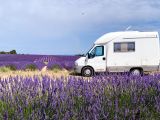
- Stay up to date on great motorhome destinations
- Receive exclusive deals and promotions
- Found a nice motorhome? Save it for later
Goboony uses cookies and similar technologies to provide our service to you. They also help make our communication to you easier and more personalised. With these cookies Goboony (and third parties), can track your internet behavior inside and outside Goboony. Some are necessary to help our website work properly and can't be switched off, and some are optional but support Goboony and your experience in other ways. Using cookies, we (and third parties) adapt our website, advertisements and communication to better suit your interests. You can accept the cookies by clicking on the button below. If you cookie-modal#acceptNecessaryCookies">refuse them we will only use functional and analytical cookies. Read our cookie policy .

The Ultimate Guide to Touring Europe in a Motorhome
Planning to tour Europe in a motorhome? Before you hop into that idea, you may need to familiarize yourself with the benefits of recreational vehicles or RVing. Why would you want to choose a motorhome over other traditional options? Do you want the total freedom it provides? Or does its unique accommodation satisfy you?
In addition, you need to assess how motorhome-friendly European tours are. Yes, using your campervan in Europe is quite different than your usual weekend RVing. It requires better planning and a world of essentials. If you’re really into this kind of trip, you better keep your eyes on the road to stay safe . Here’s an article to guide you in your RVing in Europe to take your smooth-sailing ride after you step on the gas.

What To Consider Before Starting The European Tour
Motorhome features.
First and foremost, you need to pick a motorhome. You may consider your needs first based on the number of passengers and the length of the trip. For these concerns, you may think about the type and quality of beds of the camper vans that’d accommodate you.
In most cases, beds turn into living rooms in an RV. There are standalone beds too. In choosing the bed type, you may dwell on the idea of determining whether or not you like the convertible or not. In addition, there are motorhomes with bunks, ideal for kids and teens.
Yet, most adults hate this feature. So, it’d be better to ask the passengers which type would they prefer. Other things to look at are the seating, kitchen and available appliances, and bathroom. If you haven’t chosen yet, you may go to stores offering RVs for hire, such as wilderness.co.nz/motorhome-hire-nz and others for a lot of camper vans to choose from.
Camping Costs
Like any RV tour, you’d always consider the expenses in gas, food, and other essentials. Generally, gas prices in Europe are higher than in most countries. If you want to cuts costs in this aspect, you may choose a smaller camper van. Ideally, couples could opt for compact vans for this purpose.
Apart from this, you would need to have a budget for your cooking needs. In many camper vans, propane tanks are used. The food and similar expenses differ in each European country. Food prices in Southern Europe are typically lower than in the North.
Roads and Routes
To save money, most campers in Europe take back roads. Usually, highways have road tolls that add up to expenses. Apart from the savings, backroads offer better landscapes where campers could stay in.
Regarding your stay, may it be on your own or with a partner, the easiest way you could get into Europe for RVing purposes is through short-term visa-free stays for 90 days. European Visa-exempt program allows this option for foreigners, but only for visits in the following countries identified as members of the Schengen Area:
- Czech Republic
- Netherlands
With this option, you may plan to take a Schengen country for a 90-day trip and move to a non-Schengen country for the next 30 days. Then, you may go back to a Schengen-covered country for another 90 days. Having this in mind, you could have a planned route before your much-awaited RVing.
However, by 2023, travelers would need to apply for European Travel Information and Authorization System (ETIAS) to comply with the continent’s new travel guidelines. With this protocol, travelers need a valid passport and an approved ETIAS visa waiver to gain entry.
Seasons for a European Motorhome Trip
Generally, any season offers the best RVing experience for campers. Yet, many camping enthusiasts suggest the following months, as they’re known to have the lowest camping population and ideal temperature.
April to May: During these months, campground prices are generally cheaper. In addition, most residents are inside their homes, so there are fewer people camping, especially in Continental Europe.
November to March: This stretch is ideal for Southern Europe. Most campers head South because of the freezing temperature in the North during the winter season. Yet, the campgrounds are open and fabulous in these months.
June to August: This may have the most pleasant temperature and campgrounds. Yet, it’s also the most populated as to the number of campers.
Final Thoughts
Suppose you’re already familiar with motorhome trips and the necessities for your ultimate European tour. Now, you may start to pick which places you’d go first. Ideally, most campers choose Croatia because of its picturesque scenery and rich culture. In addition, it’s smaller compared to other countries, making it preferable to beginners.

Another good destination is the United Kingdom. This country has a lot of camper-friendly roads and villages. Other places to choose from are Tuscany, Italy; Bavaria, Germany; and the Czech Republic. Before you continue, keep in mind that European countries have different laws for RVing and driving. You may need to be familiar with these rules before setting off for your European journey.
More Destination articles you might enjoy

Meghan Waters Mbaye
Leave a reply cancel reply.
Your email address will not be published. Required fields are marked *
This site uses Akismet to reduce spam. Learn how your comment data is processed .

Community Features
Get traveling, backpacker 101.


The Holiday Road Network
The top 20 motorhome routes.
Here you will find the 20 most beautiful and most travelled routes and their best sights. No matter whether you want to be on the road for just a weekend or several weeks.
Would you like some more inspiration? You will find many more routes in the country selection.

Brittany Road Trip by Motorhome
Discover one of the best-organised areas for travelling by campervan or motorhome in France. Let yourself be surprised by a varied landscape and numerous charming seaside villages where you can enjoy the culinary specialities of the region.

Harry Potter Filming Locations Scotland
Explore the iconic filming locations in Scotland on this motorhome tour. From various lochs and locations in the Scottish Highlands to the famous Glenfinnan Viaduct and many places in Edinburgh, you will always feel the Magic of Harry Potter.

Harry Potter Filming Locations England and London
Following the story from one of the most notable and popular series of books and films enjoyed across many generations, this tour will take you through many of the iconic filming locations within England that paved the way to creating the magical world of Harry Potter.

Ireland’s Wild Atlantic Way Route
One of the most striking coastlines to travel, Ireland’s Wild Atlantic Way stretches over 2,500 kilometres from the tip of County Donegal down to County Cork. Discover breathtaking landscapes and cultural highlights by motorhome and stay at the most beautiful campsites.

German Alpine Road
The German Alpine Road runs for 484 kilometers from Lindau on Lake Constance to Schönau am Königssee. The oldest holiday route in Germany offers driving pleasure, grandiose views and connects the most famous sights of Bavaria with each other: This makes it one of the most popular travel destinations in Germany.

The Peak District Circular Route
Located at the heart of England the Peak District countryside runs across the borders of 4 counties: Derbyshire, Yorkshire, Staffordshire, and Cheshire.

Romantic Road
A triad of nature, culture and hospitality has been the hallmark of the Romantic Road since 1950. It is the best known and most popular German holiday route and runs from the river Main to the Alps.

Lake District Highlights
A beautiful National Park in the northern region of Cumbria, England. A popular holiday destiniation that draws visitors with its scenic lakes, tarns and dramatic fells.

Camino del Cid
Exciting battles, medieval knights, epic songs and much more. On this route you will explore the same path travelled by the legendary Cid, mythical character of the Reconquest, only you will probably be comfortable in your motorhome, enjoying the music and not getting lost with the help of a navigation system. Explore the old Islamic kingdoms, the cultural and natural heritage in the ancient no man's land, conquer Valencia and defend the south from a beautiful campsite overlooking the sea.

Cotswolds & Surrounding Area
At almost 800 M 2 the breath-taking Cotswold countryside runs across the borders of 5 counties: Gloucestershire, Oxfordshire, Warwickshire, Wiltshire and Worcestershire.

Route of Rhine Romanticism
The Rhine Valley, one of the most beautiful landscapes in Europe, has over 2,000 years of history and countless legendary stories.

Loire Valley Castles
Embark on an enchanting journey to the castles of the Loire Valley in your motorhome. From shining Orléans to charming Nantes, each stop is a chapter in the history of French monarchy. Discover the majestic cathedral of Orléans, explore the Renaissance in Amboise, be enchanted by the narrow streets of Tours and marvel at the splendour of the castles of Huismes, Saumur and Angers.

Marguerite Route
Whether it's the wild North Sea or the peaceful Baltic Sea, with 7,300 km of coastline and almost 500 certified, dreamy campsites, Denmark offers the best conditions for a successful holiday.

Grand Tour of Switzerland
Switzerland offers an enormous variety of experiences and a breathtaking landscape: Admire the mirroring of the unique Alpine panorama in turquoise lakes.

Moselle Slate Road
The Moselle Slate Road leads through a varied and charming landscape. Through vineyards on the lovely Moselle, across the volcanic landscape with the connected volcano park to the heights of the Eifel.

German Fairy Tale Route
„Take me with you to your bed," says the spooky frog. The fact that it is kissed is probably the greatest mistake in Grimm's fairy tale history.

German Wine Route
Gentle wine country, lush orchards, the Palatinate Forest with quiet valleys and murmuring brooks and a Mediterranean climate - that is the German Wine Route.

Green Road/Route Verte
The Green Route encompasses three regions in two countries and offers travellers thematic offers that are attractive without borders: the winegrowing in Alsace and Baden, the culinary "stars" and "étoiles" of the region on both sides of the Rhine and the scenic beauties and differences.

German Half-Timbered House Road
The German Half-Timbered House Road - one of the most important holiday and cultural routes. This was established in 1990 when the establishment of the first regional route “Von Hann. Münden to Alsfeld ”was launched.

Austrian Romantic Road
14 enchanting towns and villages have joined together to form the Austrian Romantic Road. Away from the motorway between Salzburg and Vienna, castles, palaces, museums, monasteries, mountains and lakes are waiting to be discovered.

German Volcano Route
Mighty volcanoes and magical maars - experience the fascination of geological history in the Vulkaneifel.

UNESCO World Heritage Routes Germany
Only the best among the outstanding testimonies to human and natural history are allowed to bear the title of UNESCO World Heritage. And you will find many of the best in Germany.

Baden Wine Route
There are many ways to cross "Germany's most beautiful corner of pleasure" - but hardly any more enjoyable than by car, motorhome, bicycle or on foot along the Baden Wine Route.
Routes by Countries

United Kingdom

Switzerland

- Legal Notice
- Privacy Policy
- Terms of use

- Home take me
- Travel Guides
- Itineraries
- Travel Tips
- North America
- About me learn more
- Contact get in
Europe Road Trip from The UK – A Magical 10 Day Motorhome Itinerary!
Last Updated on 7 November 2022
*This post may contain affiliate links , which means that if you decide to make a purchase through one of these links, I will receive a commission at no extra cost to you! This allows me to continue bringing you valuable content for free and any purchases you make via these links are gratefully appreciated. Please refer to my Disclosures for more information.*
Fancy an enchanting road trip to some magical towns and cities.
Motorhome, RV, Campervan… call them what you will, but jumping in one and hitting the autobahns for a road trip through Europe is one of the best ways to explore the continent! They are literally homes on wheels that allow you the freedom to go (nearly) anywhere your heart desires. And what better contenders for a 10 day driving holiday to Europe than Germany and Belgium? On this Europe road trip from the UK, you will visit 2 of Belgium’s most charming cities and 6 of Germany’s most beautiful small towns (including a real hidden gem) which make for some of the most unique places to visit in Europe! So you can expect a complete overdose of storybook charm, but who could ever get bored of these uniquely enchanting settings, ay?

Tip: There are various opportunities for cycling on this Europe road trip itinerary. So be sure to strap your bicycles to the back of your motorhome otherwise you’re going to miss out on some real good stuff!
Note: Just because this is a motorhome itinerary, there’s nothing stopping you from using this if you’re looking for car road trip ideas for Europe. Instead of staying in the campsites, just book yourself into a hotel for each of the overnight stops.
Road trip to Europe itinerary overview
Tip: When you’re road tripping in Europe, to avoid unexpected charges set your satnav to avoid toll roads if this option is available to you. Or do your research beforehand so you know where they are!

Spanning ~1,650km (~1025 miles), beginning and ending in the French port of Calais (which is very accessible from the UK) and broken down into manageable chunks for daily driving, this campervan route around Europe will take you to some stunning cities in Belgium and beautiful medieval towns in Germany near the Rhine, Moselle and beyond across 10 days. And to avoid backtracking and effectively utilise your time on the continent, it’s a fairly circular route (just like this 7 day motorhome itinerary for Scotland )!
Note: This European road trip route includes both on and off site options for overnight parking. On site means on a campsite where there are facilities. Always check which months these are open as some campsites close off peak, and pre-book if possible. Off site means not on a campsite, so there may be no facilities, and availability cannot be guaranteed. Do your own research prior to departing for up to date information.
Know before you go
Always check the entry requirements for the country you are visiting to see if you will need a Visa to enter, and that you have enough validity left on your passport.
Always have a good level of travel insurance for every international trip. This is a non-negotiable part of any trip abroad, as the unexpected can happen.
When is the best time to visit Western Europe?
Western Europe is a year-round destination. But dependent on your personal preferences, there may be some times that are better to visit than others. For example, during the European summer holidays which span from around late June-August, prices may be inflated and roads can be busier. During this time, it is advisable to book everything you need to in advance, and give yourself extra time to get from A to B. If you don’t want to find yourself stuck in traffic on a hot summers day, perhaps avoid these months. May-early June and September can be good options for a road trip of Europe.
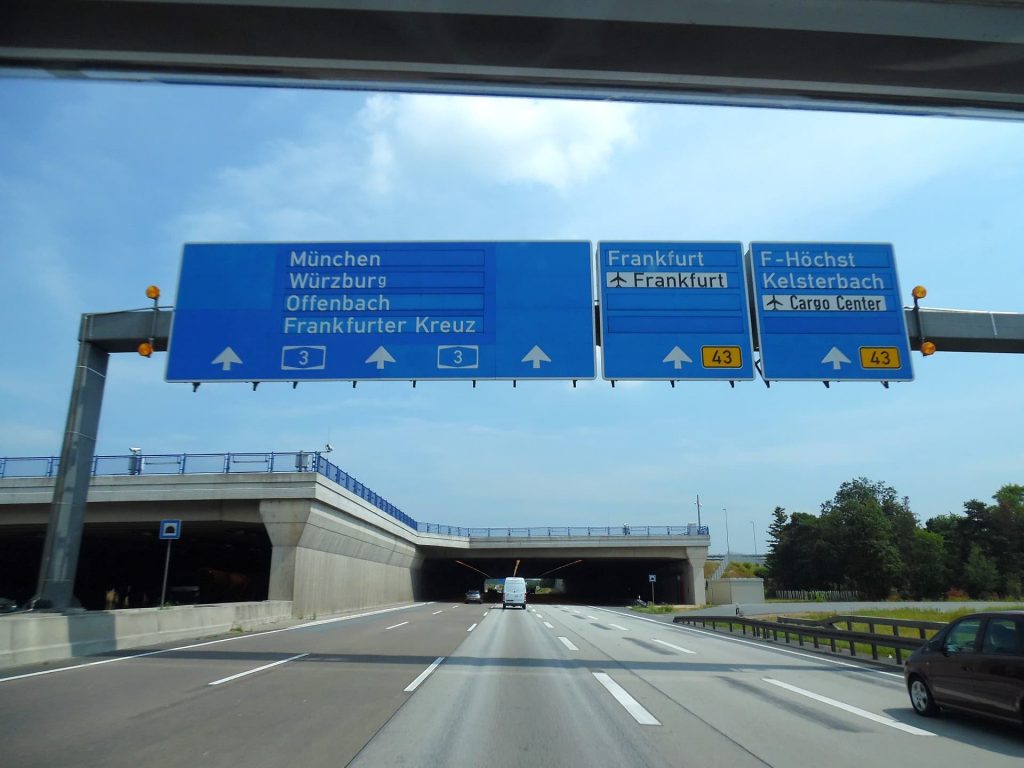
Tip : Visiting Europe off peak is one of the top tips on how to travel cheaper in Europe !
Can you drive from the UK to Europe?
Yes, absolutely. Although not across the channel unless you’ve got a super villain car-boat hovercraft type vehicle. The best way to reach Europe from the UK by road is to get the ferry from Dover or the Eurotunnel from Folkestone to Calais in France. There are other ports that you can use to reach various countries in Europe (e.g. France, Belgium or The Netherlands) which may be easier if you live in other parts of the UK, like Poole, Portsmouth, Hull, or Newhaven.
Tip: Research ferry prices and don’t assume that the port closest to you has the cheapest fares. Sometimes it works out cheaper to drive to a UK port that’s a little bit further from you (like Dover, because of the frequency of crossings available)!
What currencies do I need?
The currency in United Kingdom is the Great British Pound (£) – you will probably inevitably have this already as this is a road trip itinerary for Europe from the UK, unless you are using this as an add on for a United Kingdom itinerary!
The currency in France (where you will arrive), Belgium and Germany is the Euro (€) .

Day 1 of Europe road trip from UK
Get outbound ferry from the port of dover, uk, to calais, france, and then drive to antwerp in belgium, useful information for day 1.
Total distance: Calais to Antwerp is ~204km (~127 miles) Overnight stop: Camperpark Vogelzang , Antwerp (kind of like a grassy parking area for motorhomes that’s well located to explore Antwerp)
Morning itinerary for Day 1
Arrive at the Port of Dover, UK, and embark on the 1.5 hour journey across the English Channel to Calais, France. Once you reach solid continental ground, drive ~204km (~127 miles) to Antwerp, Belgium. Antwerp is the capital of the diamond trade and is much more than just an industrial port side city – it’s a cosmopolitan place boasting a maze of medieval architectural delights! Park up at Camperpark Vogelzang which will be your first overnight stop on this road trip through Europe from the UK.
Tip: As a general rule, early morning ferry crossings (I’m talking before 7.00am) are usually cheaper than one’s that depart at a more humane time. So if you want this trip to be kinder to your wallet, rise and shine early! I always book with P&O Ferries from Dover to Calais (and vice versa), but DFDS operate this route too.
Afternoon itinerary for Day 1
After lunch, jump on your bicycle and use the extensive network of cycle paths to navigate your way into the city centre. Spend your afternoon sightseeing in Antwerp – trundle the pretty cobbled streets of the Old Quarter, see the 16th century guild houses which line the Great Market Square (Grote Markt), and wander the renowned Antwerp docks! Once you’re all tired out from exploring, head back to camp and settle in for an early evening (it’s likely to have been a long day)!

Tip: If you don’t have any bicycles with you (which I highly recommend you do because there’s some fantastic cycling opportunities on this motorhome itinerary for Europe), you can use public transport to get from Camperpark Vogelzang into the city centre.
Day 2 of Europe road trip from UK
Antwerp, belgium to linz am rhein, germany, useful information for day 2.
Total distance: ~261km (~162 miles) Overnight stop: Wohnmobilstellplatz am Rhein , Linz am Rhein (GPS coordinates are 50° 33′ 44″ N 7° 16′ 48″ E or search the name on Google Maps) – off site parking on the side of the River Rhine a stone’s throw from the Old Town, limited parking spaces, train nearby so can be noisy
Morning itinerary for Day 2
Today you will travel from Belgium across to German soil – the land famous for beer, Bratwurst, cuckoo clocks and lederhosen’s! Rise and shine early this morning and hit the road bound for Linz am Rhein, Germany. Linz am Rhein is a charming town located on the banks of the roaring River Rhine, and is the first of the most beautiful small towns in Germany you will visit on this road trip through Europe! Aim to reach Wohnmobilstellplatz am Rhein by lunchtime, so you have the whole afternoon for exploration!
Tip : There are only a small number of campervan spaces at Wohnmobilstellplatz am Rhein, so you might want to have a plan B just in case you can’t park. Each time I’ve visited there’s been vacant spaces, but failing to plan is planning to fail as they say.

Afternoon itinerary for Day 2
After you’ve refueled with food, spend some time wandering the cobbled streets of Linz am Rhein. The Old Town is full of half-timbered wonky buildings that are adorned with striped shutters, and has its own pretty little market square decorated with fountains. You’ll also find some unique shops and quaint cafes here too. And don’t miss The Neutor – a preserved tower of the old city wall fortifications which rises high above the town. After an afternoon strolling, retire back to your motorhome for dinner with a view over the busy River Rhine!
Tip: There’s a Linz in Austria too, so make sure you include the ‘am Rhein’ bit. Otherwise your journey from Antwerp is going to be hundreds of miles longer!
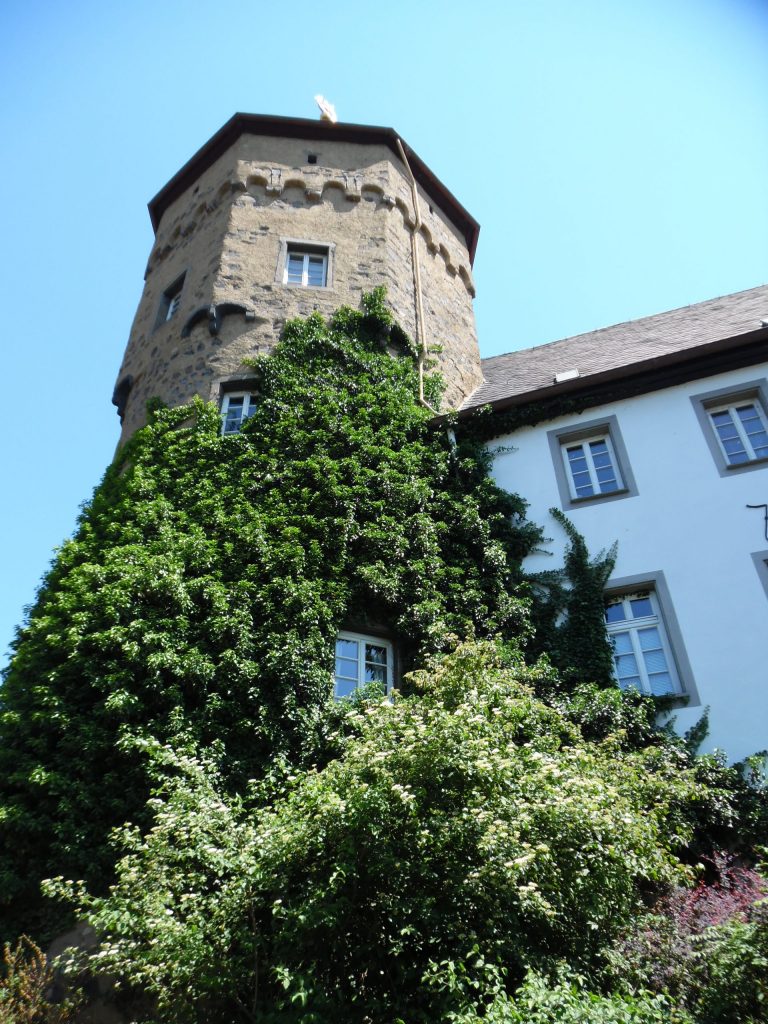
Day 3 of Europe road trip from UK
Linz am rhein to bacharach, germany, useful information for day 3.
Total distance: ~87 km (~54 miles) (follow the River Rhine) Overnight stop : The motorhome parking area adjacent to and managed by Sonnenstrand Campsite in Bacharach (just set your satnav for Sonnenstrand Campsite)
Morning itinerary for Day 3
Today, you will continue your journey down the mighty River Rhine and visit another of Germany’s magical towns. And there’s no need to get up at the crack of dawn today (unless you want too, of course) because the distance you’ll cover is much less compared to yesterday’s mammoth drive! After breakfast, enjoy the scenic route alongside the River Rhine, passing many vineyards and towns on the way (if you take the route through Koblenz and via Boppard you’ll pretty much follow the river the whole way). When you arrive in Bacharach, park up at the hard standing motorhome parking area adjacent to Sonnenstrand Campsite.
Tip : Many of the campsites in this itinerary were found using the Camperstop book , which is like the bible of European campsites and off-site parking spots and a trip planning tool I can’t plan travel without.
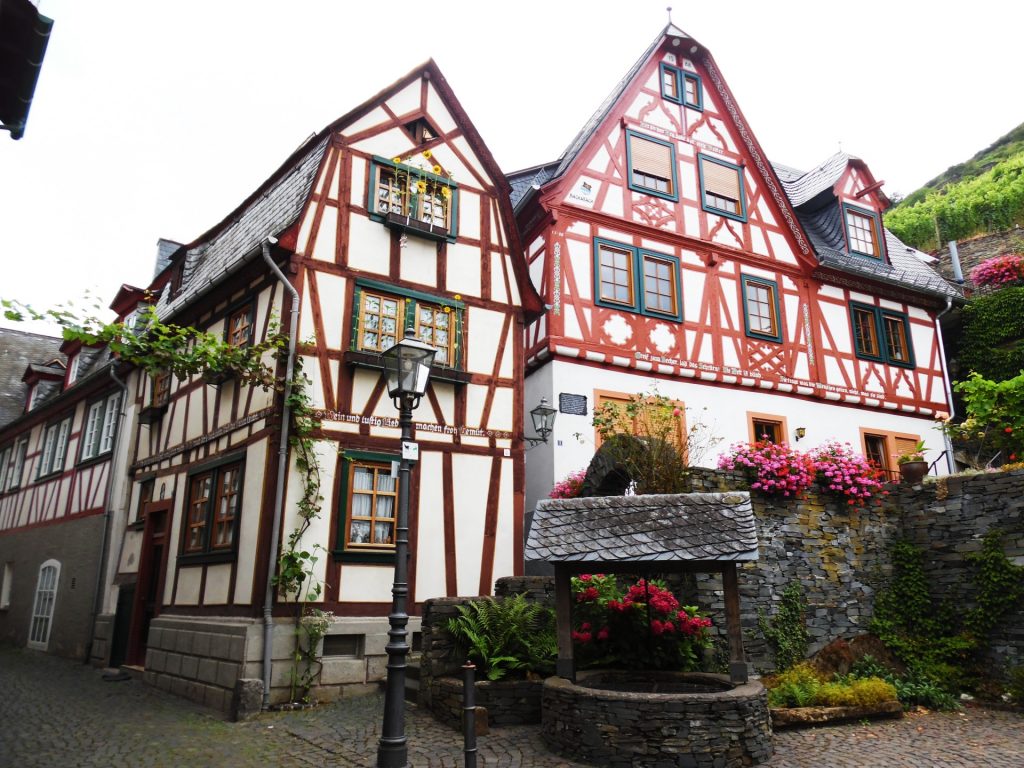
Afternoon itinerary for Day 3
This afternoon, spend some time wandering the quaint town of Bacharach. As you enter via the walls that conceal Bacharach, a medieval Old Town will unravel before your eyes. Full of half-timbered wonky buildings, cobbled streets, and crafty shops, Bacharach is a charming place to spend your afternoon. Wander up through the vineyards to Postenturm Tower for spectacular views over the town and Rhine valley. And afterwards, jump on your bicycles and head north alongside the river, following the flat paths to the nearby town of Oberwesel and then Sankt Goar (if you’re feeling energetic).

Day 4 of Europe road trip from UK
Bacharach to rothenburg ob der tauber, germany, useful information for day 4.
Total distance : ~255 km (~159 miles) Overnight stop : Any of the allocated motorhome parking areas surrounding Rothenburg ob der Tauber (P2 or P3) – these are equipped with toilets and electric hook up
Morning itinerary for Day 4
Today calls for another early start, so after breakfast hit the road bound for Rothenburg ob der Tauber. Rothenburg ob der Tauber is perhaps one of the most famous stops on the renowned Romantic Road – (one of the most well loved and best road trips in Europe)! This fairytale settlement has one of Germany’s best preserved medieval Old Towns, so it will come as no surprise that it’s a busy little place! It’s the most southerly point of Germany you’ll reach on this road trip around Europe, before you head west tomorrow and after start making your way back north. Park up at P2 or P3 (Rothenburg’s allocated parking areas for motorhomes) and get yourself settled in.
Tip: It can be good to try and get an early start on your daily driving, so you can maximise your time exploring each place of an afternoon. Plus, the roads are usually quieter in the mornings (aside from the work rush hour). But if you get tired, be sure to pull over for a rest.
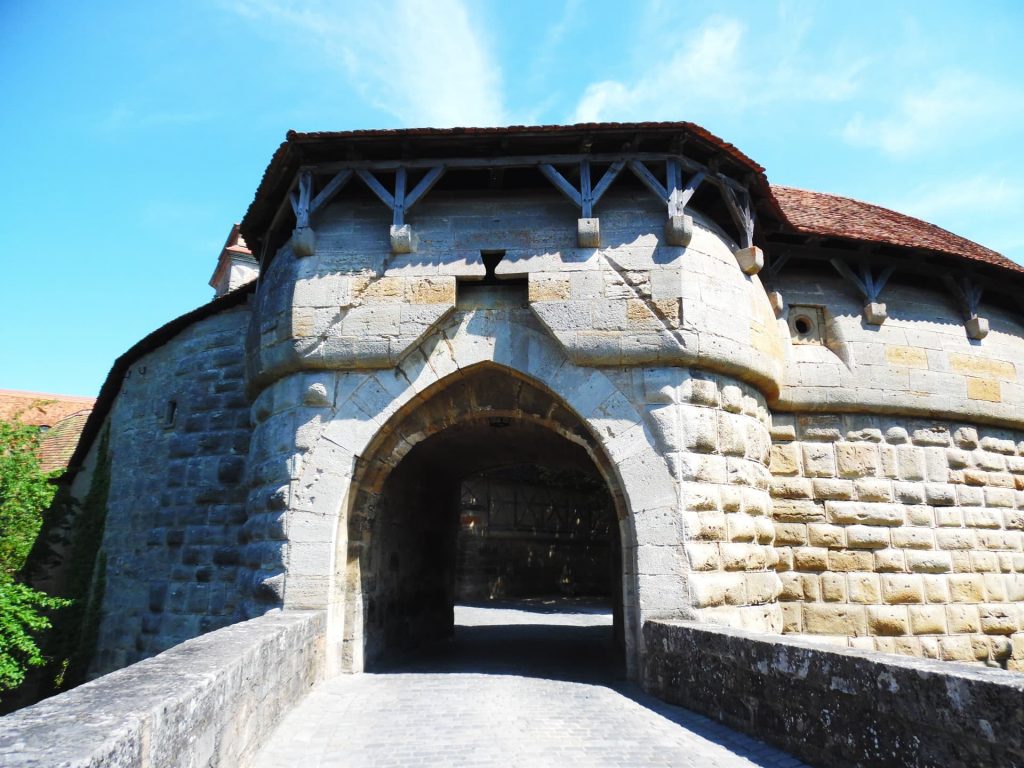
Afternoon itinerary for Day 4
This afternoon is your chance to step into a real life children’s storybook and enjoy some sightseeing in Rothenburg ob der Tauber. The Old Town is purely enchanting and is bound to captivate your imagination, and visiting is definitely one of Europe’s bucket list experiences! Go wherever your curiosity takes you but be sure not to miss walking around the city walls for picturesque vistas across the terracotta roofs that fill the Old Town! Take another wander after sunset once the many tour groups have departed and calm prevails, before heading back to your van!

Tip: Rothenburg ob der Tauber has some year-round Christmas shops which sell some of the most beautiful festive decorations you’ll ever see, like Kathe Wohlfahrt . If you’re a Christmas fanatic (like me) you’ll definitely want to visit one of these!
Day 5 of Europe road trip from UK
Rothenburg ob der tauber to ladenburg, germany, useful information for day 5.
Total distance : ~176 km (~109 miles) Overnight stop: Wohnmobilstellplatz Ladenburg
Morning itinerary for Day 5
Today it’s time to head off the beaten path, and drive west across to a little settlement called Ladenburg. It might not be one of Germany’s most well known historic towns, and you may have never heard of it before. But sometimes places like these turn out to be real hidden gems, and Ladenburg is no exception to the rule. So on morning 5 of your Europe road trip from the UK, head from Rothenburg ob der Tauber to Wohnmobilstellplatz Ladenburg. Wohnmobilstellplatz Ladenburg is a quiet spot beautifully situated just outside the quaint town of Ladenburg in amongst the fields, with easy access to an abundance of flat cycle paths.
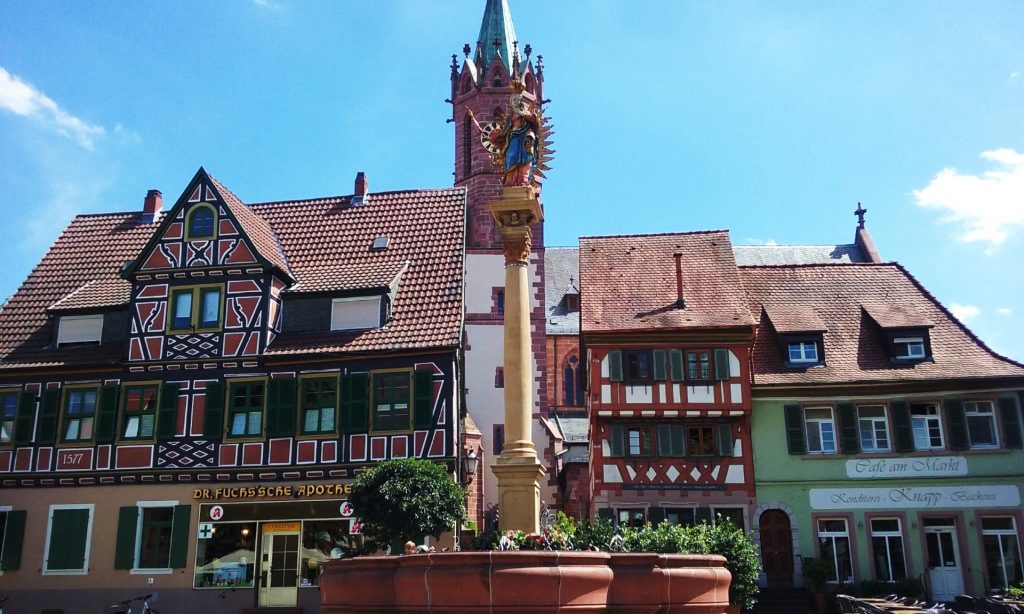
Afternoon itinerary for Day 5
After lunch, spend your afternoon enjoying the peace and quiet of Ladenburg. Wander the through the medieval Old Town, where the streets are lined with half-timbered wonky houses, cobble stones, statues, fountains, and little independent shops. Be sure not to miss the market square, with St Gallus Church in the backdrop. After you’ve strolled through Ladenburg, jump on your bicycle and enjoy the flat cycle paths that crisscross the fields (it’s a cyclers paradise). Navigate your way south by following the Neckar River to the University famed town of Heidelberg. Then, after you’ve enjoyed a bit of Heidelberg and seen the The Karl Theodor Bridge, cycle back to camp!

Day 6 of Europe road trip from UK
Ladenburg to cochem, germany, useful information for day 6.
Total distance: ~174 km (~108 miles) Overnight stop: Moselle riverside parking (GPS coordinates: 50° 9′ 10″ N 7° 10′ 6″ E)
Morning itinerary for Day 6
After breakfast, depart from Ladenburg north through Germany to Cochem. Cochem is a beautiful town located alongside the Moselle River, and is surrounded by rolling vineyards. One of Germany’s best loved medieval towns, Cochem is overlooked by Cochem Castle and has a perfectly preserved and pedestrianized Old Town, hidden away behind fortified walls and gates. It’s a stunning place to stop on any European road trip given its indisputably picturesque location.

Afternoon itinerary for Day 6
Once you’ve found your overnight stop, enjoy some lunch with a view. Then, wander into Cochem to explore the Old Town, and be sure to head up to the castle for spectacular views down through the Moselle too. Cochem is another prime location for some cycling, given the abundance of flat paths which span the Moselle River, so dedicate some time to this before settling in for the evening!
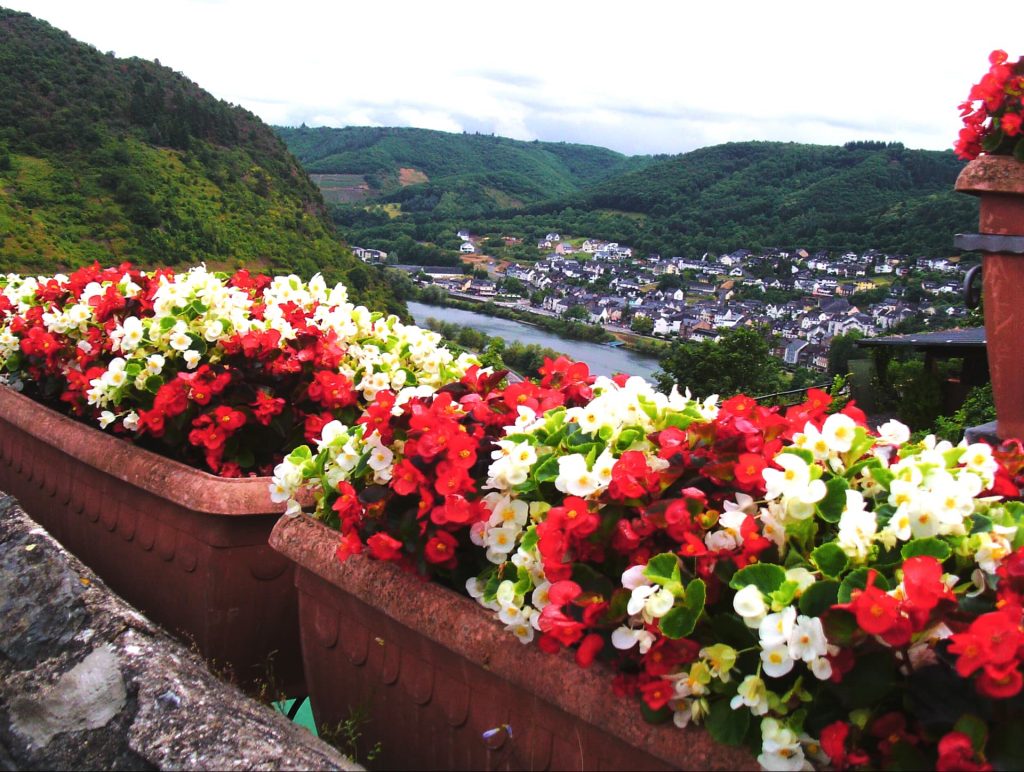
Tip: There are various spots that allow overnight parking for motorhomes in Cochem should you not be able to get into the one listed above, as the town is another well loved stop on motorhome routes through Europe.
Day 7 of Europe road trip from UK
Cochem to monschau, germany, useful information for day 7.
Total distance: ~111 km (~69 miles) Overnight stop: Campsite Perlenau , Monschau
Morning itinerary for Day 7
Today, continue north up through Germany to the tiddly town of Monschau which lies very close to the border with Belgium (and a short drive to The Netherlands too). As the distance from Cochem to Monschau is a bit shorter at than some of the other distances you have driven, you can afford to leave a little later if you wish to enjoy the serenity of the Moselle River a bit longer. Head towards Campsite Perlenau in Monschau which will be your overnight stop tonight.
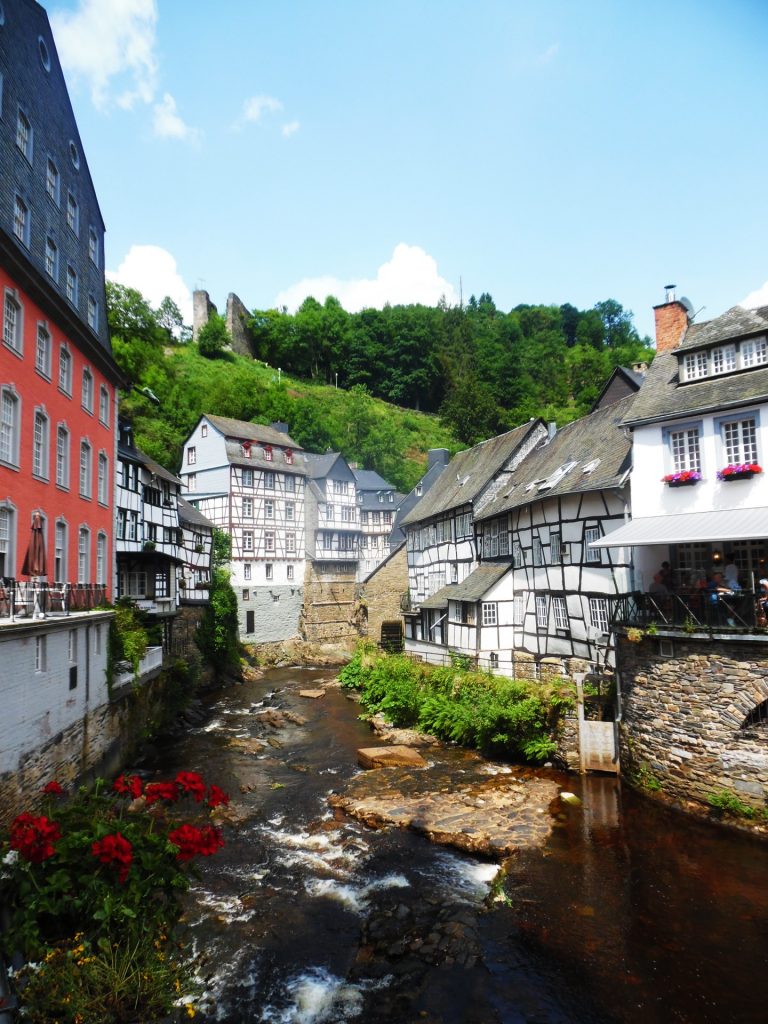
Afternoon itinerary for Day 7
Once you’re parked up and settled in, wander or cycle into Monschau. Monschau is crammed full of traditional half-timbered houses, little shops, and cobbled streets, and is a sociable town with many quaint cafes. Immerse yourself in the magical aura of the town for the afternoon, as this is the last German town you will visit on this road trip to Europe from the UK! Perhaps sit for a while and soak up the medieval atmosphere which permeates the narrow streets, whilst enjoying a cold German beer!
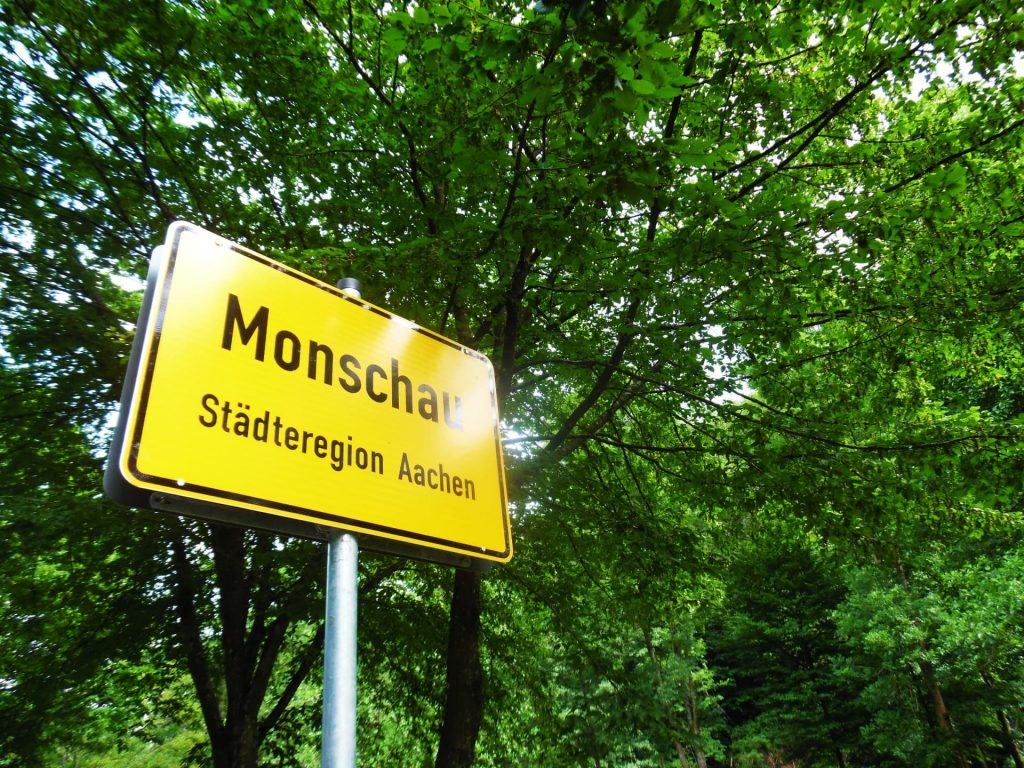
Day 8 of Europe road trip from UK
Monschau to bruges, belgium, useful information for day 8.
Total distance : ~249 km (~155 miles) Overnight stop: Parking Kanaaleiland , Bruges (GPS coordinates: 51° 11′ 44″ N 3° 13′ 35″ E)
Morning itinerary for Day 8
On Day 8, it’s time to wave goodbye to Germany and hop over the border back into Belgium. As you are nearing the end of your Europe road trip from the UK, it’s time to work your way back towards the Port of Calais in France. But before it all comes to a sad end, visit the the UNESCO World Heritage Site of Bruges. Bruges is a city in Belgium that is world renowned for it’s beauty – think canals, horse and carts, cobbled-streets, Gothic architecture, museums, red bricked medieval step roofed houses, Belgian waffles, and an overload of chocolate shops!
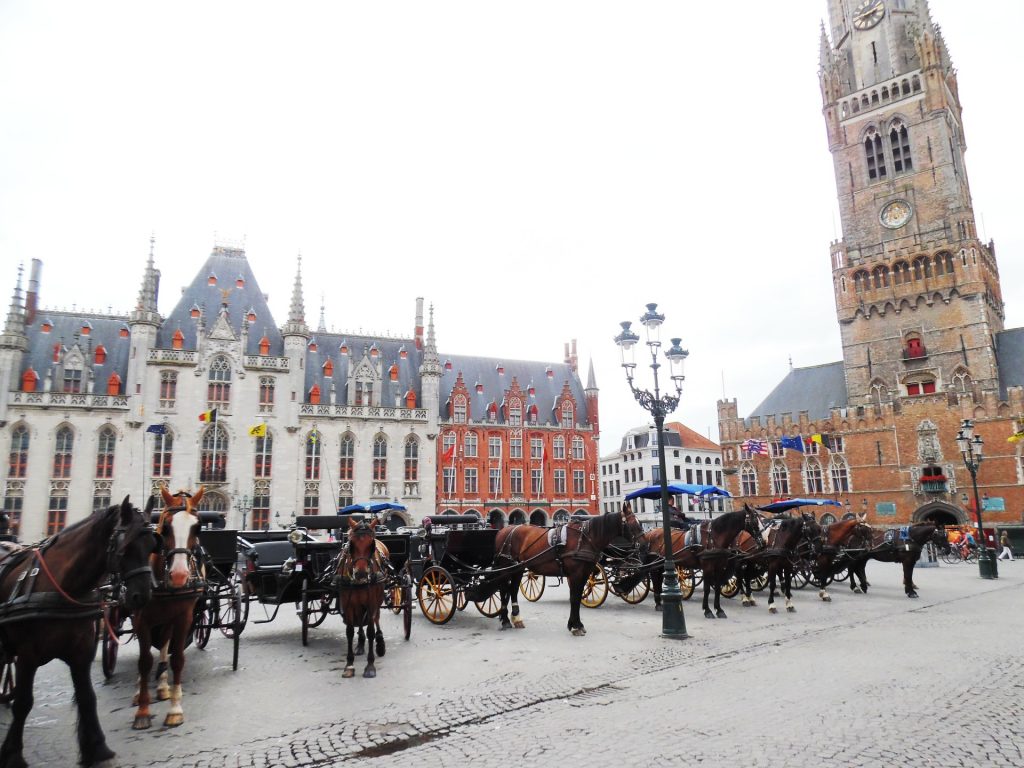
Tip: Slow and steady wins the race when you’re driving a motorhome through Europe, especially if it’s a larger one. Keeping a steady speed on the autobahns can be more economical on your fuel tank and therefore should save you some money!
Afternoon itinerary for Day 8
Park up at Parking Kanaaleiland – a designated parking area in Bruges for motorhomes, with electric hook up. Parking Kanaaleiland is a stone’s throw from Bruges, so it’s only a short walk before you can spend some time uncovering the magic of the city. Grab a map from one of the tourist information centres and spend this afternoon wandering the many canals, lakes and squares of the city. Enjoy a Belgian waffle before heading back to your campervan for the evening, when you can figure out the things you want to see in Bruges tomorrow!

Day 9 of Europe road trip from UK
Spend the whole day in bruges, useful information for day 9.
Total distance: N/A – spend today in Bruges Overnight stop : Parking Kanaaleiland, Bruges (the same as overnight on Day 8)
Itinerary for Day 9
As Bruges is such a stunning place and a fairly large city, Day 9 of this 10 day road trip through Europe from the UK is designated to spending the whole day there. If you need to shorten this itinerary to a 9 day one, you could cut this day and head back to Calais for your ferry this morning. But I would strongly recommend you allocate yourself one whole day to explore the city, and stay overnight again at Parking Kanaaleiland. After all, Bruges makes for one of the best city breaks in Europe in it’s own right! Here are some suggestions for things to do in Bruges on Day 9:
- Unleash the bicycles from the back of the van and head off across the cobbles, exploring both the inner and outer canals
- Take a boat ride around the canals
- Visit a museum or a chocolate shop
- Find one of the windmills of Bruges
- Stroll Minnewater Lake
- Explore the historic centre of Bruges and lose yourself in the many narrow lanes that join onto the main streets
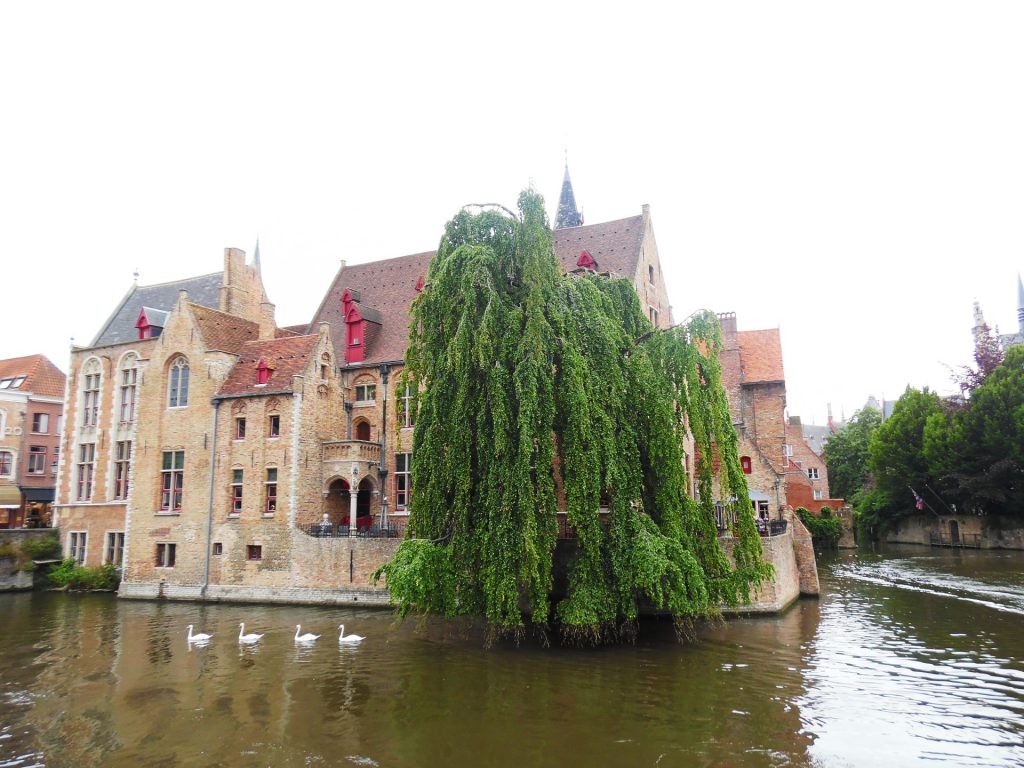
Tip: Make sure you have a bicycle lock with you. There are an abundance of places you can lock your bike up in Bruges, if you wish to stop and take a wander.
Day 10 of Europe road trip from UK
Drive from bruges to the port of calais, france, for return ferry to dover, uk, useful information for day 10.
Total distance : ~113 km (~70 miles) Overnight stop : N/A – you have reached the end of your 10 day Europe road trip from the UK
Itinerary for Day 10
You have reached Day 10 of your 10 day motorhome itinerary for Europe and it’s time to return back to the UK. As with your outbound trip, it’s usually cheaper to get an early morning ferry from Calais to Dover. Bruges is very accessible to Calais, making it a good place to stay the night before your return journey home. You can stay in Calais overnight on Day 9 if you wish to be even closer to the Port of Calais. This is down to your personal preference, and Bruges makes for a lovely place to end your trip!
Tip: If you decide to follow this road trip itinerary for Europe and stay overnight in Bruges on Day 9, make sure you give yourself ample time to get to Calais for your return ferry home the next morning. The journey time usually takes less than 2 hours if traffic is light!
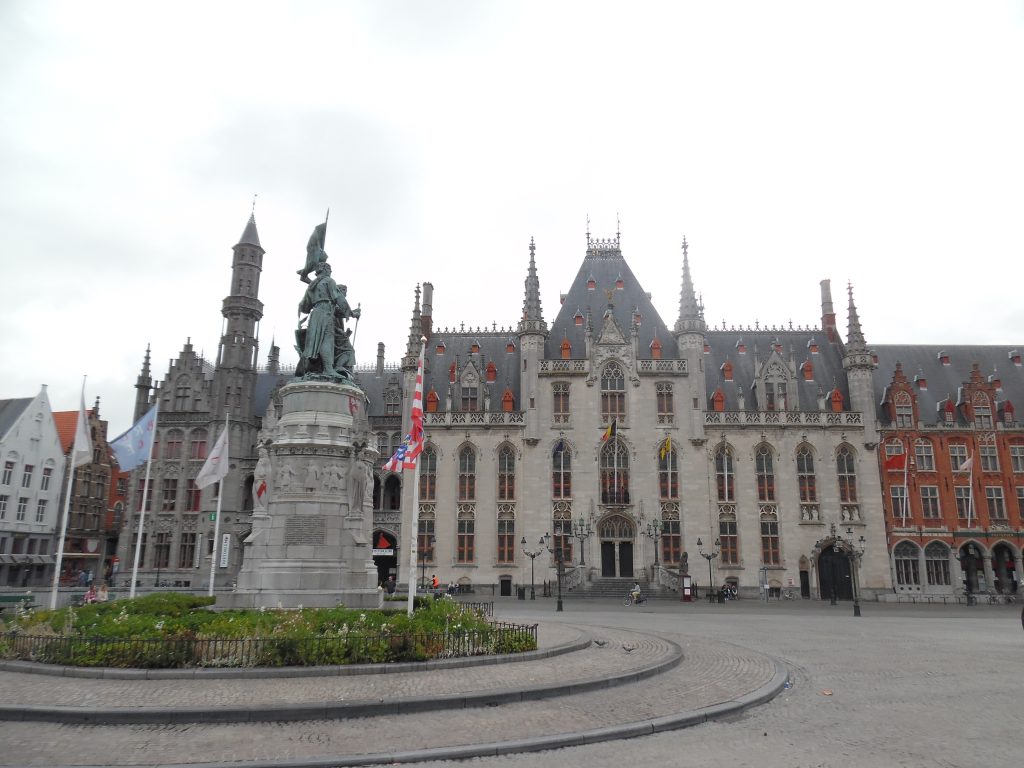
Europe road trip itinerary summary
There are many great campervan routes around Europe you can take, but this one is perfect if you are departing from the UK and only have 10 days to spare. You will visit some enchanting towns and cities, in all of their half-timbered glory (you might have guessed by now that this is a key component of any quintessential German town)! The continent is really well equipped for the road trip lifestyle, and it’s great transport links make it a fantastic destination for a Europe road trip from the UK!
Pssst… sharing’s caring! Pin this post using one of the images below, so you can find it easily later!
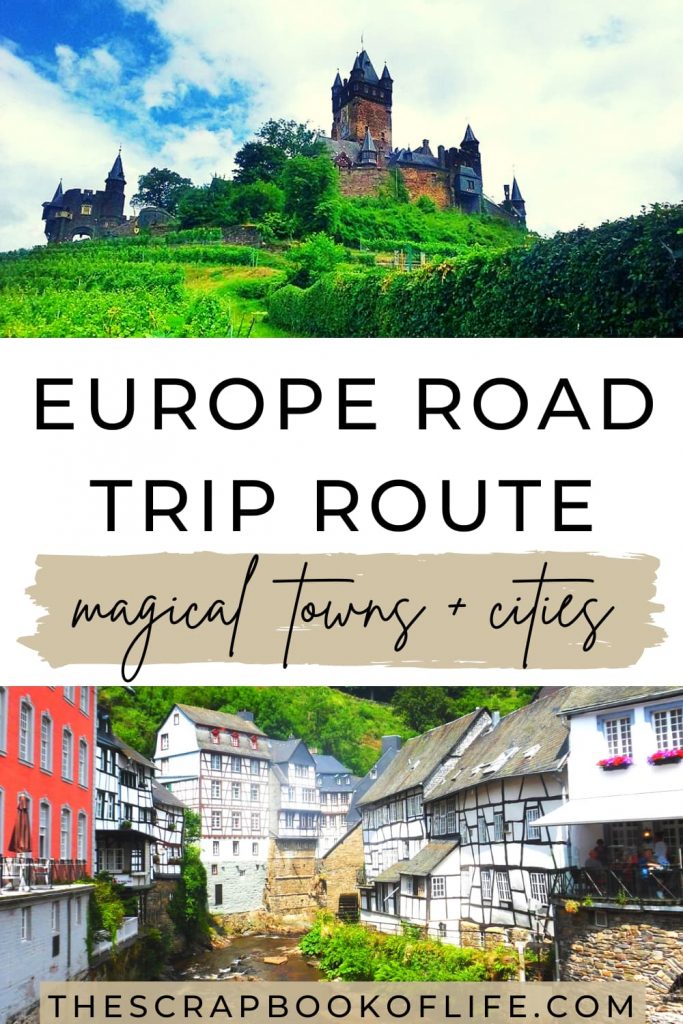
The Scrapbook Of Life
Posts by The Scrapbook Of Life
You Might Also Like
![europe campervan trip 5 Days In Slovenia Itinerary [No Car] – Magical Lake Bled & Ljubljana!](https://thescrapbookoflife.com/wp-content/uploads/2023/08/Lake-Bled-1-560x747.jpg)
5 Days In Slovenia Itinerary [No Car] – Magical Lake Bled & Ljubljana!
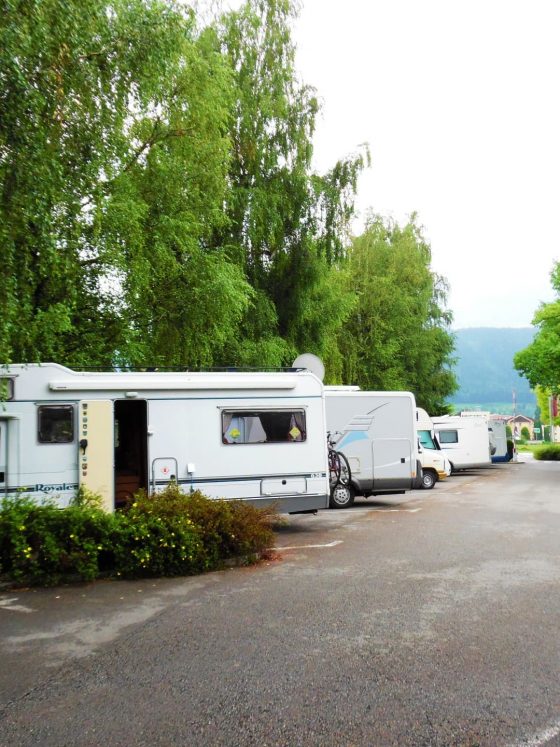
Europe In A Campervan – 11 Things You Must Know Before Your First Trip

Ljubljana Airport To Lake Bled By Bus – Easy Guide With Photos
![europe campervan trip 3 Days In Krakow – Very Best Krakow Itinerary [Eat, See & Do] + Exact Cost!](https://thescrapbookoflife.com/wp-content/uploads/2022/11/IMG_4112-560x747.jpg)
3 Days In Krakow – Very Best Krakow Itinerary [Eat, See & Do] + Exact Cost!

Krakow Airport To Old Town By Train – Simple Step By Step Guide & FAQs

Amsterdam During Christmas – 5 Festive Things To Do In December
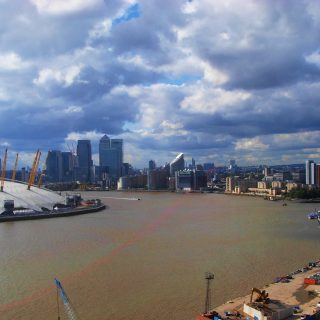
3 Days In London – An Itinerary For The Perfect Weekend Break + FAQs
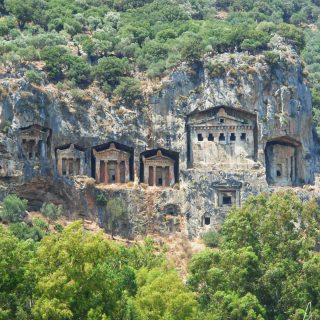
17 Unique Places To Visit In Europe You Must See!
We use cookies to ensure you get the best experience on our website.
Select your country preferences
Camper Van Rental Europe
Roadsurfer camper van rentals in europe.
Camper vans are the smallest, most compact RV type – perfect for vacations that include city trips. They’re easy to drive and park, which makes them very popular among beginners as well as camping experts. Even small, winding country roads and old European cities with narrow streets are easy to navigate with our camper vans. Ready to plan your European adventure? Book your camper van in Europe today!
Meet Our Camper Van Fleet
Enjoy both maneuverability and comfort with a camper van rental from roadsurfer. Thanks to its compact size, you can go on your European adventure with maximum flexibility. Here’s an overview of our camper van models:
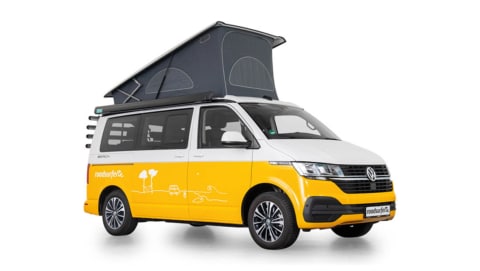
Beach Hostel Class B RV | VW T6.1 California Beach
- 150 hp diesel engine
- Big bed (whole vehicle width)
- Slide-out kitchen
- Manual pop-up roof
- Rear parking sensors with camera
- Cruise and distance control ACC, GPS
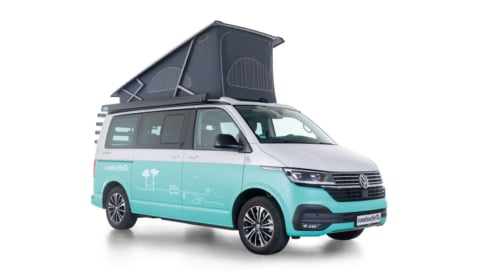
Surfer Suite Class B RV | VW T6.1 California Ocean
- Integrated kitchen
- Outdoor shower (cold water)
- Automatic pop-up roof
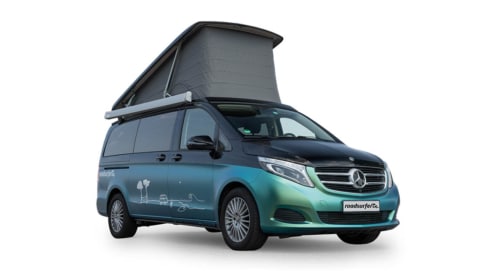
Travel Home Class B RV | Mercedes Marco Polo
- 163 hp diesel engine
- RV trailer hitch
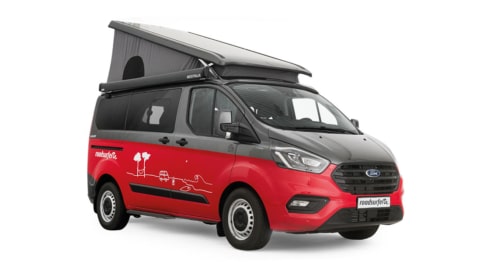
Camper Cabin Class B RV | Ford Nugget
- 170 hp diesel engine
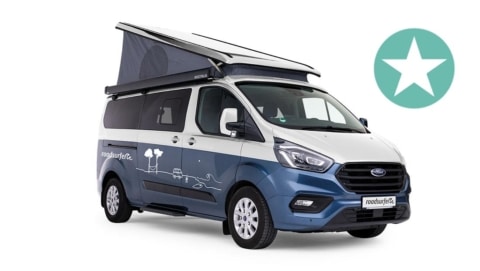
Camper Cabin Deluxe Class B RV | Ford Nugget Plus
- Tow hitch & Rear parking sensors with camera
Your roadsurfer Benefits
Rent a fully equipped roadsurfer camper van or RV and enjoy the ride with exclusive benefits. Your freedom on the road starts the moment you pick up the keys!
Brand new, fully equipped camper vans & RVs
Unlimited mileage & free 2nd driver
Rebook or cancel with the Flex option up to 48 hours before departure
Camping equipment & kitchen utensils included
Roadside assistance
Trending Destinations
Rent your camper van at one of these trending destinations in Europe today. Your next adventure awaits! Here’s an overview of the most popular countries with roadsurfer camper rentals:
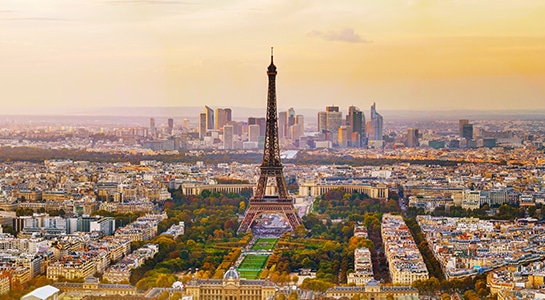
Camper Van Rental France
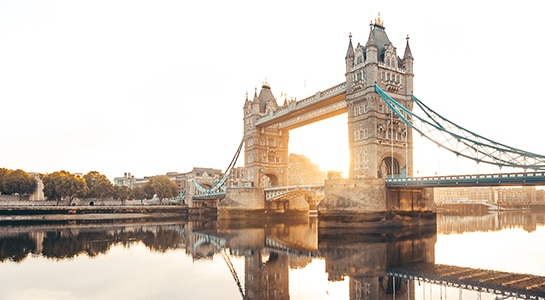
Camper Van Rental UK
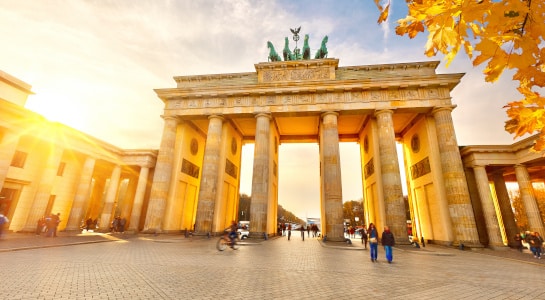
Camper Van Rental Germany
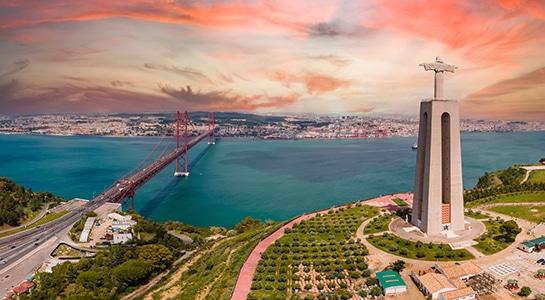
Camper Van Rental Portugal
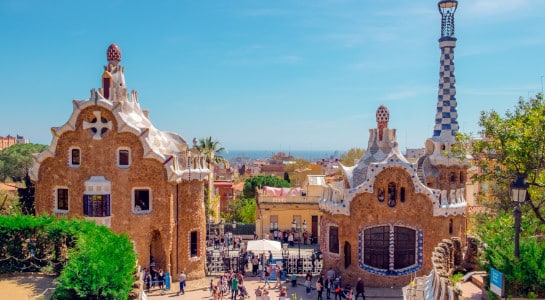
Camper Van Rental Spain
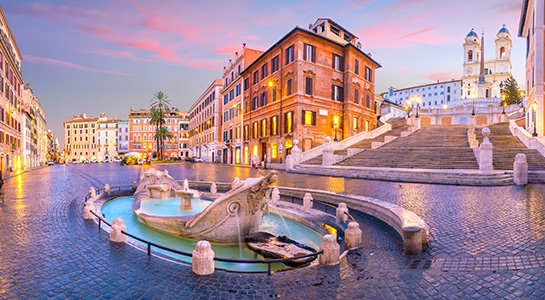
Camper Van Rental Italy
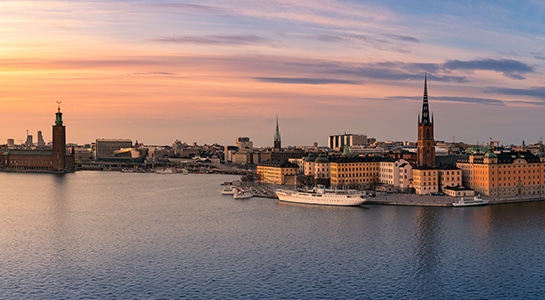
Camper Van Rental Sweden
Camper Van Rental FAQs
Our camper van rentals start at 65 euros / per night.
Please note that prices shown are subject to change and may vary depending on the time of travel, booking period, and pick-up location. Typically, the earlier you book, the more money you’ll save.
In Europe, drivers must be 18 and have a driver´s license (class 3 or B ) for more than a year. Our customers in the UK and Ireland have to be at least 21 years of age in order to be able to rent one of our camper vans.
Bookable Extras

Our included RV camping package will make sure you have the perfect foundation for your next trip. For everything else, there’s bookable extras. You need extra camping chairs, a bike rack, or a portable camping toilet? We’ve got you covered:
Rent your camper van in Europe today!
Roadsurfer camper & rv rental.
- Popular RV Rental Destinations
- roadsurfer Camper & RV Fleet
- RV Rental California
- RV Rental Nevada
- RV Rental Canada
- RV Rental England
- RV Rental France
- RV Rental Germany
- RV Rental Ireland
- RV Rental Italy
- RV Rental Netherlands
- RV Rental Norway
- RV Rental Portugal
- RV Rental Scotland
- RV Rental Spain
- RV Rental Sweden
- RV Rental UK
- RV Rental USA
- RV Rental Europe
- Liberty Lodge Class B RV Rental
- Couple Condo Class B RV Rental
- Horizon Hopper 4x4 Class B RV Rental
- Family Freedom Class C RV Rental
- Surfer Suite VW Camper Van Rental
- Beach Hostel VW Camper Van Rental
- Travel Home Mercedes Camper Van Rental
- Camper Cabin Ford Camper Van Rental
- Road House Sprinter Van RV Rental
- Family Finca Sprinter Van RV Rental
- Couple Cottage Sprinter Van RV Rental
- Camper Castle RV Rental
- RV Rental FAQs
- Vehicle Instructions & Explanatory Videos
- RV Camping Equipment
Sign up now and get a special discount
Receive exclusive tips on routes, camping spots, and much more!
For information on how roadsurfer handles your data, please refer to our Privacy Policy . You can unsubscribe at any time free of charge.
Hello, how can we help you?
- I want to change my booking
- I need information about the vehicles and/or equipment
- I need help operating my camper van or RV
Help & Support
Kontaktformular
Mo-Fr von 9:00 bis 18:00 Uhr: +49 (0)89 2154 1673
Language & Currency
Change language
Change Currency
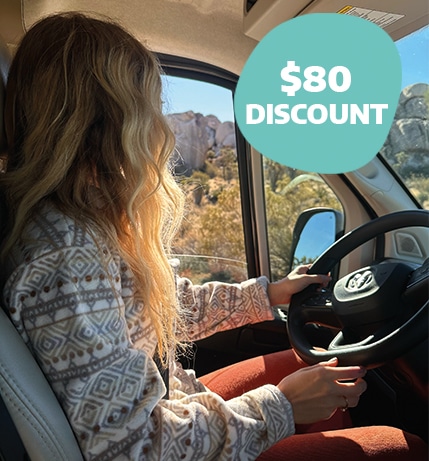
Springtime Adventures Ready to chase the sun and hit the open road for an unforgettable journey? Subscribe to our newsletter today and unlock a $80 spring discount (minimum 5 nights).
- Country of residence * Select United States of America Austria Canada Denmark France Germany Italy Ireland Netherlands Spain Sweden Switzerland United Kingdom Other

- Traveller Plus
- New Zealand
- Tours, Activities & Experiences
- On the Road Support
- Ferries to Scandinavia
- Rental Resources

Campervan & Motorhome Hire Across Europe
are you craving the freedom of the open road well, you’ve come to the right place.
At Apollo, we love road trips and we are happy to help you on your way to discovering the beautiful scenic roads throughout Europe. We have been helping holidaymakers embark on unforgettable journeys and enjoy unique experiences for more than 30 years.
Exploring in a motorhome is easy – you just pack your bag and everything will be ready for you. With a large fleet of campervans & motorhomes for hire across Europe, our vehicles can sleep between two and six people, and can be driven with just a car licence. They are perfect for touring with friends or relaxing with your family, giving you the freedom to travel at your own pace, with no need to unpack when you reach each new destination!
We look forward to welcoming you on the road with us soon!
View the latest information of driving routes, toll roads, campsites, wild camping, ferry crossings and more for your European road trip.
Find out more
Campervan & motorhome hire from Apollo gives you the freedom to explore all that Europe has to offer. Find us in Ireland, Scotland, England & Northern Ireland.
Enjoy BIG savings on your motorhome holiday when you book one of our special offers & relocation deals.
Our Campervans & Motorhomes
View our range of 2-6 berth campervans and motorhomes, perfectly suited for your budget and travel needs..
With on-board heating, shower, toilet and cooking facilities, they are a home away from home.

Apollo Motorhome Holidays
- Terms And Conditions
- Online Check-In
- Agent Login
[email protected]
Cookie Policy Terms Of Use Privacy Statement

New member of camper fleet
Experience our new campervan
We are the only European
one-way campervan rental company
Visit Prague in our camper
Head out for an adventure
- We cover 35 countries and countless cities, working 24/7, 365 days a year.
- We’ll deliver your motorhome anytime, anywhere . Whether it’s an early morning at an airport in Paris, or a dock in Oslo at midnight, we’ll be there.
- You can choose from manual and automatic cars.
- Our cars are in average just one year old .
- We will tailor the trip directly to your needs , whether you need a motorhome 14 days or half a year.
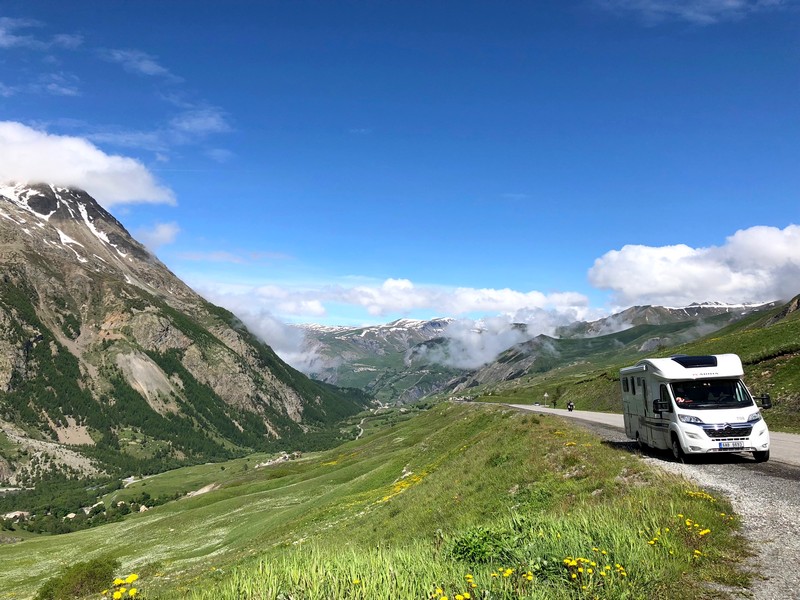
Explore Europe
If you’ve always dreamt of visiting every country in Europe and going on a road-trip to enjoy all the beauty it has to offer, you’re in the right place. Imagine that you don’t have to book any hotels or tickets whenever you want to experience somewhere new. Rent your hotel on wheels and experience true freedom.

Campervan pick up & drop off anytime and anywhere

With unlimited mileage drive as far as you want

Everything you will need on your trip with all-inclusive pricing

Rentals insurance, including assistance services

On average, our vehicles are only one year old
And how does it work?
You will arrive at your chosen place and our driver will come to you. Pick up process is very simple and easy. Our driver will explain all about the motorhome that you need to know and you can start your journey. It is that simple. The same process applies when you return our motorhome – we will come to you, you don’t need to come to us. Just choose the place and time, we will be there.
Everyone will choose from our offer
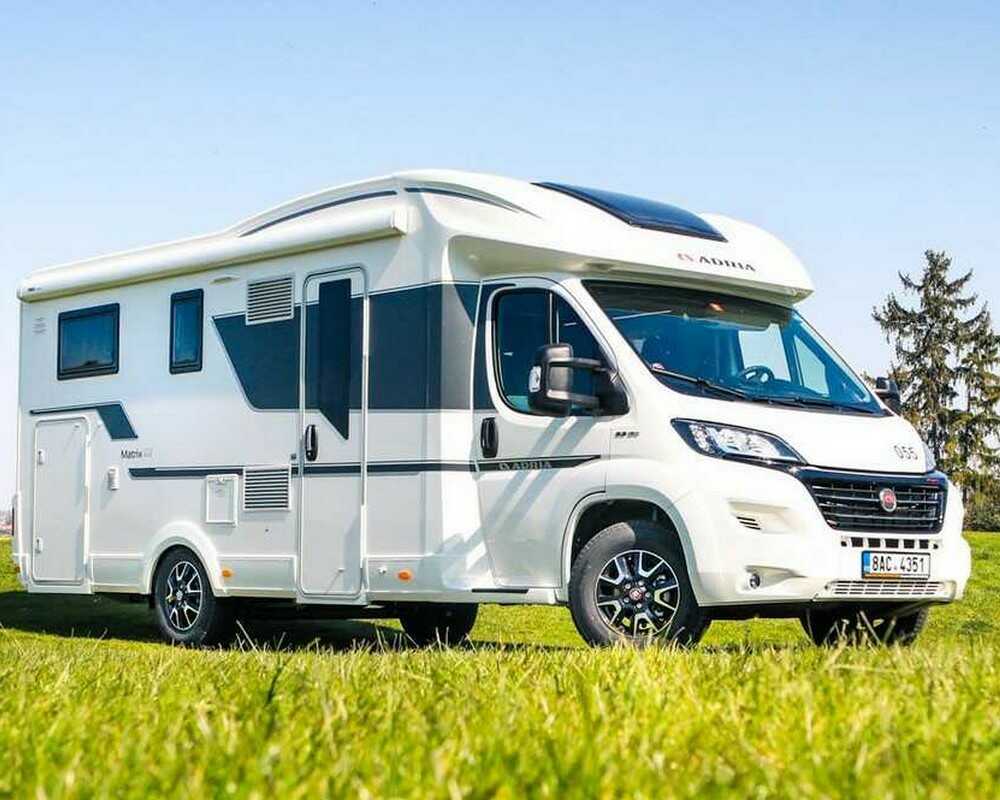
Automatic transmission for 4-5 people
Comfort caravan with a Fiat undercarriage Adria Matrix Plus M670SL Model 9-speed automatic transmission Year of production 2020-2021
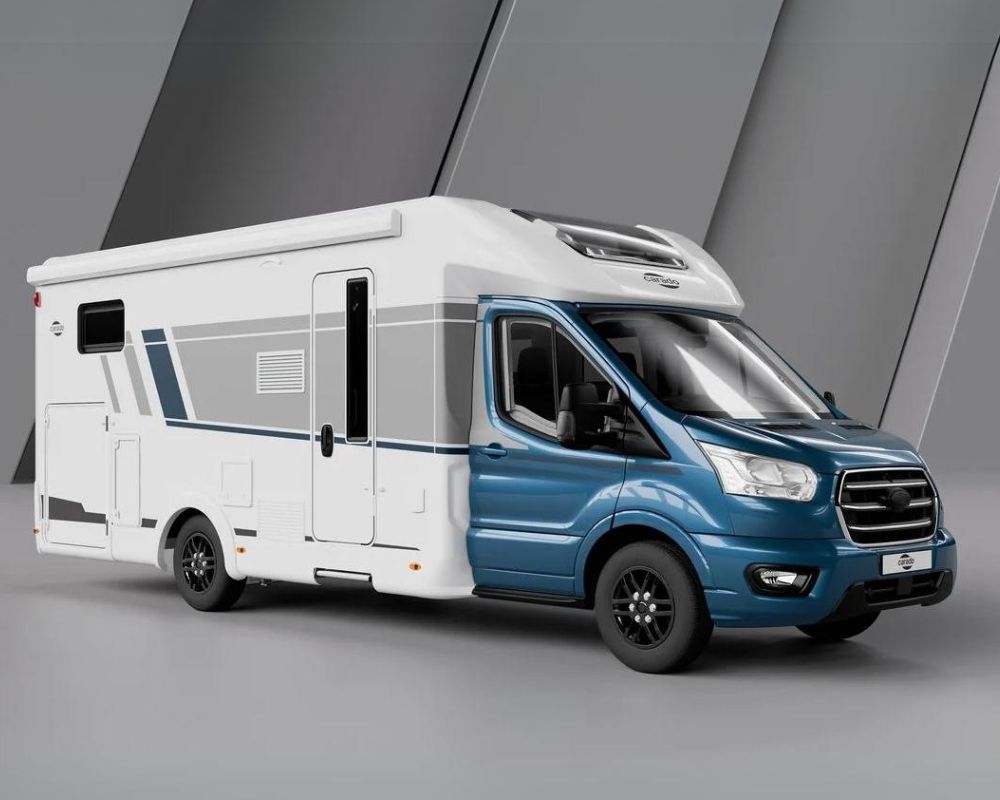
Automatic transmission for 4 people
Comfort caravan with a Ford undercarriage Carado T447 Model ISOFIX Air Condition Unit Year of production 2024

Manual transmission for 4-5 people
Comfort caravan with a Citroen undercarriage Adria Matrix Plus M670SL Model 6-speed manual transmission Year of production 2019-2020

Manual transmission for 6 people
Caravan with a Fiat undercarriage Sunlight A70 Model 6-speed manual transmission Year of production 2021
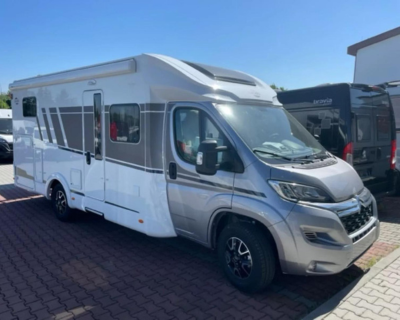
Manual transmission for 4 people
Caravan with a FIAT undercarriage Carado T447 Model 6-speed manual transmission Year of production 2024

Campervan for 2 people
Caravan with a FIAT undercarriage Carado CV601 Edition 15 model Manual transmission Year of production 2022
Designed for your maximum comfort
Fully equipped vehicle.
Unlimited kilometres
Fully equipped kitchen
Separate shower and facilities
Explore europe all year round, travel guide.
Enjoy our motorhomes all year round. Visit our travel guide to see suggestions for each season.
The nature is waking up and everything is blooming. It is not too hot and neither it is too cold. Spring is a great season for hiking and cycling.
Do you like swimming in a sea or in a lake? Visit beautiful beaches and hidden lakes. Summer is the best season to do that.
Colours of autumn are spectacular. Are you a hobby photographer or do you just want to experience the beauties of this season first hand? We will tell you which places should be on your “must visit” list.
Are you a skier or a snowboarder? Do you want to know where the best ski resorts and hills are?
What our customers say
You deserve 5 Stars! We picked up the vehicle (Adria Matrix 670 SL axess) in Milan Malpensa, looked brand new in spite of 30.000 km on the odometer. It was exactly as the pictures we saw before booking, and very clean. We travelled 2 adults and two children aged 1 and 4, for four weeks in Italy. Helena was very quick to reply to any emails we sent. We had a little misunderstanding when we returned the vehicle, which made us a bit unsure about whether it would affect our deposit, but we had it all refunded within a few weeks. We would definitely recommend Anywhere Campers.
Thank you once again to Anywhere Campers for providing a fantastic vehicle for our second European driving holiday in June 2017. We took the van through Belgium, Germany, Czech Republic and Austria. A very big thank you to your driver David, who got us out of a very interesting situation while we stayed in Prague! Both times we have received top notch service and current model vans delivered to us. Would highly recommend this company.
We had a fantastic time touring through Europe in our Anywhere Campers Motorhome. Helena was great to deal with and very helpful when it came to booking and picking up the camper and everything in between!! The drivers were great and spoke good English which was helpful when explaining how everything worked. We picked up our campervan in Munich and dropped it off in Barcelona which was awesome and meant we could keep going on with our travels instead of having to go back to our original location. We loved having all the extra accessories included and the bikes were put to good use and very handy to have. If you are planning to hire a campervan for around Europe we would highly recommend using Anywhere Campers!!
Anywhere Campers we’re fantastic. We had our camper dropped off at our accomodation in Paris and then picked up from our accomodation in Amsterdam 4 weeks later. The personnel arrived on time as organised and Helena was very quick to respond with any questions we had via email on our trip. A great way to see Europe and the camper was new, clean and had everything we needed (although a handy inclusion would be a microwave). Would recommend Anywhere Campers to anyone wanting to see Europe this way and are wanting the convenience of different city pick up and drop off. Well done Anywhere Campers!!

IS YOUR MIND DECIDED YET?
Contact us, +420 720 952 706, [email protected].

The Anton Savage Show
09:00-11:00
Gateway to Europe: Adie McGennis and Matt Mohan
Share this article
19.15 19 Apr 2024

Listen to this episode
The Hard Shoulder

Subscribe to podcast
The annual Ireland: Gateway to Europe trip to the US is underway.
Now in its 12th year, it comprises an annual trade mission of 50 business leaders and Irish media to key cities across North America – this year, it’s Atlanta, Austin and Boston and Kieran Cuddihy has travelled along with them.
Today Kieran is in Boston and joined by Adie McGennis, Executive Chairman of Sigmar Recruitment and one of the founders of Ireland Gateway to Europe and Matt Mohan, Group Executive Chairman of The FKM Group and another founder of Ireland Gateway to Europe.
Read more about
Related Episodes

Drama On Newstalk

Irish in Boston: Three stories
The Hard Shoulder Highlights

We meet Boston's biggest Swiftie!

Zack Synder on Screentime .
Screentime With John Fardy

Adult: ‘Is dating two weeks post-break up too soon?’

Man who set himself on fire outside Trump trial dies

Long wait for Dublin 8 sports pitch means a 'generation of lost kids'

COMMENTS
Route: Milan - Genoa - Cinque Terre - Pisa - Florence - Siena - Rome - Naples - Amalfi. Suggested duration: 3 weeks. Overall length: 1000 km (14 hours of driving) Budget: €€€. Italy is one of the best destinations to enjoy the European summer and one of my favorite European campervan routes.
… a thousand new adventures and stories to tell about; The roadtrip. After an earlier adventure in which we discovered the Dolomites with a campervan, we immediately knew that we wanted to travel the same way; through Europe with a campervan!. As we see it, this is the easiest solution to travel through various countries while still complying with all the COVID measurements and having a ...
An adaptor, inverter and bikes are our top three campervan products for motorhome travel to Europe. For more of our favorite travel accessories see our list of 14 Travel Essentials here. Read next: Best gifts for Motorhome owners. Essentials Apps for Campervan Life. It is easy to stay connected on a campervan trip around Europe.
The cost of hiring a motorhome in Europe varies depending on the size of the motorhome, rental duration, and season. On average, prices can range from €100 to over €200 per day. It is advisable to shop around for the best deals and consider off-peak season rentals for lower prices. 16.
If you are planning to go motorhome skiing or tour Europe in a motorhome in the Winter, think about your tyres and snow chains. It's compulsory in most countries with Mountains (France, Germany etc) to have winter tyres fitted and to carry snow chains which will fit onto your tyres. This is usually enforced between 01 November and 15 April.
Travelers looking for a budget-friendly campervan trip in Western Europe can skip Italy's coast and head to the South of Portugal instead. Most international travelers will arrive in Lisbon, where it's easy to pick up a rental van from the airport. Then, drive south on the E1 to Lagos, which takes between 2.5 and 3 hours.
With one of the best winter climates in Europe and friendly locals, Spain is a perfect country for a motorhome road trip. We've spent over 18 months travelling in a motorhome in Spain, and in this campervanning and motorhoming guide you'll find lots of practical and helpful information.
Europe by campervan: Travel Routes and Itineraries Where to begin your road trip, or hire your campervan or motorhome . Where you begin your trip and collect your camper is up to you. It makes sense to fly in to Europe and collect your camper from the same place. The exciting thing is that the best place to begin depends on your itinerary.
These are dedicated campervan parking spaces with varying facilities. Run by the town municipalities or privately owned they are often free or cost a couple of Euros per night. Some of the privately owned ones can have more facilities and will charge more (Up to £20 depending on where they are located.) Campsites.
Exploring by campervan has never been more liberating, with these hotel-rooms-on-wheels making it easy to sleep almost anywhere in Europe. It's a freeing experience heading out on a campervan road trip, and there are tons of amazing routes hidden throughout Europe.From Iceland to Spain, we've compiled a list of some inspirational routes for your next adventure.
Our tips for exploring Europe by Campervan to help you experience "Van Life Europe" with info about sleeping, cooking, making life easy on road + More. ... We are a couple planning their first 2-weeks rented camper van trip starting in Munich, to Berlin, Prague, Budapest and Vienna, returning to Munich towards the end of October. ...
As a bit of inspiration for your next adventure, we've put together this list of incredible motorhome routes across Europe. 1. Follow the Nibelungs through Germany. The Rheinische Sagenweg is one of Germany's most spectacular tourist routes. It follows the Rhine river, traversing around 580 km between Dusseldorf and Mainz.
The Algarve in Portugal is a popular place for campervan travel. I hope this guide helps inspire you to book your first motorhome or campervan holiday! To claim your £30 Yescapa discount, just use the code WANDERLUSTCHLOE30. It's a unique and special type of holiday, and one you'll never forget.
10 Must-See Destinations for Your Campervan Trip in Europe. A campervan trip through Europe is an exciting and unparalleled way to explore the stunning landscapes, vibrant culture, and rich history that the continent has to offer. With so many incredible destinations to choose from, planning a campervan trip can be a daunting task. ...
Here are the five best places to take your campervan around Europe! 1. La Route des Grande Alpes. This route, officially known as D902, is definitely a must-visit! Stretching from Lake Geneva to the Mediterranean Sea, this road trip would grant you the chance to compare and contrast lifestyles in the mountains and the Mediterranean.
9. Keep a steady speed as it's more economical. The speed limits might be very different in Europe (or even non-existent like on SOME of the autobahns in Germany ). But taking a motorhome to Europe requires a slow and steady wins the race mindset, especially if it's a big vehicle with a big engine.
Seasons for a European Motorhome Trip. Generally, any season offers the best RVing experience for campers. Yet, many camping enthusiasts suggest the following months, as they're known to have the lowest camping population and ideal temperature. April to May: During these months, campground prices are generally cheaper. In addition, most ...
German Fairy Tale Route. German Wine Route. Green Road/Route Verte. German Half-Timbered House Road. Austrian Romantic Road. German Volcano Route. UNESCO World Heritage Routes Germany. Baden Wine Route. Show all TOP 20 Routes.
Road Surfer have multiple locations across Western Europe. McRent - McRent claim to be the biggest motorhome rental company in Europe, offering small vans, medium campervans, semi and fully-integrated RVs, and coach-built motorhomes. All vehicles are no older than 2 years old.
Road trip to Europe itinerary overview. Day 1: Outbound channel crossing from Dover, UK to Calais, France and drive to Antwerp, Belgium. Day 2: Antwerp, Belgium to Linz am Rhein, Germany. Day 3: Linz am Rhein to Bacharach, Germany. Day 4: Bacharach to Rothenburg ob der Tauber, Germany. Day 5: Rothenburg ob der Tauber to Ladenburg, Germany.
Rent a fully equipped roadsurfer camper van or RV and enjoy the ride with exclusive benefits. Your freedom on the road starts the moment you pick up the keys! Brand new, fully equipped camper vans & RVs. Unlimited mileage & free 2nd driver. Rebook or cancel with the Flex option up to 48 hours before departure.
At Apollo, we love road trips and we are happy to help you on your way to discovering the beautiful scenic roads throughout Europe. We have been helping holidaymakers embark on unforgettable journeys and enjoy unique experiences for more than 30 years. Exploring in a motorhome is easy - you just pack your bag and everything will be ready for you.
Rent your hotel on wheels and experience true freedom. Campervan pick up & drop off anytime and anywhere. With unlimited mileage drive as far as you want. Everything you will need on your trip with all-inclusive pricing. Rentals insurance, including assistance services. On average, our vehicles are only one year old.
The annual Ireland: Gateway to Europe trip to the US is underway. Now in its 12th year, it comprises an annual trade mission of 50 business leaders and Irish media to key cities across North ...
Heidt says she's seen a 10% boost in travel insurance sales for this summer compared with the same time last year, and many people are opting for the pricier "cancel for any reason" policies ...